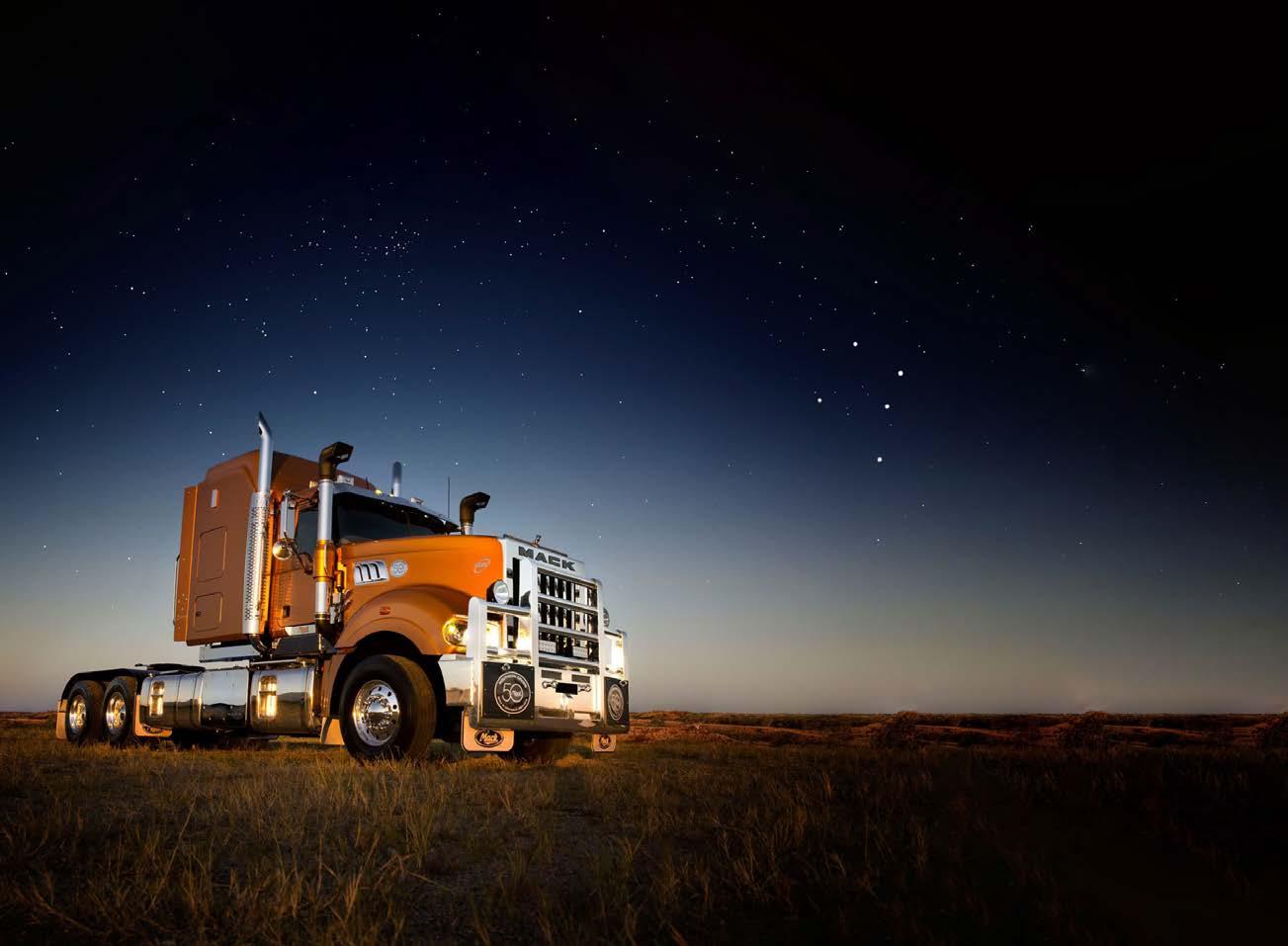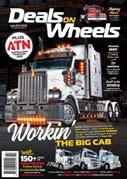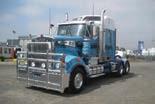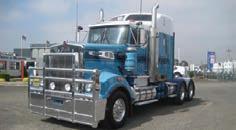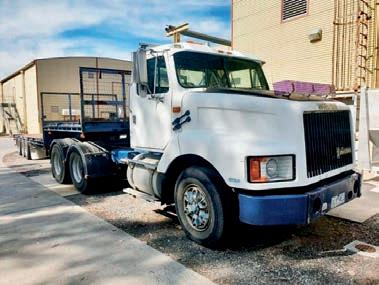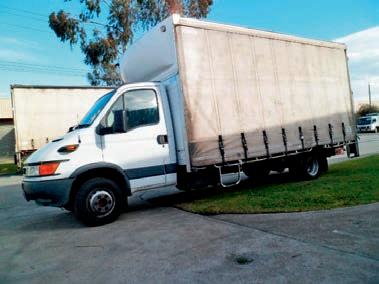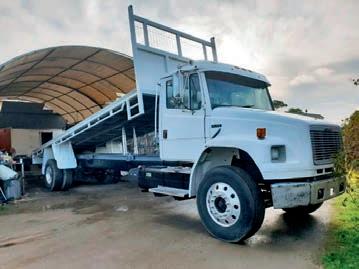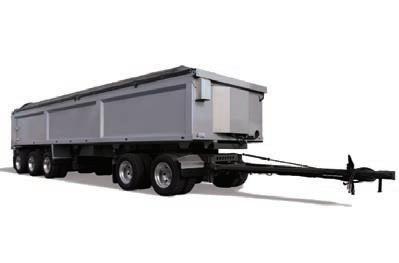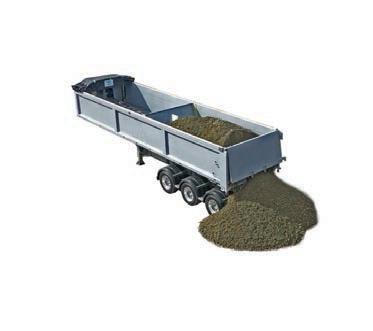





























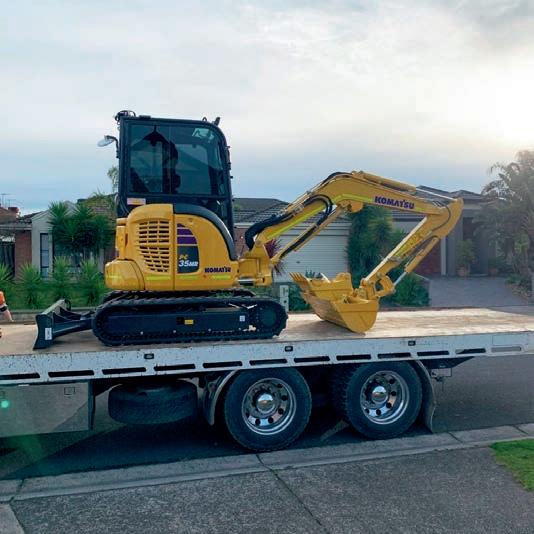










































reduce the burden of work-related injury or disease for truck drivers and other transport workers.”
Details of a Monash University study released in November estimate 6067 truck drivers will die and $2.6 billion of productivity could be lost over the next 10 years if the current status quo in the industry remains.
Program Lead Associate Professor Ross Iles said Driving Health had earlier found that the health and wellbeing of truck drivers in general was poor, and a system-wide effort was needed from the transport industry to help drivers be healthy and stay at work.
A $4.90 breakfast of poached eggs on toast with spinach and tomatoes is proving popular with drivers Picture for illustration only.

The Monash University report, published in The Journal of Occupational Rehabilitation estimates inaction could cost about $485 million in healthcare costs and 21,173 lost years of life due to work-related diseases or injury among truck drivers.
The last full report released in 2020 found the transport industry contributed an estimated 7.4 per cent ($122.3 billion) of gross domestic product (GDP) to Australia’s economy in 2015-16 and employed about 380,000 workers.
The latest research project estimated the work-related mortality burden among truck drivers, using modelling to simulate the Australian male working-age population (aged 15-65) from 2021-2030.
Researchers used data from the Driving Health study and other published sources to estimate work-related mortality and associated productivity loss, hospital and medication costs. All outcomes were discounted by five per cent per annum.
Modelling showed that reducing the health burden by two per cent could result in savings of $10 million in healthcare costs and $53 million in lost productivity.
“Despite the importance of the transport and logistics industry to the Australian economy, workers are at a greater risk of work-related injury or disease relative to other industries,” the researchers found.
“Our analyses highlight the health and economic consequences of poor driver health over the forthcoming decade and highlight the need for interventions to
“What this part of the project adds is a clear economic argument for supporting driver health and wellbeing,” he said.
“If the current state continues, there will be an enormous cost, not only for the individuals concerned, but also for the Australian economy.”
“The Driving Health project found there is no easy fix, but this analysis shows that even a small improvement in driver health will lead to savings of tens of millions of dollars.”
Previous research has established that transport and logistics workers have worse health outcomes than those in other industries, especially musculoskeletal and trauma-related injuries.
They also have a high prevalence of cardiovascular disease, obesity, and hypertension, which has been attributed to long working hours, poor access to healthcare, exposure to physical and mental stress and other behaviours and occupational characteristics which contribute to poor health.
The new paper found that a collective national effort was required to improve the health and wellbeing of Australian truck drivers to reduce the burden of work-related injury or disease for truck drivers and other transport workers.
“To date, there are limited studies exploring the long-term economic burden attributed to poor health among transport workers, and a clear economic argument for improving driver health would provide a compelling case for a collective effort across industry,” the researchers found.
There are at least 6067 good reasons why more needs to be done to help make truck driving a healthier profession
Study co-author Dr Caryn Van Vreden said there were some efforts underway, but they were hampered by lack of funding and policy change from the government.
“Despite efforts to improve driver health by the industry, greater input from government and regulators is needed. This includes increases in funding and changes in policy to effect lasting change,” she said.
Driving Health is a multi-stage project aiming to profile the health and wellbeing of Australian truck drivers and to develop ready-to-implement strategies to help drivers to be healthy and stay healthy at work. To date the project has explored the health burden, as well as trends in health service usage attributed to truck drivers and other transport workers in Australia.
The challenge of helping truck drivers to find better nutrition is at the heart of a pilot program being championed by the Healthy Heads in Trucks & Sheds Foundation (HHTS) that launched in September of this year.
The Nutrition Pilot Program is endeavouring to educate, raise awareness and encourage longer-term healthy eating among truck driver and was developed in partnership with Nutrition Australia.

It came in response to poor health outcomes among drivers, in particular, Monash University data that highlighted that 70 per cent of drivers surveyed did not meet the guidelines for a healthy and balanced diet.
As at November 28 – participating service stations were:
New South Wales bp Beresfield, bp Eastern Creek, bp Jerilderie, bp Marulan Northbound, bp Marulan Southbound, bp Nambucca Heads, bp Parkes, bp North Albury, bp Potts Hill.
Northern Territory bp Darwin.
Queensland bp Aratula, bp Archerfield, bp Goondiwindi, bp Paget, bp Port of Brisbane, bp Toowoomba Westbound, bp Townsville.
South Australia bp Port Augusta, bp Wingfield.
Victoria bp Dandenong, bp Energy, bp Laverton North, bp Northpoint, bp Outbound Somerton, bp Rockbank Inbound, bp Rockbank Outbound, bp Truganina.
Western Australia bp Kewdale, bp Muchea.
Healthier food, and the chance to stop and chat with other drivers are all part of the Healthy Heads in Trucks & Sheds program
The most-tested Western Star ever, the all-new X-Series is seriously tough. Boasting our legendary Star durability, the X-Series features a powerful integrated driveline, advanced safety systems, and superior comfort - even in the most rugged of applications. But talk is cheap. Experience it for yourself.




The pilot program focuses on heavy vehicle drivers. It was originally scheduled to finish at the end of 2022, but its successful uptake has seen the pilot extended into the new year.
HHTS Industry Relations and Program Management director Melissa Weller says it’s all about providing the tools for drivers to use every day.
Weller says since the launch more than 1750 healthier choice meals have already been sold to drivers, with a subsidised breakfast of $4.90 poached eggs on toast with spinach and tomato proving a popular hit among the driver’s social media pages too.

She says another plus with the popularity of this sort of meal is that drivers are ordering it, then taking a break in the truckies lounge to sit down and eat it freshly cooked, where they have access to further information if they want it, but also just some time to refresh and catch their breath before jumping back in the cab.
The aim of the program is to raise awareness about healthier food choices and the benefits they can have on both physical and mental health outcomes, without going over the top. There are hints, advice and information available for drivers, and work sites, on the Healthy Heads app that are downloadable and shareable – focused on small changes over a long time.
To accompany the health information, 29 bp service centres across Australia are offering freshly cooked healthier meals, 24 hours a day, with a menu that has had input from Nutrition Australia and attains the green tick of health.
Nutrition Australia CEO Lucinda Hancock said good food could help with both physical and mental health.
“More than three million Australians are living with anxiety or depression,” Hancock says. “Research shows that by changing the food we eat, we can have a significant positive impact on our mood and mental health.
“The pilot aims to increase the driver’s awareness of healthy eating and influence their eating behaviours more broadly. By making small changes to what we eat on a day-to-day basis, we can reap many positive health benefits.”
Weller says the long-term goal is to roll out a national program that spans across the broader logistics industry, including warehousing and distribution centres where the groups could continue to share educational information, but also, have some influence on-site canteen suppliers and increase access to healthier foods.
Rated to 60 tonne and boasting a Jost fixed turntable this 2019 Volvo FM is being sold with a full service history and 3 month / 50,000km driveline warranty.
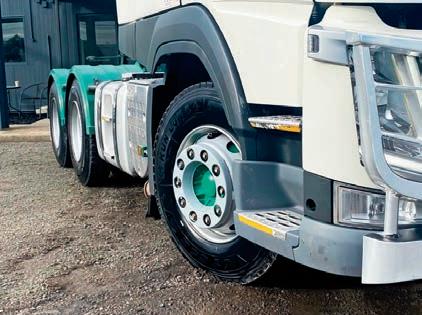
With 450hp to play with thanks to a Euro 5 engine the truck also offers a full sleeping berth and the Volvo Automated i shift 12-speed transmission.


With a tradition of pushing the limits and setting new standards in driving innovation, the comfort, fuel efficiency and durability of this Swedish giant are worth a look.
For more information call SelecTrucks of Melbourne on 03 8373 7112.


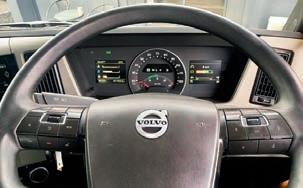
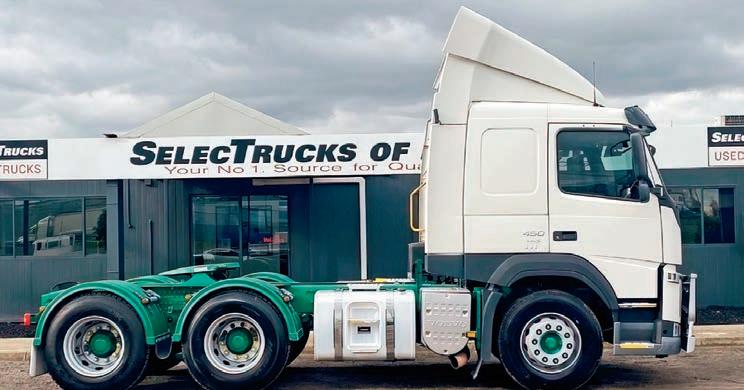




Whatever the season demands you rely on improved Castrol RX SUPER to get things done.
Upgraded CJ-4 specification combats soot and gives critical moving parts a tougher protective layer.
New DuraShield BoostersTM giving up to 40% better protection against wear*.




Improved Castrol RX SUPER - as versatile as you are.
* average of wear parameters in industry standard tests vs. industry test pass criteria.


AAATRAILERSFLATTOP 2022,curtainside.S51. TA1149707. $92,200+GST
AAATRAILERSDROPDECK 2022,curtainside.S53. TA1149710.
$108,000+GST
AAACONCRETEPANEL TRAILER 2022,NEW,paneltrailer.S26. TA982460.


$89,000+GST
AAA45'FLATDECKTRAILER WITHPINSANDAIRBAG SUSPENSION 2022,NEW,semiwithpins. HSD553. TA811006.
$70,000+GST
AAAAAA40'3WAYLIGHT WEIGHT4.6TSKELETAL TRAILER-EBS 2022,NEW.S31. TA1038471.
$45,500+GST
AAATRAILERSFLATTOP 2022,curtainside.S52. TA1149708.
$99,000+GST
AAATRAILERS45'DROP DECK curtainside.S54. TA1149711. $115,000+GST

AAAQUADAXLELOW LOADERWIDENERWITH BI-FOLDRAMPS 2022,NEW 2.5-3.5M.S25. TA948716. $119,000+GST
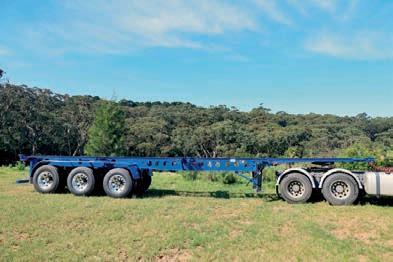
AAATANDEMAXLETAG TRAILER-EBS 2022,NEW.S33. TA1051493. $47,000+GST



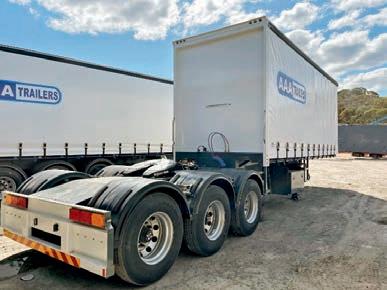
AAA45'LOWLOADERWITH RAMPSANDAIRBAG SUSPENSION 2022,NEW.G0011236. TA811018. $70,000+GST


AAA45'DROPDECKWITH

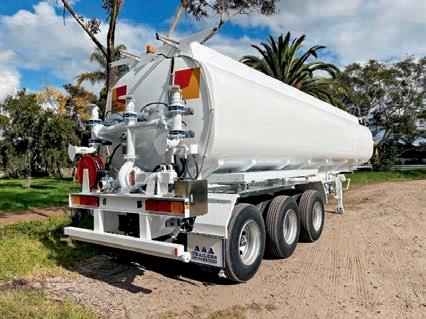


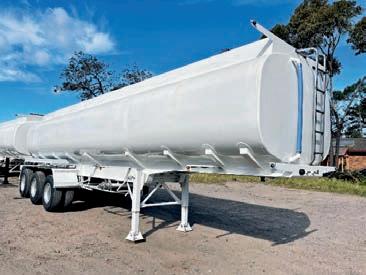
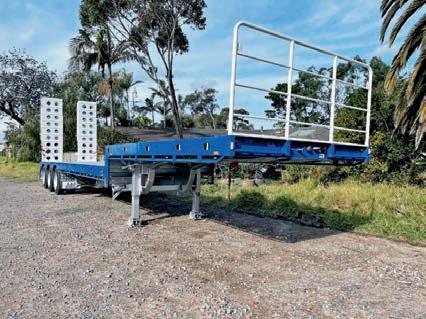


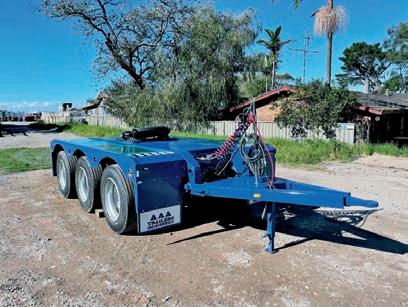


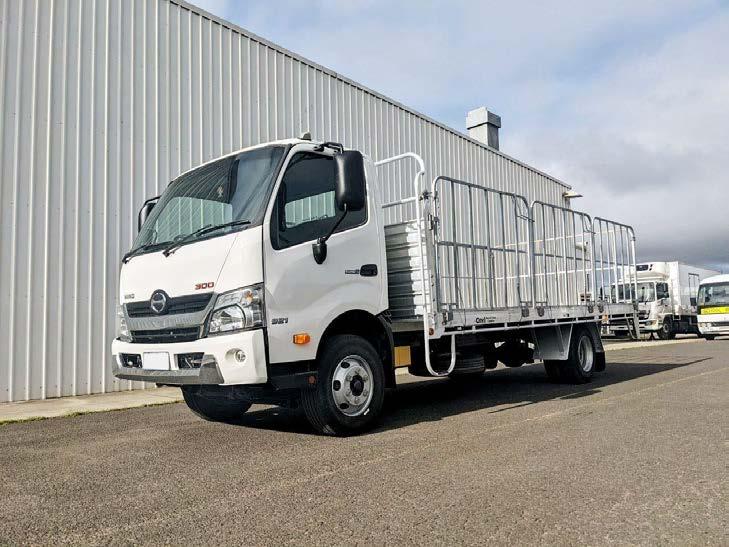
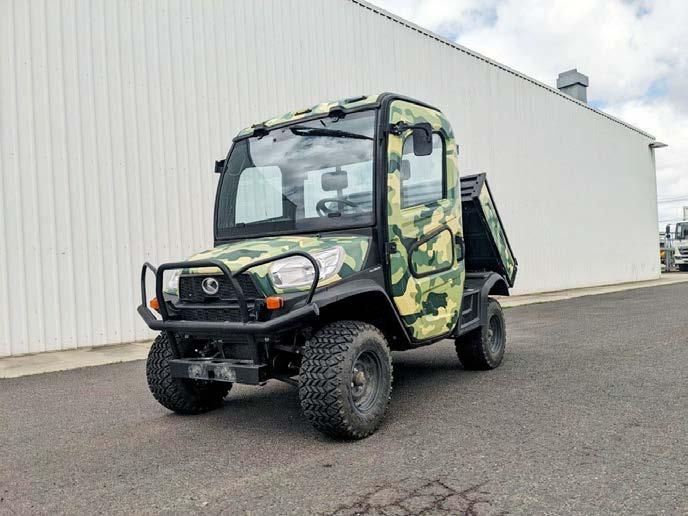










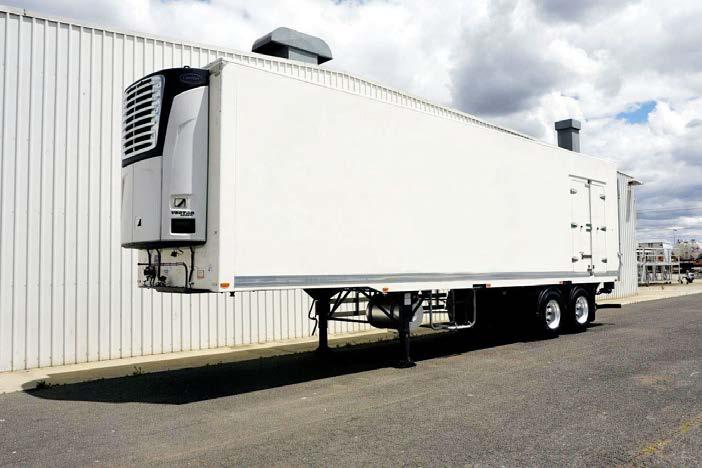
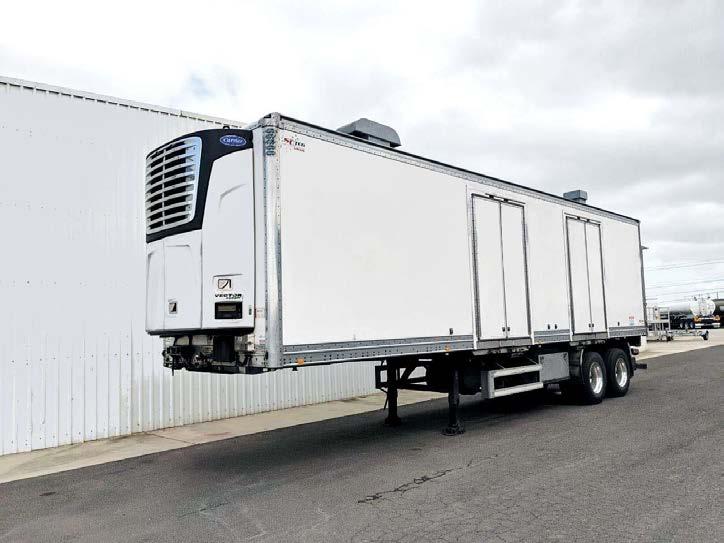




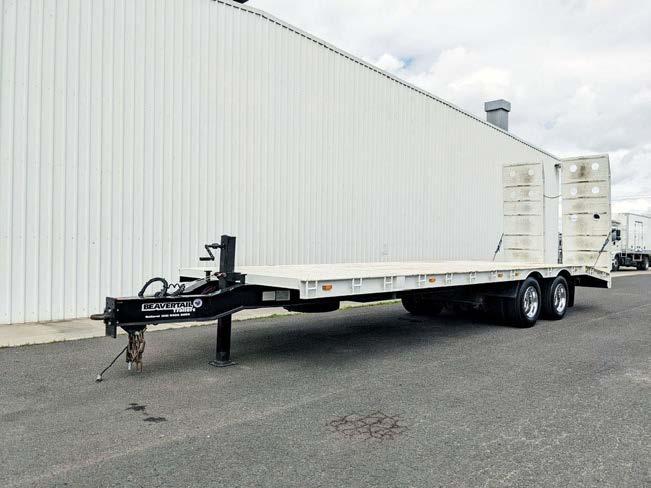









When the new model K200 landed in Australia in 2013 there was much excitement about the upgraded Cummins engine at the heart of the beast.
The classic Kenworth leather and wood styling remained in the cab, but under the bonnet, a more refined and efficient engine offered another reason to buy in.


This tipper variety, fitted with an 18 speed Eaton Fuller manual transmission, only has 726,680km on the speedo and all the kit to keep tipping for many years to come.




02 4721 7889

An MP8 engine generates 500hp that’s managed by an 18-speed Road Ranger gearbox.


The truck is being sold as a stand alone, although there’s an option to add a Hercules 2005 Super-Dog 3 axle trailer to the package for an extra $35,000.


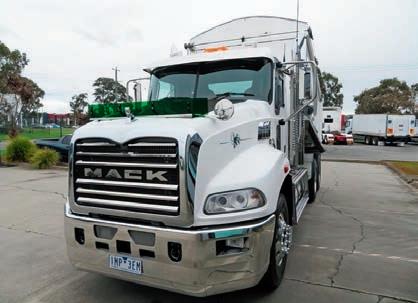


Detroit’s DD16 delivers all the power you need.
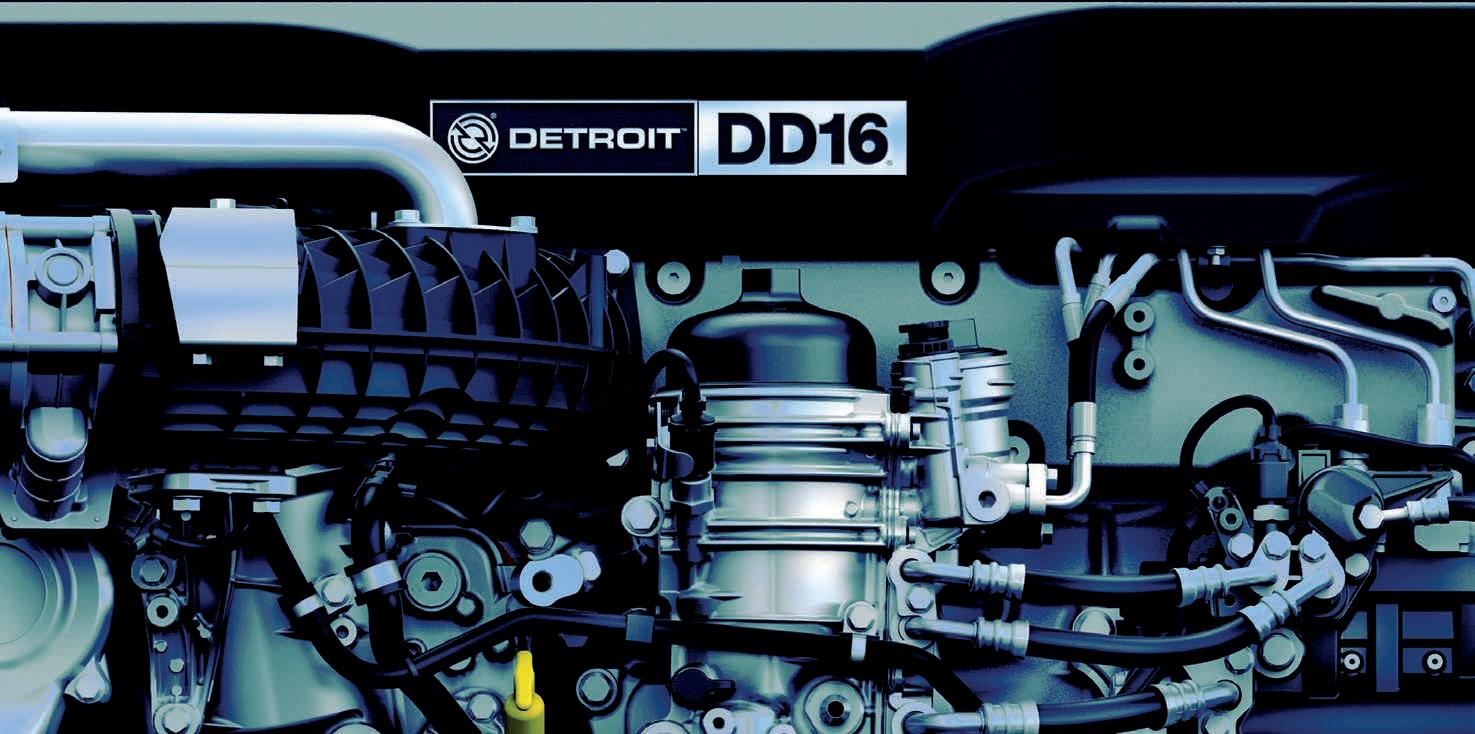
With up to 600 horsepower and 2,050 lb-ft of torque, the big bore workhorse provides efficient and dependable power and performance without compromise. Detroit’s advanced technology also means GHG17 requirements are met through innovative fuel efficiency resulting in lower emissions.
This power, performance and efficiency prowess is backed by our industry-leading warranty and extended coverage packages that ensures the highest level of support for our customers.
Combined with superior fuel economy and the absence of a midlife change out, the DD16 delivers an enviably low total cost of ownership and maximum uptime.
This is all backed by our well-established and extensive national service and support network which, together with our highly skilled factory-trained technicians, means you can count on getting the right advice when you need it.
With Detroit, there’s no compromise.


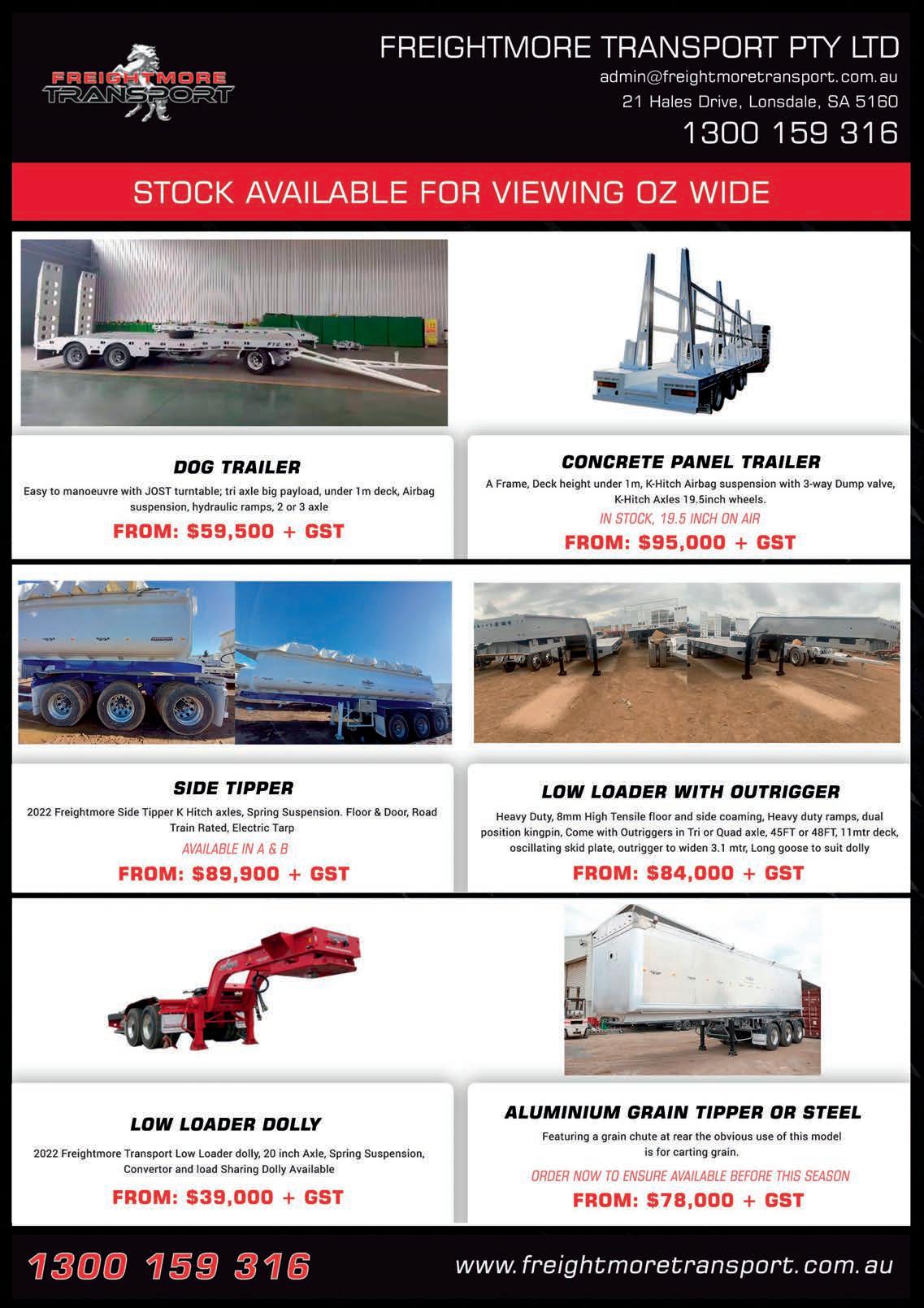


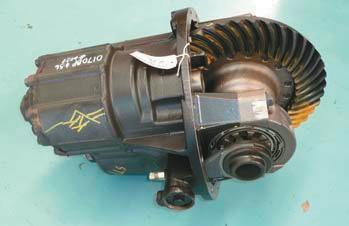

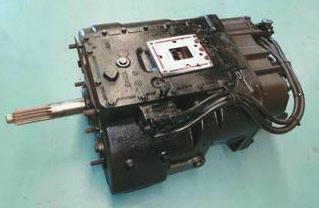



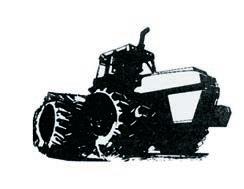
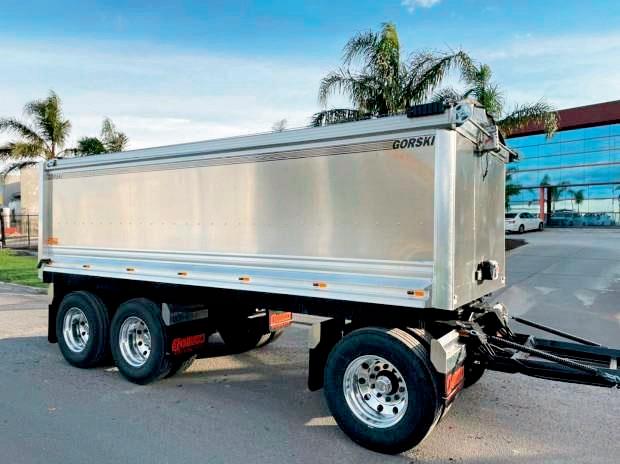









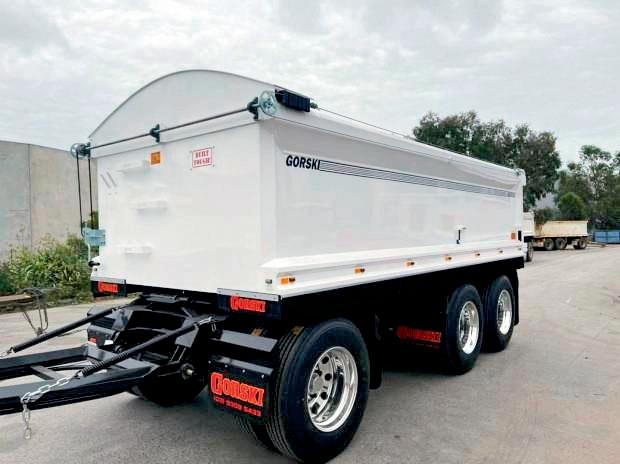


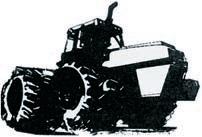



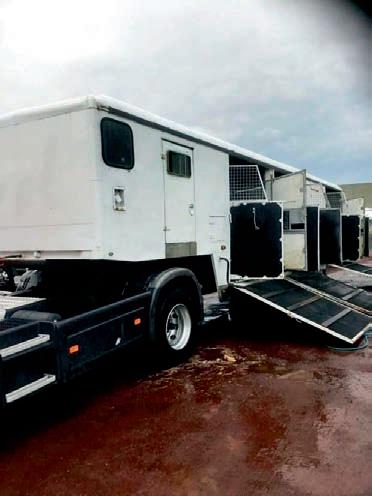












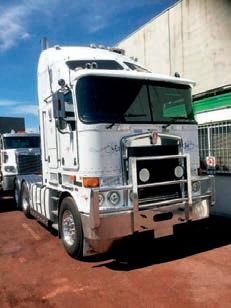

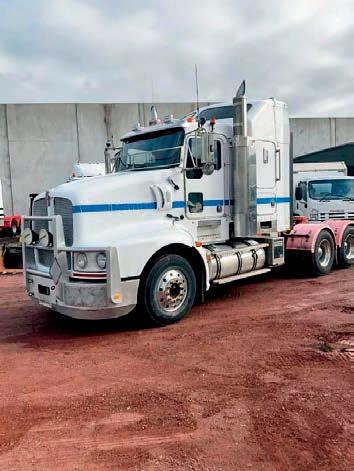

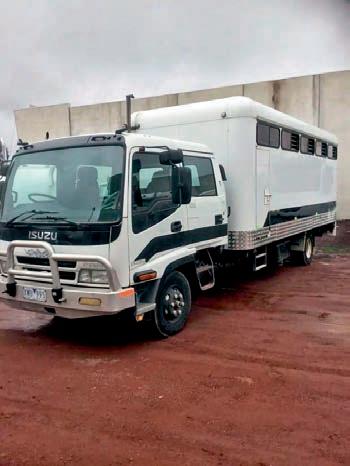
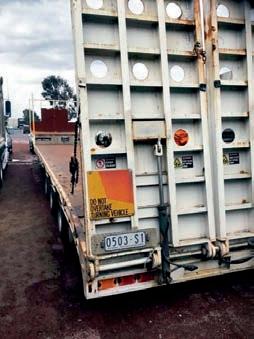
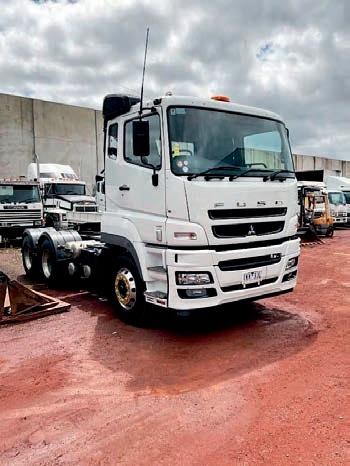




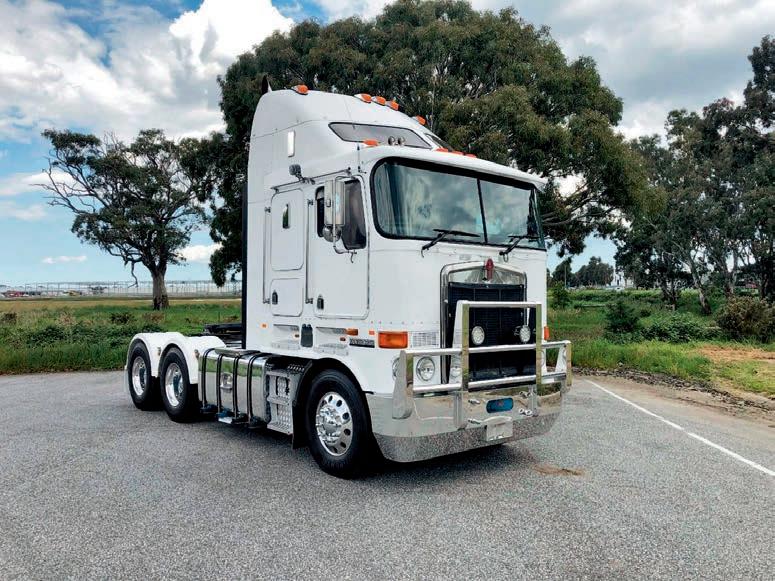


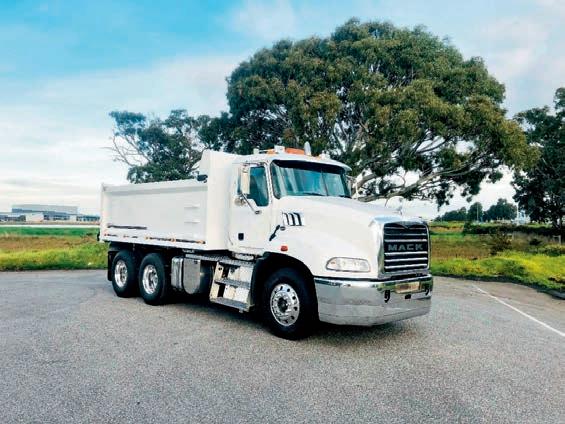

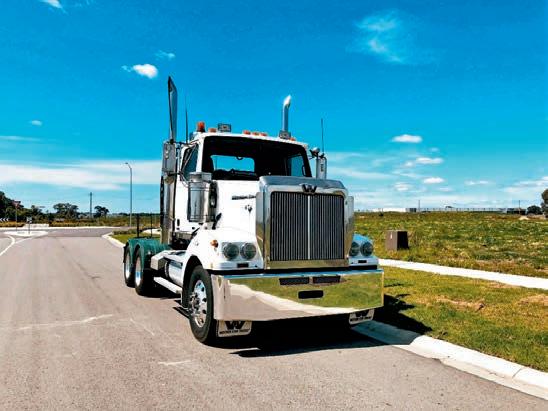
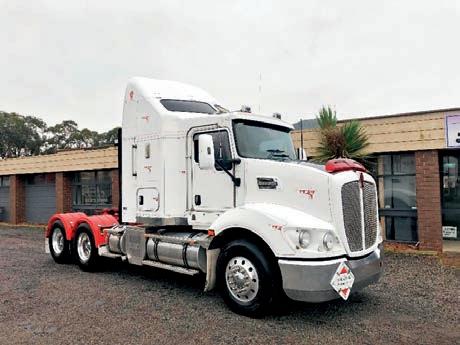

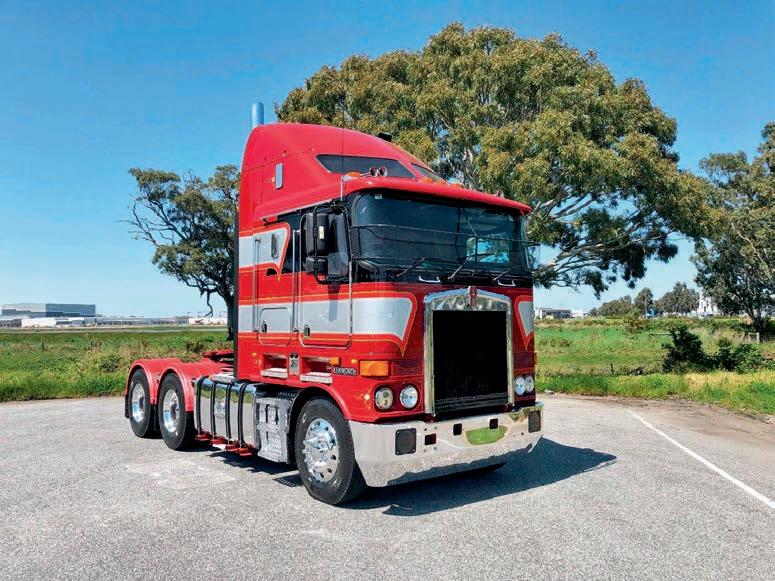


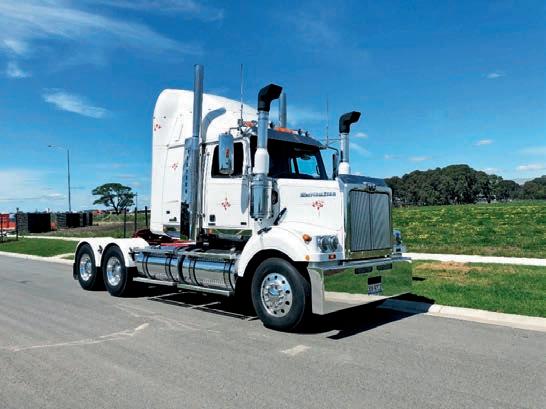

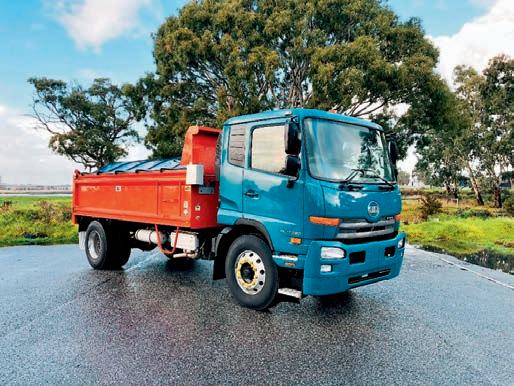
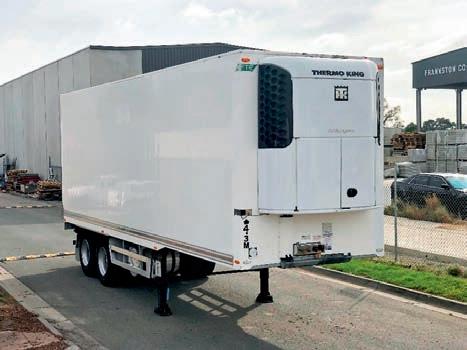




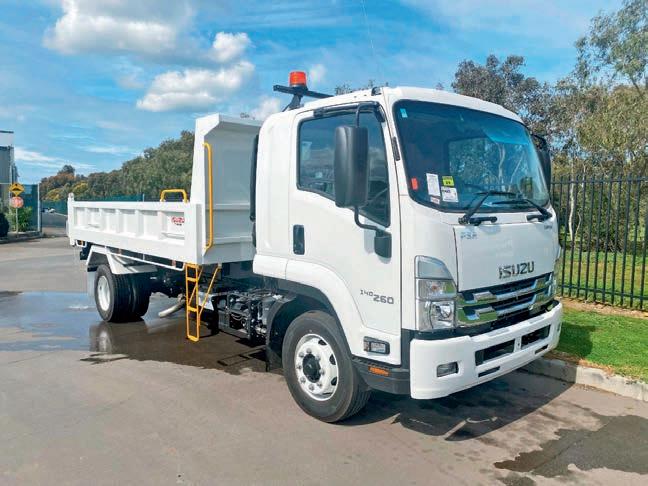
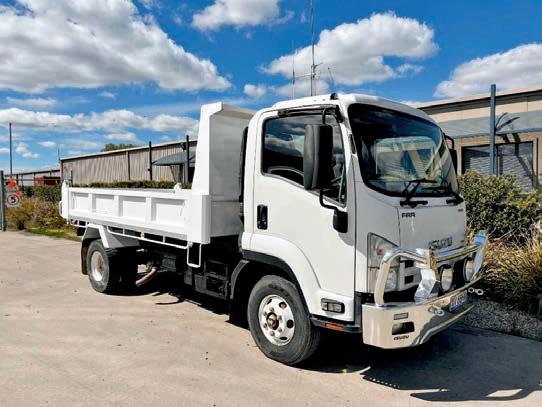


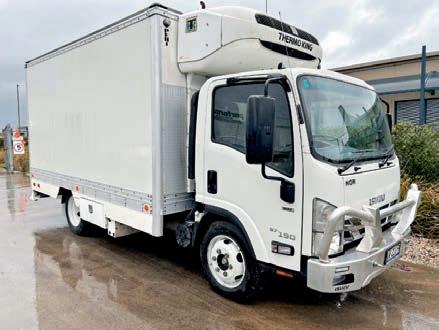









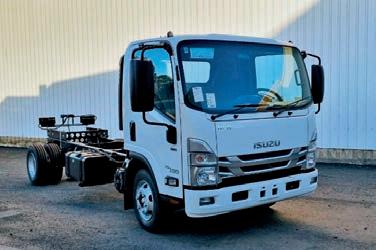


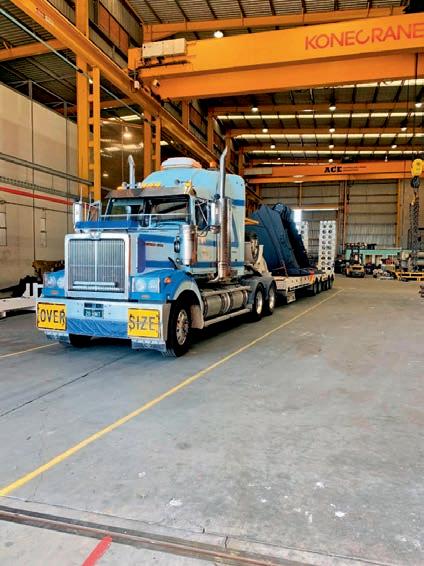

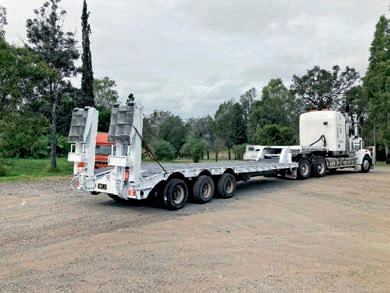
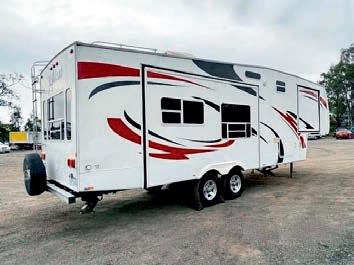
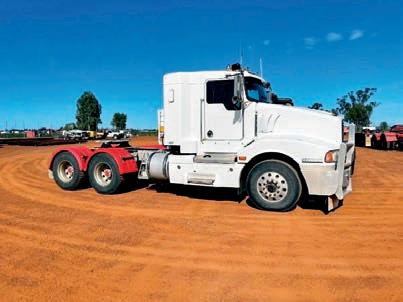


2004,the2004mackvision(sampleunitphoto)470h/p18speedg/box46/ 160diffswithxcross/locks,allon10studalloydiscwheels100%new rubber,fittedwithhightensilesheppardsteelbody4.50mx1200mm sideswithswingingtailgaterollouttarp(bodyasnew)fittedwithfull ringfeedermountsinextremlygoodcondition,revolvinglightscbradio comeswithqld/rwcreadyforrego.S170. TA1153744.
workready,justhadwheelalignmentdone,ondiscwheels, availableimmediatelycomeswithQLDRWC.S157. TA1141082.


2004,HEAVYDUTY.160-200tonrating.CAT/C16600hp,(RECENTREPAIRSTOMOTOR).18/speedMackheavy duty.Maxitorquegearbox.Onhubreductiondiffswithcrosslocks,onNewwayairbagsuspension.Allon10stud discwheels,alloy/polishedonfront,100%newrubberallround.Longrangefueltanksfitted,ptopumping combo/suitableformultitipping.Powerseats,radio/stereo/c/dplayer/CBradioetc.Heavydutyalloybullbar, recentrespraytochassis,veryclean&tidyunit.Mackmediumriseheavydutysleepercab,dieselicecoldpack fitted.Veryhardtogetthisquality&capacityunit.S129. TA1081077.



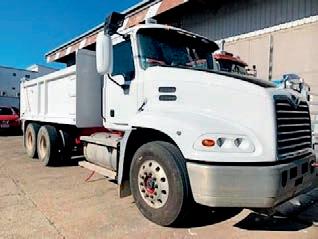

2003,18speedroadrangerg/box,CAT/C15,onNewwayairbagsuspension.Allon10studdiscwheels,Alloy/ polishedonfront.100%newrubberallround.Longrangefueltanksfitted,ptopumpingcombo/suitableformulti tipping.Powerseats,radio/stereo/c/dplayer/CBradioetc.Heavydutyalloybullbar.4x4DECKWIDENER&2x4 DOLLYASUNIT,fullyreconditioneddollyconvertor.The4x4hadrepairstobrakeswheelbearingssuspension, ramps&newHondapowerpack,itwillbeabletocarryinexcessof50tons,runningondiscwheels,comeswith qld/rwc,tyres80%+opensfrom2,50mto3,50.m.Thisisworkready.S161. TA1147863.
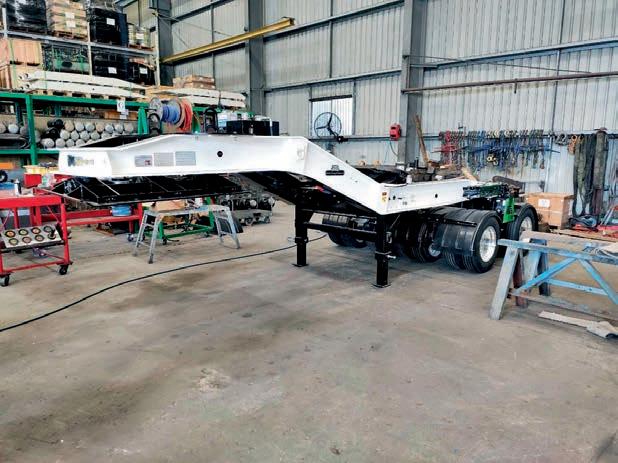
90tonrated,2003Volvoprimemover.14speedgearbox,volvodiffs.coupledto3x42006tagalong deckwidenerondiscwheels265x70x19.50tubeless.recentrepairsonfloatwithRWC.Complete unit.$175,000+GST+ORC.S162. TA1147864.
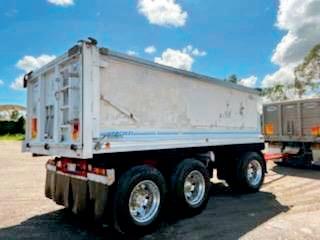
460hp,90tonrated4x4+2x4primemover.14speedgearbox.Allingoodcondition.Justbackfrom darwincoupledtojrm4x4dollydeckwidennglowloaderonairbagsuspension.Widensfrom2.5-3.5m. On9.75x7.50tublessdiscwheels.Newhondapowerpackforhydraulics.Coupledto2x4dollytosuit. Fullrebuildon2x4dolly..S167. TA1147865.






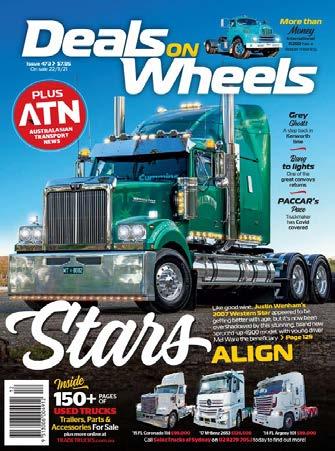

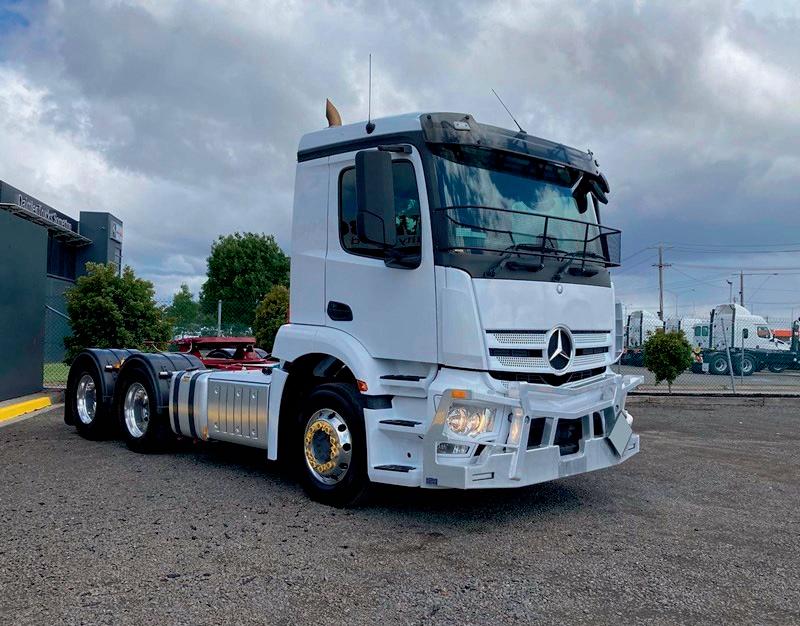
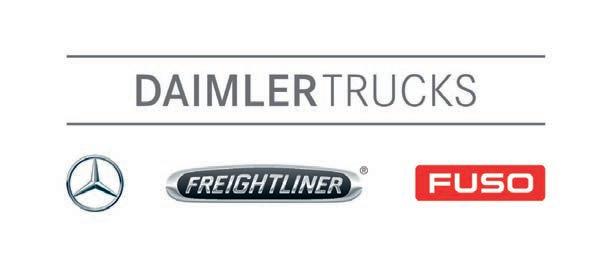



An automatic 2016 Fuso Rosa Bus has arrived at our Dealership. Finished in white, this bus is a ready to work. Well equipped examples such as this are often hard to comeby; especially in this condition and at an outstanding price, in addition, this vehicle comes with the following value adding features: Braun ability usa designed 363kg electric wheelchair lift, removable rear seats with the ability to seat 23 able bodied people or 19 + 1-2 Wheelchairs. T611978. TA1146549
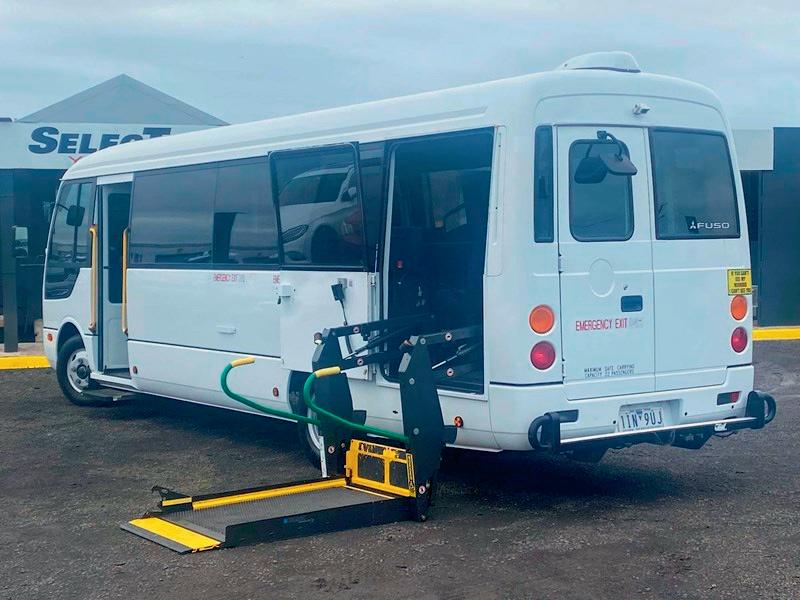




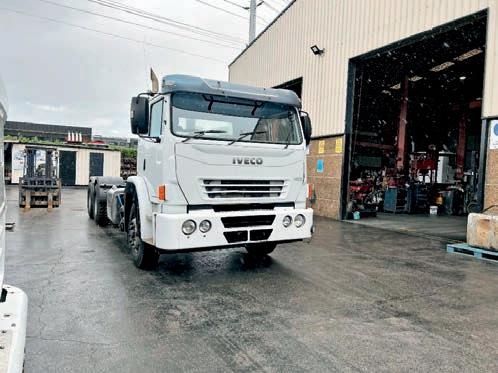

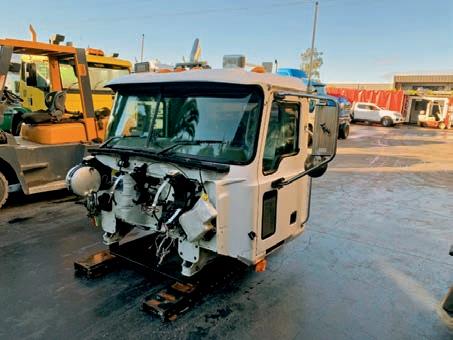



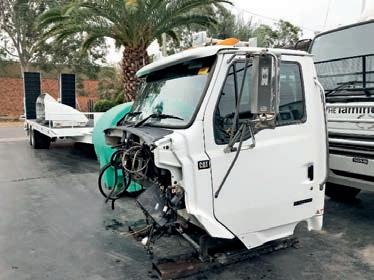

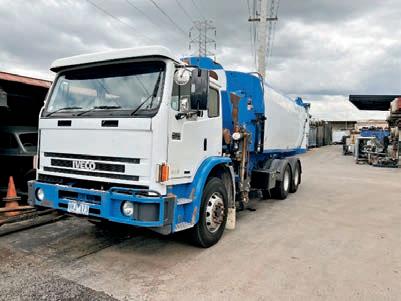
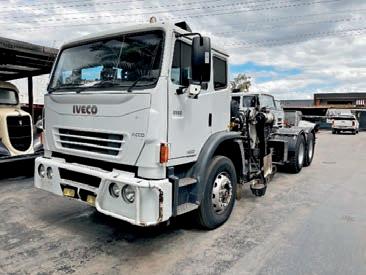





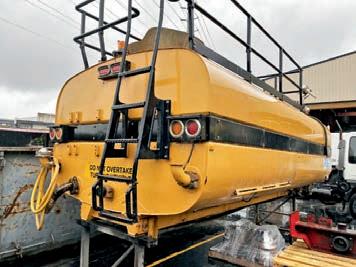



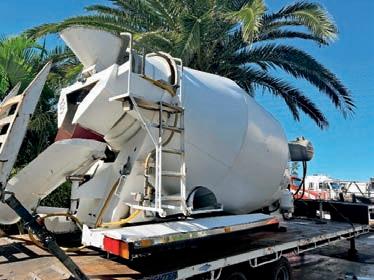
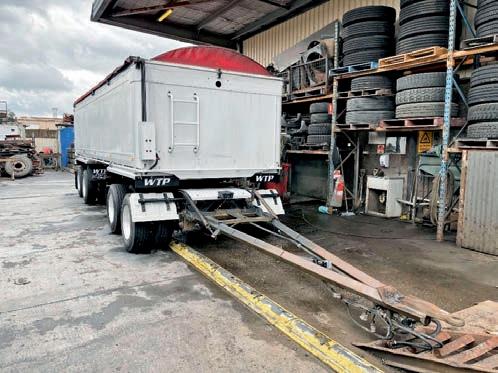






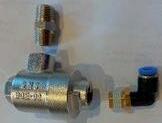

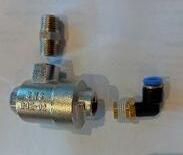






























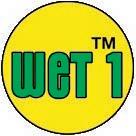






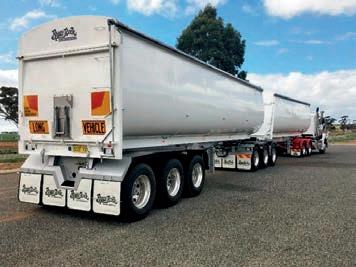
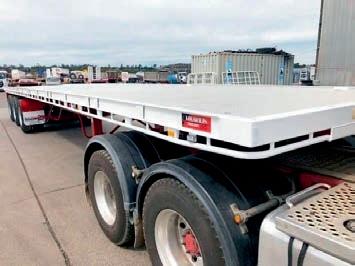

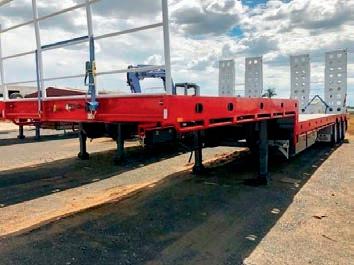



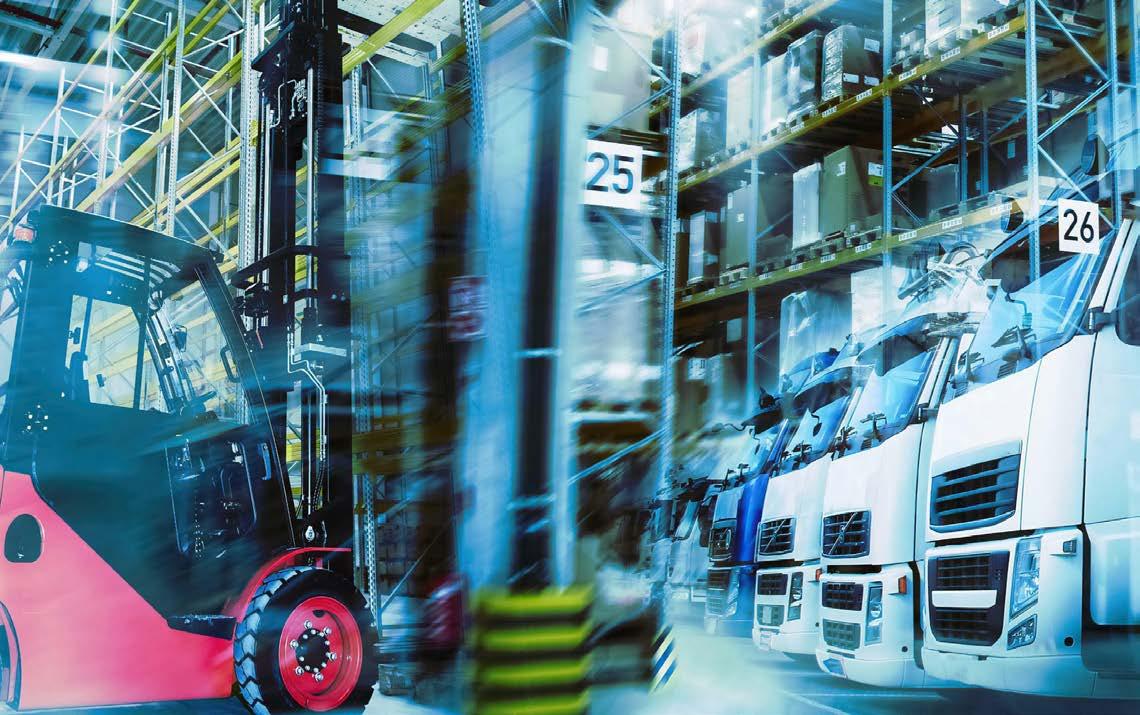







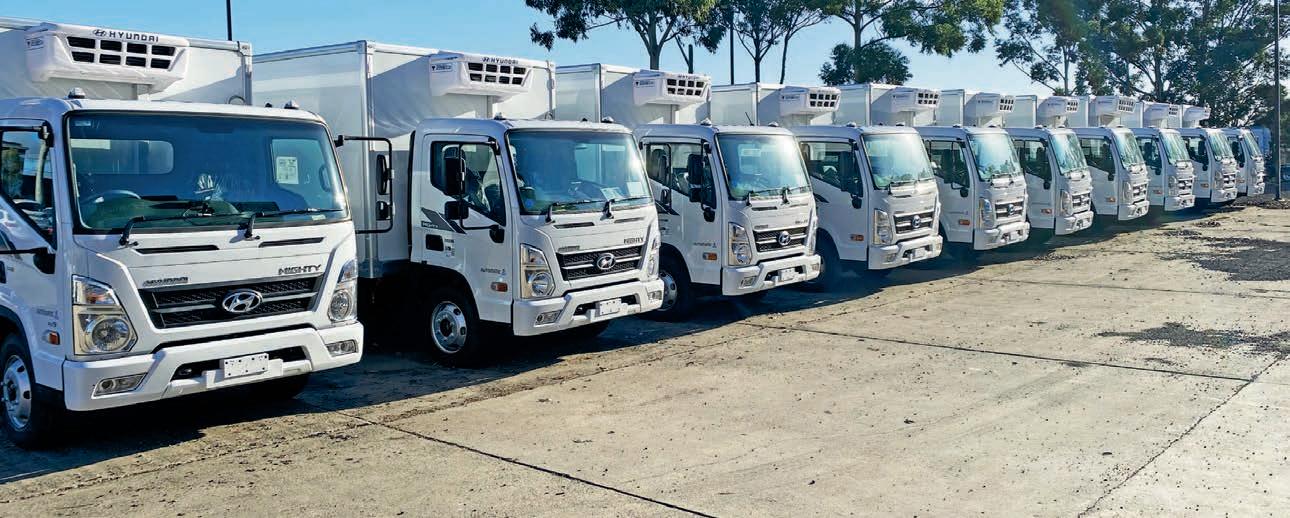









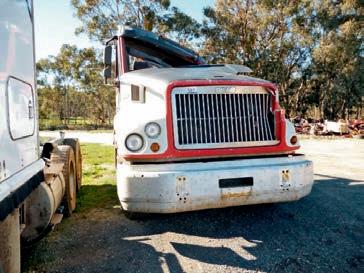











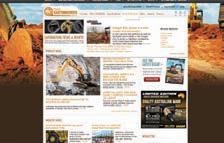

In this issue
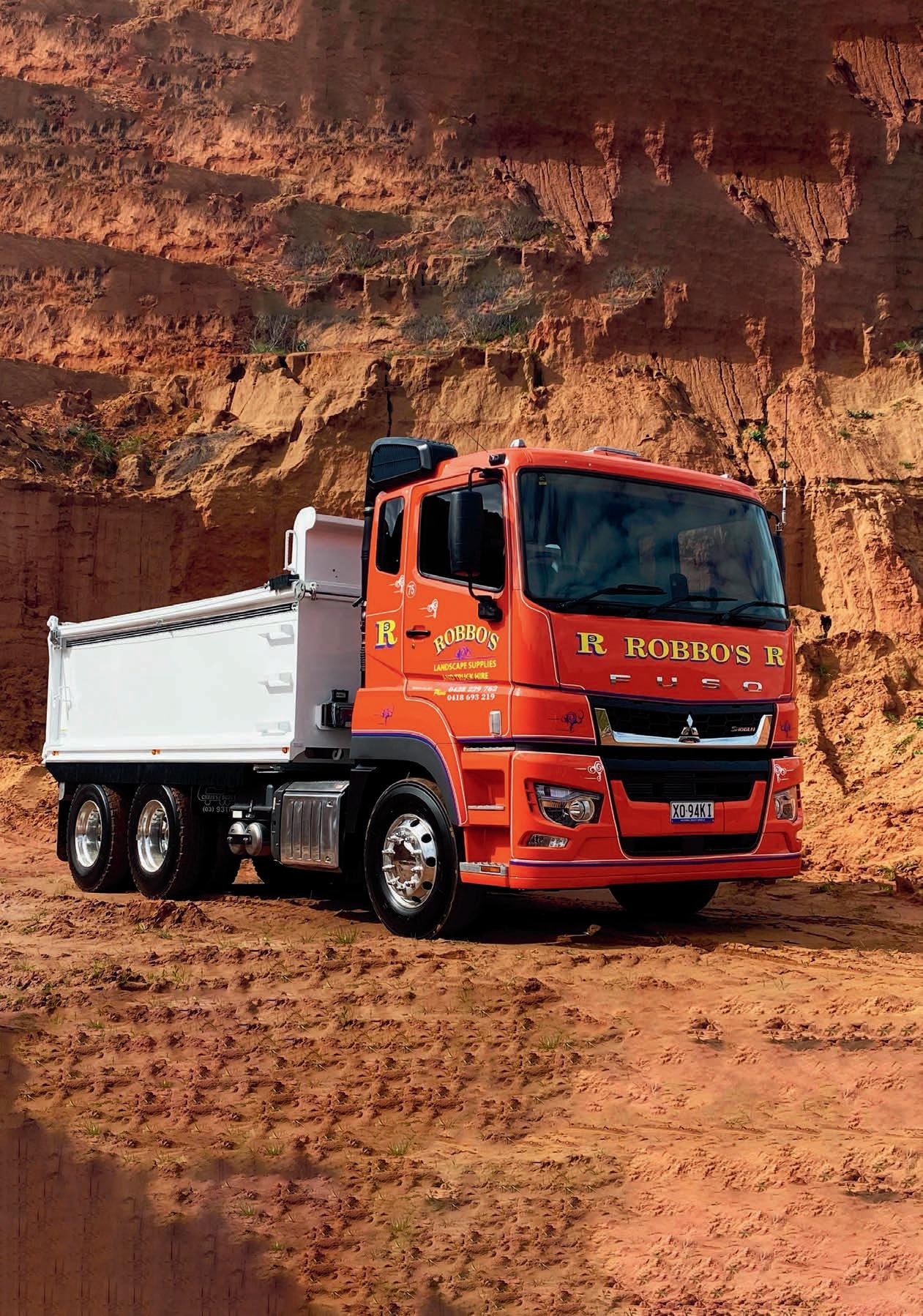
The owner of a major quarry material supplies business based in Wagga Wagga has added its first Fuso to its 14-truck fleet.
Alec Creasy, who has grown the Robbo’s Sand and Truck Hire business since purchasing it in 2013, was encouraged to switch from American-style bonneted trucks and try a Shogun by long-term contact David Warren, the dealer principal of Daimler Trucks Albury and Wagga Wagga.

Creasy says once he started to weigh up the Shogun 460’s price and the inclusive support package that came with it, the decision was straightforward.
“Ultimately, it was a business decision and when I looked at it, I realised that it was really something that I couldn’t go past,” Creasy says.
“One of the trucks I was shopping it against only has a 12-month warranty, so there is a big difference.”
The Shogun 460 comes with a manufacturer warranty that covers the truck for five years or 500,000km, whichever comes first.
Creasy decided to fit the Shogun with a body and tipper trailer made from Bisalloy steel, which is heavier but more durable than aluminium.
This way, the combination can be used for demolition cartage, which requires sturdier surfaces.
The steel body and tipper trailer weighs 500kg more than an aluminium equivalent, but the Shogun 460 combination still has a payload of 12.5 tonnes, a number that Creasy is very happy with.
The Shogun 460 model uses an 11-litre six-cylinder engine from the Daimler Truck family, which also produces 2200Nm of torque. Sitting on the back of the engine is the latest generation 12-speed Automated
Manual Transmission, which features an easy-to-use low-speed mode.

Creasy says the Shogun 460’s engine and transmission work well together.
“The gearbox is nice and the performance is excellent. Fully loaded it will just go beautifully up through the gears, it doesn’t carry on at all,” Creasy says.
“It can turn really tight, which is very helpful in some of the sites we are getting in and out of.”
Like all Shoguns, the 460 model comes standard with a suite of advanced safety features including the latest generation Advanced Emergency Braking System (AEBS) that now uses camera and radar camera technology and completely stops for a moving pedestrian in the event the driver does not respond to an audible warning.
Radar adaptive cruise control is also standard, along with Lane Departure Warning System (LDWS), a driver airbag, Electronic Stability Program (ESP) and Hill Start System (HSS) assistance function continue.
Fuso has a full range of Shogun rigid models that are perfect for tipper bodies, as well as factory Built Ready Fighter and Canter tipper models. The Canter 815 Wide Cab Tipper and Canter 615 City Cab Tipper models can even be driven on a car licence.
Super sturdy tipper at home on the back of Fuso’s Shogun 460Robbo’s distinctive orange livery is a good match for the new Fuso The sturdy interior of the Fuso Shogun
Five Xcient Fuel Cell trucks from Hyundai will be tasked with hauling liquid hydrogen for First Element Fuel (FEF) in California thanks to a $3.5 million grant from the United States’ Environmental Protection Agency
The hydrogen trucks will replace five diesel trucks in the fleet of FEF, the largest operator of hydrogenrefuelling stations in the US.
The selection of the Xcient Fuel Cell demonstration project recognises the significant emissions reduction benefits of Hyundai Motor’s fuel cell electric truck technology.

The Xcient Fuel Cell 6x4 tractor model participating in the demonstration is equipped with a 180 kW fuel cell system and e-motor with a maximum output of 350 kW.
The tractor’s hydrogen tank can hold 67 kg of hydrogen, with the battery providing 72 kWh for a gross combined weight of 37,200 kg to deliver an average range of over 720 km per tank.
The trucks will be rolled out on a five-year schedule, with the first year forming part of a demonstration of the technology, with regular
reporting to the EPA, and the following four in a purely commercial capacity.
“Hyundai is actively engaged in setting up a carbon neutral hydrogen value chain around the world,” says Hyundai’s senior vice president and head of Commercial Vehicle Business Innovation Mark Freymueller.
“We are happy to deploy our Xcient Fuel Cell trucks in California, especially since this will help local stakeholders to decarbonise the hydrogen supply chain itself by substituting conventional trucks, which have been used to haul hydrogen – to hydrogen trucks.”
The project is led by the South Coast Air Quality Management District (South Coast AQMD), which applied for the TAG funding.
“This is where change starts. Reducing pollution from heavy-duty trucks and construction equipment brings us closer to the cleaner air that our communities deserve” says South Coast AQMD’s executive officer Wayne Nastri.
“We look forward to seeing this project come to life and deployed in Southern California.”
The EPA’s TAG program aims to
reduce air pollution in areas of the nation with the highest levels of ambient ozone and fine particulate matter (PM2.5) pollution.
Last year, Hyundai Motor also announced its NorCal Zero project, also known as Zero-Emission Regional Truck Operations with Fuel Cell Electric Trucks.
Hyundai Motor will begin operating 30 Class 8 Xcient Fuel Cell electric trucks in California starting in the second quarter of 2023. This will be the largest commercial deployment of Class 8 hydrogen fuel cell electric trucks in the US.
Launched in 2020 by Hyundai Motor, Xcient Fuel Cell is the world’s first mass-produced hydrogen fuel cell electric heavy-duty truck.
The company has already deployed 47 trucks in Switzerland where they have accumulated more than four million kilometres of driving as of July 2022.
Hyundai Motor will leverage insights from these public-private partnerships to further drive commercial vehicle decarbonisation through hydrogen fuel cell electric technology advancement.

The Land of the Long White Cloud may soon by the land of the MAN too as Penske unveils its latest trucking models
Penske New Zealand has welcomed the all-new MAN truck generation (TG) to the New Zealand market.
The introduction of the new TGL, TGM, TGS, and TGX truck ranges to New Zealand are the first MAN trucks designed from the ground up in 20 years.
With more than 167,000 hours invested by MAN Truck & Bus in the design of the all-new truck generation, MAN says drivers will realise the ultimate package.
Awaiting drivers inside the cab is a modern and streamlined experience, including the intuitive dash layout, multi-function steering wheel, advanced infotainment system, and SmartSelect navigator.
MAN’s innovative driver assistance features, such as adaptive cruise control, steering wheel airbag, cabin safety cell, emergency brake assist, lane departure warning, and more, ensure drivers have all the systems they need at their fingertips.
Delivering great efficiency and economy, MAN says the new TG takes customers further with an
economical range of engines. From the 220 hp D08 engine powering the TGL to the 640 hp D38 engine powering the TGX, MAN says its range of Euro 6 engines has the ideal solution for every application.
Utilising software to determine the optimum moving off and gearshift strategy, the Tipmatic gearbox has load and inclination detection, ‘SmartShifting’ and ‘idle speed driving’ functionalities.
Efficiency is further improved with the most powerful engine brake on the New Zealand market at 840 hp on the D38 engine.
These advanced features within the cabin and powertrain are complemented by highly reliable and fully integrated technology that delivers optimised uptime. Extended oil drain intervals and low tare weights yielding higher payload availability increase productivity and profits for customers.
All this is further backed by Penske New Zealand’s national MAN dealer footprint and MAN’s 24/365 support program,
The new eActros is expected to reach our shores next year
customised repair and maintenance packages and warranties.
“We are thrilled to welcome the all-new MAN truck generation to the New Zealand market and introduce our customers to this superior portfolio,” says Penske NZ general manager Brent Warner.
“We are offering eight different cabin configurations from the crew cab that seats up to seven to the super spacious GX cab. And the D08, D15, D26, and D38 engines are all Euro 6, delivering power that is reliable and highly efficient.
“Close attention has been paid to ensuring the specifications are ideally suited to our New Zealand conditions, including tyre and diff ratio selections to optimise performance and economy for our unique terrain.
“We’re also excited to be offering, for the first time, a down-line factory 8x4 model specifically for New Zealand.
“We look forward to hearing the thoughts of our existing MAN customers and our new customers as they step into this truck generation and experience it for themselves.”




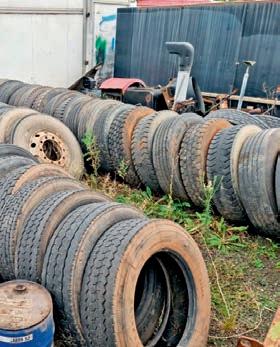


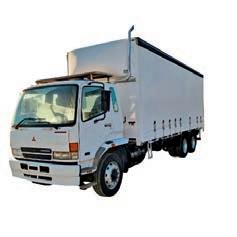




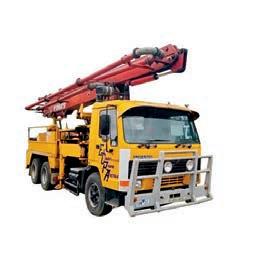
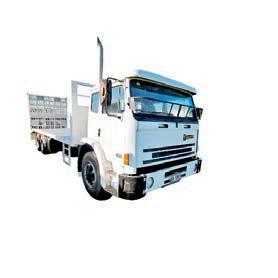

while offering a weight advantage of 185kg over the previous generation DD15 in the legacy Western Stars.
Offering 500-600 hp and 1,8502,050 lb-ft of torque, the DD16 is engineered for greater reliability than ever before.
The engines both meet the latest GHG-21 fuel economy standards, conforming to the US EPA-10 emissions standard, as well as being ready for the pending Australian ADR80/04 regulation.


The engines are paired wth the DT12 automated manual transmission which has been subjected to 56 million kilometres of testing.
There’s more than just new chassis and body work on the new X-Series trucks launched with much fanfare by Western Star last month.
Underneath the bonnet, and in the cab, Detroit has contributed a new series of engines and cutting-edge technology in the form of the Detroit
Assurance suite of safety systems, Detroit DT12 automated manual transmission, and Detroit Connect vehicle services.
The DD13 Gen 5 offers 450-525 hp and 1,550-1,850 lb-ft of torque and is designed to deliver exceptional fuel economy and high performance
Available in DT12-OV and DT12-OVX variants, the 12-speed transmission boasts rock-free and off-road functions in addition to the on-highway focused economy and performance modes. It also includes a power launch feature and has side and rear power take-off (PTO) capabilities.
Penske’s Sean McLean with the trophy recognising the group’s 70 year partnership with Allison Transmission
McLean said the Allison products had been a part of the Penske business for a long time.
“It was an honour to be recognised for our milestone at the conference,” McLean said.
“The first in-person regional gathering since 2019, it was a valuable opportunity to connect with other distributors and to obtain updates on Allison’s current and future products as well as aftermarket support opportunities and initiatives,” McLean said.
“I felt privileged to accept this recognition on behalf of Penske Australia and our current and former employees who have dedicated years to supporting the Allison product and our customers.

When the distributors of the Allison Transmission portfolio of products across the Asia Pacific finally got together face to face after two years without a conference, the team at Penske were recognised for their 70 years of support for the brand.
Since the days of Detroit Diesel Australia, and MTU Detroit Diesel Australia, now known as Penske, the group has been making use of Allison Transmission products across Australia. Penske general manager of Dealer Capability and Technical Services Sean
“As Australia’s longest-serving Allison distributor, we have a well-established customer support network that delivers superior service that complements the high performance of the Allison on- and off-highway products we distribute.
“We look forward to continuing to extend our strong relationship with Allison for many years to come.”
Seven decades of excellence recognised




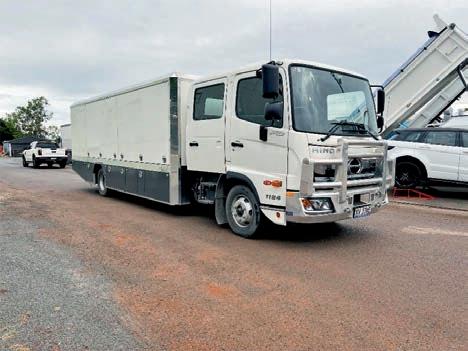
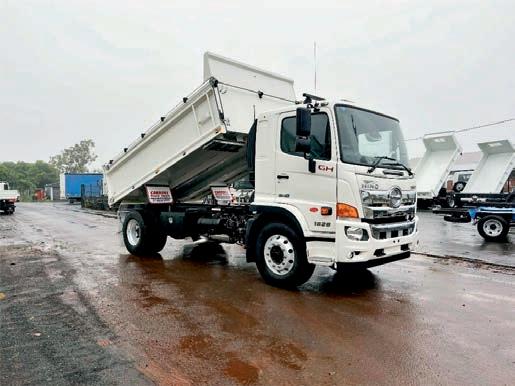
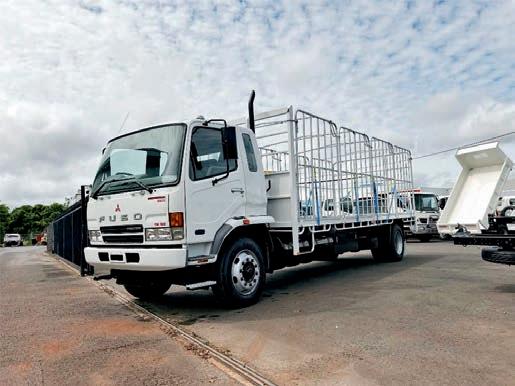


Back in 1939, UD Trucks founder Kenzo Adachi embarked on a 3000-mile odyssey to prove the ultimate dependability of the brand’s new vehicle.
Now, more than 82 years later, UD Trucks Australia is heading off on an Adachi-San inspired lap of the Australian continent.
UD Trucks says the dependability and reliability of the UD brand in Australia was established long ago, so as a result this journey is instead focused on the people and the faces that have become a part of the UD family since its inception.
Following Australia’s fabled Highway 1, the fully loaded UD Quon CW25 360 will circumnavigate the country, stopping in to visit customers and dealers over the course of the 15,000-kilometre journey.
“We feel that the quality of the UD product speaks for itself,” says Lauren Pulitano, vice president UD Trucks Australia.
“However, the Australian UD story is so much more than a tough dependable truck.
“UD customers and dealers around the country have been key to our success over the past nearly five decades, so this trip is both a homage to Adachi-San as well as a celebration of customer success and partnership.
“This is also a fantastic opportunity to showcase the comfort, economy and connectivity of the UD Quon.”
The team set off on their journey at the start of November, and they expect the Lap of the Map tour will encounter all the extremes in terrain and temperature that the Australian continent is renowned for.
From the towering forests of East Gippsland and Southwest WA to the searing heat of the Pilbara and the Kimberly, from bustling capital cities to dusty Wheatbelt towns.
Isuzu Australia reached the achievement of once again bettering its alltime truck sales record, attained just last year, with two months left in the calendar year, the company said it was thrilled to announce.
Despite economic and supply chain disruptions, Isuzu Trucks enjoyed a record-breaking year in 2021, setting a new high watermark of 10,175 truck deliveries at the end of December.
That trend has continued unabated with Isuzu’s internal sales figures indicating that the 10,175 mark was surpassed in mid-October 2022, producing yet another all-time sales record for the nation’s number one truck brand.
Isuzu says sales highlights include finishing September 2022 with 9,642 sales year-to-date in a 32 per cent increase in volume on this time last year.
Truck Industry Council market figures say Isuzu has increased market share, with now 29.9 per cent of all trucks sold bearing the Isuzu badge.
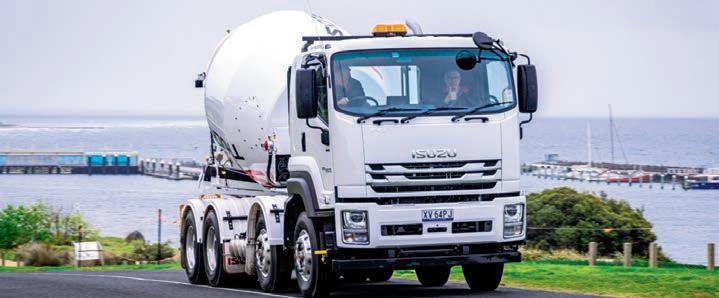
Playing a starring role in the unrelenting sales success is Isuzu’s
4,500 kg Gross Vehicle Mass (GVM) light-duty models, including the NLR, NLS, NNR, NPR and NPS variants.
“As an indicator of how well these models are being received by Australian businesses, we can see that in the month of September 2021, Isuzu delivered 310 units. Compare that to the same time this year and we’ve delivered 572 trucks,” IAL head of sales Les Spaltman says.
Other models that continue to strike a chord with Aussie workers include Isuzu’s newly updated 6x2 and 6x4 F Series range, including FVM & FVL, FVZ and FVY variants.
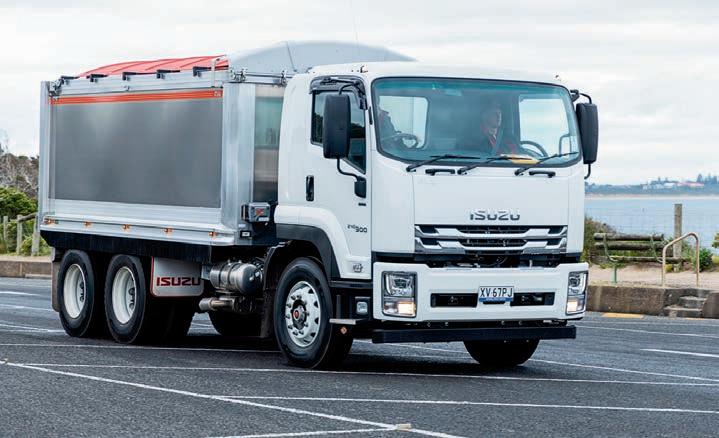
“We’ve worked hard to ensure that these models are continuing to tick the box for all manner of business operations, and especially in that freight and logistics task, which is in huge demand at the moment,” Spaltman says.
“We’ve raised the bar when it comes to safety, comfort and user experience across our medium and heavy-duty range, so it’s great to see consistent sales performance in this model group across the last 12 months.”
Keep an eye out for the distinctive UD as it rolls across the country. Follow the journey on TikTok and Facebook.
#UDtruckslapofthemap
UD Trucks is stepping back in time as it takes its UD Quon on a historical lap of Australia
Isuzu has smashed all previous sales records as it powers towards the end of the year
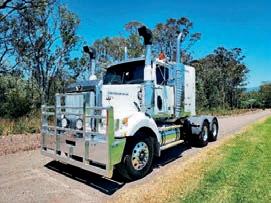

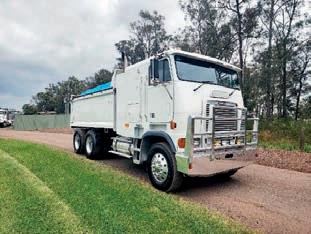

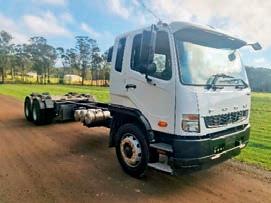




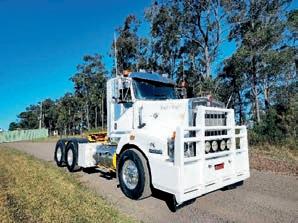

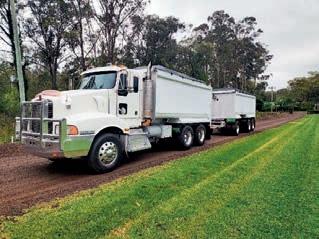

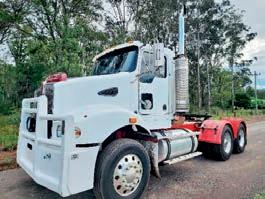







The Hyundai brand will complement the dealership’s existing offering of Iveco’s range of trucks with light duty cab-over models that will open a new market for the company’s services.
Hyundai has already gained a foothold in the WA transport industry and this new appointment is expected to accelerate the company’s development in the rapidly expanding last-mile delivery sector.
In particular, the factory-fitted steel trays, flat decks, Pantech, fridge, freezer and tipper bodies will overcome major delays in local bodybuilding availability.
Supply-chain opportunities aside, the Korean-manufactured bodies have a solid reputation for high quality and durability and can handle everything from 3 to 12 pallets and temperature from -20C to 4C.
The Allison 6-speed full auto transmission, which is available in the Mighty range up to and including the EX9, has certainly supported the growth of the brand in Australia.
Not to be outdone, ZF will provide a full automatic 8-speed transmission option on Pavise from mid-2023.
Hyundai also offers a five year 300,000km warranty as standard on both Mighty and Pavise models.
Hyundai’s General Manager Daryl Thornton says the new appointment reflects Hyundai’s longterm commitment to expanding the company’s range around Australia.
“Western Australia is a very important part of that expectation. AV Trucks are a good fit with our
Hyundai brand values and that’s important.
“As 65 per cent of our sales are with repeat buyers or referrals from existing owners, it’s good to know we’re working with an experienced team who understand the value of a customer.
“Our volume has grown 30 per cent on average year-on-year since 2019 and we know AV’s will take the brand to a new level in WA.”
AV Trucks was established almost four decades ago the dealership is still family owned.
Since opening it has represented Western Star, UD, MAN and International trucks for the broadest range of on and off-road applications, up to and including road-trains.
It has provided expert advice and services to countless truck owners and operators, matching their requirements for new trucks, used trucks, truck servicing, truck accessories and more.
Dealer principal Russel Davies said the entire team welcomed the opportunity to represent Hyundai to its extensive customer base.
“We are excited to expand our reach into the biggest sector of the truck market. The Hyundai product’s outstanding quality allows us to compete on equal terms with the three already established brands,” says Davies.
The business is strategically located in Redcliffe, with the Tonkin, Great Eastern, Roe and Leach highways in easy reach.
Presently AV Trucks provides new Iveco and used truck sales, allbrand maintenance and parts, and a fabrication workshop, together with the parts and warehousing facility.
As the new WA dealer for Hyundai Trucks, AV Truck Services brings a highly valued reputation of quality and customer service to the Hyundai brand. It’s in-house finance facilities and quality maintenance services are also recognised industry-wide for adding value for customers by minimising whole-of-life costs.
The sales team are experienced in developing corporate truck solutions for any size operation incorporating purchase/lease, fleet service contracts, buy-backs, insurance, and sub-contractor entitlements.
The workshop offers after hours bookings, 24/7 emergency service, electrical/aircon on-site plus multicombination access and the AV Trucks parts operation delivers multi-brand products and approved after-market options too.
The most familiar names in the transport industry - products from Alcoa, Meritor, Castrol, Caterpillar, CSA, Dana, Donaldson, Eaton/Fuller, Engel, Exide, Hella, Hendrikson, Horton, Lelox, Reddog, Stemco and Timken, to name a few, are all on-site.
The company supports a range of workshop services when customers require urgent, on-site rectification. Critical parts are supplied from Perth by air when required, and an ethos of maximising customer’s up-time underlines planning and response.

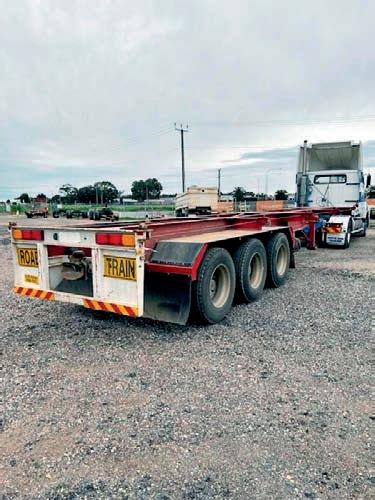
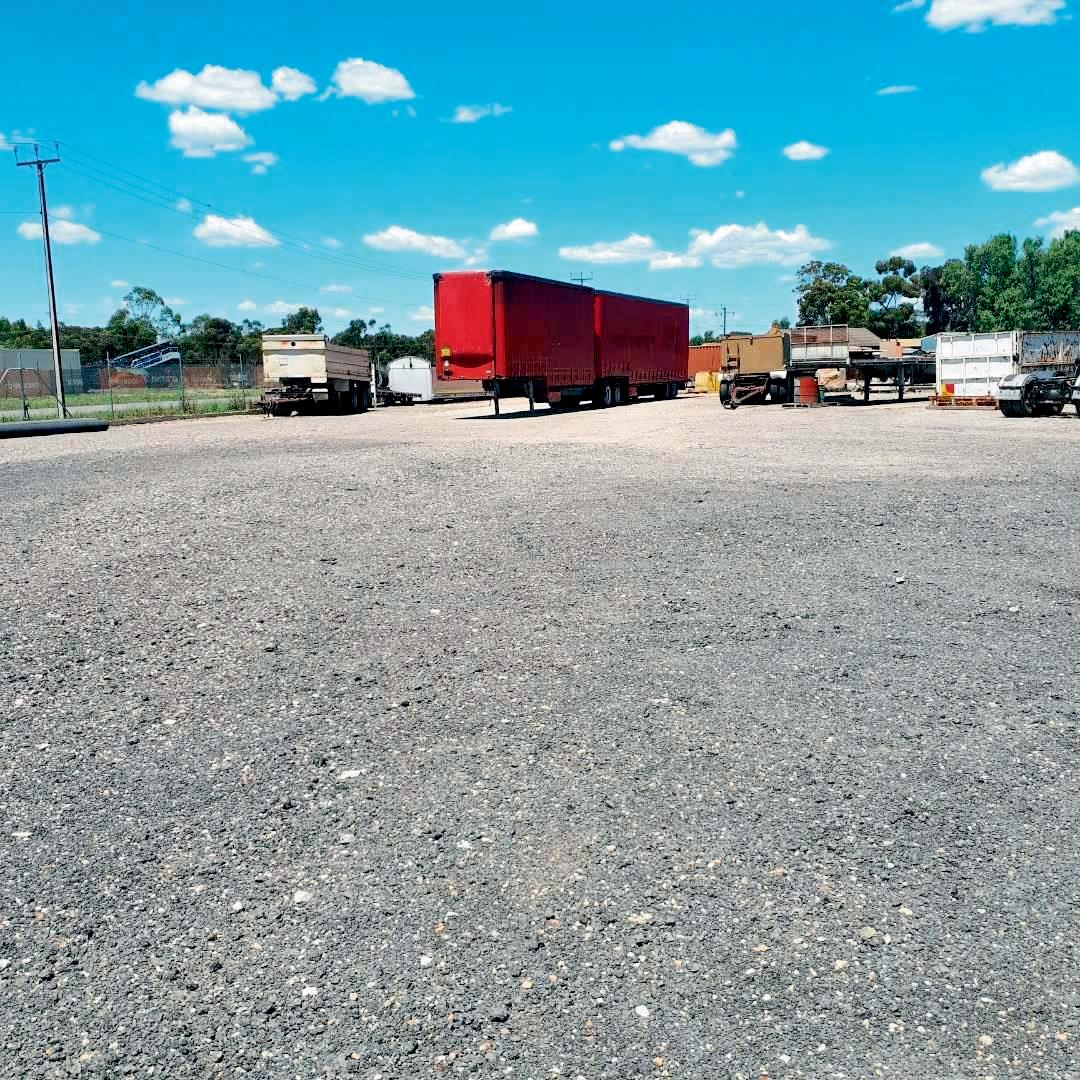

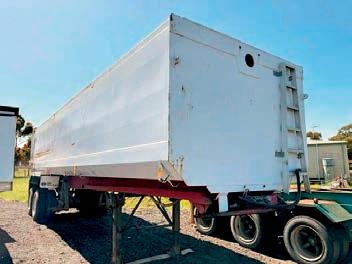


A
Truck leasing company TR Group has continued to expand in Australia, building on three decades of business in New Zealand.
In 2019, TR Group took its first step into Australia and the company has grown its fleet size from 1,300 trailers to 1,800 heavy commercial vehicles available for short and long-term hire.
In the subsequent three years, TR Group has also added new branches, from the original in Melbourne to locations in Brisbane and Newcastle, with more to come.
In New Zealand, TR has 4,500 lease vehicles in a fleet of 6,000 and is looking to get a long-term lease fleet of similar size up and running in Australia.
TR Group’s Australian expansion plans ramped up on September 1, 2022 when TR Group signed its first electric vehicle lease deal in Australia with Mainfreight. The group says this milestone with Mainfreight is a double win, as the five-year fully maintained leases are for two SEA Electric 816 - 300 85 EVs.
Mainfreight is a long-term rental customer of TR, both in New Zealand and Australia, so the two businesses were delighted to extend their relationship to long-term leasing.
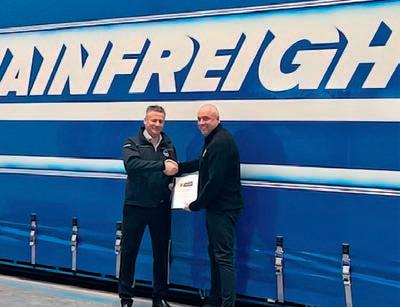
As part of its sustainability initiative, Mainfreight has put the two units into its Melbourne and Sydney Metro fleets. These trucks are rated to 8.5-tonnes and specified with a 138kWh battery driving a 1,500Nm motor.
TR Group also offers other fuel alternative vehicles for rental and lease in line with its strong commitment to sustainability and reducing carbon emissions.
TR Group’s national sales and accounts manager Rick Halliwell says: “This lease is historic for TR Group, and we hope the first of many to come.”
Volvo’s push for a fossil fuel free future continues in earnest with news the European giant has now started using fossil-free steel in its manufacturing process
Fresh from launching factory production of heavy-duty electric trucks in September, Volvo is continuing to push the boundaries when it comes to reducing carbon emissions.
Its latest experiment involves the production of a number of electric trucks featuring steel created using fossil-free electricity and hydrogen from Swedish steel manufacturer SSAB.
Volvo Trucks senior vice president of Product Management Jessica Sandstrom says the trucks are all part of a strategy to lower the impact Volvo’s business has on the climate.
“Our journey to net zero emissions includes both making our vehicles fossil free in operation and over time fully replacing the material in our trucks with fossil-free and recycled alternatives,” Sandstrom says.
The SSAB steel is made by using a completely new technology resulting in a significantly lower climate impact that Sandstrom says is an important step towards a net-zero emissions value chain.
Among the customers that will have fossil-free steel in some of their electric trucks from Volvo are Amazon and DFDS, courtesy of the transport company Simon Loos, Unilever.

“At Amazon, we are on the way to make all of our operations netzero carbon by 2040,” says Andreas Marschner, vice president Transport Services Europe at Amazon.
Green fuel, green skin. Volvo is taking a zero emissions approach wherever it can
“We need partners like Volvo to make this transition happen.”
For logistics business DFDS the intent is similar.
“DFDS is committed to our green transition and to deliver greener transport and logistics solutions,” Niklas Andersson, executive vice president of DFDS Logistics Division said.
“Any step in the green transition of logistics brings us closer to a carbonfree society and we are therefore happy to learn that some of our new electric trucks soon to be delivered are also produced with fossil free steel,” Anderssson says.
The first steel produced with hydrogen is being used in the electric truck’s frame rails, the backbone of the truck upon which all other main components are mounted. As the availability of fossil-free steel increases, it will also be introduced in other parts of the truck.
Today, around 30 per cent of the materials in a new Volvo truck come from recycled materials. Also, up to 90 per cent of the truck can be recycled at the end of its life.
Volvo says fossil-free steel will be an important complement to the traditional and recycled steel used in Volvo’s trucks. It aims to achieve net zero greenhouse emissions by 2040.
lease deal between TR Group and Mainfreight is set to have a positive effect on emissions



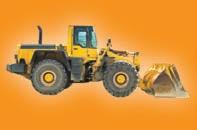





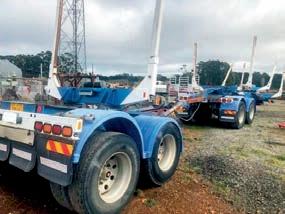





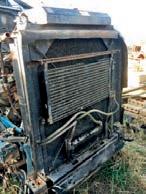

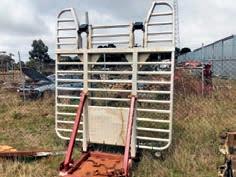
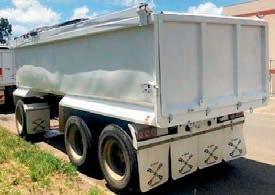



When it comes to putting food on the tables of South Australians, the Wightman family has backed Scania trucks to help them get the job done, including the purchase of five new vehicles delivered in November
Wightman Transport, which is contracted to a major logistics chain to deliver groceries for supermarkets in South Australia, now has a fleet of 37 Scania trucks, ranging from refrigerated pantech A-B triples, B-triples and B-doubles as well as a number of Scania rigids for last minute deliveries.

“Doug Wightman started his business in 1964 with a contract to deliver for a supermarket chain and we continue that business today, albeit now as a subcontractor,” Peter Starke says.
That 58-year relationship must be one of the longest in SA, if not Australia, and it is at the core of the family-owned business, that employs not only Peter and his wife, Meredith, but also son Josh as general operations manager and daughter Jess in payroll and accounts.
“We deliver reliability for our customer and their customer, and Scania is a key element of that reliability,” Starke says.
Starke says that the fleet is almost entirely Scania as he has traded five older European trucks for five new R 620 V8 prime movers.
He says the new trucks will be charged with pulling larger combinations including road trains and A-B triples where possible, using
fewer trucks to move more freight for greater productivity and efficiency when it comes to fuel burn.
“Our SA routes take us to the Iron Triangle, to Broken Hill as well as Berri and Mildura, Mount Gambier and Melbourne, and we run as many trailers in combinations as we are allowed to those locations.
“On an average day we’ll be sending out 100 plus loads – local and regional – which includes deliveries to local supermarkets across South Australia.
“In our peak we can efficiently move up to 200 plus pallets to and from the Iron Triangle, this includes tomatoes out of Sundrop Farms.”
Wightman’s has been buying Scania trucks since 2014 when open book contracting came in with their key client.
“We had other European trucks, but only Scania could provide a G 440 4x2 with air at both ends which allowed us to get deliveries into underground loading bays at supermarkets,” Starke says.
“That truck is still working today, with around 700,000 km on it, and it has been brilliant.”
The Wightman fleet also includes a 2018 R 560 V8 which has clocked up 1,000,000 km with the only work outside of standard servicing required so far being the fitting of a new water pump.
“We’ve had some six-cylinder G 500s, but our preference is for the V8s,” Starke says.
“Fuel is a key element of our business planning and ensuring
we run as efficiently as possible is important. Where we can we’ll backload produce such as tomatoes, blackberries, and grapes from around South Australia and Victoria. Even with a backload we can average 1.9-2.0 km per litre as a triple with the V8s,” he says.
The business also makes use of Scania’s fleet monitoring capabilities to report all truck movements and driver behaviour.
“We had Scania driver trainer Kylie Shire down to go through the trucks with the newer drivers to explain the onboard tech and how to get the most from the engine with the best fuel figures,” Starke says.
“Thanks to the monitoring we can, for example, see who uses the power mode for the gearbox when the economy mode should be used, and we can pull them up on it. The training and the monitoring had a massive impact on the driver scoring, as well, and we’re very proactive about reinforcing the training messaging about efficiency,” Peter says.
“This isn’t just about the boss being paranoid about fuel burn, but also, we need to be able to show our customer and theirs’ how safely our drivers are performing, no excessive overspeeding, etc. I have an employee who checks every logbook entry against the monitoring system trip report to ensure there are no anomalies. That’s how we can show our client that we are meeting their requirements for safe and courteous driving.
“Our trucks are on the road all day
six and a half days per week, the drivers are paid well, so there’s no incentive to speed.”
Starke says the drivers spend a long time behind the wheel, driving long distances, and he’s found the Scania set up helps to keep them comfortable.
“One of my guys who came (reluctantly) from an American truck said he’d never go back to it after driving the Scania,” he says.
“One of the guys I share a yard with has American trucks and he’s looked at the Scania bunk and commented on how much bigger his trucks are, but today so many drivers sleep in motels, so the bunk area is not an issue.”
Peter’s trucks are serviced by Scania at Wingfield in Adelaide and there’s a standing booking for a truck to be serviced overnight on Tuesdays and Thursdays.

“The management there know how important it is for us to get the trucks in and out quickly,” Peter says.
Wightman’s is also a loyal customer of Haulmark Trailers and Peter pays tribute to the efforts of Mark Crossling, James, and Joe there for keeping their trailers services and repaired.

“We have two trailers a day in at Haulmark for servicing. We service trailers every 35,000 km, and they never let us down.”
Looking into the future Starke sees an increase in awareness of environmental issues and says he will be moving to Euro 6 emissions.
“I’ve seen a Scania R 660 V8 and that looks like it will be our next specification. I already have a Limited-Edition R 650 V8 in the fleet.
“With the new batch of five trucks, truck Number 1 honours the founder of the business Doug Wightman. His original truck was a Fuso and was painted red and white, and our new one will be running as a B-double or road-train on the Adelaide to Mildura run, under the control of one of our leading drivers.”
Scania’s Wingfield account manager Tim Jensen says the relationship with Wightman Transport was an example of working together to deliver great results.
“Wightman Transport is a great example of how Scania can not only
deliver excellent product that’s right for the application, but also a series of additional services that assist the business to run as efficiently and productively as possible,” Jensen says.
“Peter and Josh have grasped the advantages of the whole Scania offer. We are delighted to deliver five new V8s and look forward to continuing a long running relationship with this very high-profile fleet.”
Transport Women Australia (TWAL) has announced its Driving the Difference scholarship winners for 2022.
Now running for four years, TWAL – together with its sponsor Daimler Truck Australia Pacific – provides this opportunity annually to women in the transport and logistics industry who want to either advance their career or to enter the industry.
The range of courses selected by candidates in 2022 has been the most varied since the inception of the Driving the Difference scholarship program.
TWAL says the quality of applicants has been extremely high
since the beginning, making the task of selecting scholarship winners a difficult one.
“This year was the hardest year of judging that we have had so far, and it is always disappointing that you cannot award them to everybody,” says TWAL chair Jacquelene Brotherton.
“However, we have six very worthy candidates who will be presented with their certificates at end of year functions in the city closest to them.”
The successful applicants for 2022 are:
• A insleigh Bilato, Adelaide
• Brooke Tran, Perth
Saul Bosch was named the Young Professional of the Year at the Chartered Institute for Logistics
and Transport in Australia (CILTA) Awards recently, ahead of finalist Calvin Sham. In a deep talent pool,
A Elle Tandy, Forbes, NSW
B Joana Feiteira, Sydney C
Nichole Speers, Wollongong, NSW
• E llen Tandy, Forbes, NSW
• Nichole Speers, Wollongong, NSW
• Joana Feiteira, Sydney
• Sally-Ann Eather, Sydney

“All the candidates provided outstanding applications and courses that will assist them in advancing within our industry and contribute to the future of all women as leaders. TWAL and Daimler are very proud to support women as female participation continues to grow in the industry,” Brotherton says.

“Leadership skills and careers are enhanced by programs such as these, and the opportunity that the scholarship provides, being awarded the Driving the Difference scholarship means that those successful applicants can undertake a course of study that might otherwise be out of their reach.”
Winners received a certificate and a uniquely designed trophy
the Professional Women in Logistics and Transport award was won by Heather Jones, with Catherine Lou, Kara Cheung and Shannon Fleming all being finalists.

In a two-company pool, TransEco edged out HVCCC for the Innovation in Freight Movements award, while Nortans won the Industry Safety Award ahead of finalist Flyone.
In the final two awards, Keolis Downer won the Passenger Transport Operator award, while Flyone won the Reducing Carbon Footprint award for its work in the space.
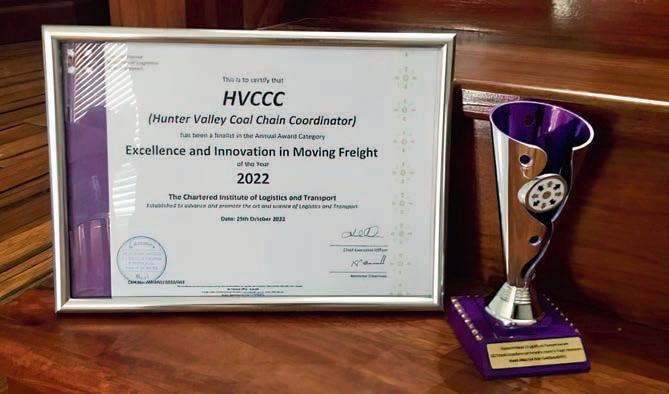

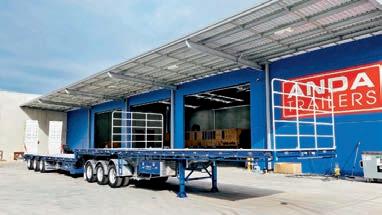







A recent Power Torque online opinion article (“An Industry with an Image Problem”) provides ample food for thought.
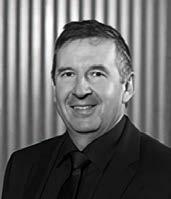
It made the point that the importance of road transport to the health of the economy still goes unrecognised by most people, as is the level of professionalism amongst truck drivers.
While it’s fair to say that any industry involving big bits of machinery interacting with people inside smaller pieces of machinery comes in for its share of criticism, I believe the road transport industry is held in a higher regard than many of us realise.
I base that on evidence.
In February, NatRoad undertook national research of 1000 Australians aged 18 and above, mostly from outside of our industry, to evaluate how they saw our industry.
It was the first research of its kind in many years.
It found that 98 per cent of Australians regard road freight as an essential industry, while 99 per cent consider it important to the economy.
Unsurprisingly, people in Regional Australia have the highest regard for road freight with 38 per cent saying it was ‘very important’ compared to 29 per cent of metropolitan respondents.
That’s no shock because trucks are the lifeblood of smaller communities and people in the bush are used to sharing roads with 18-wheelers.
Clark, CEO of the National Road Transport AssociationAsked about environmental issues that concern them, Australians ranked road freight lowest from a list of eight.
Eight-in-ten say truck drivers are considerate and drive well around other road users.
Some 40 per cent of Australians know someone who drives either a small, medium, or large truck (or more than one category).

These drivers are very much a part of the fabric of their communities.
COVID-19 did many things but a positive is that it made the broader community sit up and take notice when supermarket shelves was devoid of toilet paper or Mum’s prescription was unable to be filled by the local pharmacist.
It made people not involved in road transport understand we are an essential service.
I don’t want to take too much exception to my fellow columnist’s article. One point very well made was that the vast majority of truckies are highly-professional, well-trained individuals who are “doing their
best to get the job done properly and regard themselves as performing a valuable service to society”.
Point taken, but I don’t agree with the assertion that our sector could do with an awareness-raising, PR campaign. The issue here isn’t about fixing our image but highlighting the things that will make young people want to join us.
Interestingly, the Federal Government is drawing up a National Action Plan to address the national shortage of teachers.
One of its ideas is a $10 million PR and ad campaign to “raise the status and value the role of teachers”.
Just like the teaching profession, we have a personnel shortage.
We need more young people and women and they need to know that that driving heavy vehicles is a resilient and rewarding profession requiring high skill levels.
It’s not just about the image of trucking and public perception.
You can’t attract more women if rest stops don’t include female facilities or are not set up in a way that makes all people feel safe.
Right across the board, we also need national consistency in licensing and competency.
Being able to drive a heavy vehicle shouldn’t just be about holding a piece of paper (or plastic) after you’ve spent a specified number of hours being the wheel.
We’re often described as an industry that’s hidden in plain sight and I understand that sentiment.
It’s often convenient for governments to pay us lip service because we’re diverse, disconnected and represented by many voices.
There’s one thing we all agree on: Setting high standards and keeping them there are minimal requirements if we want to remain relevant.
There’s more challenges to finding new drivers than a perception by some that it is a tough industry to work in
rotten
In just a few short years, people could be booking a private chartered aircraft from an app on their phone and fly up to 700 kilometres away, for a cost similar to present day commercial air ticket prices.
And the aircraft will be electric.
The engaging possibility was made to CILTA delegates by Korum Ellis, founder of FlyOnE sustainable aviation, who said he was on a mission to electrify aviation in Australia at the CILTA International Conference in Perth recently.

“I aim to import the world’s best electric aircraft, build Australia’s electric aviation charge node network and lobby for policies to support decarbonisation of aircraft operations with new technologies and systems of energy management,” Ellis says.
“Fortune favours the bold. Modern aviation is completing the longest test cycle to date of how not to succeed at powered flight, having finally determined that fossil fuels are not an acceptable energy source for the future of aviation.”
Ellis says the electrification of existing air transport operations presented air transport operators and users two significant benefits.
“The first is a massive reduction in toxic emissions. Most small two to six seat aircraft use 100LL aviation fuel.
The LL stands for low lead,” he says.
“What a lot of people don’t know is that 100LL aviation fuel is still quite toxic, containing 0.875 grams of tetra-ethyl-lead per litre. The toxic effects to humans of 100LL aviation fuel include damage to organs through prolonged or repeated exposure from inhalation, skin irritation, drowsiness, dizziness, developmental delays, neurological changes and irritability.”
Ellis says electric aircraft are just like electric cars, as they do not emit exhaust fumes.
“The aircraft carries no liquid fuel but rather, is powered by on-board batteries charged with electrical energy,” he says.
“The second significant benefit of switching from AVGAS to electric is a spectacular reduction in the cost of operations.
“Cessna have produced more than 30,000 - 150 and 152 aircraft. They are one of the most popular trainer aircraft in the world.
“A Lycoming engine Cessna 152 consumes about $50-$60 of fuel per hour of flight. The comparable electric aircraft, the Pipistrel Electro, consumes around $6 of electrical energy per hour of flight.
“But it’s not the reduction in energy costs that offer the greatest economic
benefit. The absence of a combustion engine removes a great deal of the mechanical service costs of operating an aircraft.
“No more fluids, filters, hoses, or spark plugs means faster, safer scheduled service and maintenance checks. The day-to-day operating costs of an electric aircraft are around 1/10th of an equivalent combustion aircraft. The lifetime service and maintenance costs are less than half.
“Most of the wear and fatigue that occurs with a traditional airframe is due to vibration from the engine. Electric powered aircraft are vibration-free and made from high quality composite materials, with the hull one solid piece with no seams or joins or rivets to work loose.
“So, our engineers have an easier time checking the aircraft for wear at the regular service intervals.”
And then there’s the noise, or lack of it. The aircraft is inaudible from the ground.
“This will open up the opportunity for flexibility on noise abatement restrictions around populated airports,” Ellis says.
He says the massive cost savings of electric aircraft operations would also open up what is currently a small niche in aviation services in the micro charter.
Four-to-six seat aircraft charters for routes of 20-400km will radically reduce in cost.
Ellis says there’s no doubt that there was still a long way to go to see a meaningful change in the decarbonisation of aviation. And electric aircraft won’t solve all the world’s emissions problems.
“But the change has begun. New transitional technologies are already taking hold and as we build and grow Australia’s electric aviation charge node network, we can reach more of the population, connecting regional centres and metropolitan areas with decarbonised affordable on-demand air transport,” he says.


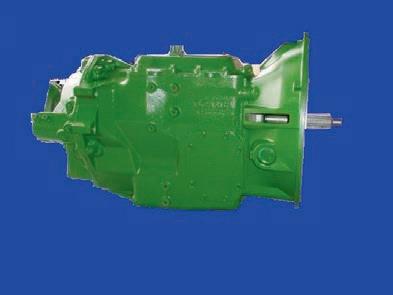


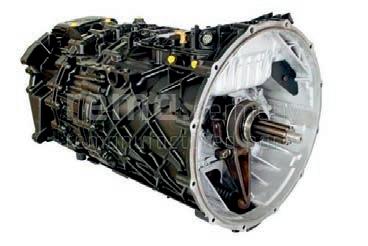


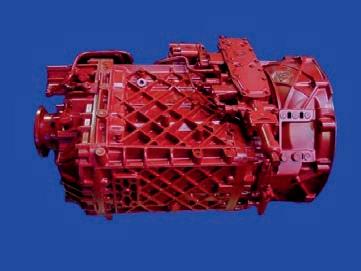


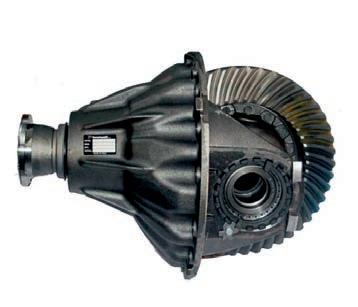
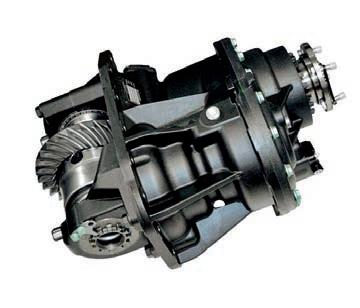



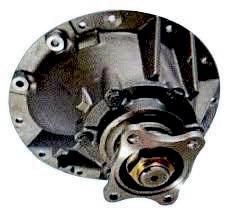
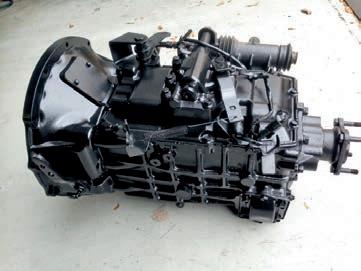
The Australian Livestock and Rural Transporters Association (ALRTA) has supported a single national approach to heavy vehicle licencing, including a shift to competency-based training and assessment.

In a recent communication to the industry the ALRTA articulated 26 recommendations in response to reform proposals contained in a consultation regulatory impact statement published by Austroads.
ALRTA National President Scott McDonald says that a uniform national heavy vehicle driver competency framework has the potential to deliver safer drivers, sooner.
“The current age and time-based licencing system denies eager young people a viable pathway into a driving career. In the majority states and territories, a person is not eligible to drive our most productive freight vehicles until they are 24 years old,” McDonald says.
“By that time, most have pursued other career opportunities or settled into lifestyle patterns incompatible with the road transport industry.
“ALRTA is strongly supportive of the proposal to offer alternative licence progression pathways. By focusing on training relevancy, practical skills development, accumulation of real-world driving experience and more rigorous competency assessment, we can deliver better drivers faster compared with the current licencing system.”
McDonald says this would be a good outcome for road safety as well as business productivity and career development. He made the point that a better system should not add time and complications.
“Requiring all in-house driving supervisors to obtain a formal qualification, or introducing too many new licence classes, would similarly introduce unnecessary learning and progression barriers.
“A better system does not need to be more complicated.”
Austroads has developed a new framework for smart motorways that focuses on human capabilities

Austroads says it has developed new guidelines to support road managers in better managing smart motorways.
The guideline focus is on the human resource capabilities which are required to support smart motorway operations across all phases of a motorway lifecycle.
‘Smart motorways’ is the term used to describe motorways that have information, communications and control systems incorporated in and alongside the road.
These technology-based systems are deployed to actively manage traffic flows and improve road capacity and safety, as well as deliver other important outcomes for road users such as better travel reliability and real time traveller information.
“The guidance will help agencies plan to better utilise existing infrastructure assets and identify the optimum resources for operating smart motorways,” says Amy Naulls, Austroads transport network operations program manager.
“The guidance will assist road managers to develop detailed policies, processes and procedures to improve smart motorway operations.”
The guidelines are founded on a suggested capability framework which can be applied to a wide range of different operational scenarios and situations. The framework is linked to currently available training material
The push is on to find the best people to work with smart road technology
and describes the knowledge, skills and abilities needed to perform tasks across all business functions and levels of organisations.
The business functions include infrastructure planning and design, responding to unplanned incidents, and the process of integrating design, planning and ongoing operations in delivering the required motorway performance outcomes.
A Smart Motorway Classification Model (SMCM) is introduced as an optional tool that could be used by transport agencies to guide discussions on business capabilities.
The SMCM will enable users to understand typical smart motorway operating characteristics, including technology features that may be used and typical operational outcomes to be achieved.
“Motorway operations can be challenging and high-pressure work environments, where staff must be adaptable to rapidly changing situations. Staff also need to be open to ongoing learning on how to optimise the opportunities which come from new technologies,” Naulls says.
“These guidelines provide an approach to help road managers foster a culture of innovation and facilitate learning.”
The ALRTA says the industry should focus on implementing the new heavy vehicle licensing scheme to encourage younger drivers to enter the workforce
The National Heavy Vehicle Regulator (NHVR) has released a Discussion Paper seeking industry input to help shape the future of the Performance Based Standards (PBS) scheme – ensuring it continues to lead and promote innovation in the Australian heavy vehicle industry.
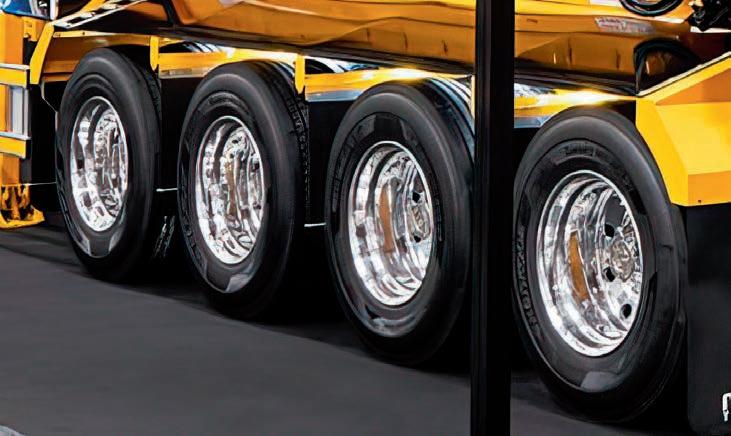
NHVR CEO Sal Petroccitto says the Performance Based Standards 2.0 Discussion Paper primarily focuses on opportunities to reduce regulatory, administrative and cost barriers for industry and promote innovative approaches to heavy vehicle safety and productivity.
“The PBS scheme, which now has more than 15,400 combinations operating across the country, has played a significant role in transforming road freight transport in Australia,” Petroccitto says.
“The scheme puts safer, more productive vehicles on our roads
– allowing more freight to be moved in a safe way with fewer truck movements.
“As the freight task keeps growing and we continue to be challenged by driver shortages, it is essential that we do everything we can to improve accessibility to safer and more productive heavy vehicles and encourage innovative approaches to move goods.
“The Discussion Paper has a strong focus on working with road managers to open up increased access for PBS vehicles, so they can operate on the same networks as their conventional equivalents, provide certainty of access for these vehicles, and eliminate the need for permits.
“It also provides a pathway for PBS vehicles to exit the PBS scheme into the ‘as-of-right’ fleet, as we have recently delivered through the
The director of a New South Wales waste company has been ordered by the Parramatta court to comply with an Enforceable Undertaking (EU) voluntarily entered into with the National Heavy Vehicle Regulator (NHVR), following a breach of the EU conditions.
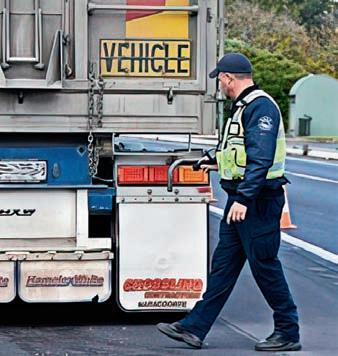
NHVR acting executive director Statutory Compliance Belinda Hughes says the director failed to undertake three safety initiatives within 12 months, as required under the EU.
“The court issued the director an order to comply with the EU conditions within
12 months, as well as a Conditional Release Order for a period of two years,” Hughes says.
“If the director doesn’t comply with the court order, they may be prosecuted again and risk a more severe penalty.
“The NHVR offers EUs as an alternative to prosecution because they provide real safety benefits for the transport industry and the community. If a company or person doesn’t comply with the conditions in an EU, the NHVR will hold them accountable.”
If the accused does not comply with the
National Class 3 20m Long 3-axle Truck and 4-axle Dog Trailer Mass and Dimension Exemption Notice.”
The NHVR’s preferred option presented in the PBS 2.0 Discussion Paper comprises three key components that will:
• ensure PBS vehicles remain at the forefront of innovation through the dynamic management of PBS Standards
• create a ‘lifecycle’ for a PBS vehicle from initial concept through to exit from the PBS scheme for common and mature design concepts
• expedite end-to-end approval processes through opportunities for third parties – such as, assessors, certifiers and manufacturers – to support delivery of regulatory functions.
“The Discussion Paper provides a comprehensive review of the PBS scheme and is designed to be a consultative process. We know there is a lot to consider, so we’ll be holding a series of webinars in early 2023 to provide the chance to discuss your views and provide feedback,” Petroccitto says.
“The work undertaken through PBS 2.0 will inform the Review of the Heavy Vehicle National Law.”
To read the Discussion Paper, register for a webinar or find out how to submit your views, visit www.nhvr.gov.au/pbs2-0 and submit a written submission before February 17, 2023.
The NHVR is calling for industry input into shaping the future of the PBS scheme
court order, the NHVR says they may be prosecuted again for failing to comply with a court order.
Parramatta Court orders waste company director to comply with NHVR Enforceable Undertaking (EU)NHVR is asking for operator feedback on the clarity of its safety notices
The trophies were ready for the big night
The last list of finalists have been announced ahead of the HVIA National Awards
The Heavy Vehicle Industry Australia (HVIA) has revealed its remaining finalists for its Eastern region ahead of its Gala Awards dinner in late November.
Along with major sponsors NTI and Truck Assist, HVIA has announced the finalists for five awards.

For the Safety Innovation award, MAXSAFE Anti Rollaway – Protecting People and Property is a finalist for its active safety solution. Wheely-Safe is the second finalist for the award with its wheel loss sensor solution.
When it comes to product innovation, Enveero is one of four finalists alongside Jamadillo – PT Blueboys TM. Airtec Corporation is a finalist for its SmartOBM digital product, while STEMCO’s SVT Gate Reader device rounds out the finalists for the Product Innovation award.
Penske Australia has been named as a finalist for the Community Leadership award through its Outback Futures organisation.
For the Wurth Australia-sponsored Apprentice of the Year Award, Hunter Tapping of Brown and Hurley is named as a finalist, alongside Simon Flynn from Brown and Hurley Kyogle.
Cummins South Pacific’s Lachlan Waser has also been named, with Cummins Wetherill Park’s Simon Axisa joining Kai Underhill from Haulmark Trailers and MaxiTRANS’s James Cohen-Campbell as finalists for the prestigious award.
For the final Peter Langworthy Award, Smedleys’s Dion Simms has been named as a finalist for his leadership in the industry.
The Heavy Vehicle Industry Australia (HVIA) and the National Heavy Vehicle Regulator (NHVR) have agreed that the HVIA will organise a webinar that will allow the allow members to engage with the NHVR and seek clarity on what can and can’t be done under the existing Class 3 truck and dog notice.
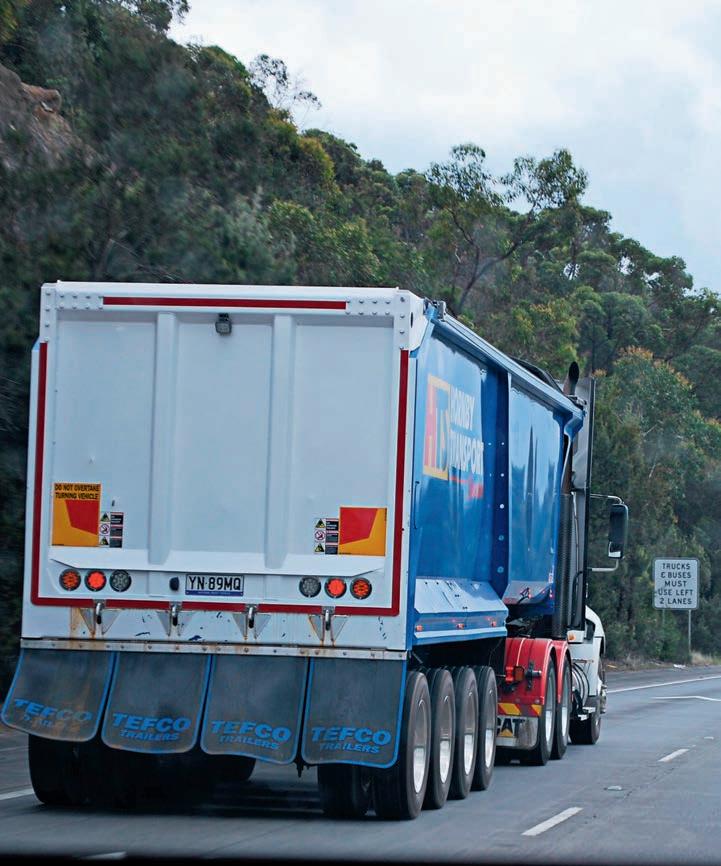
On September 28, the NHVR released the new Class 3 truck and dog notice, which enabled 20m long 3-axle truck and 4-axle dog trailers to gain mass and dimension exemptions.
This notice was the first of a series of notices the NHVR is planning to allow proven PBS designs to be used without needing to go through the PBS approval process.
Unfortunately, the HVIA says the publication of the notice has raised many questions from operators who have found the notice confusing and who have in turn sought clarification from trailer manufacturers and PBS assessors.
In response to the confusion over the notice, HVIA approached the NHVR to see if it could clarify how the notice will work in practice.
The HVIA says the NHVR is also keen for suggestions from industry on how to refine the notice to make it simpler and easier to understand and implement. This will also assist the NHVR in preparing future notices.
The HVIA recently approached the NHVR to clarify the Class 3 notice for truck and trailer set ups
A total of $15 million in emergency funding is to be fast tracked to eight councils in central and western NSW for urgent road repairs to restore access to flood-impacted areas.
Deputy premier and minister for regional NSW Paul Toole says the funding will allow councils to start repairing critical infrastructure and support future recovery works.
“Restoring road access as quickly as possible is critical to ensure the supplies, support and equipment needed to recover from this disaster can get where it’s needed,” Toole says.
“With harvest underway, we also need to ensure roads are up to the task of carrying the additional truck and heavy machinery to get this crop off and to receival sites.
“This cash is being directed straight to councils which, with their detailed knowledge of their local region and roads, are best placed to identify those critical priority areas.
“Natural disaster-declared councils will still be able to submit their Natural Disaster Funding Recovery claims once those damage assessments are complete.”
Thousands of kilometres of road network are in need of fixing and repair after the recent flooding in NSW and Victoria
Nationals minister for regional transport and roads Sam Farraway says it’s critical to start the repair and recovery process as soon as possible to reconnect communities and the state’s supply chain.
“Regional NSW relies on an accessible road network, which is why I worked with Transport for NSW to ensure emergency funding is in bank accounts of councils today,” Farraway says.
“We will come back from these floods stronger, and I will be raising with the federal government the need to expand the Betterment Program currently in place for councils in northern NSW to the west.
“Our natural disaster funding needs to allow councils to rebuild their infrastructure to be more resilient against natural disasters to keep communities connected.”
The eight councils to receive the fasttracked funding are Cabonne, Cowra, Forbes, Lachlan, Moree Plains, Narrabri, Parkes and Walgett.
Additional councils which have also been impacted by the floods may be eligible to receive advance funding and will be evaluated on a case-by-case basis.
There’s hope a new pavement material might put an end to persistent potholes
“One of the biggest challenges facing repair crews using traditional repair methods is the need to wait until the road is dry before being able to fill a pothole. The prolonged wet weather also increases the risk of the same pothole re-forming,” NSW metropolitan roads minister Natalie Ward says.
The Australian Flexible Pavement Association (AfPA) says it welcomes a new trial by the New South Wales government in response to road damage caused by extreme weather events in the state.

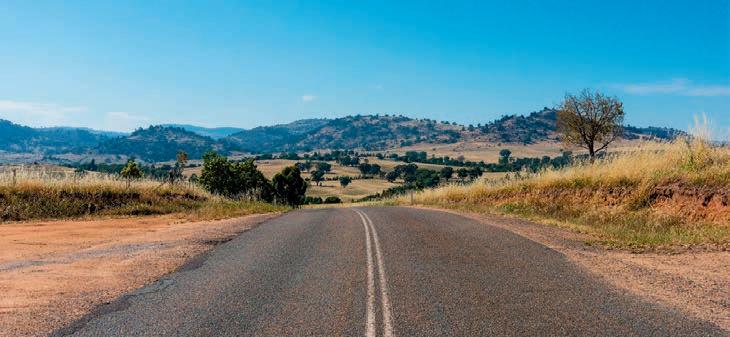
The trial aims to test ways of fixing rising rates of potholes in record time using cold mix asphalt, allowing for faster drying and application in wet weather conditions. The method has become useful in combatting flooding events.
The NSW government estimates that since March this year there have been more than 152,000 potholes filled, including almost 18,500 in Sydney roads alone.
The AfPA says innovations like this remain one of its key strategic priorities as it continues working alongside government to ensure that the latest improvements in technology, resilience and sustainability are at the forefront of infrastructure.
“We’ve been using a new cold mix product on some of our worst potholes and it has already produced outstanding results – our road crews haven’t needed to refill a single pothole since they started using this product.”
AfPA CEO Carlos Rial says: “We always welcome the introduction and adoption of road maintenance innovations into government projects.
“Given the frequency and devastation of flooding events across the state and the country more broadly, there is a clear need to trial new solutions which keep our infrastructure safer for longer.
“We applaud the NSW government’s commitment to keeping the state safe and moving and look forward to continuing to work alongside government to deliver these urgent maintenance projects.”
The NSW government is putting $15 million in emergency funding towards fixing flood-wrecked roadsA pavement association has praised the NSW government for trying a new road maintenance product to protect against flood damage

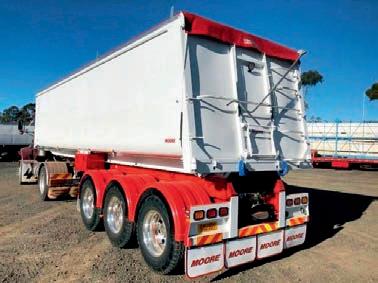

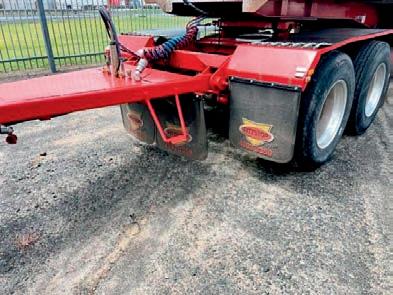





The opening of Daimler Trucks Dubbo represents a strengthening of support for the Central West region of New South Wales.
Backed by Dubbo local businessman Chris Gibson, the new centre features a sizable team led by general manager Damian Brewer.
Daimler Trucks Australia Pacific president and CEO Daniel Whitehead says he is pleased Daimler Trucks Dubbo team has joined the network.
“We are really excited that Chris and his team are committed to supporting Daimler Truck customers in the Central West region of New South Wales,” Whitehead says.
“They have a lot of experience putting the customer first and we know they will be a valuable addition to the Daimler Truck network in Australia.”
Brewer says he is thrilled the dealership is now open.
“We have drawn together a strong team to ensure that we can support our local Daimler Truck customers and every single one of us is excited to get started,” he says.
“We have a lot of knowledge and a lot of enthusiasm and are committed to providing the support that
customers from our region need to get on with their work.”
Chris Gibson says Daimler Trucks Dubbo provides important coverage.
“There has been a gap without a Daimler Truck dealership in the area for a while, so we know Daimler Trucks Dubbo will be well-received and play an important role for our customers,” Gibson says.
“We are a local business and are committed to a long-term presence with Daimler Trucks Dubbo.

“Our customers can now be assured that our whole team is committed to help them operate their business in the best way possible with class-leading trucks and unbeatable service.”

NatRoad
The National Road Transport Association (NatRoad) says Victoria’s revised approach to allowing heavy vehicles leeway with curfews is a step in the right direction.

The Victorian government has introduced a planning exemption as part of its return to COVID normal settings.
The exemption allows deliveries of essential goods to premises one hour before and one hour after times specified in any planning permit condition.
This measure is in place now and will be trialled for up to 24 months with comment invited from industry and local government.
NatRoad says a recent contracts bill passing into law shows the pendulum is swinging towards operators
The passing of unfair contracts legislation into law in November is good news for the road transport industry, the National Road Transport Association (NatRoad) says.
CEO Warren Clark says NatRoad is pleased that the Treasury Laws Amendment (More Competition, Better Prices) Bill 2022 has been given Royal Assent.
“It has been a long road, and this sends a clear message to big corporations that the pendulum has swung back to small operators,” Clark says.
The new law prohibits the use of unfair contract terms in a standard form consumer or small business contract and creates new civil penalties for anyone trying to do otherwise.
It also gives courts more power to make orders to void, vary or refuse to
enforce part or all of a contract, and it will expand the class of contracts that the law applies to.
“The changes aren’t perfect and the
“This is a win for common sense and will help ensure supermarket shelves remain stocked and pharmacies have medicines they need,” NatRoad CEO Warren Clark says.
“It is a fact that supply lines remain under stress and that’s been exacerbated by the recent East Coast floods.
“It makes no sense for truck drivers to miss delivery cut-off times by a few minutes and have to wait until the following day.”
Clark says national research commissioned by NatRoad shows that 58 per cent of Australians are aware of curfews and six-in-ten would consider their removal if the pay-off was improved delivery of goods.

Victoria restored its curfews in August following their suspension during the pandemic.
new law won’t take effect for 12 months to give businesses the chance to adjust,” Clark says.
“There are still nuances in the law that operators will need to take into account and we are urging our members to seek advice if they have questions.
“But we are in a much better place than we were a year ago and we are grateful that the federal government brought on the legislation.”
Clark says a contract NatRoad has seen required the operator to find a five per cent “productivity” saving each year during the term of the contract. The operator’s tenure could be ended, without cause, on a month’s notice, but the contract is for a five-year term.
“That’s one example of an onerous and one-sided contract that we hope will be extinct as the law comes into effect,” Clark says.
says it is welcoming of the flexibility in truck curfews occurring in VictoriaChanges to curfew rules on key Victorian transport routes have been welcomed by NatRoad NatRoad CEO Warren Clark
From December 1, Performance
Based Standards (PBS) vehicles will be able to use a broader range of tyres, enabling the PBS scheme to better support and promote the next generation of smarter, safer and more productive vehicles.
The National Heavy Vehicle Regulator (NHVR) says the new approach will remove the restrictive and outdated tyre requirements that created unnecessary costs and allow PBS operators to use any brand and model of tyre, as long as it meets relevant PBS Standards.

NSW regional transport and roads minister Sam Farraway says the introduction of the PBS generic tyre approach was a significant development in supporting greater industry productivity and delivering improved economic benefits.
“At all levels of government, we have a responsibility to ensure the heavy vehicle industry can meet the country’s growing freight task,” Farraway says.
“PBS vehicles allow more goods to be delivered with fewer vehicles in a safe and sustainable manner –offering productivity improvements of 15 to 30 per cent compared to their prescriptive counterparts.
“New South Wales is leading the way in delivering greater access to PBS vehicles and welcomes this sensible decision by the NHVR, which will only continue to encourage greater PBS uptake.”
NHVR CEO Sal Petroccitto says the NHVR is committed to reforming the PBS scheme to break down barriers and make it easier for operators to get on with doing business.
“We listened to industry and provided a solution that will give operators greater flexibility, increased productivity and lower costs, without impacting safety or performance,” Petroccitto says.
“Since ministers endorsed the new tyre approach, we have undertaken extensive testing to ensure the safety of PBS vehicles will not be compromised and that the transition process is as smooth as possible.”
Heavy Vehicle Industry Australia CEO Todd Hacking says the introduction of the generic tyre approach was a significant announcement for all PBS operators.
“HVIA members brought this issue to the table with a view to fixing an impediment to what is otherwise a great driver of innovation,” Hacking says.
“The PBS scheme creates the platform for incorporating the very best in design, engineering and manufacturing ingenuity to address the challenges of our ever-increasing freight task in the safest way possible.
“We are grateful that the NHVR and the federal government are taking an increasingly collaborative and consultative approach with industry with a view to improving both safety and productivity outcomes.”
Acting Chairman of the Australian Tyre Industry Council (AITC)
Silvio de Denaro says that, as the peak industry body for tyres, ATIC warmly welcoms the expedited implementation of the new system.
“This does not arrive one minute too soon, as countless hours have been spent by industry advocates in the attempt to improve the previous restrictive arrangements,” de Denaro says.
“This step has been years in the making, and hopefully now we can turn this page and engage in other, more useful work with the NHVR in the pursuit of increased safety and productivity for Australian road transport.”
The amended PBS Standards and Vehicle Assessment Rules will be made available on the NHVR website prior to the commencement date for the generic tyre approach.
From the commencement of the generic tyre approach on December 1:
• PBS certifiers will no longer be required to confirm that a specific brand/model of tyre is fitted to a PBS vehicle. They will just need to confirm that the fitted tyres meet the size, load rating and configuration requirements.
• T here will be a three-month transition period for any applications underway, during which operators can continue to make design approval applications using the existing specific tyre approach or, alternatively, they can use the generic tyre approach.
• A ll existing PBS vehicles will be deemed to comply with the new approach – with no need to be reassessed. Operators will not be required to have their existing vehicle approval amended.
• Updates to vehicle approval documents issued before the introduction of the generic tyre approach will only occur when they need to be updated for some other reason.
The NHVR will be holding a series of webinars in coming weeks to provide an overview of the generic tyre approach.
TheNHVR
says expanded tyre choices will help PBS operators use safer and smarter vehiclesGeneric tyres are now an option for vehicles covered by PBS standards
Western Australian transport and logistics company Combined Logistics isn’t in the race to become Australia’s largest trucking company. Instead, it aims to deliver the best service it can and keep its workers happy in an industry that’s facing enormous pressures. ATN sat down with the founders’ son Cameron Byrom.
Cameron Byrom concedes that 2015 was a tough year for anyone to start a business in Western Australia, let alone his own parents. The company they created, Combined Logistics, that Byrom also works for as a driver, has now been successfully running for eight years.
“They did it pretty tough for the first couple of years but they’re very resilient and they just worked really hard and came out all right in the end,” says Byrom.
Byrom always thought he might end up in then transport industry. It was an industry his parents had being working in since 1995 when his father Darron drove tipper trucks to move machinery and portable buildings in Western Australia.
His father’s career back then was a mixture of working for other people and running his own business.
The tilt tray industry was small and so it made sense for Darron have a go at buying a few trucks and running his own operations. He had a tidy business for a while with his partner, Cameron’s mother, running the books, but eventually decided to sell it off in 2003.
The experience would help the family bring a well-rounded perspective to Combined Logistics when it would launch 12 years later.
The company initially worked with mostly low loaders, flat tops and extendable trailers, moving machinery and oversized freight, as well as general freight, around the
state. The company then expanded to take on some tilt tray trucks and begin doing transportable building work.
Combined Logistics is headquartered in Hazelmere in Western Australia and most of their work stays in the state both metro and regional. But they also as partner with companies that work all around the country.

The company now specialises in supplying transport, logistics and project management solutions to many industries including oil and gas, mining, construction and civil to name a few.
Combined Logistics currently offers a wide scope of transport and logistics services which Byrom says
all came about organically and were areas his parents were familiar with.
“It’s all work my parents, or the managers in the company, have been familiar with in the past, it’s just we’ve been able to add more strings to our bow officially as we’ve become more settled as a business,” says Byrom.
Byrom emphasis that all the growth and success of the business has been completely organic.
“We’ve never been motivating by having lots of trucks or lots of work or anything like that. As opportunities have come up and as our customers have needed us to provide different services, we’ve just plugged the gaps.
“That being said, if you’re not looking to grow and looking to progress that’s when you can get complacent. Growth, however, just hasn’t been the primary driver for our business though. There are other things that are more important — providing the best quality of work and service”
“Part of providing the best service though is making sure we have all our bases covered and customers looked after,” says Byrom.
Combined Logistics is also aware that part of providing a great service is knowing its own limitations and understanding that it can’t be all things to all people. It is also one of the company’s central values: service.
“We want to be saying yes and being able to fix people’s problems. You have to look after the customers otherwise they just stop calling.
“A big part of that service is having relationships. We don’t want customers to be thinking ‘let’s call Combined Logistics’, we want them to be thinking ‘let’s call Darren’ or ‘let’s call Jeff’,” says Byrom.
Alongside service, Combined Logistics also has a pride in what it does for its customers and wants people to think of it as a group of approachable people and not just another trucking company. And as a result, Combined Logistics boasts


long relationships with customers who keep coming back for return business.
Combined Logistics employs just under 20 people currently with eight being non-drivers: mechanics, accounts administration and operations roles. There are seven full-time drivers, as well as several sub-contractors.
In terms of future strategy Byrom says the last three years have been humbling and taught everyone at the company that no one can predict the future. The company understands what works for them and plans to simply continue to deliver high quality services to their customers and make improvements wherever they can.
The company’s strategy has always been to remain fluid and dynamic and open to new opportunities that may present to themselves.
Byrom says being a family business and being able to draw
on his parents’ prior experience of running a transport company, allows Combined Logistics to maintain a more cautious and considerate perspective on things.
The company prioritises the health and well-being of its workers and the long-term reputation of their brand over short-term profit making. It’s a perspective Byrom says that as a young man, without as much experience, could be hard to fully appreciate.
“I run around saying what about this and that. But they’ve been burned in the past so my parents can offer me that experience and perspective on the business and know to be cautiously optimistic about things,” says Byrom.
Family values are front and centre in the way Combined Logistics runs its operations.
“Nothing is simply bums on seats. Every truck on the road has a human being in it with a family behind them.”
Government owned enterprise
Tasmanian Railway (TasRail) has acknowledged the public release of the Australian Transport Safety Bureau’s (ATSB) final report into a 2018 Devonport train incident.
The incident involved a driverless freight train that sped out of control for up to 23 minutes before stopping, resulting in two people being struck with flying debris when the freight train was forced to derail.
The TasRail train, which was loaded with cement, wouldn’t respond to attempts to prevent it from leaving its yard in September 2018. The train then sped from Railton to Devonport through 13 public level crossings before being deliberately routed into a dead-end siding near Devonport’s Spirit of Tasmania ferry terminal.
TasRail has responded to the ATSB report releasing these details, saying it has worked cooperatively with the ATSB throughout its fouryear investigation process, actively assisting with the provision of data, records, documentation, and access to key TasRail personnel.
During the past four years, various opportunities for improvement in TasRail’s operational systems have been identified and implemented well in advance of the ATSB releasing its report.
The ATSB investigation report identified six specific safety issues relating to TasRail. The report also confirms that all six issues have been satisfactorily addressed and are closed.
Examples include the installation of physical runaway protection at defined locations (based on a network-wide risk assessment process), implementation of best practice methodology for the integration of safety critical equipment and a new change management framework.
TasRail says that in September 2019, the Office of the National Rail Safety Regulator (ONRSR) confirmed that, based on its compliance investigation, there would be no further regulatory response (beyond the initial Improvement Notice) to the 2018 incident.
Before the incident, TasRail had safely used hand-held remote-control technology for site-specific terminal operations for almost two decades.
Although suspended since the 2018 incident, TasRail has established a project team to lead the reintroduction of remote-control technology for terminal operations at Railton and Devonport.
TasRail says the reinstatement process will include all lessons learnt

relevant to the safe reintroduction and use of remote technology.
By virtue of physical separation from motorists, TasRail says freight rail is inherently the safest method to transport heavy goods. Safety is one of TasRail’s core values, and it is committed to zero-harm for staff, customers, contractors, and the communities in which it operates.
The investment in TasRail’s rollingstock, terminals, rail network and safe working systems has resulted in mainline derailments being at record lows. In TasRail’s first year of operation (2009-10), there was a mainline derailment every two months.
TasRail has reported just a single minor mainline derailment (related to an extreme weather event) in the previous two financial years.
Likewise, TasRail operates safe and disciplined train operations, with 98.9 per cent of its six daily container services meeting contracted delivery windows in 2021-22 financial year.
TasRail says the 2018 incident was an isolated event, specifically related to the use of handheld remotecontrol technology. Subsequently, TasRail has updated its operating systems and continues its pursuit of a zero-harm working environment.
A
The RTBU says the derailment of a 1.7 kilometre-long freight train with 55 carriages at Inverleigh, west of Geelong, last month has again exposed the frailties of Australia’s rail safety regime.

RTBU national secretary Mark Diamond says rail workers had lost confidence in the rail safety regime, and an urgent review of the Rail Safety National Law was needed.
“Miraculously, there were no injuries to train crew. But the derailment could have been catastrophic if the train was carrying passengers, rather than freight,” Diamond says.
“Rail workers are increasing concerned that Australia’s rail safety regime is no longer fit for purpose, and not enough is being done to ensure that tracks are safe.
“While the cause of yesterday’s derailment will be the subject of an investigation, rail workers are already aware of the failings in the rail safety
system, and they want to see action.”
Diamond says heavy rain should not be used as an excuse to justify infrastructure failings.
“Australia is a big country with a big rail network. It therefore needs a rail workforce that is big enough to ensure that every kilometre of track is appropriately maintained and regularly checked – especially during times of extreme rainfall or heat,” Diamond says.
“It has also been 10 years since the adoption of the Rail Safety National Law (RSNL). It’s time that safety laws were brought up to date with contemporary practices and standards in the rail industry.”
Diamond says the introduction of the Rail Safety National Law in 2012 was a milestone moment for the industry, and a key achievement of the former Labor federal government.
“Since then, however, it has become clear that the regulator needs greater
powers in order to hold rail operators fully accountable,” Diamond says.
“There is also a grey area between the responsibilities of employers under the RSNL and model Workplace Health and Safety laws.
“A comprehensive review would allow for the Act to be strengthened, ensuring workers had the protection of a world class safety regime.”
Diamond says a major problem with the current rail safety regime was the lack of transparency.
“For example, when an individual makes a report to the regulator, they are not provided with a report back on the outcome of any investigation which arises – or even advised if any investigation has been conducted,” Diamond says.
“This undermines rail workers’ trust in the system, as they do not know whether anything has been done about the safety issue.”
Diamond says that RTBU analysis of rail safety statistics had found that in recent years:
• Workplace deaths have increased;
• D erailments have increased;
• Level crossing incidents have increased;
• T here has been no reduction in SPADS (incidents of Signals Passed at Danger); and
• T he total number of injuries is most-likely under-reported.
“By any objective analysis, the rail safety regime is failing to do the job it was set up to do,” Diamond says.
Western Truck Group has opened its tenth site, this time in Queensland
Volvo Group Australia dealer partner Western Truck Group (WTG) has announced it has opened a new site on the Sunshine Coast.
The new dealership will service Volvo, UD and Mack truck customers at upgraded facilities and services in the Chevallum commercial estate.
The old WTG Sunshine Coast site at Warana closed on November 8, with trading commencing at the new site the same day.

Western Truck Group has made this investment in its dealer network with the goal to ultimately provide better services for customers.
The new, large and modern dealership is Western Truck Group’s tenth site, with operations now stretching through regional Queensland, New South Wales and
the Northern Territory, from Dubbo to Darwin.
In addition to the new 14-bay stateof-the-art workshop, this 9,000 sqm site has a full drive-through washbay and will operate from Monday to Friday, 8am to 5pm and Saturday mornings by appointment.
Truck sales will also be managed out of the new dealership, in addition to parts and service.
“We have outgrown our current, ageing facilities, with access now difficult as a result of change of industry in our current location,” says WTG general manager of business services Russell Edwards.
“With the appointment of truck sales, we required a larger, more accessible retail offer.
“As part of our commitment to providing high-levels of service for
our customers, we are investing heavily in our dealer network.”
Edwards confirmed the new dealership would be recruiting for a number of roles including technicians, parts interpreters, sales cadets, auto electricians, apprentices and yard hands.
Volvo Group Australia vice president of services and retail Richard Singer says: “The purposebuilt facility aims to provide better services for Volvo, UD and Mack truck customers, as well as more opportunities and more local jobs for Queenslanders.”
“We extend our heartfelt thanks to the WTG team, who have invested heavily in their network over the past several years and are committed to providing excellent customer service.”

In the recent Transport Workers’ Union (TWU) elections, national secretary Michael Kaine and national assistant secretary Nick McIntosh have welcomed another four-year term delivering safer, fairer and more secure jobs for road transport and aviation workers after the AEC confirmed their re-election.
Kaine and McIntosh have vowed to focus their next four-year term on taming the Amazon Effect smashing road transport supply chains, training all union officials on holding gig arrangements to account, building on the job security improvements won by workers last year and using legislative opportunities to make transport safer, fairer and more sustainable.
TWU members recently welcomed
a commitment from workplace relations minister Tony Burke, acting on the unanimous push from a transport roundtable ahead of the recent Jobs and Skills Summit to empower the Fair Work Commission to set enforceable standards in transport.
“TWU members are front and centre of our work to improve the lives of transport workers and their families. Re-election is a powerful endorsement of our strategy to lift standards for all transport workers without exception, which we will not take for granted. We’ll fight every day to deliver on and strengthen our collective plan to tackle the Amazon Effect,” Kaine says.
“Last year we saw thousands of transport workers stand up and face
Mike Lean will remain president and Dennis Ryan, vice-president, of the Victorian Transport Association for another term after being returned to office at the organisation’s Annual General Meeting in November.
The VTA says both Lean and Ryan have been long-serving members of the VTA Executive Council and have provided steady and dedicated leadership over their many years of service.
The VTA Executive Council and Secretariat says it is appreciative of their efforts and congratulates them both on their re-election.
The AGM was the 120th in the Association’s long and proud history.
In his president’s report, Lean touched on some of the notable efforts and achievements of the VTA over the past year.
off job security threats brought by the unregulated gig economy. We’re seeing the unity of transport workers reflected throughout the industry, with supply chain clients, gig companies, major transport operators and industry groups linking arms with workers to call for reform for a fairer, safer and more sustainable transport industry.
“It’s a privilege to stand at the helm of a union that will not relent in our mission to save lives on our roads, lift industry standards, and end unfair, exploitative tactics to pit workers against one other.”
TWU national assistant secretary Nick McIntosh says: “There’s a buzz in the industry and particularly within our membership that we are on the cusp of reviving transport from an industry all-but abandoned by the former government, hanging on by a thread with deadly consequences, to a prosperous industry where all participants can thrive.

“TWU members have led the charge to create safer roads and skies and ensure all workers and their families are protected. As a union, we will continue to maximise every opportunity at our disposal now and in the future to challenge economic powers driving down standards in transport and aviation.
“We look forward to another term working hard alongside the TWU’s strong rank-and-file membership to deliver an ambitious and important plan to improve our industry.”
He acknowledged many of the external issues that have impacted the industry by pushing up prices and disrupting supply chains such as war in Eastern Europe, precarious international shipping lanes, and more recently floods in south-eastern Australia.
Lean indicated that through all these challenges, the VTA has continued to advocate for state and federal leadership to support freight operators with legislation and public policy to help ease the financial impact.
He also touched on industry leadership in the areas of training, decarbonisation, minimum standards and infrastructure planning.
TWU national leadership faced an election recently, with the results now inThe Victorian Transport Association re-elected its president and vice-president at its 120th AGM last month Michael Kaine remains national secretary of the Transport Workers Union VTA president Mike Lean

A Freightliner Cascadia 126 with all the creature comforts is making an impact at Wodonga-based fleet G.A.B.S.
It has been put to work running as a road train hauling food-processing by-product between Wodonga, in Victoria’s far north, and Charleville, in Southwest Queensland, weighing in at around 79-tonnes.
G.A.B.S operates a fleet of 13 heavyduty trucks and the Cascadia is the first Freightliner.
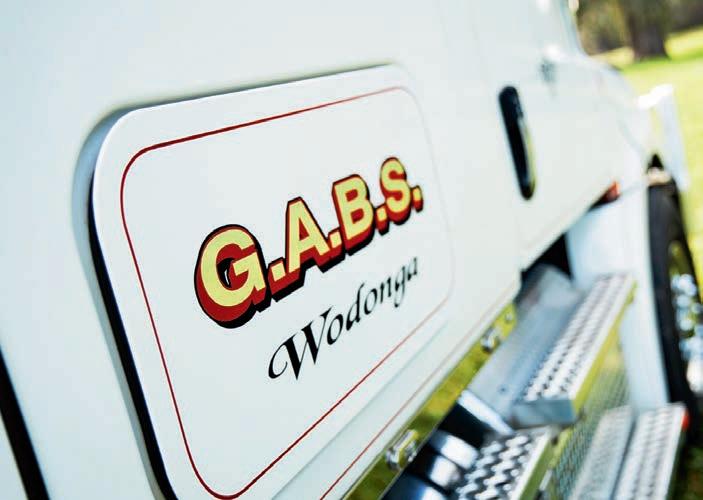
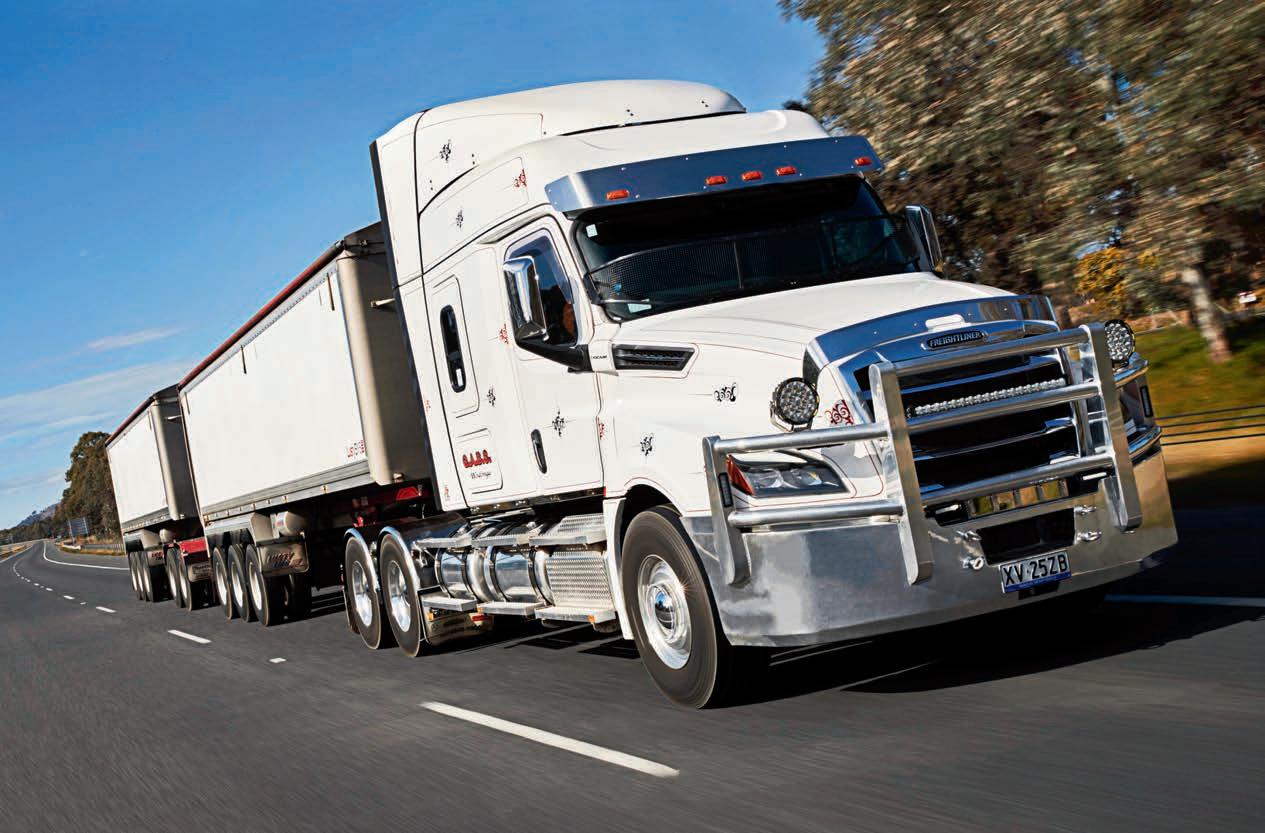
“I’ve always operated another brand of truck, but I’m very impressed with this Cascadia so far,” G.A.B.S director Ross Spargo says.
Spargo says he was initially interested thanks to the value proposition of the new Freightliner, a factor that made him take a closer look at the specs of the model that was launched in Australia after a comprehensive local test program.
Now, after a several months on the road, Ross is glad he took the plunge with the Cascadia and he highlights
the performance, fuel efficiency and comfort levels of the truck.
“It has all the creature comforts, more horsepower, better vision and good fuel,” Ross says.
“The drivers love it. The current driver likes a different truck brand, but he thinks the Cascadia is great and doesn’t want to get out of it.”
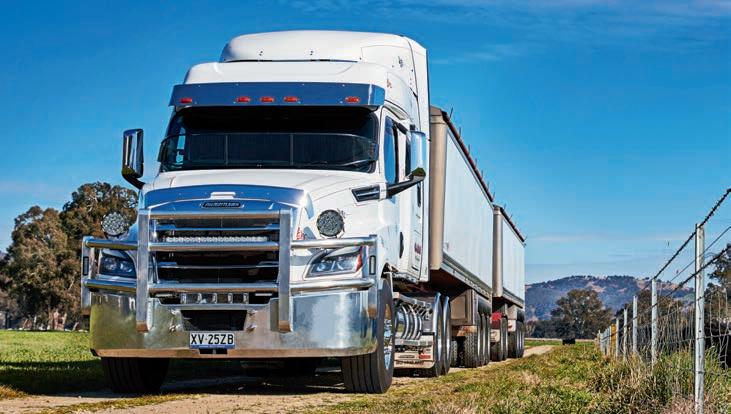

Cascadia is available with a 13-litre DD13 Detroit engine that produces up to 505hp and 1850lb-ft, or a 16-litre Detroit six-cylinder DD16 engine that pumps out up to 600hp and 2050lbft of torque. The G.A.B.S truck has the bigger engine.
Although it is available with an advanced Detroit DT12 Automated Manual Transmission (AMT), Spargo opted for the old-school 18-speed Eaton manual.
Spargo says he noticed early on that the Cascadia was extremely good on fuel, even in challenging conditions, and also used very little AdBlue.
“We are very happy with the fuel numbers. It is getting the best fuel numbers in the fleet on that application and uses very little AdBlue,” Spargo says.
He selected a 60-inch sleeper for the Cascadia, which makes it a comfortable home away from home. The set-up includes a TV and a fridge, while it also has an Icepack cabin cooler unit to maintain the high level of comfort. The same designers who
shape Boeing interiors were involved in the creation of the Cascadia cabin with the goal of ensuring that it was both practical and ergonomic.
Spargo and the G.A.B.S team is proud of its fleet and all the trucks get a little bit of love with plenty of stainless steel before they hit the road.
The Cascadia benefits from some scrollwork and pin striping, along with stainless wheel guards, sunvisor and bonnet guard, while there are plenty of LED lights across the top of
the windscreen and on the cab skirts to make sure no-one misses the rig out on the open road.
While its inherent fuel efficiency gives the Cascadia good range, Spargo also selected four fuel tanks with a combined capacity of 1249 litres to ensure the G.A.B.S’ truck can go a very long way between drinks.
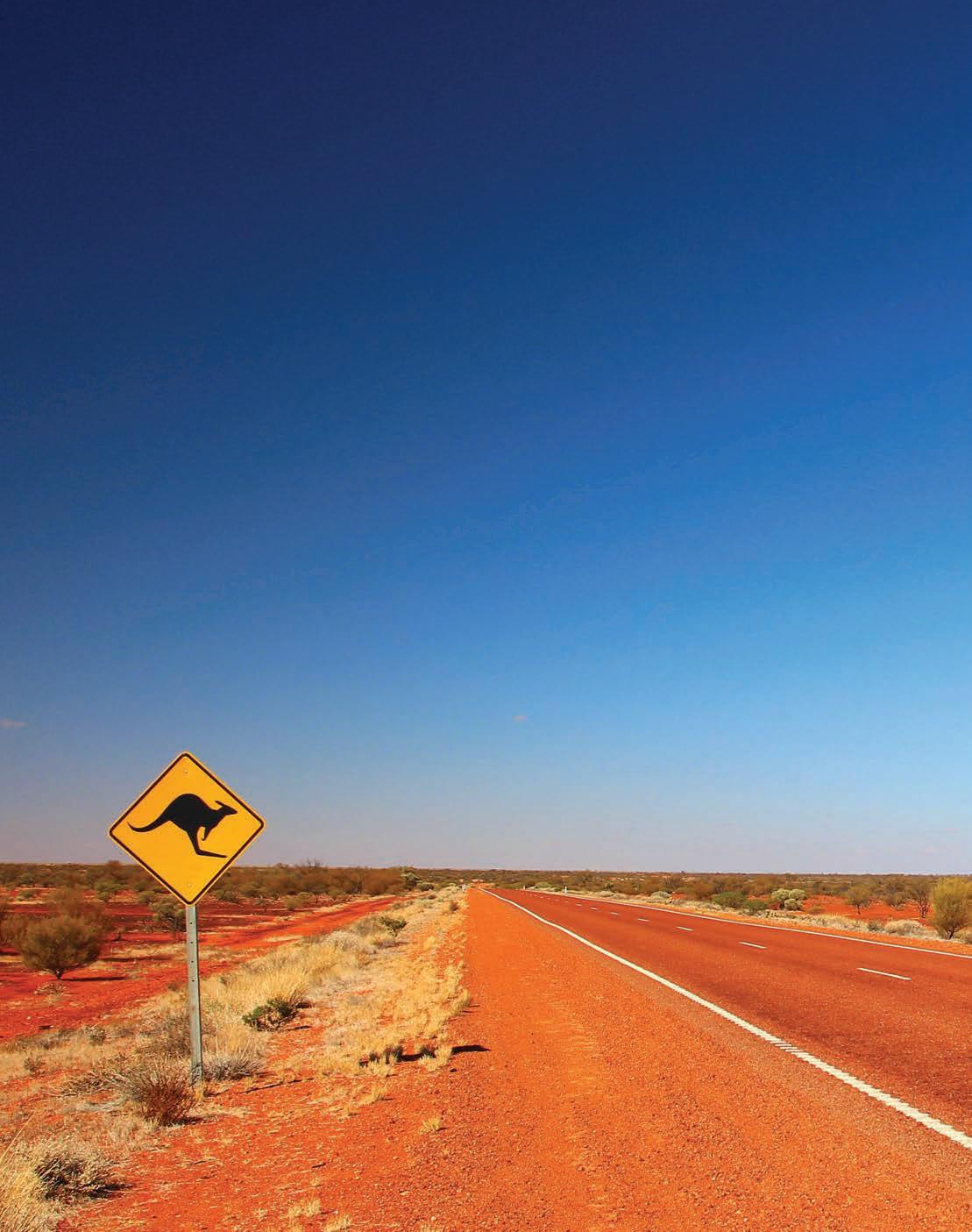

The Western Australian government says its $6.1 million Heavy Vehicle Driving Operations Skill Set has hit a key milestone, with more than 230 Western Australians now employed following the completion of the program.
Developed in collaboration with industry and in response to the truck driver shortage emphasised during the COVID-19 pandemic, the Australian-first program provides theoretical and practical hands-on truck driver training at the stateof-the-art Driver Risk Management facility located near Perth Airport.
Since the program began in April last year, 232 graduates of the program have gained employment
following their completion, with more set to secure employment in the transport and logistics industry this month as they receive their licences.
Significantly, around 30 per cent of participants in the course have been women, when compared to female representation among truck drivers in WA being of less than four per cent.

The six-week metropolitan course is available through Central Regional and South Regional TAFEs - in collaboration with industry - and is free for eligible participants.
Due to the critical program’s success, the course has been expanded to regional areas with a 10-week program now running in the
A Western Australian driver training program is being hailed as a sucess for diversity with many female graduates
South-West. Free for eligible students, the Practical Driving Instruction Training and Assessment and licencing costs are $500 for concession students and up to $1,250 for non-concession students.
The program aims to train 500 new workers in Heavy Rigid (HR) licences and upskill 500 existing workers from HR licences to Heavy Combination and/or MultiCombination licences, to combat skills shortages and support the transport and logistics industry.
“Western Roads Federation and the Transport Workers’ Union approached the Premier, the WA education and training minister, and myself in 2020 asking us to create a dedicated training course for truck drivers, and it’s fantastic to see that this program is exceeding expectations,” WA transport minister Rita Saffioti says.
“It is an excellent example of collaboration with industry to help match jobseekers looking to boost their employability with an industry in need of skilled workers.”
Western Roads Federation CEO Cam Dumesny says the program has provided a much-needed boost to the transport industry and the support of the Western Australian government was very welcome.
operators to disclose the maximum towing and storage fees at the accident scene to address the escalation of towing fees and the poor conduct by some industry operators.
The ICA says it encourages the WA government to bring forward the remaining tow truck industry reforms as soon as possible to ensure that WA road users enjoy the same level of consumer protection as other states and territories.

The Insurance Council of Australia (ICA) says it welcomes amendments to the Road Traffic (Vehicles) Regulations 2014 to enhance protections for vulnerable road users involved in road accidents,
as part of the Western Australian government’s ongoing tow truck industry reform.
The amendments, announced on October 31 this year, require tow truck
“These measures are a step in the right direction for improving pricing transparency and accountability, and something that the Insurance Council has long called for,” CEO of Insurance Council of Australia Andrew Hall says.
“We look forward to working collaboratively with all stakeholders to ensure reforms are implemented promptly and effectively for the benefit of all WA motor vehicle owners.”
The WA government says its training program is paying dividends when it comes to enticing more workers into the industryThe Insurance Council of Australia is calling for WA towing sector reforms to remove exhorbitant towing fees Transparency on towing fees is key in WA
The WA government has passed a new owner-driving bill through parliament to provide more protections for small operators
The Western Australian government has passed the Owner-Drivers (Contracts and Disputes)
Amendment Bill 2022 through parliament, providing additional protections for small business and independent contractors in the road freight transport industry.
The WA government says amendments will enhance operational efficiency, safety and regulation of dealings between ownerdrivers and hirers, providing benefits for all road users across the road transport network.

The changes to Owner-Drivers (Contracts and Disputes) Act 2007 are the result of years of work and extensive consultation with the Road Freight Transport Industry Council and Road Freight Industry Tribunal.
The WA government says the Department of Transport (DoT) will be working alongside industry to implement updated changes, which include the below:
• Contracts greater than three months will have a 90-day minimum notice period and contracts less than three months a seven-day minimum notice period

• Workplace rights of entry for an owner-driver’s authorised representative for the purpose of investigating suspected breaches of the Act
• Discrimination will be a form of unconscionable conduct
• T he Road Freight Transport
Industry Council will publish guideline rates to inform industry participants of rates of pay when they bargain. Non-compliance with guideline rates will be a relevant factor when the Road Freight Transport Industry Tribunal determines whether there has been unconscionable conduct
• Changes to the Tribunal’s powers and jurisdiction to ensure they are better equipped to deliver just and efficient outcomes in dispute resolution.
The Department of Transport will work with industry to prepare for the implementation of the changes which will come into effect in the first half of 2023.
WA transport minister Rita Saffioti says the road freight industry is essential to WA’s supply chains and plays a vital role in moving freight throughout WA.
“It is important there are sufficient and appropriate safeguards and protections for those small business operators and better avenues for dispute resolution between ownerdrivers and hirers through improved administration of the Act and Tribunal proceedings,” Saffioti says.
“The Bill helps simplify and enhance the day-to-day operations of the WA Owner-Drivers laws and contributes to safer and more sustainable operations across the WA road freight transport industry in years to come.”
The Healthy Heads wellbeing messages are now available online in eight languages
Healthy Heads has adapted its wellbeing message into eight languages to assist those in the transport and logistics sectors who have English as a second language
National Heavy Vehicle Regulator (NHVR) says Healthy Heads in Trucks & Sheds (HHTS) has launched industrytailored wellbeing resources that have been translated into eight of the most commonly spoken languages other than English in the Australian road transport, warehousing, and logistics sector.
The rollout of English as a Second Language (EaSeL) resources is about making information on looking after our wellbeing more accessible and more easily understood for different cultural groups working across the industry.
NHVR CEO Sal Petroccitto says providing greater access to mental health resources was particularly important as the transport industry prepares to enter the busiest time of the year.
“I encourage everyone in the sector to use the EaSeL resources developed by HHTS and prioritise their mental health and wellbeing this holiday season,” Petroccitto says.
EaSeL has been made freely available to industry via the HHTS website, and includes an informative animation, and supporting resources including flyers and a range of posters that are specifically aimed at providing an opportunity for people to consume the information in their own time.
This project was proudly funded by the NHVR’s Heavy Vehicle Safety Initiative, in partnership with the federal government.
Visit the Healthy Heads website to access EaSeL resources www.healthyheads.org.au

The Western Australian government says the first package of works on the Port Hedland Road and Rail Safety improvement project is now complete.
Stage one has been officially opened, which includes the construction of a bridge over BHP’s rail line at Buttweld Road.
The 34-metre-long bridge was constructed by Highway Construction-Albem Operations Joint Venture as part of the $31.48 million BHP funded stage one works.
Construction of two roundabouts on Powell Road at the intersections of Dalton and Hamilton roads were also completed as part of stage one in June 2022.
Construction has begun on the $76 million second package of works, which has also been awarded to Highway Construction-Albem Operations Joint Venture.
The project involves the realignment of approximately 4.75 kilometres of the Great Northern Highway (north of the Port Hedland International Airport and the Walkabout Village), including the construction of new access roads due to the realignment.
A second bridge over the BHP rail line will also be constructed, eliminating the existing level crossing. Construction is expected to take just over 12 months, with work estimated to be completed in late-2023. It will be managed by Main Roads WA with support from project partner BHP.
“This is an important package of improvements that will bring major safety and economic benefits to Port Hedland,” federal transport minister Catherine King says.

WA transport minister Rita Saffioti says the project is a “fantastic example of governments working closely with industry to deliver better outcomes for the local community, and while we’re at the halfway point of this project, it is already delivering improved road safety”.
“Removal of these rail crossings will eliminate the risk of accidents, and the need for vehicles to be stuck at rail crossings for long periods of time, whilst long freight trains pass by.”
Research from the UNSW Business School suggests the Australian port reform has failed and needs immediate changes
Researchers from the University of New South Wales’s (UNSW) Business School say that the privatisation of Australian port authorities and the organisations responsible for running containers ports has contributed to a failing port reform.
Craig Donaldson from UNSW says Australians are being left in the lurch with a higher cost of goods at checkouts due to the failed privatisation of the country’s main container ports and the resulting increased supply chain costs.
Alongside failed competition measures and “cartel-like behaviour” from major shipping lines, Donaldson says this is all putting pressure on supply chains.
“In the 1980s, successive Australian governments began to pursue the widescale privatisation of publicly held assets,” Donaldson says.
“Since then, port authorities at four of the five biggest container ports in Australia have been privatised over the past 10 to 15 years.
“This has always been a controversial policy among economists since port authorities
are understood to be a natural monopoly.”
The soon-to-be published study finds that the most efficient port in Australia is in Fremantle, which is the only one whose port authority remains in public hands.
Donaldson says this is partly due to the fact it has lower volumes compared to other ports.
To solve the issue, Donaldson says governments must focus on longterm results for the port system.
Firstly, UNSW experts want to see state regulation and oversight be introduced without delay to limit privatised port authorities from implementing rent rises for stevedoring companies above a reasonable market rate.
Then they want to see regulation introduced to stifle the continued unsustainable escalation of terminal access and infrastructure charges levied by stevedores on landside customers.
Lastly, the UNSW researchers have called for a federal review to be launched to bring centralised coordination to port policy in Australia.
The WA government has worked with BHP and the federal government to further develop its road and rail safety projects
2xMackprimemovers,1x20171x2018,mp10,685hpm drive,autoprimax,airbagsuspension,10studaxles, polishedAlcoaautogreaser,airdryer,hirisesleeper,diesel airconditioningandinverter,customexhaustandoutback kingbullbar,roadtrainandbdoubleratedfullguards,led spotandstriplights,redpremiuminterior,sattrackand handfreephone,Woodgraincupboardsandandbuiltins, thesetruckshavebeenonMackGoldfleetmaintenance sincenew,fullhistoryavailable.S165. TA1141052.


From$220,000+GST
HDprimemover,daycab,Cummins twinstack+aircleaners.Gen4 cummins.Hydsextipper2xside tipper.S173.
$85,000+GST

2012,with600hpCummins,18sp manual,8bagsuspension, red interior, goldgauges,10studalloyrims,80% cleanskin,tyreswithsloanebuiltbody andalloyquaddog,airbag suspension,PBSSpec,10studand Alcoarims,tarp2xway,tailgate280k plusgstfortheunit.S172. TA1153852.
$250,000+GST
2015,tipper,mp8,mdrive,autoalloy body,fupsbumper. FilePhoto.S170. TA1153848.
$330,000+GSTasaunitwith nextphoto
19.5or204springsuspension2x spacetyrecarriersdropinkingpinfull guards90mmturntableonrearLED lights2pacpaintnewrimsandtyres, 2instock.S134. TA1024432.
$60,000+GST
2012,MP818spR/RGearbox,46/100air bagsuspension,crosslocksnewtyres polishedalum10studrims9offsetson steer.Alloyfupsbulbaralumbodyring
SARprimemover,highrisesleeper,





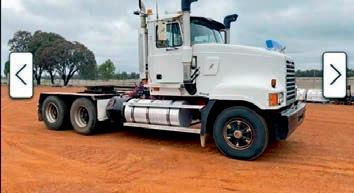



newtyres,fullguards,roadtrainrated


The Western Australian government says it welcomes the significant investment CBH Group (CBH) has made in the future of the Wheatbelt and the WA grain supply chain with the purchase of a 105-hectare site at the Avon Industrial Park.
The proposed primary receival site, known as ‘Meenaar’, is a critical component in CBH’s goal to increase monthly peak export capacity from 1.6 to 3 million tonnes by 2033.
The project is expected to generate up to 140 jobs at the peak of construction, with 40 ongoing jobs in operations and transport.
Managed by DevelopmentWA and overseen by the Avon Industrial Park Advisory Committee, a
sub-committee of the Wheatbelt Development Commission, the Avon Industrial Park has experienced strong growth over the past 18 months.
In October 2021, the WA government allocated $200,000 through the Regional Development Leverage Fund in partnership with CBH to undertake road and rail design and costing assessments to improve freight access and complement future expansion of the park.
CBH’s purchase is the single largest development in the park’s history and is a significant economic development opportunity for Northam and the broader Avon
sub-region. Located on the outskirts of Northam on both interstate rail and road networks, the 470 ha Avon Industrial Park accommodates a number of businesses servicing the rural, resources and mineral processing industries.
The Avon Industrial Park is part of a suite of strategic freight network assets near Northam, bolstering the town’s position as an intermodal freight hub on the doorstep of the Perth metropolitan area.
“This is a significant investment for the Wheatbelt and Northam that will greatly benefit both the regional economy and the WA agricultural industry,” regional development minister Alannah MacTiernan says.
“The investment and work underway to further activate and expand the park forms part of the state government’s broader commitment to diversify regional economies and enhance freight efficiencies to benefit WA businesses.
“The state government will continue to work with local government and industry to maximise these economic benefits.”
Geelong’s port will soon have new owners
Port operating company GeelongPort, which operates the Port of Geelong, has been sold.
State Super and Brookfield have signed binding agreements with a consortium comprising Stonepeak and Spirit Super for the sale and purchase of GeelongPort.
Under the terms of agreement, Stonepeak, on behalf of its managed funds and accounts, will hold a majority 70 per cent interest in the entity, with
Spirit Super having a 30 per cent stake. The consortium is a responsible and capable custodian for GeelongPort with a long-term investment horizon and a commitment to investing in regional Australia.
“We’ve been pleased with the level of interest shown in this high-quality, strongly performing asset,” State Super CEO John Livanas says.
“GeelongPort’s importance to the

local and state economies and future potential has been well recognised by the consortium’s approach. We believe the agreement represents an excellent outcome for our members.”
Brookfield Managing Director of Infrastructure Ray Neill says: “GeelongPort has been an excellent asset for our investors since 2016 and it is continuing to perform strongly.”
“Pleasingly, in October of this year, construction of the new dedicated facility for the Spirit of Tasmania concluded and daily sailings commenced. This is a transformational 30-year contract for GeelongPort and will provide a significant and ongoing boost to the broader Geelong region.”
The transaction will be subject to customary regulatory approvals. State Super and Brookfield expect to complete the transaction in late Q1, 2023.
The WA government says funding for Avon Industrial Park has huge potential for logistics and transport companiesThe company operating the Port of Geelong has been sold to a consortium Avon Industrial Park is growing







Wurth Australia has joined Heavy Vehicle Industry Australia (HVIA) as a Principal Partner, aligning its reputation for exceptional service and quality with Australia’s peak industry association representing manufacturers and suppliers of trucks, trailers, components, equipment and technology.
The announcement of the new partnership was made at last week’s HVIA Annual General Meeting, hosted by Wurth Australia at its new headquarters in Dandenong South, Melbourne.
HVIA Chief Executive Todd Hacking welcomed the partnership with the renowned international assembly and fastening materials supplier.
“Wurth is an incredibly impressive company with a great history in supporting Australian heavy vehicle
and automotive manufacturing,” Hacking says.
“We are delighted to have Wurth join HVIA as a Principal Partner alongside NTI and Truck Assist and welcome its active participation and contribution”.
“The support of our partners is vital in driving many of our activities and strengthening our representation of Australia’s essential, and heavily relied upon, heavy vehicle industry and its customers.
“Wurth is a leader with an amazing heritage, culture and an organisation whose values align with HVIA. Its passion for success is evident through the growth it’s experiencing year on year.”
Wurth Australia CEO and senior vice president of the Wurth Group Serge Oppedisano says the new partnership comes at the same time

as the company celebrates its 40th anniversary of operations within Australia.
“Wurth Australia is an experienced and vibrant organisation that supports a wide range of industries throughout the country,” Oppedisano says.
“Not only are we passionate about the industry, we have a heavy reliance on it – ensuring that more than 10,000 lines per day reach our customers in a timely manner.
“Therefore, we not only appreciate, but experience the challenges operators and fleets face. This partnership is a perfect reflection of our commitment to excellence and ensuring a positive standard and image is maintained.
“We are delighted to have this opportunity to support HVIA and we go into this agreement with a long term view and commitment to support Australia’s vital heavy vehicle industry through our 450strong sales representatives and state of the art, unique ORSY systems that deliver productivity gains for our customers and the wider industry.”
Next May the industry will come together again for the 2023 Brisbane Truck Show and according to Serge, Wurth Australia will have a brand new and innovative display that showcases its passion for inspiring customers.
“Wurth’s success is all about nurturing strong relationships, so we know how important next year’s reunion is for our customers and the broader industry,” Oppedisano says.
“We are excited to put our global name and support behind this iconic event.”
“As someone who works within and around the trucking industry across Australia, I know how important communication is to this huge mobile community.

It is really important to have a voice like Australian Truck Radio – it is just so critical.

Anything that can make the trucking industry safer has to be a great thing. Australian Truck Radio is a real winner for the industry.
Trucking is not just a job. It’s a lifestyle that has its own diverse community. It is a great accomplishment establishing Australian Truck Radio to help bring the country together, highlighting important topics for Truckies, including nutrition, which, it goes without saying, is a huge passion of mine.”

 Tracey Marley Owner, Truckie Nutrition Chick, Facebook Group
Tracey Marley Owner, Truckie Nutrition Chick, Facebook Group
Transurban has launched Australia’s first fully automated on road truck trial in Melbourne

A self-driving truck has been rolled out on Melbourne’s CityLink toll road by road operator Transurban in a bid to understand the needs of the cutting edge technology when it comes to roads infrastructure.
Following Transurban’s previous CAV trials with driver assistance on roads, the trial features an automated truck driving itself with experts monitoring its journey to see how the sensors in the vehicles interpret immediate surroundings.
Transurban says testing the trucks on CityLink shows an automated truck can provide real-time data about traffic and road conditions to guide it on its journey.
The trials will help Transurban to capture valuable insights to help it, as well as governments and industry partners, to make informed decisions about future infrastructure and operations.
“These trucks have the potential to transform the freight industry, helping to move more goods more often and better supporting the needs of both businesses and consumers,” Translink says.
“CityLink is one of the most technologically sophisticated roads in the world, with embedded technology including more than 600 CCTV cameras, automatic incident detection systems and smart sensors to monitor for traffic incidents such as debris and stopped vehicles.”
During the trial, real-time data from CityLink’s systems will be fed directly to the CAV truck, helping it better understand road and traffic conditions beyond its sensors.
The truck will only travel at night, when traffic is typically light.
It’ll travel in a dedicated lane from Todd Road on the West Gate Freeway, through both the Burnley and Domain tunnels and onto the CityLink / Monash Freeway, finishing at Warrigal Road, before turning around and returning along the same route.
The traffic busting North East Link Program in Victoria is edging closer to construction
Aecom has announced it has been selected, with partners Acciona and MACA Civil, as the preferred proponent to develop a plan to deliver the North Package, a major package of works with the North East Link Program (NELP) in Victoria.
Aecom will help deliver the state’s biggest road project and largest ever investment in Melbourne’s northeast. It is expected to provide a range of engineering, design, and advisory services to support the development and delivery of the project.
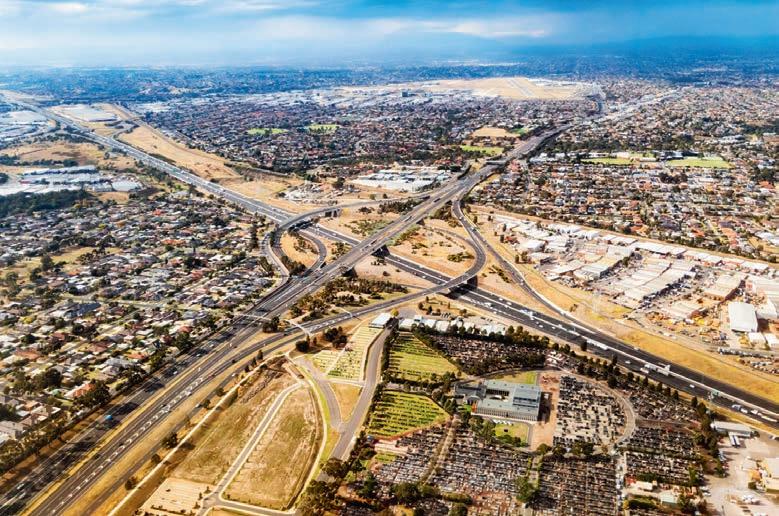
“We’re excited to be part of a transformative project that will change the way people move around Melbourne and deliver positive outcomes for communities and the environment,” says Richard Barrett, chief executive of Aecom’s Australia and New Zealand region.
“Working with the North East Link Program, Acciona and MACA Civil, we look forward to leveraging our diverse skills base, particularly our global sustainability and transportation expertise combined with our digital design capabilities, to develop and deliver this city-shaping project.”
The North Package is one of the North East Link Program’s five major packages.
Major roadworks are set to ease traffic congestion in Melbourne’s north east
The North East Link Program will provide a safe and efficient freeway connection for more than 135,000 vehicles a day, taking 15,000 trucks off busy residential roads in the northeast of greater Melbourne every day.
It will also enhance access to major suburban business and employment centres, improve orbital road connectivity across Melbourne and boost the capacity of the city’s freight network.
The North Package includes the design and construction of the North East Link between M80-Plenty Rd interchange and the north tunnel entrance at Watsonia.
As preferred proponent, Aecom and its partners will work with NELP and project and community stakeholders to develop the final proposal and commence delivery readiness activities.
The works will include new and upgraded freeway, separation of local roads from the freeway, significant earthworks, retaining walls, bridge structures, rail interface works, intelligent transport systems, urban design and landscaping.





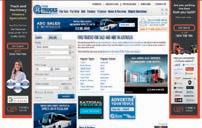

Freight movement through Kyogle and Lismore have had a boost with the opening of two new bridges by the NSW government.
NSW Minister for Regional Transport and Roads Sam Farraway says the new Kyogle bridge replaced an 83-year-old concrete structure that had been operating under a 20-tonne load limit for the past two decades.

“We’ve unveiled a brand new bridge which will be able to better withstand future weather events and support the region for years to come,” Farraway says.
“Further efficiencies will be realised for local freight including diverting timber, dairy and agricultural products away from the Omagh Road route, saving truck drivers a 10-kilometre detour.
“This new larger single span concrete structure, founded on steel driven piles, has been designed and constructed to achieve a 100year design life while improving
flood immunity and safety for local farmers and truck drivers.”
Parliamentary Secretary to the Deputy Premier, Gurmesh Singh, says it’s fantastic to officially open the new $2.6 million Cedar Point Bridge with Kyogle Council Mayor Kylie Thomas.
“The Fixing Country Roads Program is delivering real benefits to regional communities and it is great to be here today to open the bridge alongside Mayor Kylie Thomas,” Singh says.
“After the weather events of this year this new bridge will help build resilience back into this community and ensure our road network remains strong for years to come.”
Thomas says the Cedar Point Bridge is a showcase for what can be achieved through partnership between all tiers of government, the community and industry.
“We’ve been able to achieve an innovative solution, getting the best value for money, increasing the
capacity of local contractors, and maximising the benefit to the local economy from external grant funded projects such as this,” Thomas says.
In the Lismore City Council area, the new $517,000 Keerrong Road Bridge was also officially opened today by Singh and Lismore Mayor, Steve Krieg.
The bridge replaces a flooddamaged culvert that washed away in flooding earlier this year and was jointly funded by the NSW and Australian governments under Disaster Assistance Arrangements for the March 2022 flood event.
Krieg says the opening of the bridge was great news for the community.
“The new bridge will ensure our farmers can get their produce to markets and improves the connectivity across our whole local government area,” Krieg says.
“Importantly, council has ‘built back better’ by improving the resilience of the bridge to flooding.”
A coordinated effort and deep pockets are going to be needed if Victoria’s road and rail network are to be repaired in a timely fashion in the wake of 2022’s devastating floods.
The Victorian Transport Assocation has estimated up to $1 billion of repairs will be required to bring the country’s freight routes back up to speed after the devastation of record rainfall in southeast Australia in October and November.

VTA CEO Peter Anderson says current Victorian budget allocations for road safety, maintenance, repairs and upgrades are already committed to
projects that were in place before the floods, and that significantly more is now needed.
“We estimate between $500 million and $1 billion will be needed to fix our flood devastated transport networks, which includes gazetted routes operators rely on to carry freight,” Anderson says.
Anderson says the extraordinary repair bill needs to be addressed by state and federal governments because, whilst it is mainly state road infrastructure that has been damaged, the impact will be felt nationally.
“We are already seeing evidence of
how national supply chains have been compromised with farmers struggling to get their goods out of regional Victoria to the ports and on to interstate and international markets,” Anderson says.
“The flow-on effect will be felt leading up to Christmas in the form of higher consumer prices and a shortage of supply.”
Anderson says setting aside the impact on supply chains, there is a real likelihood of personal injury and lives lost because of the inevitable spike in accidents damaged roads will be a factor in.
“Our road authorities are doing a magnificent job quarantining motorists from damaged roads, but the size and scale of this event means accidents will unfortunately happen.
“The risk of this is felt most by the road freight industry that is acutely aware of its obligation to its customers and the Australian community to keep our supply chains moving as safely as they can,” Anderson says.
He says there’s a need for rapid evaluation, development of a repair strategy, the qualifying of costs and the creation of a plan to make our regional roads safe and operable as soon as possible to avoid as many potential accidents as possible.
A compact roundabout, the first of its kind to be investigated in South Australia, is being assessed for the intersection of Chalk Hill Road, Olivers Road and Field Street.
This was identified as the highest-risk site of the 21 intersections.
If deemed suitable, it will combine the safety benefits of a roundabout with raised platforms to slow vehicles down as they approach the intersection.
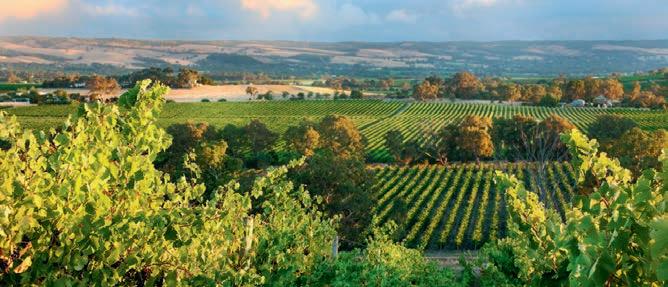
The South Australian government says roads in the McLaren Vale region are set to become safer for both locals and visitors, with safety improvements for 21 intersections being identified through a $4.2 million road safety package.
The Department for Infrastructure and Transport is working collaboratively with the City of Onkaparinga to review
the proposed treatments following the council’s 2021 intersection audit and advocacy efforts.
The locations, proposed treatments and project timing were identified during the audit with innovative solutions being considered to reduce the potential for crashes, particularly relating to trucks and heavy vehicles.
It is also likely to be less costly to build than a conventional roundabout due to its smaller footprint.
Other treatments being considered include:
• Teardrop-shaped islands on side-road approaches, to make drivers more aware that they need to either stop or give way
• Rural Junction Active Warning Signage (RJAWS) which detects when vehicles are approaching an intersection and then activates flashing warning signs to improve driver awareness
• Enhanced warning signs and rumble strips.
Designs are expected to be completed in 2023, with upgrades anticipated to be completed by June 2024.
The VTA says governments must fund up to $1 billion to fix roads and rail affected by floods
The SA government says it is putting $4.2 million into a safety plan for McLaren Vale, including a state-first investigation for heavy vehiclesThe VTA is calling for a rapid response to fixing the state’s roads
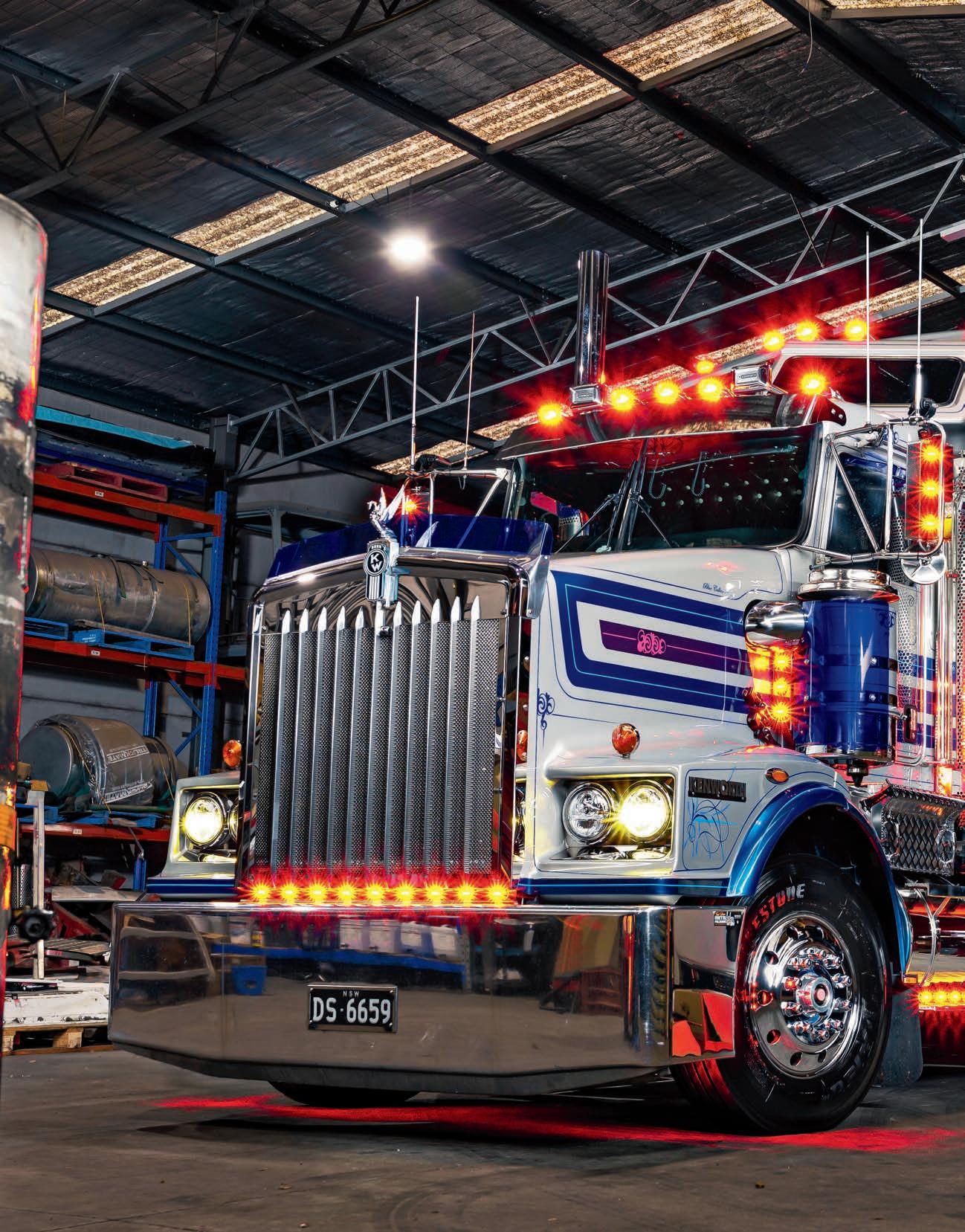
When Nathan Smith went looking for something special for the Winston transport fleet, he settled on a Kenworth T659 as a “surprise” for his Dad
 Words & Images | Warren Aitken
Words & Images | Warren Aitken
Hooked up for photos only. Wouldn’t it be nice if we were allowed this kind of setup though?
Today’s story will start with a ‘thank you’. Very formal I know, but I need to thank Dean and Rose Smith and their son Nathan. I’m thanking them for their time and for allowing me to photograph their trucks.
Winston Express Haulage is one of those family companies that epitomises ‘family’ values. They have stunning trucks, kept in mint condition, driven by happy employees and they do it all for the love of the job and the honour of the company, which is great for them, but terrible for me because the company isn’t interested in attention. They like flying below the radar and just doing a good job for the sake of doing a good job. Again, an admirable trait.
However, when their trucks look so damn good you know sooner or later annoying people like me are going to want to photograph them. I admit I have been a constant social media thorn in the side of young Nathan Smith, ever since I spotted one of the Winston Mercedes-Benz rigids on Facebook – it looked amazing. Hence, I reached out to see if they would be keen on a story.
The media-shy family were a little reluctant, I appreciated that and let it be. Then, a little while later Nathan rocked up to the 2018 Kenworth Klassic in a stunning new Kenworth 2.8 King Cab. I pestered him again – how could I not? Their K200 was spectacular! Sadly, same result.

Then social media lit up with a MercedesBenz Actros celebrating Winston Express Haulage’s 30th anniversary and I just had to push again. There was a little softening, but still the family weren’t interested in attention.
As I mentioned, they weren’t averse to it they just operate the way they do purely because that’s the ethos of those that built and continue to build the company. I had to respect that.
Then Nathan rolled out the stunning T659 you see before you. It was the truck that broke the camel’s back for me. This new T659 looked exquisite. How could I not badger them again? If I thought bribery would have worked, I would have stooped to that as well. Thankfully, be it out of appreciation for my tenacity or just frustration at my consistency, I finally got
around with a flat roof
You can’t tow a
my foot in the door. More importantly for you guys, I got my cameras in the shed. Hence, I owe a huge thankyou to the Smith family for sitting down and introducing me to the story behind a long running family business and their new flagship T659.
The story begins with Dean Smith. Dean’s trucking addiction came courtesy of his uncle Harry. School holidays were spent in Dorrigo in northern NSW where his uncle was pulling loads out of the local abattoir for Roadmaster, hanging meat.
In true child labour style Dean remembers those times fondly. “My uncle used to gee me up, telling me, ‘I bet you can’t unload this truck by yourself’ and I’m like ‘I bet I f#@kin can’,” laughs Dean.
“Little did I realise he was just getting out of the work.”
Those school holiday experiences created the passion for our industry and young Dean soon found afterschool and weekend work in the wash bay of local Castle Hill company Kentwell Sand & Soil where he would wash and polish the company trucks.
“I also had a mate, Steve Robertson, who had a Mack and carted for SPD and Streets. I’d wash and grease his truck every Saturday as well,” Dean recalls. “I’d spend all day washing, putting chrome hubcaps on, stuff like that.” All of this was before Dean had even graduated from P plates.
Instead of going straight into transport upon completion of school, Dean chose to study more and gained a diploma in business management. Looking back now I would say this was one of his smartest decisions. Not because of the assistance it would give him in business, but because the diploma would get him a trainee role at Grace Removals and his time there would introduce him to Rose, his future wife and mother of his three children.
“He said hello to me one day at work and then rung up and asked me out,” Rose recalls. She laughs when she informs me of her response: “I said ‘no’ several times, then eventually said ‘yes’.” Persistence and resilience are two things learnt in all those after school jobs.
Another of Winston Haulages big outings is the annual charity fund-raising Sydney Convoy for Kids where they are major supporters

That was back in 1989. Dean moved on from Grace to a transport supervisor role with Comet. In 1990 Dean made the call to buy his own truck.
“While there (at Comet) I decided it was the time for me to go out on my own,” he says. “I found a truck I liked so I bought it. It was delivering magazines at night and paint during the day. One truck went to two, went to three, went to four – that was April 1990. Here we are in 2022 and we’ve got 25 prime movers, 30 rigids and a heap of trailers.”
Dean’s summation is extremely humble and a lot more simplified and succinct than is warranted. It fails to pay homage to the 30 years of effort and strong work ethic that epitomises the company. So allow me to elaborate. Dean and Rose ran that first
Hino for nearly three years. It would be delivering day and night all week and doing newspapers on the weekends.
“I used to go with Dean on a Saturday night,” Rose says. “I’d be curled up in the truck mapping out the deliveries while Dean was loading the newspapers in the back.” I’m not sure my better half would count that as a great date night but it didn’t faze Rose. Along with helping to do the newspapers, Rose also found herself heading in on Fridays to help with the invoicing and accounts.
As more work turned up and more trucks added that role would become Rose’s fulltime gig.
Winston Express Haulage’s first truck was a brand new Hino. It was bought specifically to cater for the work Dean had found. The six-tonne Hino was perfect for the job and it was a truck Dean knew well.
“We had Hinos at the removal company and they were great,” Dean says. “They had

them at Comet as well. We actually had one at Comet that played up one day and turned out it had been running around since new and had never had an oil change, filters done, nothing. They changed the oil, replaced the filters and it was off. It was a solid truck.”
That was good enough to convince Dean that Hino was what he needed for his first truck. Dean also made sure that first truck would set the visual standard the company would become renowned for. While the Winston lines and colours didn’t start appearing until the second truck hit the road, the first one had as much bling as he could fit on a Hino – even chrome rims. Yep, chrome rims on a 1990 Hino rigid. That’s not something you see every day.
“I just wanted it to be professional, I wanted it to look good and look smart,” Dean says. “It was about being professional and portraying the right image. Meeting and forming a lifelong friendship with Brad Hammond, a paper truck operator

known for his immaculate presentation of his equipment and professionalism didn’t help!”
That first Hino definitely did that and led to steady growth within the company. Magazines and paint were soon joined by grocery deliveries and then newspapers as well. As the one truck became two and two became three, Dean was also building relationships with other companies that would see the company grow from local deliveries to intra and interstate work.
“We had a long establishment with Hills Transport,” Dean explains. “We were probably there about 15 years before they closed down.”
That business relationship saw Dean put his first ‘big’ rigid on the road; a Scania that would run to Dubbo five nights a week. His first prime mover was towing for Hills, as was Winston Express’ first B-double. It’s worth noting as well that Dean started out with the intent of owning one truck, just one. That’s all.
Day or Night the 659 just shines
It rides like a
Take note of the licence plates – they all start with ‘DS 66’. That’s Dean Smith and his birth year; a little extra special in every truck
He married Rose when it was just the one truck. That soon grew … and grew. Rose accepted that, but she also laid down the law in regards to prime movers. “I didn’t want any prime movers; bigger trucks meant bigger bills,” Rose says. “Then we had a valued customer ask us to put on a prime mover, just one. Within 12 months we had eight!”
Attention to detail is a factor in all the Winston trucks and trailers. Check out the tarp job
It was inevitable though, the work ethic of the entire family as well the working environment created at Winston’s meant growing was inevitable. They now have trucks of almost every possible size and configuration. They have customers in almost every arena, from express trailer hitches to air freight deliveries, building supplies to underlay distribution.
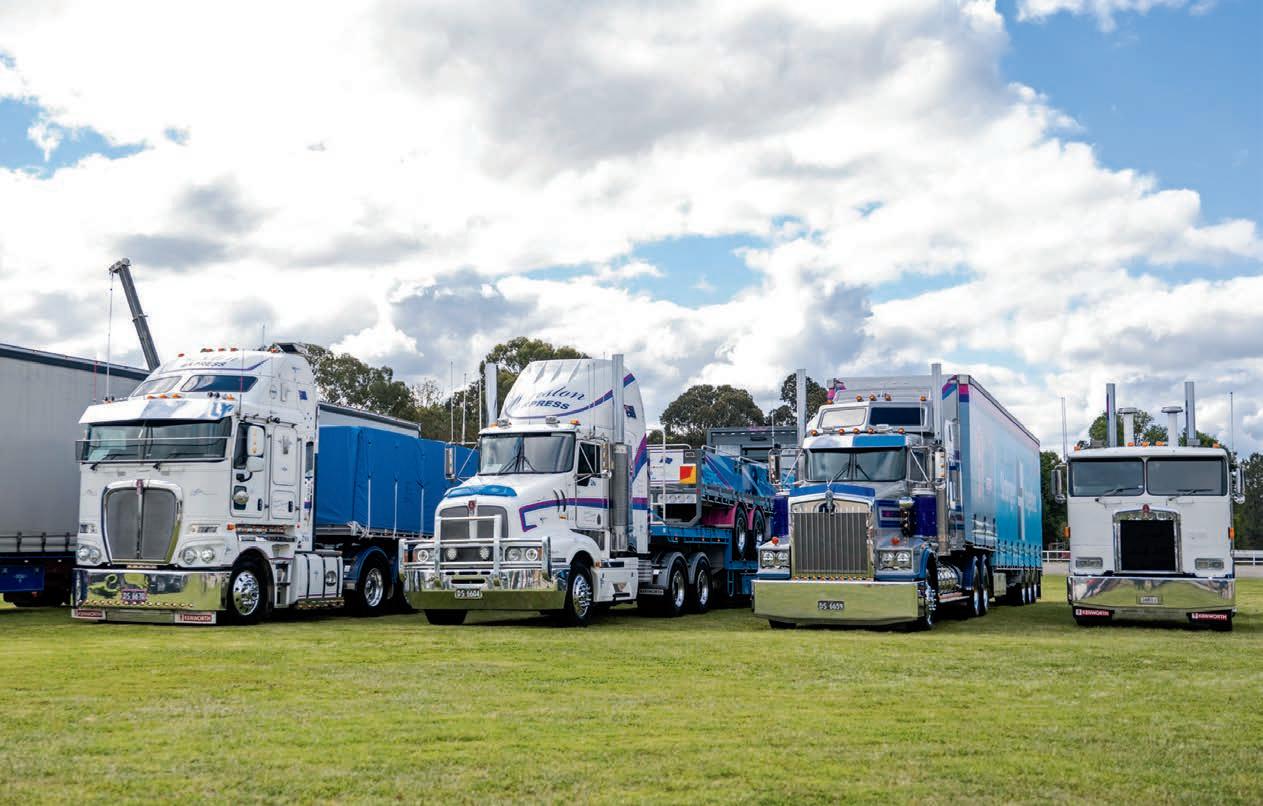
Winston Express is the antithesis of ‘all your eggs in one basket’. Throw a cattle trailer behind the 659 and you’d have just about everything covered. A side note here for all those trying to get into our wonderful industry – a company like Winston Express Haulage would be the perfect place to start. You will gain experience in a wider than wide range of freight options.
Let’s get back to the story so we can find out about this stunning T659. To get to that we must introduce the next pillar of the Winston Express story, Nathan Smith. Nathan pretty much has trucking implanted into his DNA, particularly Winston Trucks. I know that sounds rather cliché, but I have plenty of testimonies from his mother Rose to back it up.
Exhibit A: “I was pulled up at a set of lights one day. One of our trucks pulled up beside me. Nathan was asleep in the back (two and a half years old). When the truck took off Nathan suddenly bolted awake and yelled out, ‘Where’s Steve?’ I was like are you friggin’ kiddin’ me kid, you were dead asleep!” It is what you’d expect though, he grew up his father’s shadow and learned his respect and work ethic from him. Like his father he spent his after school and weekends cleaning, polishing and adding shiny stuff to trucks,” Rose recalls.
As per his father, Nathan didn’t go straight into Winston Express Haulage out of school, though he did stick closely to the transport

The 50-inch bunk makes living on the road a lot easier for Nathan
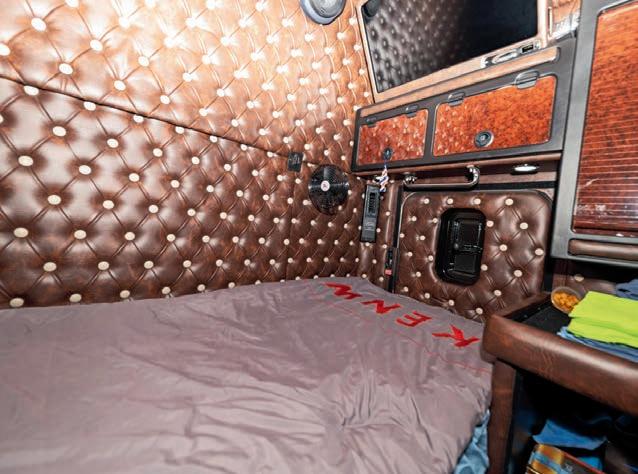
industry. Body building, not the shiny, fluoro thong kind of body building, I mean the vehicle body building kind of work. Having spent his school years cleaning, greasing and blinging up trucks, along with a weekend job at a local steel shop, it kind of seems fitting that when he needed a trade Nathan would choose one that allowed his mechanical and creative aptitude to flourish.
Nathan spent four years at Grant Engineering building and repairing truck and tipper bodies. This was his full time job but Winston Express Haulage always remained a part of Nathan’s work/work balance. I know it should be work/life balance, but how many of us have that? Anyway, Nathan could still be found in weekends working behind the wheel or under the chassis of a Winston truck and in 2016 he jumped back into the family business fulltime.
“I’d do a bit of driving, a bit in the workshop, a bit of driving.” That’s how Nathan summed up his role within the company. Like his father’s summation at the start of my story, it’s a very humble simplified version. A more accurate representation would be Nathan was driving, overseeing maintenance, operating as fleet manager, helping in the office and when the company moved to their new St Marys depot, he also started a customising wing of the company to utilise the skills he had acquired throughout his apprenticeship.
The Winston team is a huge supporters of charity, Healthy Heads Trucks & Sheds being a big recipient

I didn’t want any prime movers;

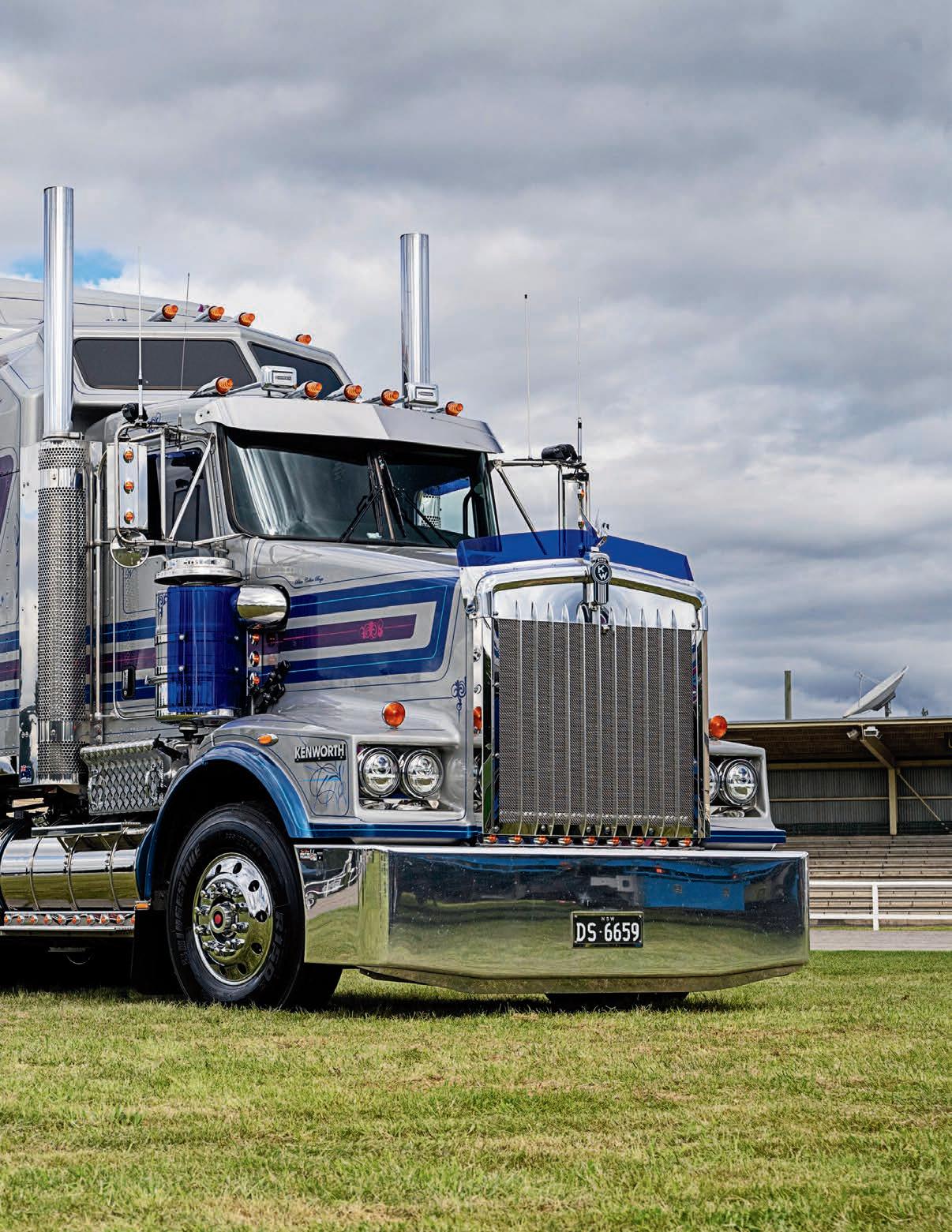

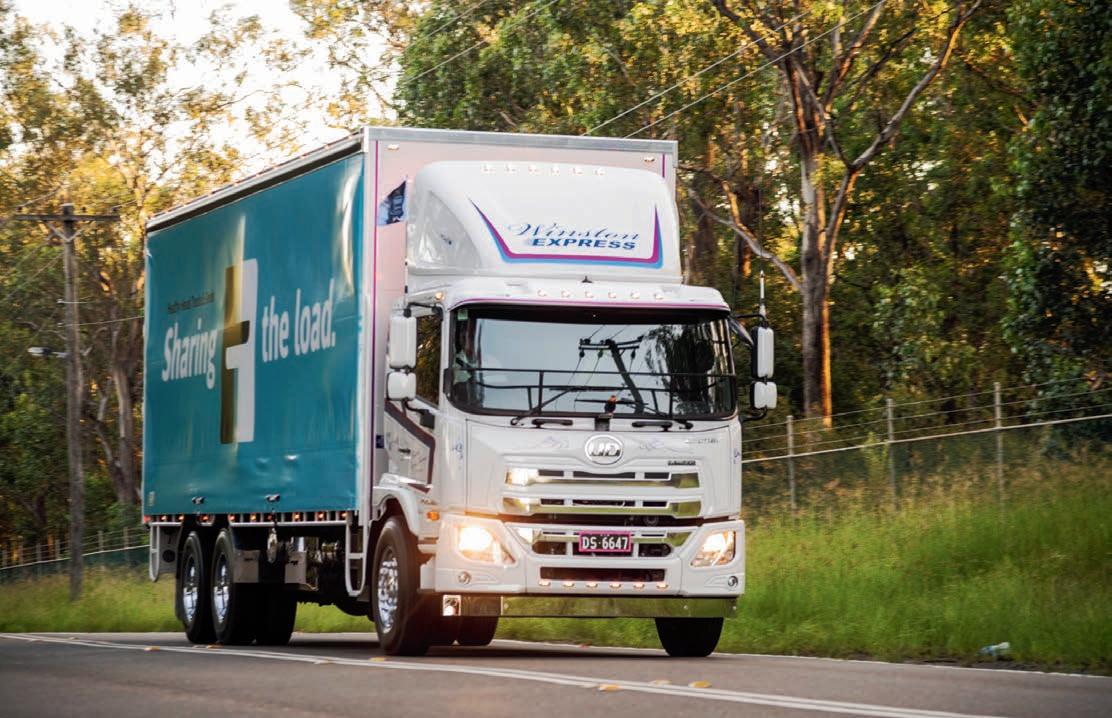 End of the week and time to reshine. Seems pride in your ride is a Winston way of life
End of the week and time to reshine. Seems pride in your ride is a Winston way of life
“We were doing all our tank skirts, deck plates … lights,” Nathan tells me. “We had our own plasma cutting and were doing everything.”
I have now introduced you to the main protagonists of today’s story. Now we should get onto the big silver T659 that you see in the pages before you. I am sure more than a few of you are thinking, ‘That doesn’t seem a practical truck for express work’, and you would be right. If some of you are also thinking, ‘Why would Dean buy that?’ Well, I can answer that as well. He didn’t, in fact it was a ‘surprise’ from his son.
The Kenworth itself wasn’t a surprise. The company runs several Kenworths now. It did take a fair while to get one into the fleet as Dean was running almost everything else. Western Stars, Freightliners, MANs, Mercedes-Benz – you name it.

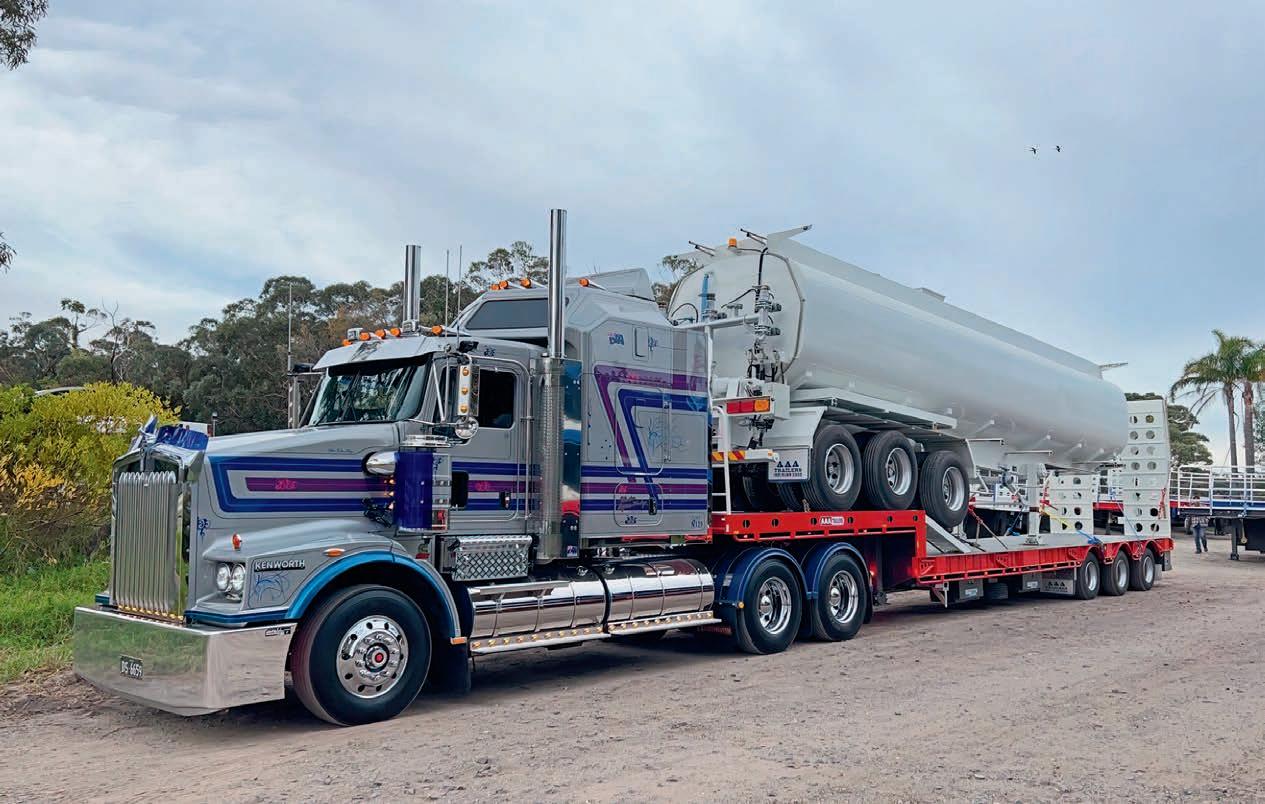
The first Kenworth never joined the fleet until 2011 and that was a second hand T604. The truck had come when they picked up work from a retiring truckie. He had owned the truck since day one so it was immaculate. Between the performance of the 604 and Nathan’s influence as fleet manager it didn’t take long before the first new one arrived.
Nathan had worked on several during his apprenticeship and knew the product. The first new one was a 2016 T409. After the 409 came a few K200s and a few T610s. Therefore, a new Kenworth in the fleet was not the surprise side of things. The surprise came in the model and who it was for.
In 2020 the company celebrated its 30th anniversary, a major milestone. As a way of celebrating, Nathan and Rose had purchased and pimped out a special Mercedes-Benz Actros for the occasion. “We were organising a surprise truck for Dean, a Mercedes. Dean knew nothing about it,” Rose tells me. “Then after that happened Nathan just sort of said to Dean and I, ‘By the way, I’ve sort of got this 659 as a surprise as well.’ I asked who for and he said ‘for me’. That was really all we knew.”
As Rose points out though, with Nathan’s role as fleet manager he orders all the trucks anyway. He knows exactly what needs
Nathan included a couple of his own photos that show exactly how varied the Winston team isto be turned over and when, so ordering new trucks isn’t a surprise. Ordering a 659 however and doing it up differently, that was a bit of a surprise.
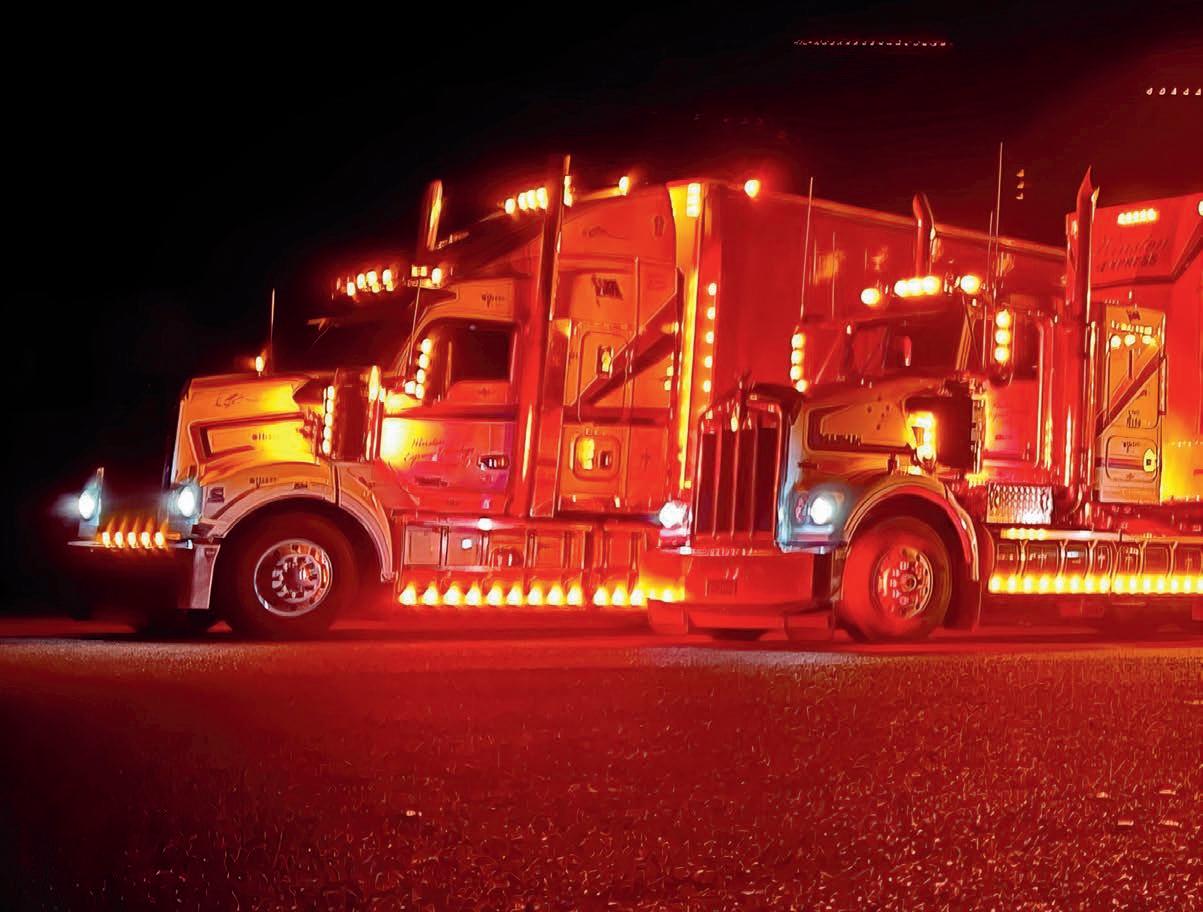
A T659 is not your typical express truck. “He didn’t tell us too much, we kept hearing from other people that Nathan’s new truck is going to be pretty cool and we figured it would be up there,” Rose says, although she is quick to point out the obvious. “As much as Dean says,

‘Aww, it’s impractical and whatever’, Nathan only learned from his father.”
Rose laughs as she remembers when she and Dean were just starting out and times were pretty tough, she would often get bills for bling, nut covers and alloy wheels. When she questioned it, Dean was adamant it was needed to uphold the company image.
That explains the ‘wow’ impact of the new truck, but we have to go directly to the source to explain why a 659.
“I didn’t want a 9-0 like everyone else and
I thought a C509 might be a bit big,” Nathan laughs.
A 659 was a different choice and catered to Nathan’s other goal. “I was sick of splitting up B-doubles all the time. I just wanted something that couldn’t tow a B-double.” Well, problem solved.
There was also a slight hiccup in the Kenworth being a 30th anniversary truck –COVID-19. Yes, that dreaded C word struck in 2020 and the stunning T659 actually became a 31st anniversary truck. COVID-19 held up things, as well as the fact the truck came off line the wrong colour. Not just a different shade of silver, a whole different colour.
Once that was sorted the next hurdle appeared. Nathan had ordered the Kenworth with a 50-inch flat roof bunk. The intent had been to fit an old Rudkin Wiley Roof Scoop only to find that a fire at the factory had destroyed the mould. That’s why the keen-eyed observer will note that this is the only T659 with an Aero 1 roof on it. “Well, you can’t tow a tautliner around with a flat roof,” Nathan jokes.
Fifteen months after the original ‘surprise truck’ was due, Nathan finally hooked up to
his custom 48ft trailer and headed back out on the road. It may not be the most practical for a general freight company but it ticks all the boxes for Nathan.
“It rides like a dream” he says. “It might be a bit longer than some others but after a couple of weeks you get used to it and can put it anywhere.”
I really should stop calling it the surprise truck. The more I’ve learnt about the Smiths and the entire Winston Express Haulage team the less I am surprised. The truck looks outstanding because the guys that specced it love their trucks. The trailer carries the names of amazing organisations that Winston’s proudly support every day because that’s who they are.
The Kenworth T659 does work specific to its strengths and advantages because the team know what they are doing. The only real surprise is how this small family outfit has flown under the radar for so long. They’ll hate me saying it, but companies like this need to be noted.
Well done to all the team at Winston’s and thank you for letting me shoot your stunning T659.
Not exactly factory fitted, but Nathan has spent his whole life fitting extra to the company trucks. Just so they look this good at night
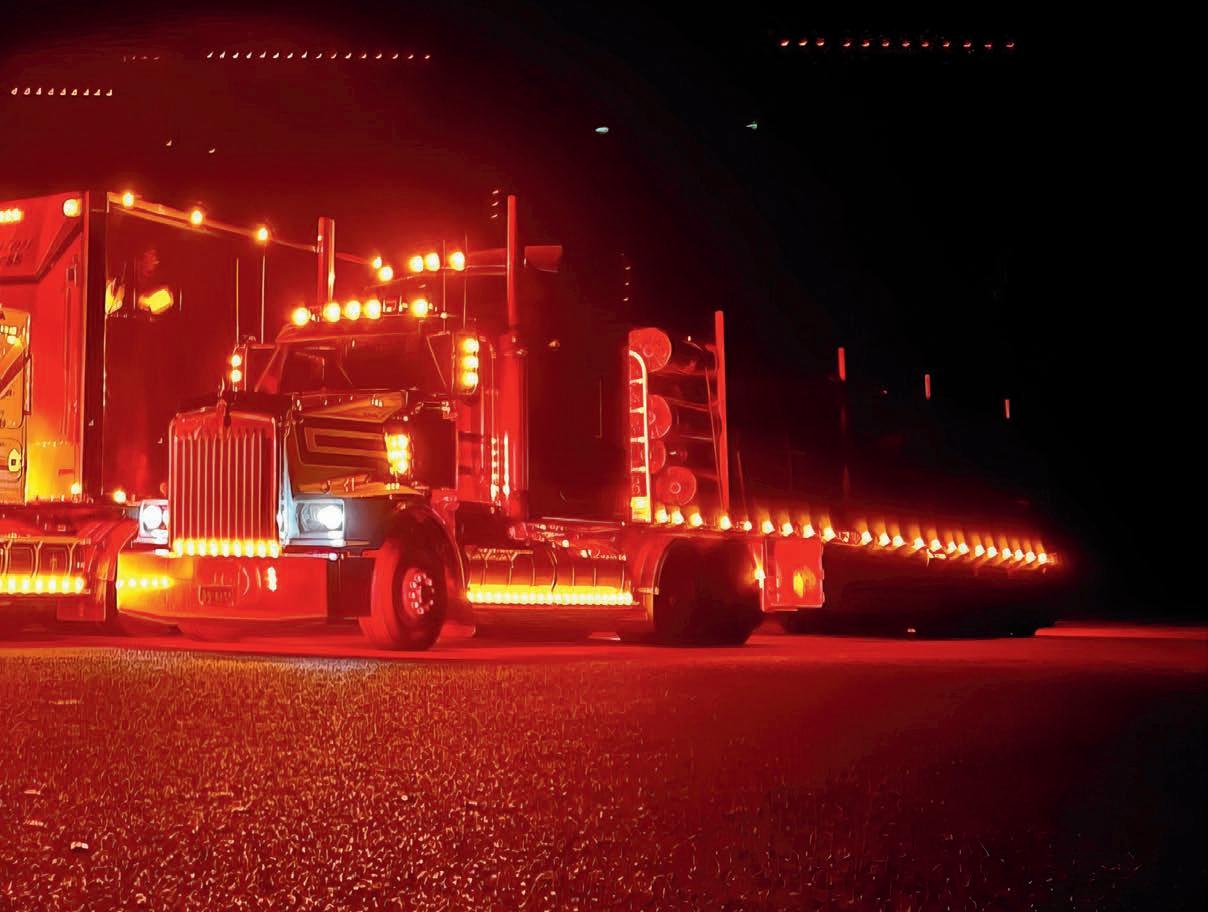

Hundreds of truckies and truck lovers gathered in Gympie recently for the fourth running of Matty Hillcoat’s Truckies Day Out. The event, created in memory of a son lost to Sudden Infant Death Syndrome, grows bigger every year as the trucking community comes out to raise money and remember a little boy taken too soon.

Always a man looking for attention is B&K driver Bryce McGaughy. He spotted the camera and made his presence felt
Ifinally made it! Matty Hillcoat’s Truckies’ Day Out has finally been knocked off my bucket list!
I have been wanting to attend this increasingly popular event for a few years now. I missed it in 2017, 2018 and 2019 due to an uncontrollable V8 Supercar addiction (the Bathurst 1000) and then I missed it in 2020 and 2021 due to the world going pandemic crazy and everything getting cancelled. However, 2022 saw the return of the Matty Hillcoat’s Truckies Day Out and I made it.
It was the fourth running of this increasingly popular day and I obviously wasn’t the only one pleased to see it back. Record crowds and a record number of trucks rolled into town to show off their rigs,
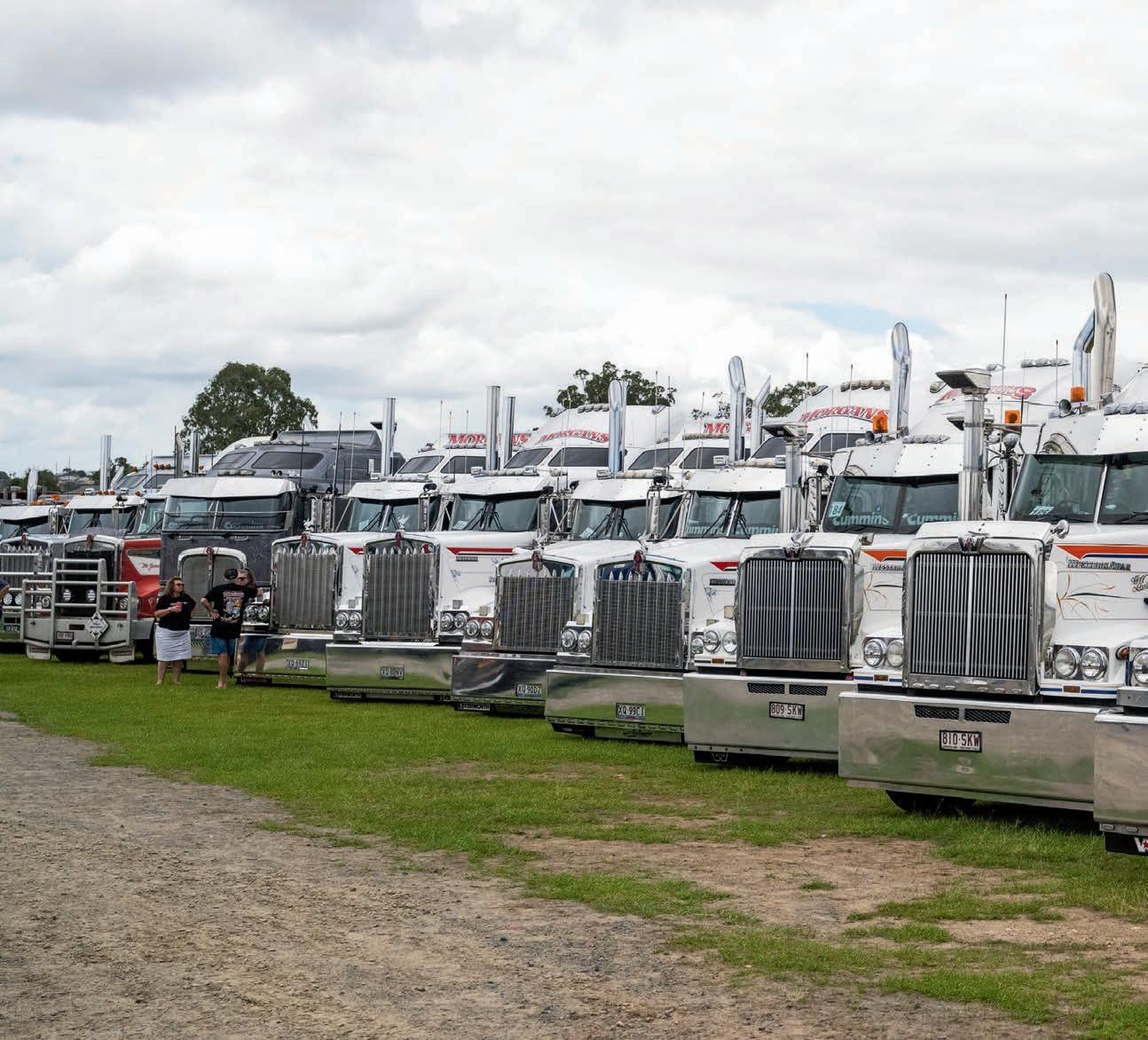
relax for the day and raise such much needed funds for a very important cause.
For those of you unaware of the Matty Hillcoat’s Truckies’ Day Out, let me bring you up to speed. First let’s talk location.
Just north of Brisbane in the heart of the Wide Bay-Burnett Region you will find the town of Gympie. The Gympie area is famous for it’s nuts and it’s Gympie Muster Music Festival. Random fact here, Gympie was originally called Nashville. I’m serious, up until 1868. It had been named after James Nash, a dude that discovered gold there.
Gympie is also a town that has been the victim of repeated with catastrophic flooding over the past few years. Like all tough country towns though the community bands together and keeps fighting on. It’s this kind of community spirit that will segue me into
Morgan Transport fleet tied for the Largest Fleet trophy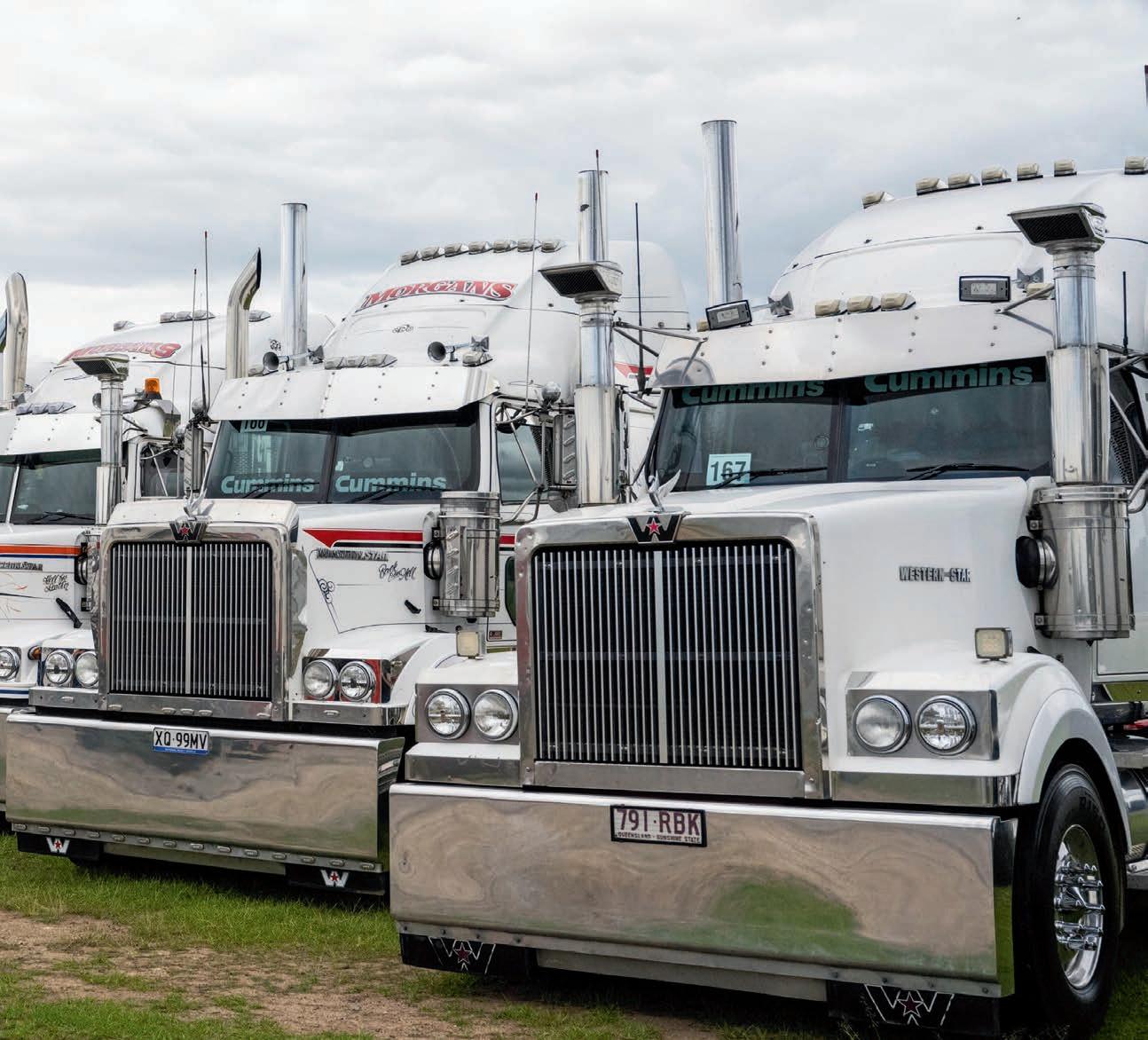

I just had to capture this custom-made chair for Ben and Kasey of B&K Haulage

the motivation behind the Matty Hillcoat’s Truckies’ Day Out.
Unfortunately, the story behind this fantastic fundraising event is not one anyone would like to experience. In 2011 Dan and Kristine Hillcoat’s second son Matty passed away in his sleep. Matty was just four months old. This bright bubbly young boy was one of over a thousand kids per year that die from sudden infant death syndrome (SIDS) worldwide. It is every parent’s worst nightmare and there is
no way I could ever comprehend that kind of experience.
The same year that Dan and Kristine lost Matty, a Geelong-based charity called River's Gift began. Started by a family that went through the same nightmare as the Hillcoats, River's Gift is now Australia’s solely SIDS focused charity and the leading source of funding for SIDS research.
Dan and Kris aligned themselves with the charity and participated in much needed fundraising events. In 2018 they decided to organise a truck show as a means of raising much needed funds for SIDS research.
Dan Hillcoat has grown up surrounded by trucks, so it seemed a logical avenue. The difference with this truck show was Dan and Kris wanted it to be more than just a truck show, they wanted to make a whole day of it. They wanted to get the community involved, not just the trucking community but the entire community.
The inaugural show back in 2017 roped in
Corbet’s Group from Gympie put on a hell of a show by themselves, picking up second place in the Best Fleet category and tying for first in the Largest Fleet
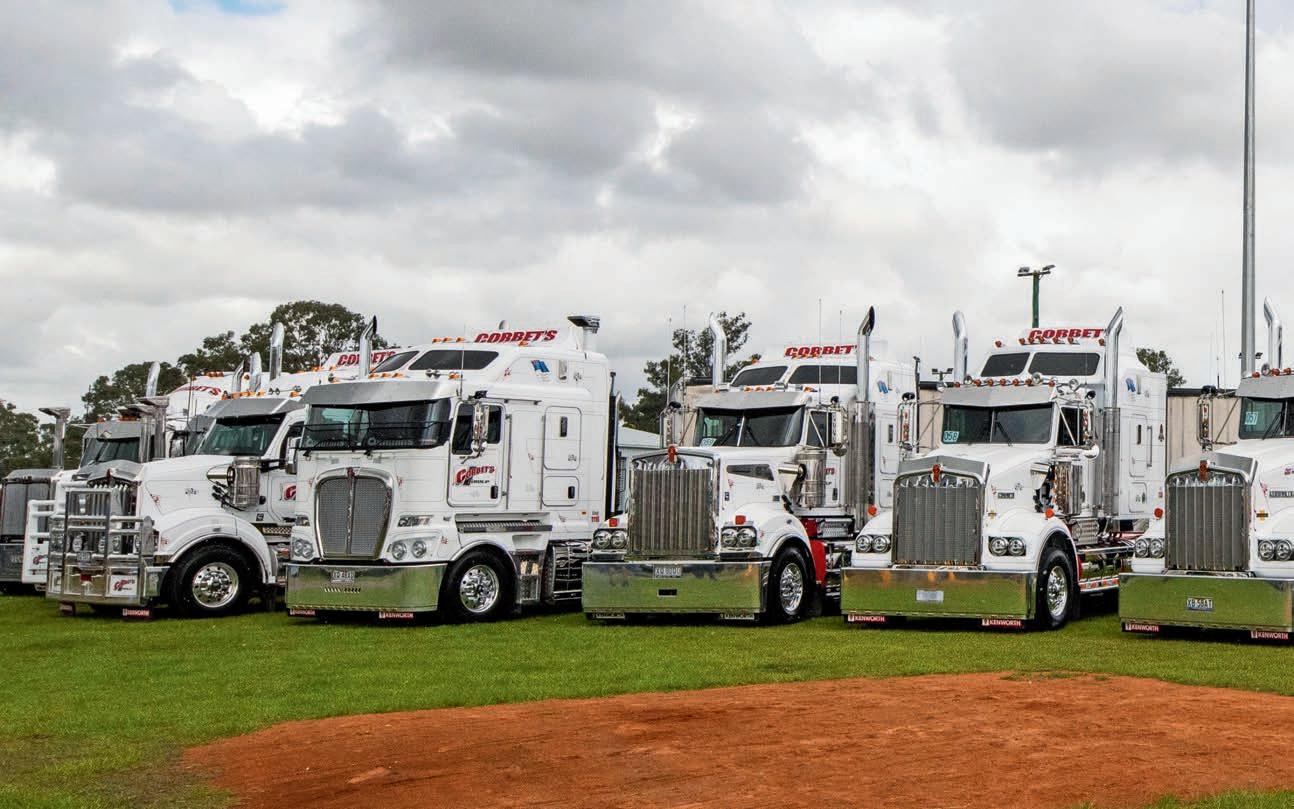


It’s not a show without Watego & Sons Optimus Prime, which added another People’s Favourite trophy to Marshall’s pool room
A big thank you to Glenn, Gerry, Heidi and Owen from the Gympie Volunteer First Aid Services for their work throughout the day Close to the action. The parade around the grounds was well attended

Cornwall Logging’s Scania R 620 took out 2nd place in the Best of the Rest Cab-over category
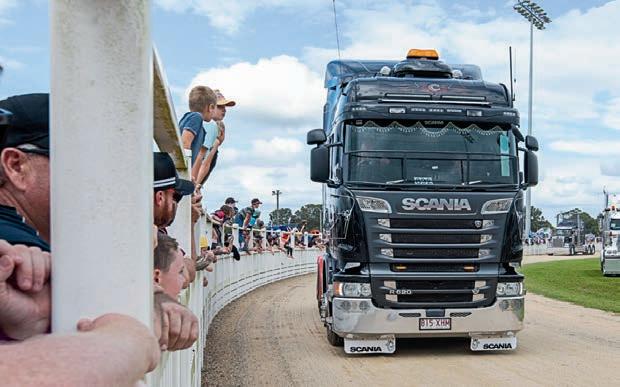
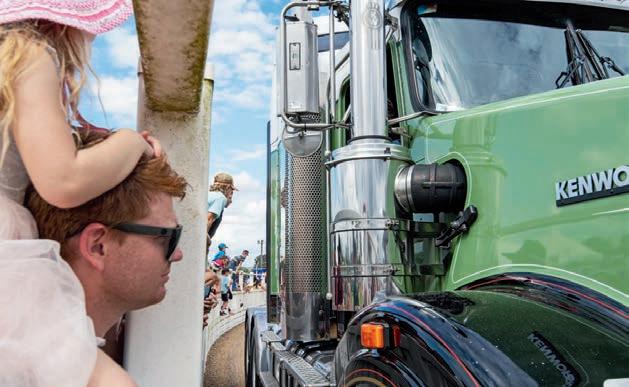

Mel Lake gets a video of hubby Mick firing up ‘Filthy’, the winner of the Best Custom Truck award

My pick for one of the coolest looking trucks was this fresh on-the-road Mack for Mackay and Sons House Removals and Demolition



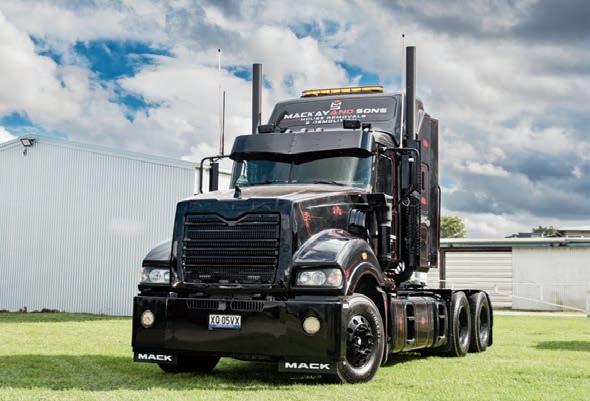

Susan, Shelley and Sarah were out early checking the details on the long list of registrations
This driver had made an extension cord, allowing some kids to toot the horn. Understandably, it was well used
I was lucky enough to grab a shot of John Carrol and Tristan Carrol with their amazing rebuilt project – a 1987 Mercedes-Benz
From left: Kev, Linden, Chris, Sharnee and Tristan stand proudly in front of an eclectic range of tow trucks

nearly 60 trucks and raised over $22,000. This year saw in excess of 150 registered for judging, raising more than $90,000.
With the explaining all done and dusted, does anyone care to hear how the show was for me? Well, firstly full credit to Mother Nature because it was an absolute pearler of a day for the show. My assistant and I arrived nice and early in order to be well positioned to check out the trucks rolling in. Unfortunately, access was denied as the big horsepower units weren’t able to enter the Gympie Showgrounds until the four-legged horsepower variants had finished with the racetrack.
Once we were in though there was plenty of on-track action. I admit it took me a while
to separate myself from the large consortium of gleaming trucks, but when I did I was not short of entertainment. I spent a fair bit of time watching the ladies and gentlemen of the tractor pull club doing their bit. There was a couple of young ladies that were really ‘givin’ it the jandal’ (which translates in Australian to ‘putting pedal to the metal’).
If trucks and tractors weren’t enough there was a massive collection of old machinery. That area seemed to be an attraction for the more senior attendees. It seems if a machine doesn’t have Bluetooth capabilities, then people aren’t interested.
At the other end of the spectrum the young ones had oodles of opportunities to have fun. Under the big tent there was a constant
The Clayton’s Towing crew.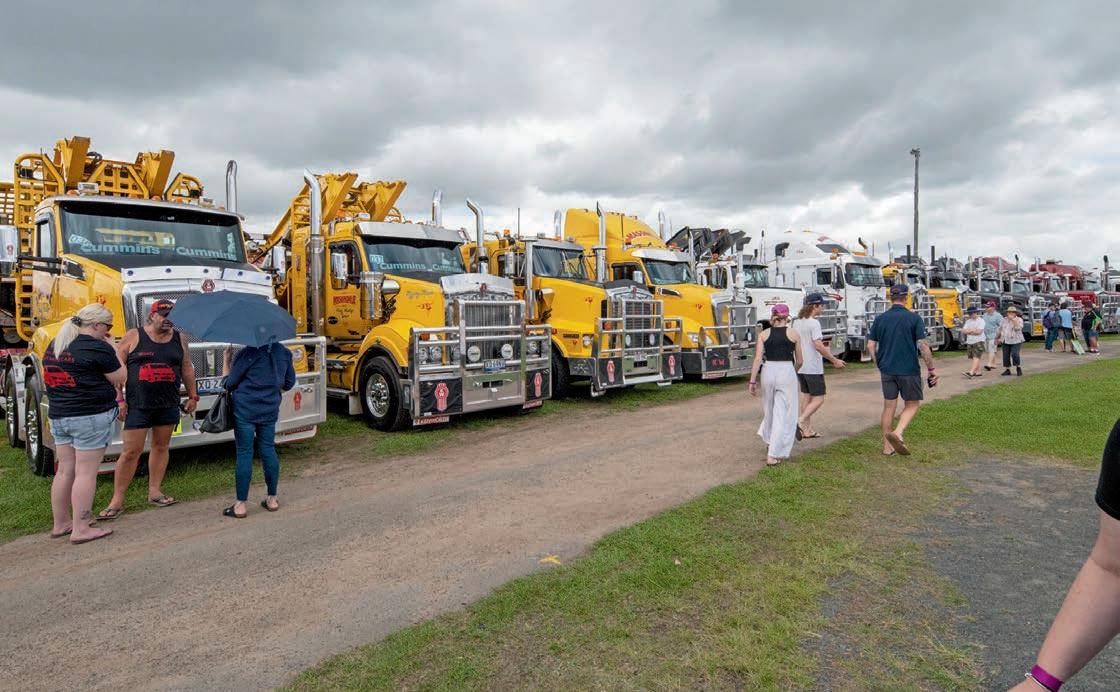

Queensland House Removers brought their 2021 Mack Anthem along, taking out third place in Best Mack section
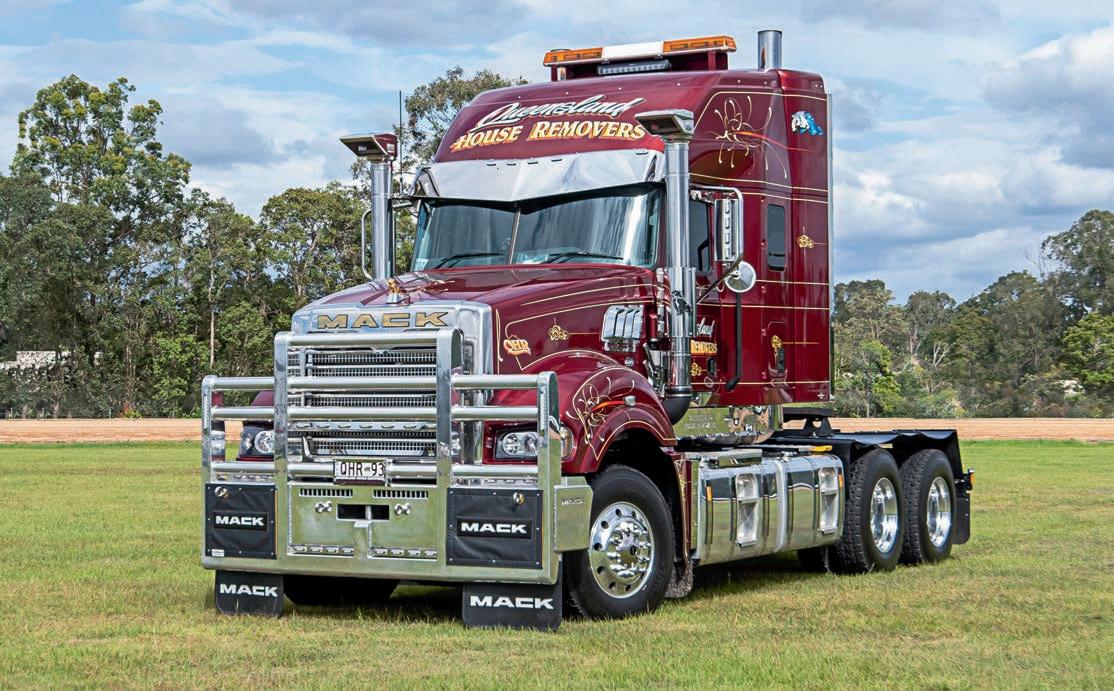

Demolition trucks don’t get much nicer than the Benz and Fuso of Allcoast Group. Zac Weir (second from left), seen here with Briee Jordan, drives the 2017 Benz. Shaun Danger (right) drives the brand new Fuso, whose owner is Joe Macarlino (second from right)


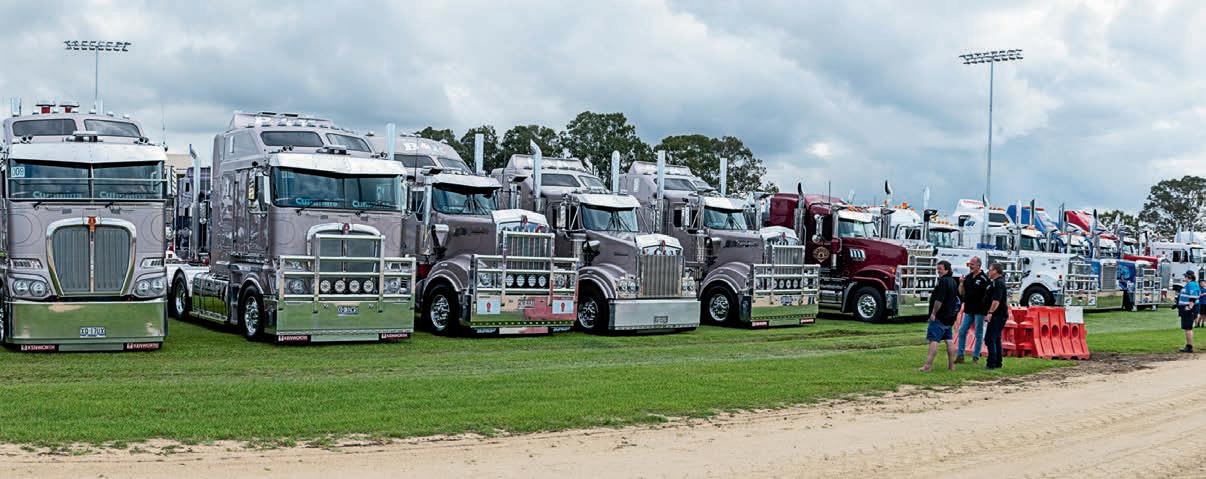

Winner of the Best DAF went to Cornwall Logging’s stunning 2019 XF105

stream of entrants completing colouring competitions. The very flexible and funny Crackup Sisters had several performances. It was a kids show but it was still worth checking out. Those ladies were great for a laugh.
Back outside the tent there was literally a carnival going on, with all manner of rides and games. You could make yourself sick in a variety of ways. I can’t not mention the pig racing either, if only because it was one of the more disappointing aspects of the event. Try as I might I could not find any app taking bets on it, nor could I find any of the vendors willing to roast the losing pigs. Sure, the kids had a ball naming them and watching them race, but I made no money and ended up with no bacon either.
While the trucks were the centrepiece of the show, for most of the day they are the static displays. That was until around 3pm when the inside of the showgrounds opened up.
When the first show started the idea was for the trucks to do a parade lap around the racetrack so the crowds could hang of the fences and wave to all the truckies. That was great when the show started. With the large number of trucks this year though, the racetrack was nowhere near long enough for this. In fact it was bumper to bumper before half the trucks made it in.
I’m not sure which ingenious truckie took
the reins, but the parade started a kind of Archimedean spiral, allowing all the trucks to get a turn entertaining the crowds. The spiral eventually fell apart and the grounds look like the setting for the world’s most expensive demolition derby before the group was parked up in the middle for plenty of selfies.
While I had to pull the pin and return home to try and catch the Bathurst 1000 Top Ten Shootout, the Matty Hillcoat’s Truckies’ Day Out carried on well into the night. Many truckers hung around to enjoy a relaxing catchup and participate in the light show as well. I was a bit disappointed I missed the prize giving as the trophies are another feature that makes this day stand out.
All in all, I’m extremely glad I finally made it to the Matty Hillcoat’s Truckies’ Day Out. I’m not just saying that because the Top Ten shootout got rained off. This event is still very young in the truck show world and it has the potential to become one of those must-attend events.
There is something for everyone. It’s a family friendly event raising funds for a very important cause. I can’t wait to attend next year’s show and, fingers crossed, by then they’ll have a bookie and butcher on hand for the pig racing.
Winner
A big thumbs-up to Brock and the team from RTE who rocked up with their 1997 T900, which scored second place in the Best Kenworth category
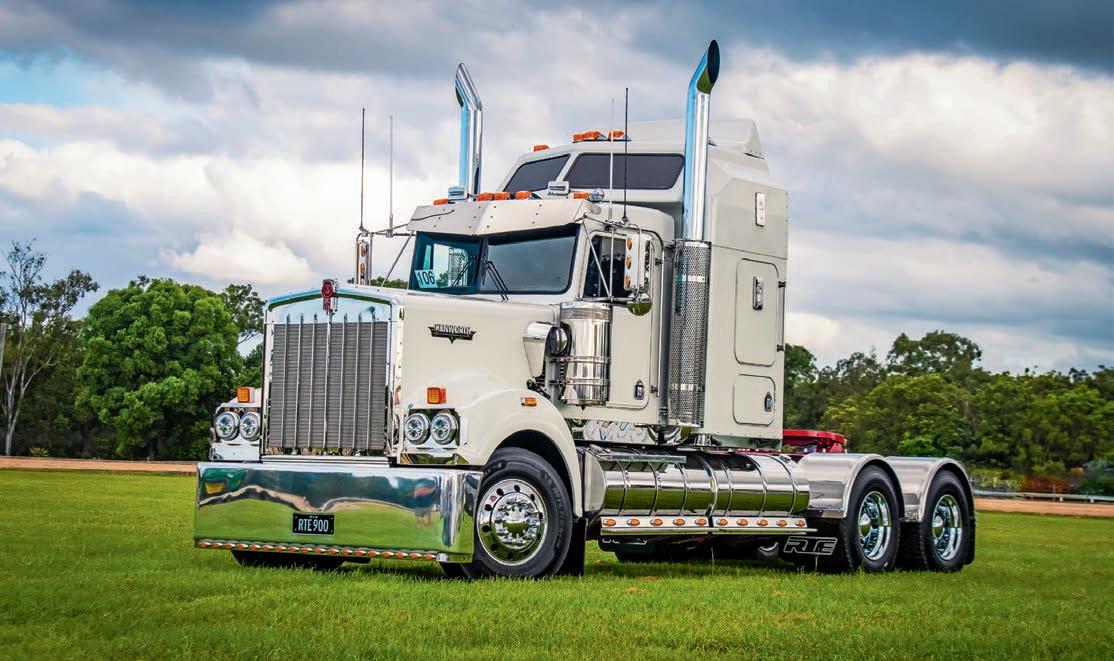

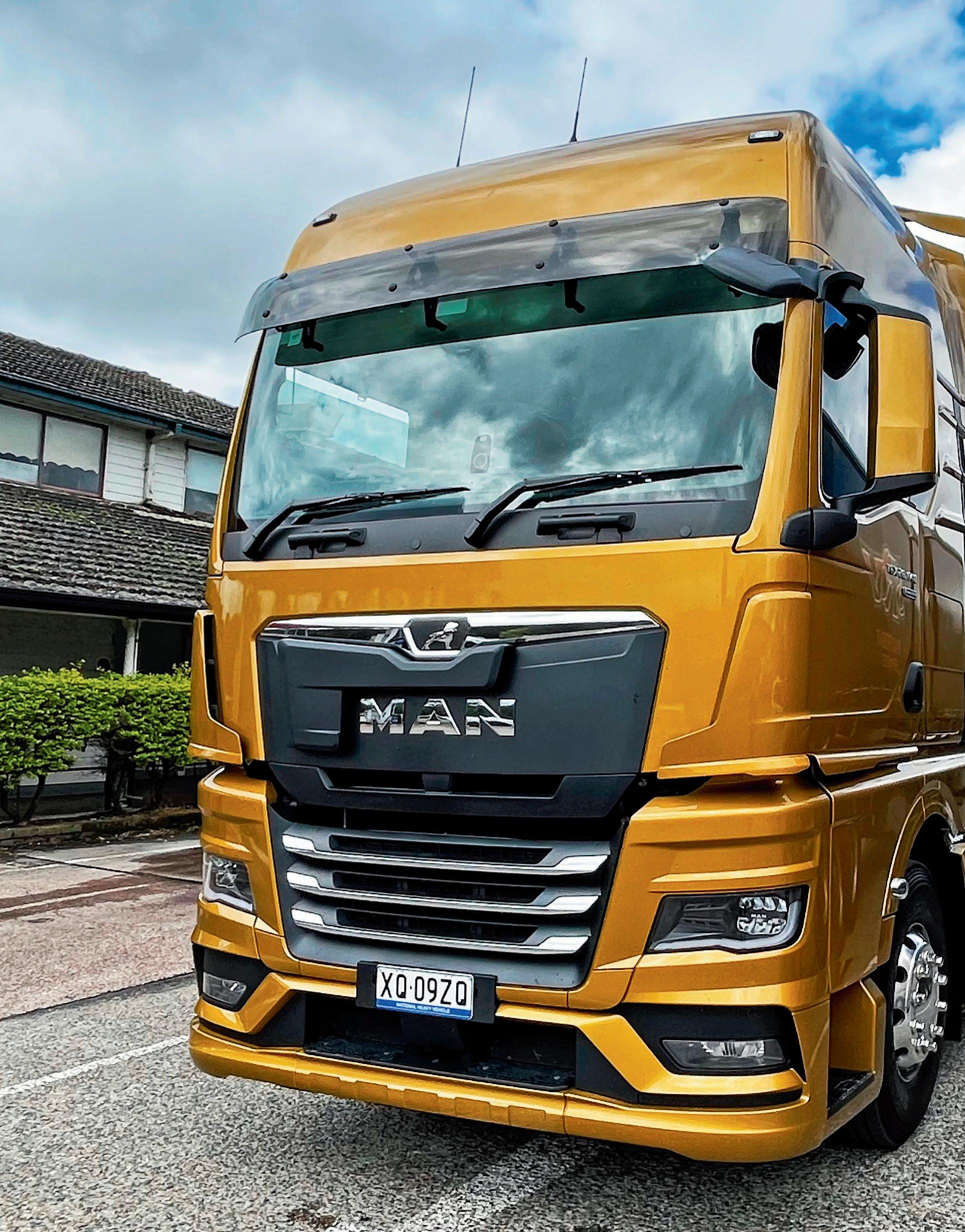
The latest addition to the local cab-over truck market has been delivered by Penske Australia in the form of an overhauled range of MAN models from Munich
 Words | Steve Brooks
Words | Steve Brooks

MAN among men. The cab-over market is incredibly competitive but MAN’s opportunities are nowadays better than ever
So often over so many years, MAN has been a case of desire outstripping deed. Simply, more hopes than highlights. Still, there’s no question that throughout the brand’s long association with the Australian market, there have been tasks and times when the German stalwart has notched up notable success in a wide range of roles. In specialised vocational and off-road roles, for instance, MAN’s achievements are considerable while most recently, its high-profile presence in Australian military applications was achieved after a highly competitive and tediously thorough selection process. It was, in short, chosen as the best man for the job.
That’s not to imply, of course, that MAN hasn’t also won good business in large commercial fleet operations, small fleets and single truck companies, not least a large Australia Post order for mediumduty models some years back. Whatever, the big German is certainly no stranger to Australian roads, anywhere.
Even so, big orders have generally been few and far between and the reasons for that are no doubt many and varied. Consistency, however, must surely rate as one of the biggest bugbears and over many decades, the brand has shifted from factory-owned operations to being part of entrepreneurial distributorships, including its current standing within Penske Australia.
Nonetheless, operational consistency of the MAN brand in Australia appears to have stabilised somewhat since US automotive mogul Roger Penske spent a reported $219 million to take control of Transpacific’s Commercial Vehicle Group in 2013, becoming the exclusive importer and distributor in Australia and New Zealand of MAN trucks and buses, and Western Star and Dennis Eagle trucks.
However, consistency has been also evident in historically modest sales volumes. At the end of 2013 when Penske’s organisation was still putting the finishing touches to its newly acquired Australian business, MAN concluded the year with a
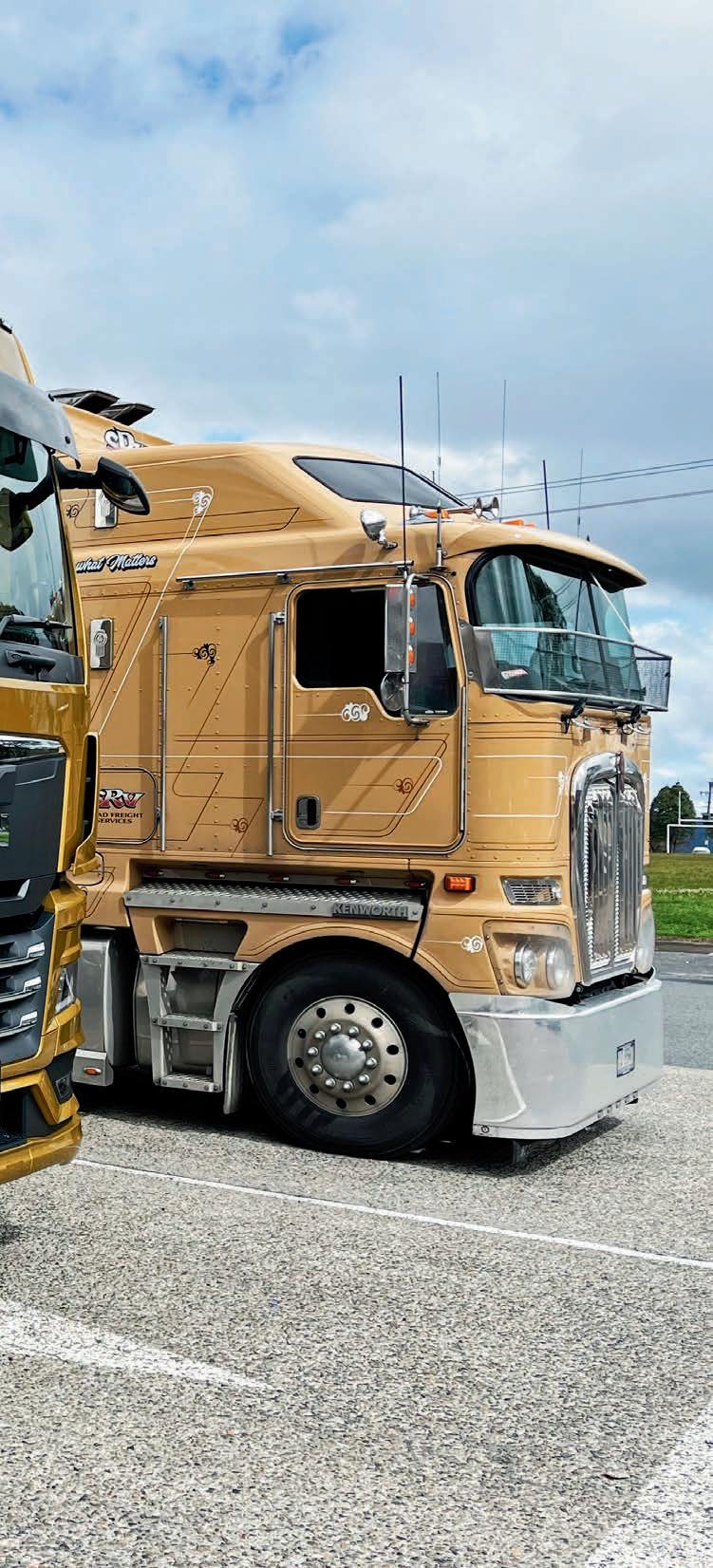
Thoroughly modern interior and extremely comfortable.
Bunk space is typically European but there are many new and worthwhile features

lacklustre 2.3 per cent of the heavy-duty sector and a wafer thin 1.6 per cent of the medium-duty market. Annual volumes were even marginally less the following year while now, in the closing stages of 2022, the brand is on track to record much the same mediocrity.
Without question, MAN’s best years so far were in the reasonably solid markets between 2017 and 2019. Best of all was 2018 when sales of 520 units delivered 3.6 per cent of the heavy-duty sector and 698 mediumduty sales returned a respectable 8.5 per cent of a category absolutely dominated by Japanese brands.
But since then, and with COVID-19-induced supply issues adding their own unique pressures, MAN’s momentum has slid back to the consistently modest volumes of earlier times.
The tide, however, may be turning. There’s a distinct change in the air as Penske Australia now appears more intent than ever on taking MAN to a higher presence in the fiercely competitive, extremely crowded and high-quality cab-over market. It’ll be no easy task but there are a couple of factors making this latest effort demonstrably more determined, and potentially more rewarding, than the seemingly halfhearted past attempts to boost the brand’s prominence.
For starters, with record-breaking demand for trucks, the overall truck market is booming like never before and from all
indications, strong demand is likely to continue into 2023 and maybe beyond.
Moreover, it’s also apparent that Penske Australia is for the first time in its tenure throwing considerable resources and funds at promoting MAN to mainstream trucking audiences as a serious cab-over contender. For much of Penske Australia’s existence, product promotion beyond decals on Roger’s beloved racing cars often appeared to be more an afterthought than a dedicated pursuit.
Critically, there’s now plenty to promote in the form of a heavily modernised model range hailed as the first newly-developed MAN truck generation in two decades.
Bluntly stated, it could be confidently asserted that MAN has never had so many positive forces align in its Australian history. Likewise, it could be equally asserted that with the combination of a bold new model line-up, cashed-up marketing and promotion programs, and a market literally screaming for new trucks, that if the brand doesn’t make a significant move up the commercial vehicle sales ladder over the next year or two, then it probably never will.
There is, of course, absolute optimism within Penske Australia that better times are just around the corner. As Craig Lee, general manager of on-road at Penske Australia said at the official launch of the new TGL, TGM, and heavy-duty TGS and TGX models a few months back, “We are very confident that our existing customers will see the value
model range modernised a heavily
and see the benefit in this truck, but more importantly than that, we’re very confident that new customers will see the brand and will benefit from those features and benefits that we’re bringing to the market.
“So we’re here to express our confidence that over the next 18 to 24 months we will more than double the market share we enjoy today.
“And we are going to actively take it to our competitors,” he enthused, pointing the finger squarely at Volvo, Scania, MercedesBenz and Paccar’s pair, DAF and Kenworth. Tall order, for sure, especially given the quality, acceptance and competitive acumen of the market’s big players but again, MAN has never had so many positive influences in its favour.
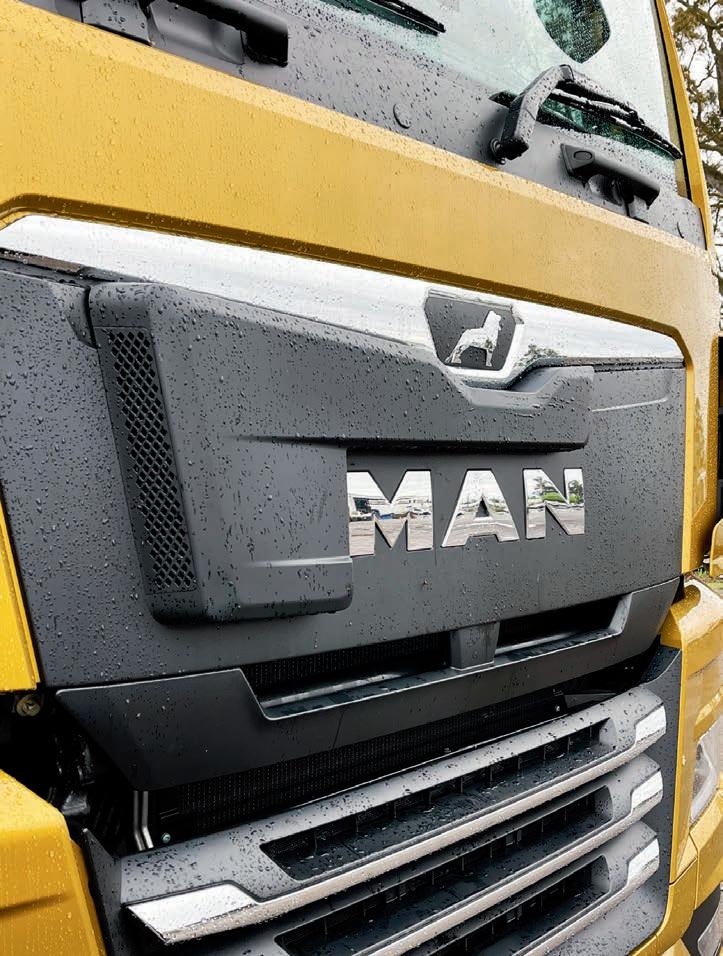
Yet whatever the executive expectations, there’s no question the next year or two will be a tell-tale time for MAN in this country. Equally, it’s easy to contend that if all the new trucks are similarly smooth, potent and well-mannered as the flagship TGX 26.640 B-double outfit driven recently, there’ll be a few high profile heavy-duty brands looking suspiciously over their shoulders.
Wet and wild weather was saturating the east coast, and with floodwaters rising in most directions and just one day up our sleeve for the exercise, the safe option was a 500 km return run from Northstar Motors at Heatherbrae just north of Newcastle, up the M1 to Kempsey and back again.
There are a few good pulls in both directions and with the outfit just a few hundred kilos shy of 60 tonnes, the big MAN would at least have to dig some way into the 15.2 litre D38 engine’s hefty reserves of grit and grunt, peaking at 471kW (640hp) at 1800rpm and top torque of 3000Nm (2212lbft) on tap from 900 to 1380rpm. As the run would soon reveal, it’s plenty of punch for a standard gross combination mass rating of 70 tonnes and optional 90 tonnes.
It’s worth noting, too, that the 580hp (2900Nm/2139lb-ft) version of the D38 remains an integral part of the new range with the same ratings and drivetrain as its 640 sibling.
Meantime, it’s no secret Australian conditions have at times created reliability issues for the D38. Of course, Australia’s ability to extract powertrain problems that don’t exist in other markets certainly isn’t unique to MAN and as with other brands, the introduction of a substantially improved model range generally comes with modifications to fix earlier issues. Besides,
our sources assure us the things that needed to be fixed, have been fixed, while retaining the fuel efficiency derived from the potent torque output and lugging ability of a big bore engine with two-stage (high and low pressure) turbocharging.
What’s more, in both ratings this latest version of MAN’s big six common rail engine complies with an advanced Euro 6e emissions standard, using a combination of EGR and SCR systems and what MAN calls a ‘continuously regenerating trap’, or CRT.
Stirring through the supremely smooth shifts of the ZF-designed MAN Tipmatic 12-speed overdrive transmission, performance goes to the ground through hypoid rear axles running a 3.36:1 final drive ratio, riding on an electronically controlled airbag rear suspension. Up front are parabolic leaf springs.
Also, the Tipmatic transmission offers two shift modes – ‘efficiency’ and ‘performance’, the latter designed to deliver fractionally faster shifts at higher points in the rev range. Yet other than a short stint in ‘performance’ purely for the sake of it, the ‘efficiency’ setting coped ideally with all road conditions. Typical of most modern automated shifters, Tipmatic is a highly intuitive and
Surprising inclusion on the TGX demonstrator was this additional air filter developed for extremely dusty conditions
From the driver’s seat. The overall layout is neat and efficient but typically, familiarity with the various functions takes time
responsive transmission with seamless shifts programmed to make the most of the engine’s willingness to lug deep down the rev range.
First things first though, and the old saying that ‘beauty is in the eye of the beholder’ is certainly relevant to trucks and in my opinion, there’s a visually pleasing quality and style about MAN’s flagship model. With its eye-catching curtains, the B-double demonstrator wasn’t easy to miss, but nor was it easy to miss an unusual addition to the front of the truck.
Riding shotgun for the day was Penske Australia’s Michael Di Ramio, a MAN mechanical man for much of his working life, who explained that the attachment was effectively an extra air filter designed for extremely dusty conditions, and fitted to the test truck to highlight MAN’s ability to meet extreme conditions.
Making life easier and safer for the driver was a major feature of MAN’s design goals for its new range and it starts with an easy ascent into the cab and the quick realisation that control functions on the steering wheel and dash for the multitude of systems and features are at least sited for easy access. Sure, it takes a while for familiarity to set in but with Michael Di Ramio pointing out the various features and functions, it didn’t take long to feel at ease with most of the switchgear and operation wands. What’s more, it is a neat and appealing layout from the driver’s seat.
It’s worth noting though, that while the interior design of this line-up is appealing in many ways, it is entirely different to its predecessors and it would take far more space than available here to list all the new truck’s features, including a comprehensive suite of advanced safety functions equal to any in the business. Consequently, while Michael’s explanations were invaluable in this exercise, particularly with the many useful features of the ‘infotainment’ and navigation system, there’s much to absorb and driver instruction on the many systems and features will be paramount.
However, no help is needed to find a comfortable driving position and moreover, MAN’s insistence that new mirror housings are designed to lessen visual intrusion is well founded. Strangely though, the test truck was still fitted with European convex mirror glass but as Michael Di Ramio said, flat glass is obviously the standard for Australia.

On-road performance was impressive from the start and aside from some of the finer details of the various operating systems, it took no time at all to feel entirely content with the big MAN.
In-cab comfort, steering, ride quality and overall road manners are exceptionally good and in a highly competitive cab-over field, the TGX rates highly in comparison with any competitor. Top marks!
Likewise, pulling power of the 640hp D38 with just 7600km on the clock was not just strong but equally stunningly smooth, with
the driveline delivering 100km/h at a twitch over 1300rpm.
Of course, one day behind the wheel is certainly not enough to form a definitive opinion of the truck’s long-term capabilities but it was enough to suggest that MAN has a hugely impressive powertrain.
On the northbound climb over Coolongolook, for example, the combination dropped to 7th gear at 1600rpm with the shifter in auto mode. It was easy to contend, however, that allowing the engine to lug in manual mode would deliver an even stronger effort on the similarly demanding southbound climb, and so it did, cresting the hill easily in 8th gear at 1400rpm.
Meantime, on downward stretches the strength of MAN’s Turbo EVBec (Exhaust Valve Brake) auxiliary braking system was quite remarkable. Fitted to 580hp and 640hp ratings and said to produce up to 840hp of retardation effort, MAN says the brake’s effectiveness largely derives from positioning the exhaust flap upstream of the turbocharger which allows more back pressure to build up during braking.
As the company explains, ‘When the exhaust flaps are closed, high flow speed results at the remaining opening gap due to the nozzle effect (and) targeted air flow to the turbocharger blades increases the turbine
speed on the exhaust side and therefore, also increases the speed on the intake side.’
Thus, ‘the pressure level in the engine is raised and the brake output increases.’ Importantly, the technical description also states, ‘a large part of the heat energy produced during braking is dissipated outside directly through the exhaust gas stream. Therefore even on long downhill gradients, brake output is not reduced,’ MAN concludes.
Whatever, auxiliary braking on the D38 engine is immensely strong.
Yet for all its strength hauling almost 60 tonnes with relatively few kilometres on the clock, the MAN flagship returned highly respectable fuel consumption. Turning around at Kempsey, the on-board computer showed 1.9km/litre (5.37mpg) but as the combination turned back into the Northstar dealership in Heatherbrae, the figure flicked to 2.0km/litre, or 5.65mpg.
In conclusion, there’s much more to the TGX 26.640 than mentioned in this report and while MAN may not be traditionally foremost in a crowded market of premium cab-overs, this latest flagship appears to warrant much more than casual consideration.

More to the point perhaps, it certainly warrants the effort Penske Australia is now applying to the big MAN from Munich.
New mirror housings are not as intrusive as previous designs. Strangely, the demo truck was still fitted with European convex mirror glass

When it comes to putting your best foot, or in this case wheels, forward, the team at Western Star in Australia has certainly gone all out. Three new truck models, a high profile launch, and a range of positive feedback suggests the X-Series may be just what the business needed to start climbing the sales charts
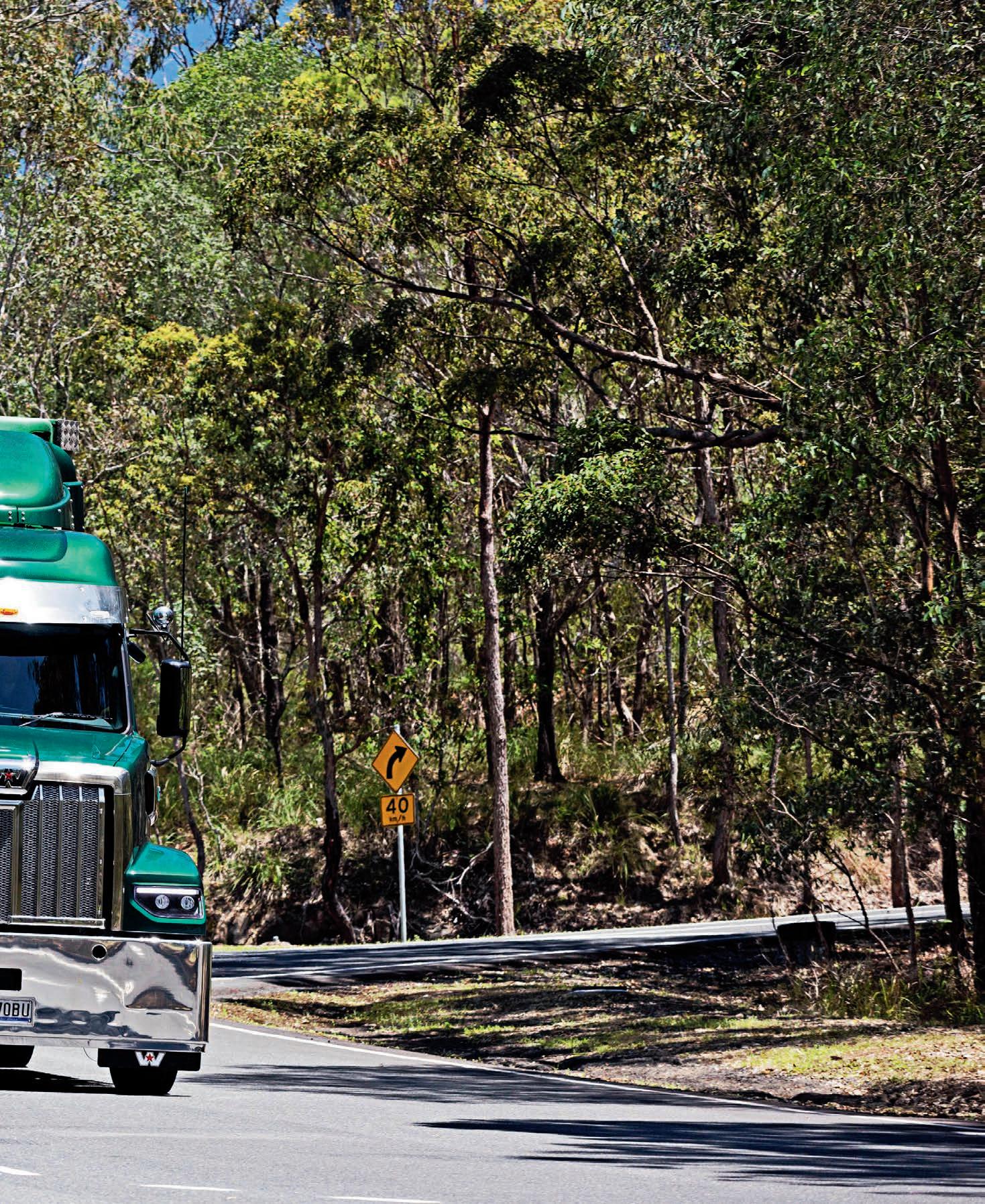

Big boy of the bunch, the 49X. It takes the place of Western Star’s former roadtrain and heavy haulage specialist, the 6900, and retains the 72 inch Stratosphere sleeper
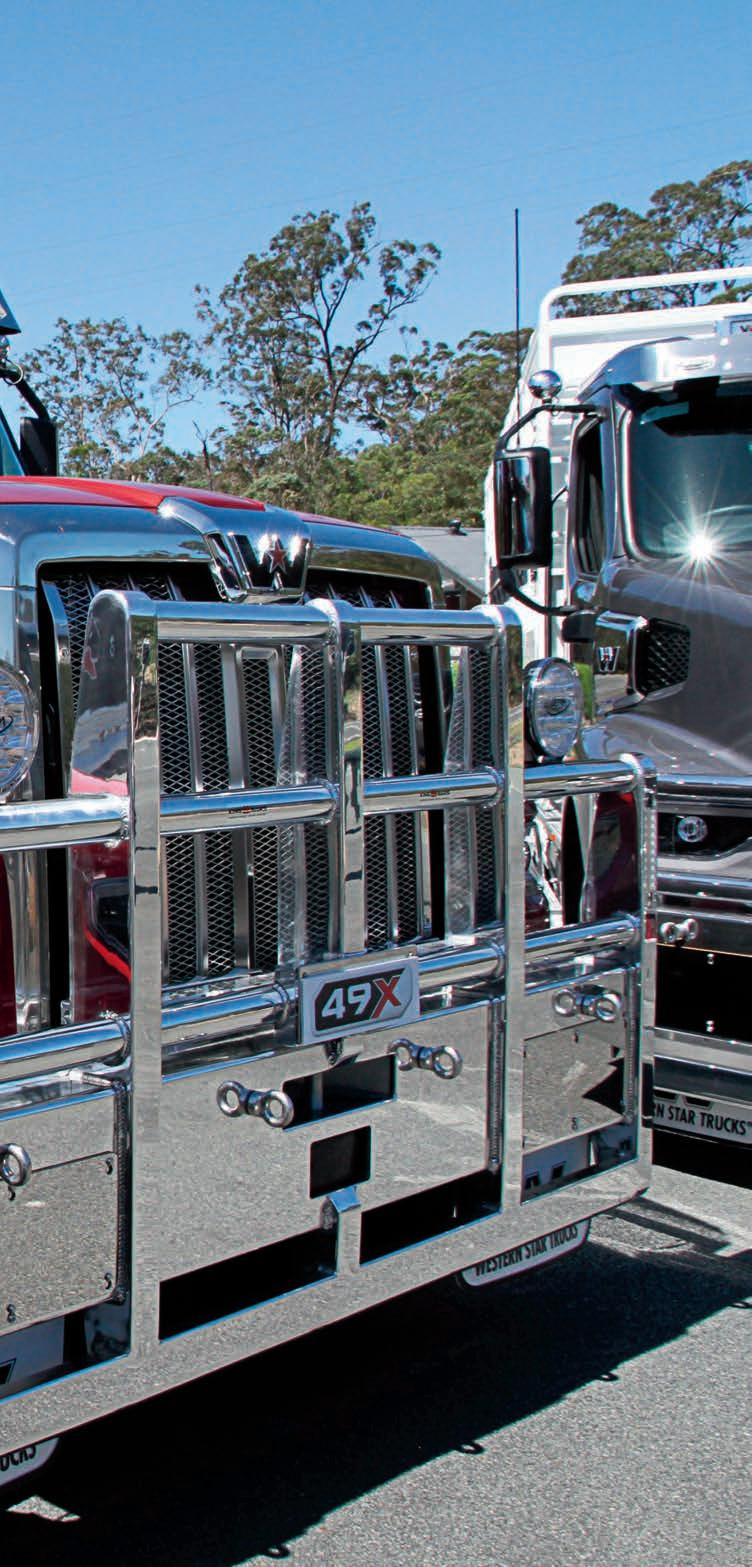
Penske people must be a patient lot, especially in our part of the world. For the best part of a decade, they’ve waited and waited, and waited some more, for their Star to do what stars generally do best – shine brightly!
Yet, for reasons seemingly mired in a motley mix of corporate complexity and fiscal fate, Western Star has largely failed to fire since 2013. That was the year, of course, when charismatic motoring mogul and billionaire businessman Roger Penske secured Western Star as part of the purchase of Transpacific’s commercial vehicle group. Ever since, the brand has slid steadily to the lowest rungs on the heavyduty sales ladder.
As the saying goes though, ‘all good things come to those who wait’ and for Penske Australia, the waiting game is finally over following the recent launch of Western Star’s much anticipated X-series range. Indeed, not since the local release of Western Star’s abidingly revered Constellation models almost 25 years ago when the brand was still under the ownership of the fiercely astute Terry Peabody, has there been so much justifiable excitement, expectation and even emotion surrounding the arrival of a new Star.
Then again, as exuberant Penske Australia executives were quick to emphasise at Brisbane’s Mt Cotton mobility centre during the most comprehensive and professional new model launch attended in several years, the X-series is like no other Western Star before it. Nor, they insist, has any Western Star ever been tested to the same extent as X-series and equally, no Western Star range has ever had the potential to cover so many applications as X-series.
Tipper toilers, the 48X and 47X. Both models add many new possibilities for Western Star due in large part to the introduction of the DD13 engine with up to 525hp. The 48X also gets the big bore DD16 with up to 600hp
Put simply, the platform has been poured for arguably the most ambitious and competitive assault on the heavy-duty conventional truck market seen in a long time, and with it, the most dynamic period since Western Star first hit the Australian market almost 40 years ago.

Nonetheless, it has been a laboriously long wait and despite Western Star’s entrenched reputation as a tough and proven product in Australian conditions, Penske Australia has plenty of rebuilding to do with an X-series line-up so distinctly different from its forebears. Again though, the emphasis at Mt Cotton was firmly on citing Star’s long experience in the Australian market and the fact that this new range has undergone more intense testing than any of its predecessors.
Obviously enough, most of the testing was done in the US but as several Penske operatives mentioned, pre-production units accumulated around 200,000 km on Australian roads prior to the new line-up’s release.
It’s now six years since Daimler Trucks North America (DTNA) started its $100 million development of an entirely new Western Star range, and around two years since the new trucks debuted on the North American market. Flippantly perhaps, DTNA international sales manager for Western Star, Greg Robinson, defined the extended delay in X-series’ launch here as simply, “Saving the best for last.”
There could, however, be some merit in taking so long to reach Australia. Right-hand
drive was an integral part of the X-series development program from the outset and in what appeared a willing concession to the Australian market’s historic ability to extract durability issues that exist nowhere else in the world, Greg quickly added, “We went to extreme measures to ensure success.”
Whatever the delays, Penske Australia personnel are undeniably ecstatic that the new trucks have finally arrived. In separate presentations to assembled media, managing director Hamish ChristieJohnston, executive general manager Craig Lee and head of Western Star Trucks, Kurt Dein, could not hide their delight that finally, the days of competing with a tired, limited and increasingly uncompetitive model range are now in the past.
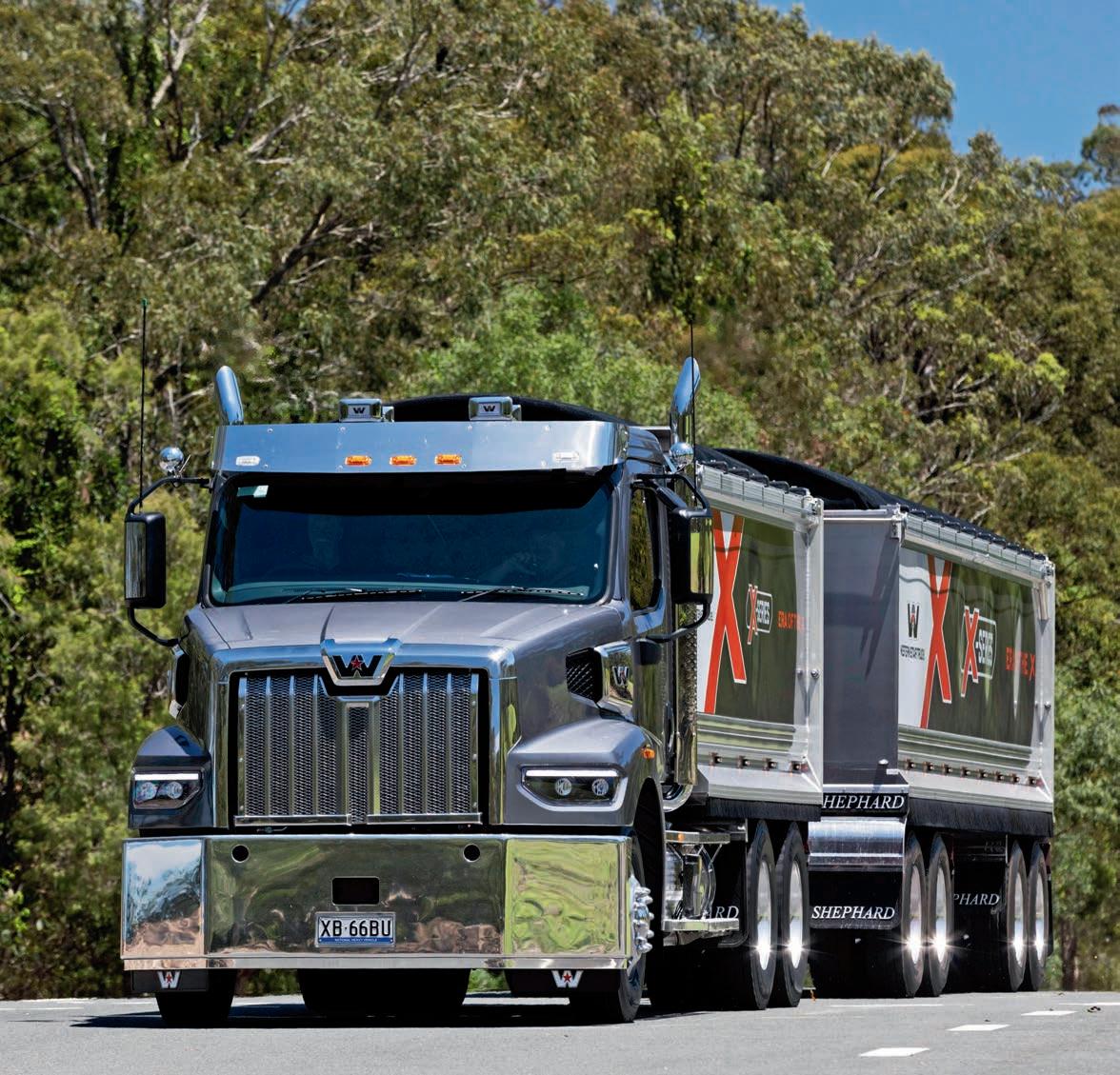
“This is not a tweak or a rebranding exercise,” said an emphatic Craig Lee. “It is a completely new product (and) we’re now able to compete in segments we’ve not been in before.” Citing the days when Western Star comfortably sold more than 1000 trucks a year with a relatively narrow model range, a boldly confident Lee enthused, “Double digit sales are the goal.”
For Kurt Dein, ‘X’ indelibly marks the spot where Western Star fires back to life, resuming its place at the sharp end of the heavy-duty conventional truck class. “This is what Western Star should be,” he said with unbridled enthusiasm. “Something it hasn’t been for a long time.”
As for the long delay reaching the Australian market, the time wasn’t wasted,
Penske Australia’s Kurt Dein heads up Western Star business in Australia. His passion for the new product and its potential are resolute and on first impressions, totally justified
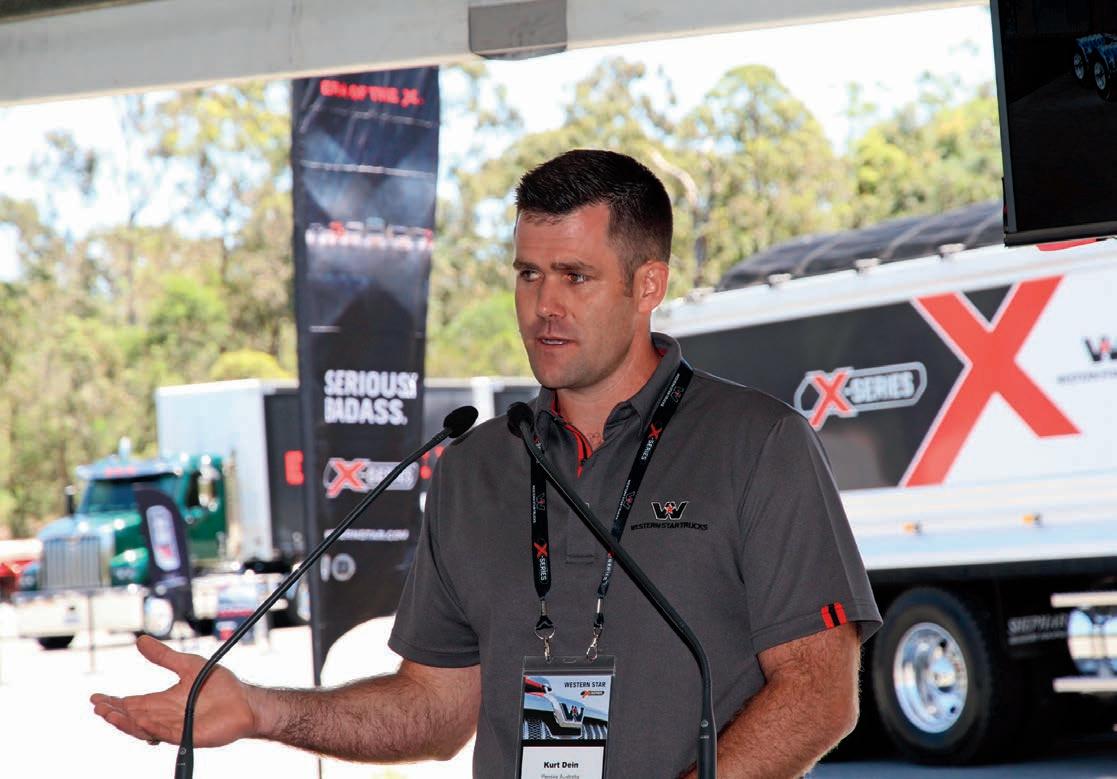
according to a resolute Dein. “These aren’t the trucks launched in the US two years ago. These are unique to Australia,” he declared, referring particularly to the 48X model developed exclusively for Australia and more broadly, the use of the latest Detroit DD13 and DD16 engines feeding into the Detroit (Daimler) DT12 12-speed automated transmission, and critically, the standard inclusion of the advanced safety systems already established in corporate cousins Freightliner Cascadia and Mercedes-Benz.
Moreover, the last few years have only added to the reputations for solid performance and thrifty fuel consumption of equivalent DD13 and DD16 engines in Freightliner and Mercedes-Benz models.
It is, however, the versatility of X-series which gives the new range its greatest opportunities, a point certainly not lost on Western Star veteran Doug Shand. In the early ’80s, his late father Bob Shand was instrumental in bringing Western Star to Australia in the wake of White’s demise and despite a self-confessed ‘gap year’ before recently returning to Penske Australia, Doug’s involvement with Western Star has few, if any, equals.
With quiet conviction, he views X-series as the most exciting development to ever emerge from the Western Star stable, with
an unrivalled depth of versatility to fit a multitude of tasks.
What’s more, the versatility stems from more than a Daimler Truck powertrain. As Craig Lee explained in a media statement on the new range, “We have passionate Western Star enthusiasts who will want a 49X with the 600hp Detroit DD16, drum brakes, spring suspension, and an Eaton Fuller manual transmission, and we can deliver that.
“On the other side of that, for a fleet operator after a 47X or 48X to haul B-doubles with Detroit’s DT12 transmission and all the advanced telematics that come with that, we can deliver that too.”
Moreover, “The Detroit DD13 13 litre engine in the 47X and 48X also opens up new markets for Western Star, such as local distribution or B-double intrastate.”
From the outside, there’s no doubting it’s a Western Star. Designers have, in fact, done a good job of styling all three X-series models with the bold, strong appearance typifying a traditional US conventional rather than the sleek, softer contours of a slippery wind-cheater.
Yet while looks largely depend on individual tastes, there’s no denying that big beaks with gutsy stainless steel grilles


and classy air intakes each side of the hood impart the message of working class toughness on which so much of Western Star’s heritage is based. That’s not to suggest X-series’ mildly drooping snouts and sloping guards aren’t concessions, however slight, to aero efficiency but it nonetheless highlights the design goal to maintain Western Star’s long established identity as a true toiler.
Whatever the view though, there’s far more to the X-series line-up than meets the eye, starting with the 47X.
Unlike the limited specification and subsequently limited potential of the previous 4700 model, the 47X will almost certainly break new ground for Western Star in this country for a wide range of reasons.
With a set-back front axle and compact
2835mm (111.6 in.) bumper to back-of-cab (BBC) dimension, it comes as a 6x4 and mid-way through 2023, will be available in 8x4 and 10x4 layouts. The big gain, however, is the availability of the latest DD13 Gen 5 engine with up to 525hp and 1850lb-ft of torque in addition to the lightweight Cummins ISL 9.0 litre engine with up to 380hp and 1255lb-ft of torque.
The introduction of the DD13 provides the 47X with the muscle to push gross combination mass (GCM) up to 72.5 tonnes and therefore, B-double and heavy truck ’n dog duties. Even so, the model’s potential to cover a long list of rigid and prime mover workloads is further enhanced by the choice of the DT12 automated 12-speed overdrive transmission in either standard OV or
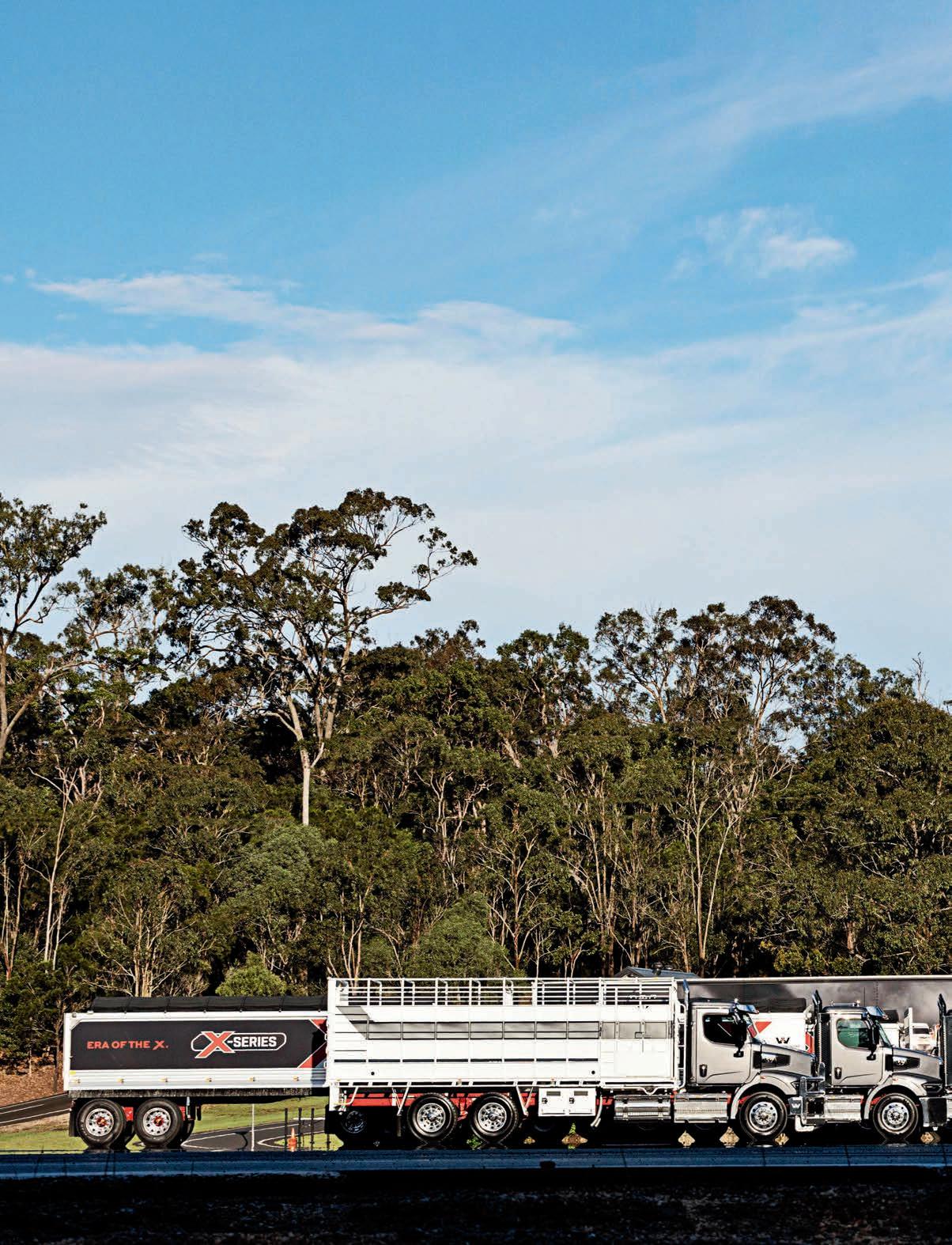
extreme OVX form, an 18-speed Eaton Fuller manual box or an Allison automatic.
As well as a standard day cab, there’s also a range of three sleepers – a 36 inch model in a low-line trench style (meaning an indented roofline to minimise the height of additions such as air horns and marker lights) or 36 and 48 inch versions with a mid-height roofline which provides standing room.
Yet as potent as the potential is for the 47X, it’s the 48X which seemed to excite Penske people the most.
As several insiders emphasised, this is the truck built purposely for the Australian market, with no US counterpart, and the truck they believe will put Western Star firmly back on the linehaul B-double map. And from all appearances, their optimism
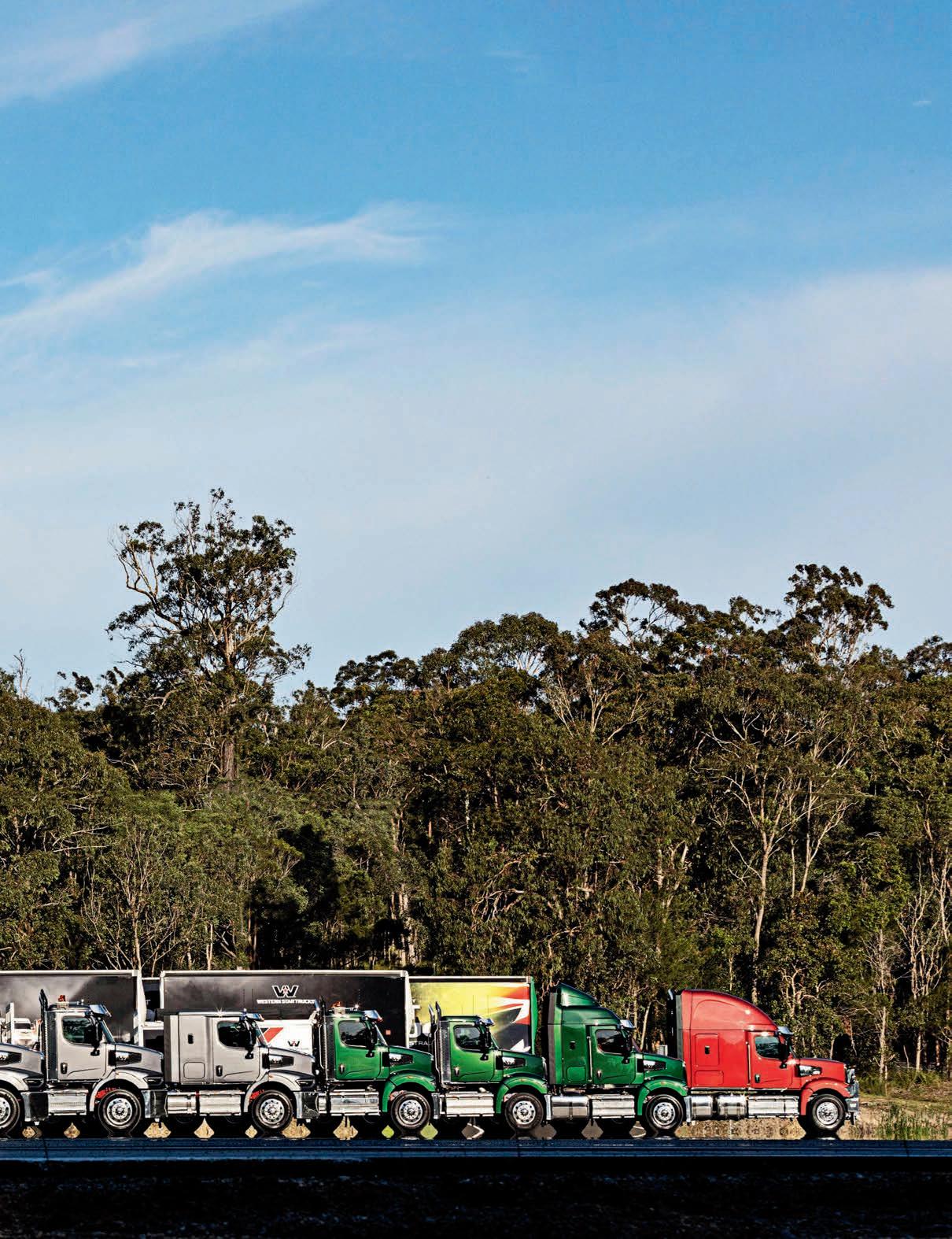
and excitement are not misplaced.
With a set-forward front axle and trim 2883mm (113.5 inch) BBC, the 48X is a 6x4 prime mover specification with the choice of the DD13 engine up to 525hp or the turbocompound DD16 with up to 600hp and 2050lb-ft of torque, coupled to either the standard DT12-OV automated shifter or the higher torque rating of its OVX counterpart, or an Eaton 18-speed manual.
While the DD13 version has a GCM of 72.5 tonnes, the DD16 takes the 48X to a GCM limit of 106 tonnes.
Slimline cabs come with the choice of standard flat or trench-style rooflines while sleepers range from 36 inch models with either a low trench roofline or a stand-up mid-roof design. Importantly for B-double
This is what
Flagship 49X in B-triple configuration on the Mt Cotton circuit. Pre-production versions have been doing tough outback roadtrain work in the lead-up to the X-series launch
work, the bumper to back-of-sleeper length with the 36 inch shed is 3567mm but for those wanting a bigger sleeper, there are also 48 inch and 60 inch high-roof versions.
From any angle, it’s obvious Western Star’s local leaders have worked closely with their US colleagues to tailor a 48X model specifically for Australia’s linehaul B-double market. It is a smart spec.
The big boy of the bunch is the 49X which effectively replaces the former 6900 model which was, of course, Western Star’s roadtrain and heavy haulage specialist. Moreover, it’s apparent the 49X has a specification to step neatly into the former flagship’s shoes even with a significantly shorter BBC of 3085mm, or 121.5 inches.
With a standard GCM rating of 140 tonnes and the ability to be rated up to 200-plus tonnes with engineering approval, the 49X is available in 6x4 and 8x6 (tri-drive) configurations, punched by the DD16 engine through either the DT12 automated transmission or Eaton’s 18-speed manual ’box.
As for sleepers, it’s top-shelf only, starting with 60 and 72-inch mid-roof models and the grandest of all, the high-rise 72 inch Stratosphere. For the less ostentatious, a 48 inch version is likely to be added in 2023.
There is, however, much more to the new X-series than the relatively brief details reported here.

Western Star events are exceedingly rare and with a long awaited, once-in-a-generation launch of an entirely new model range, Penske Australia wasn’t about to let the moment slide by without plenty of facts and fanfare. Indeed, the recent X-series launch was exceptional in both detail and delivery, with a range of loaded models and configurations available for stints around the Mt Cotton circuit and vitally, concise explanations of the many new features that make these trucks so uniquely and decidedly different to their forebears.
The only thing missing, perhaps, was a high-ranking executive from either Daimler Trucks or one of Penske’s US powerbrokers,
maybe even Roger himself. After all, X-series is more a Daimler Trucks North America creation than any previous Western Star, while its critical importance to Penske Australia is no more pronounced than in the assertion that there’s probably no market in the world which will verify the engineering integrity and build quality more than Australia. Still, the local blokes did a top job of launching an altogether appealing family of new Stars.
Even so, there’s not a lot to be gained meandering around Mt Cotton’s well-known circuit other than revealing a snapshot of some features. Like, good driving position and handling, a smooth drivetrain, a quiet cab – but not so quiet to completely deaden the healthy hum from under the snout – good vision through a broad single-piece windscreen and new mirrors, and the absolute worth of a standard hill-hold function.
First up, it’s an easy climb through doors that open 70 degrees with ample access handles and ideal tank steps leading into a neat and practical cab built around a steel reinforced aluminium frame. As Western Star states, it’s all-new and designed from scratch to be ‘lighter, safer, stronger and more spacious than any Western Star cab before’.
It is, however, on the inside where DTNA’s corporate identity and component amortisation are stitched most obviously and predictably into the new Star. The dash, the switchgear, the digital gauge and overall instrument layout, the steering wheel, are all from the same DTNA suite as Freightliner Cascadia. The similarities are stark, but that certainly isn’t a bad thing, particularly when it includes the standard features of the comprehensive Detroit Assurance safety package. Like early
Cascadia versions though, these first new Stars hadn’t yet been fitted with a steering wheel airbag.
Still, some Western Star traditionalists – and there are no doubt plenty in Australia’s trucking population – may rue the absence of former traits in plush trim and driver-inspired detail but overall, designers and engineers appear to have done an efficient job of merging corporate concessions into a highly versatile model range with durability as the stated core of construction.
Front to back, inside and out, the only thing that appears to carry over from the outgoing model is the badge on the beak and it all starts with what Western Star describes as ‘pioneering high strength single channel chassis rails’ splayed at the front to enhance engine and radiator fitment.
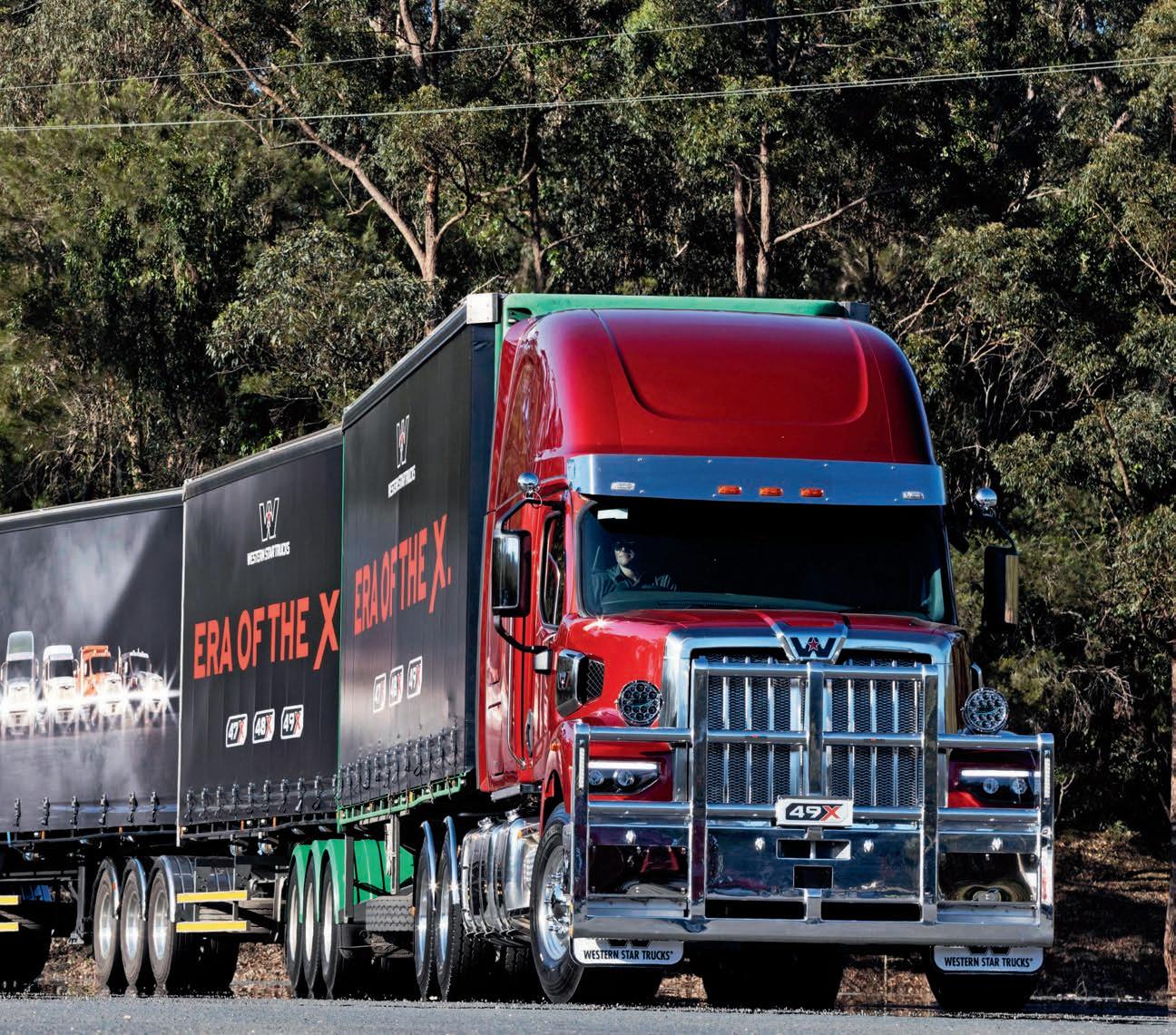
Low-line sleeper version of the 47X and behind, slimline 48X. There’s plenty of versatility in the X-series range
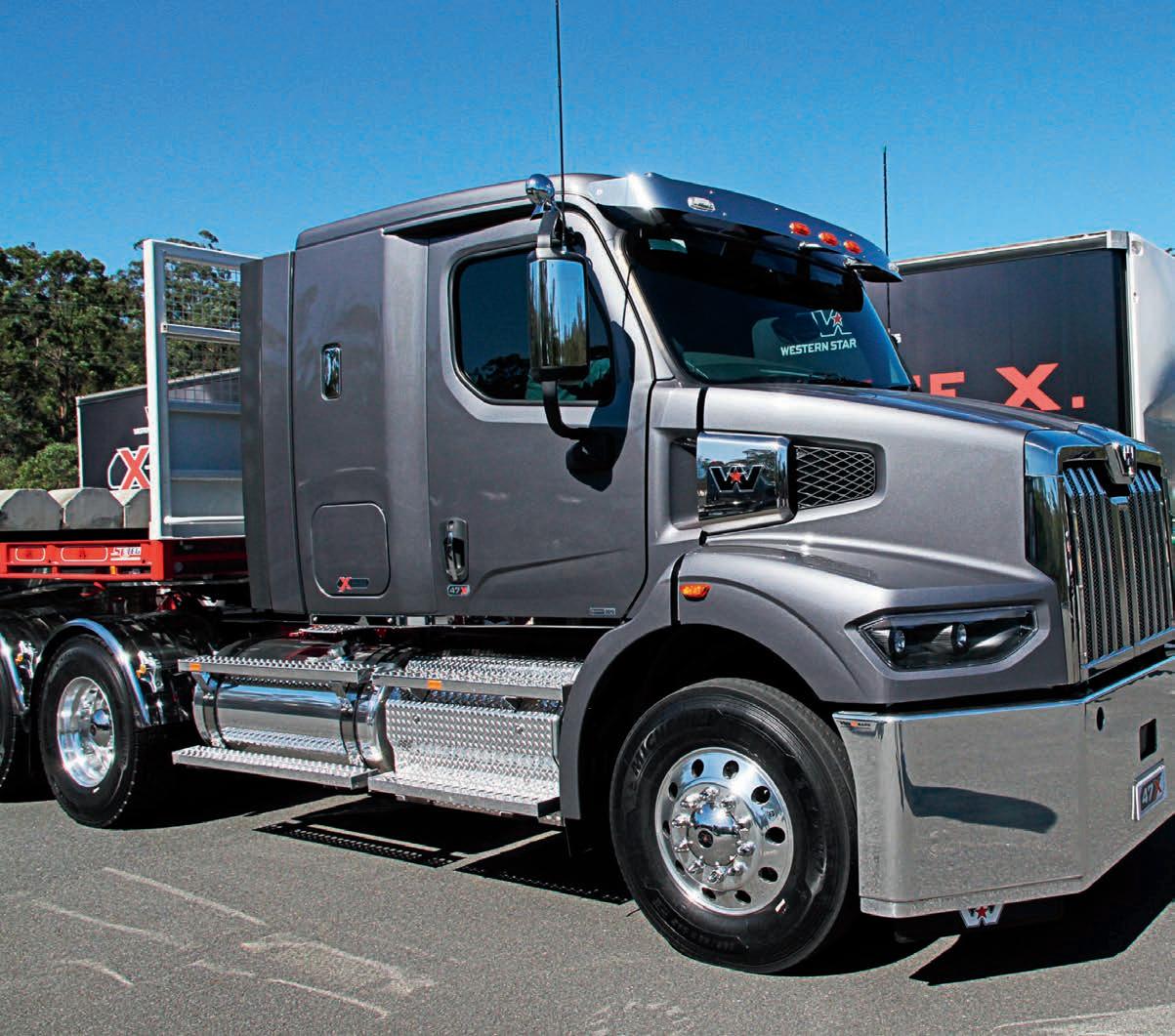
Importantly, all three models are said to use ‘an all-new robust routing and clipping design which keeps air lines and wiring harnesses away from the frame’.
On the design and effectiveness of the cooling system, Penske Australia regional business manager Derek Schroff explained that the radiator is engine mounted rather than chassis mounted to resist torsional stresses, with the DD13 using a 1400 square inch radiator and 1600 square inch with the DD16. Or as a candid Doug Shand remarked, “If the truck can pull it, it can cool it.”
Still on cooling, it’s worth noting that to accommodate the DD16 and equally, enhance the discharge of hot air from under the cab, the 48X model stands 100mm higher above the chassis than its 47X and 49X siblings.
The sloping hood on all models also warrants mention, Derek Schroff continued.
Made from a moulded and robotically sealed resin said to be stronger and close to 50kg lighter than previous designs, the hood is isolated from road shocks by being mounted on what Western Star says is its exclusive ‘ISO Tech’ bonnet suspension system, and happily, there’s an assistance strut to make it a light and easy one-man lift.
At the front though, it’s hard to see the locally made bumper slab on 48X and 49X models having anything other than a negative effect on fuel economy. Penske operatives say it’s due to the set-forward front axle of the two models restricting a more subtle shape but surely, somewhere in the engineering brains trust that created these trucks, there’s a more efficient alternative.
Meantime, customisation remains an integral part of the Western Star portfolio. Aluminium fuel tanks, for instance, are offered in round and square designs, the former in
individual capacities from 227 to 567 litres and the latter, in 360 to 775 litre capacities.
Likewise, AdBlue tanks come in 30, 49, 87 and 200 litre sizes and in all cases are mounted in a forward position on the lefthand side of the chassis frame.
Exhaust options include single and dual cab-mounted vertical stacks, dual framemounted pipes on sleepers, and on the righthand side, an under-step after-treatment system with horizontal exhaust.
Up front, Dana and Meritor steer axles are available, including twin-steer combinations for upcoming 47X eight-wheeler and 10x4 models, while at the back are tandem and tridrive assemblies also from Dana and Meritor.
A comprehensive rear suspension line-up includes DTNA’s AirLiner assembly as well as Neway’s ADZ air suspension, Hendrickson’s air-ride Primaax EX and its severe-duty Ultimaax mechanical stablemate, and
DTNA’s rubber block TufTrac assembly.
For now, that’s the broad detail on Western Star’s X-series and before much longer, we hope to put several models through their paces in real world workouts.
In the interim, it’s surprisingly easy to suggest this new line-up is the complete transformation desperately needed to dispose of the mediocrity which over almost a decade has seen Western Star’s hard won notoriety and reputation slide to the edge of insignificance.
Simply stated, the might of Daimler Trucks North America has breathed new life into Western Star. The job now is for the highest echelons of the Penske organisation to ensure the dedicated and determined people who run the Australian operation are equipped with the ongoing support and enterprise to ensure this new Star does what it is so obviously designed to do – shine brightly!
Western Star stalwart Doug Shand. He’s convinced this is the most exciting range of trucks ever to bear the Star badge

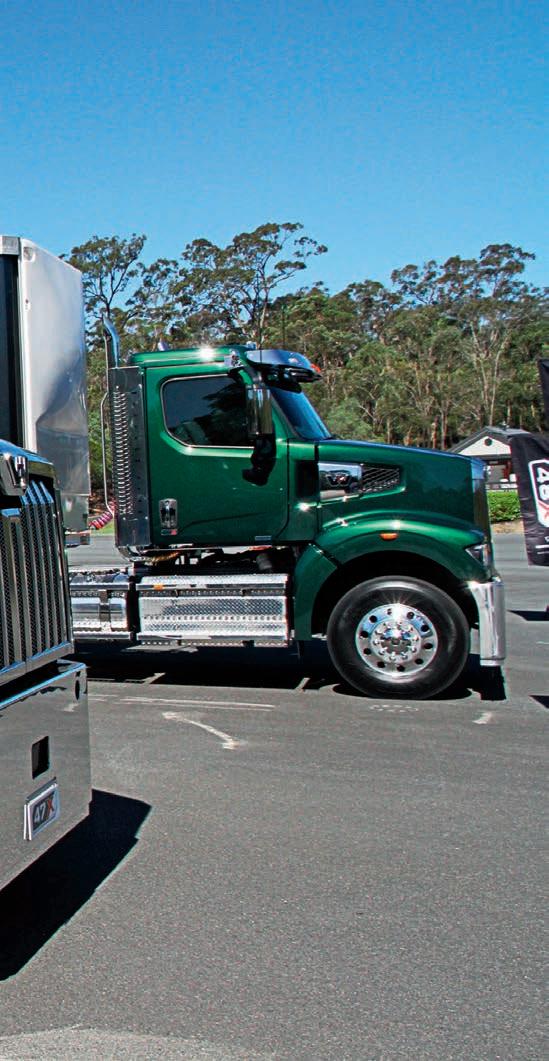
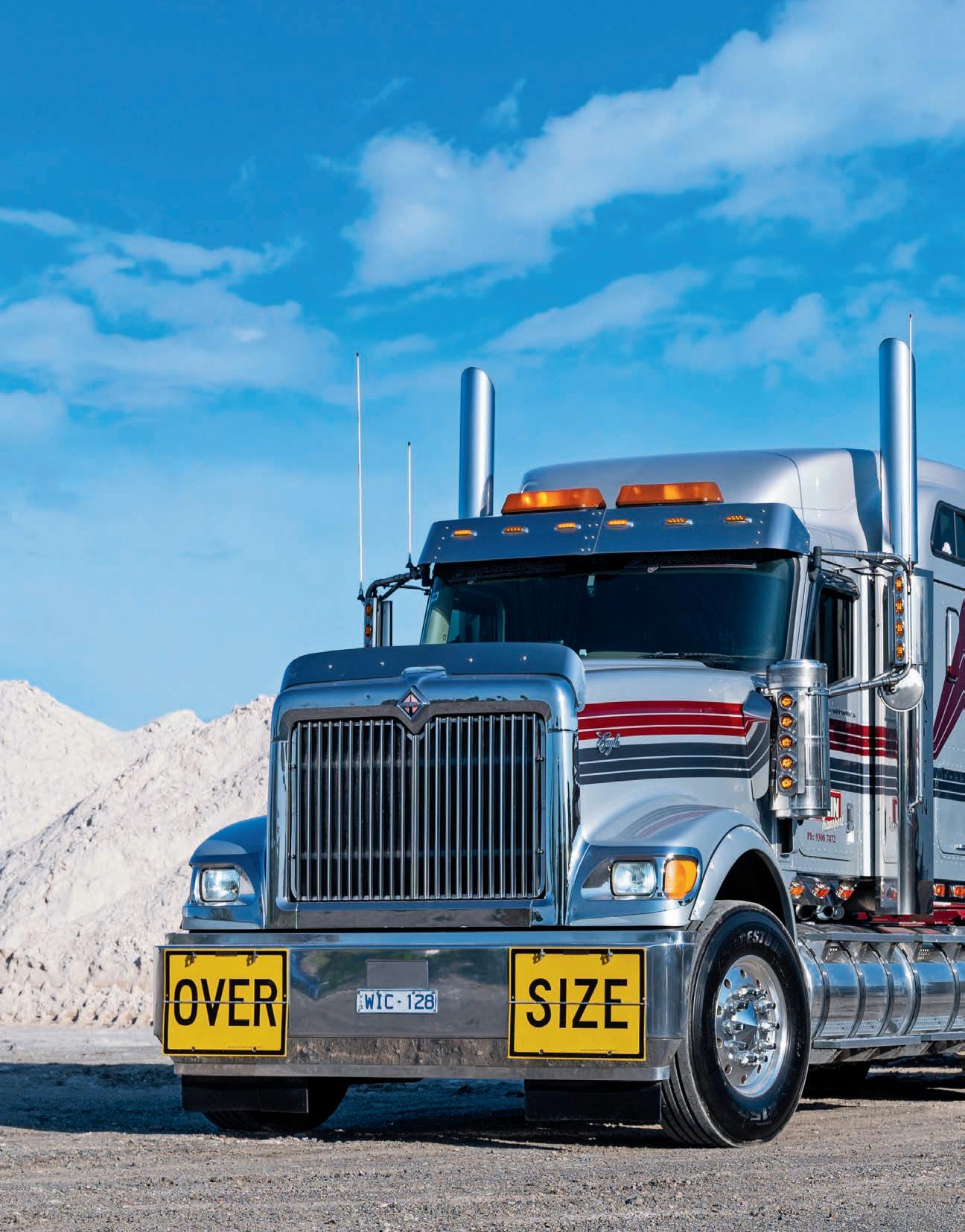
Flying out the front of the fleet at Patlin Heavy Haulage is a much-loved International Eagle 9900i that is a sight to behold on the road
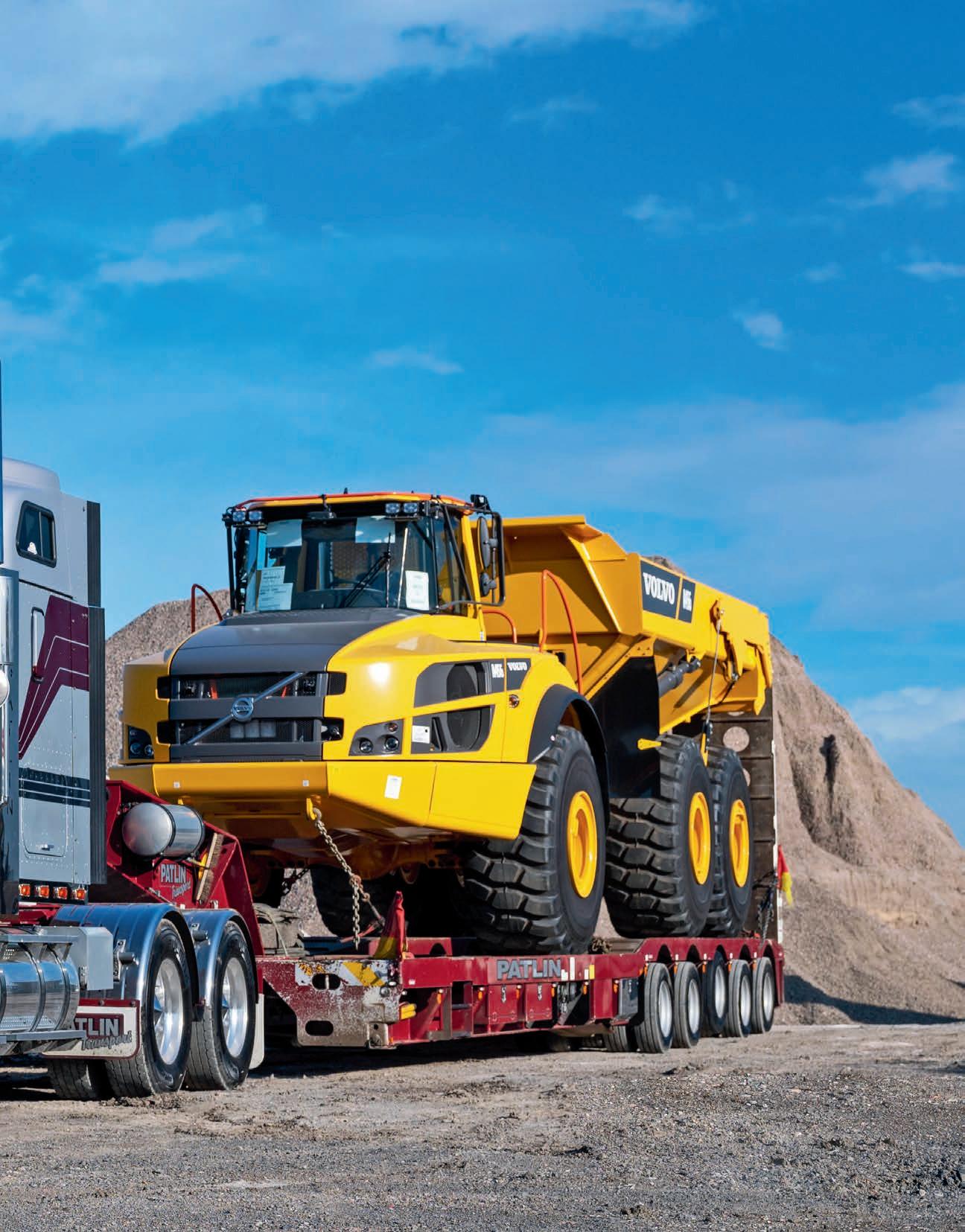
& Images | Warren Aitken
Joe Papaluca stands with the Eagle, a favourite with not only him but also his dad Pat and driver Jayden
Let me set the scene for all the avid readers out there. It is Monday morning as I sit in my office (sauna) here in balmy Queensland. The fan is recirculating the humid air as I try to avoid breaking out the air-con too early – I’m all for saving the planet and that kind of stuff.
I’m at my desk with my laptop open, Microsoft Word on the screen and the Patlin Heavy Haulage opening title ready. I can feel my editor’s glare from his office 50-odd kilometres away near the city as he once again waits for me to get my story in, hopefully close to the deadline.
I know I should start typing, however behind my laptop are the screens for my PC. The screens are awake, with lightroom running and the images of Patlin Heavy Haulage’s International Eagle 9900i on full display. Two screens with two different angles of this stunning truck, but instead of typing out the story I am writing an apology email to the editor because quite frankly I’m just far too distracted by the photos to be productive and my deadline has gone whizzing past.
The International Eagle 9900i is one of
those iconic trucks that just seems to catch every truck lover’s eye. It has a shape and style that distinguishes it from all others. Much like the Ford LTL, a squared off SuperLiner or those stunning ’80s SARs.
Therefore, it really isn’t my fault that I’m struggling to get my story in before my deadline. I’m fighting a good fight but just look at how cool this truck is... Go on, have a look.... I’ll wait.
Was I right or was I right? The Patlin Heavy Haulage Eagle is simply spectacular, the credit for it going to not just the driver Jayden Perry but the entire Patlin Heavy Haulage family. Well, it is 90 per cent Jayden who goes to bed dreaming about rewashing his truck.

However, we will get back to Jayden and his dedication shortly. Let’s first focus on the Papaluca family, their affiliation to all things International and the incredibly successful company that this Melbourne family has cultivated over the last 30-plus years.
My tour guide for the Patlin Heavy Haulage history lesson is Joe Papaluca. Joe now fills the role of operations manager for the business, having previously done his time behind the wheel and behind the tools. He
has known nothing other than the family business. His entire youth was spent either in the passenger seat of a truck trying to see over the dash or in the workshop with dad learning how to rebuild a truck. It was the life every young truck nut aspires to.
Joe is the oldest of Pat and Lina Papaluca’s three sons. The other two boys are also heavily involved in the family business.
Second son Matty works as a Drake trailer mechanic, so while not directly in the family business he spends a fair bit of time working on the company gear, as Drake is the predominant trailer supplier for Patlin Heavy Haulage these days.
Last but not least is youngest son Steve. Steve is heavily involved in the company and currently drives one of Patlin’s stunning C509s doing the big shifts.
As I mentioned earlier, the Papaluca family is a massive supporter of International, the brand being the backbone of Patlin’s success. Pat’s entrance into transport began with an F Model Mack back when he was just 19. That was his first truck and, coupled to a backhoe, it was the beginning of Patlin Transport.
Over the years as the fleet grew the little
Mack became a forgotten friend. It was all International.
“The ACCOs and the T-lines were dad’s bread and butter trucks,” Joe says. “They were a money maker’ they were a working truck”.
As the company grew there were a few other brands gracing the company colours, but the Patlin yard was dominated by T-lines, S-lines, TranStars and ACCOs. There wasn’t a lot of new trucks, however.

You recall I mentioned that Joe spent a fair bit of his childhood in the workshop helping dad. Well, that wasn’t just learning maintenance and servicing but also undertaking major rebuild projects. In the beginning buying new trucks wasn’t an option for the Papaluca family but refurbishing old ones definitely was. Those self-taught skills helped save a lot of money and allowed the family to put solid reliable trucks on the road.
Pat Papaluca recalls the expense of a new truck back in those early days. “At the time I really wanted a brand new TranStar,” Joe’s dad Pat tells me. “But they were about 160 grand and I just couldn’t afford that. So, we found an old wreck, bought it and completely rebuilt it and it’s still with us now.”
Joe is quick to point out though that it is
It’s hard to believe the Eagle is 15 years old and nearing a million kilometres
Hidden away in the back paddock is the big TranStar, ready for another rebuild project … eventually Patlin Transport and Drake trailers go hand in hand these days
a little worse for wear now. “But we’ve held onto it because we will do it up again.” There’s a fair bit of sentimentality towards Patlin’s first TranStar, not just because it was such a big rebuild but also because it was Joe’s first ‘legally driven’ truck.
The TranStar was one of many rebuild projects carried out by the company, that mechanical propensity allowing Patlin to stay more than competitive. They knew their trucks inside and out and the result of that was mechanical reliability, which in turn pays dividends out on the road.


Even today, while there are far fewer rebuild projects, the workshop side of Patlin Heavy Haulage is still extremely busy with a huge emphasis placed on servicing and maintenance.
Those familiar with the business will know that the fleet is primarily Kenworth now; the International badges are harder to find. That swing in priorities parallels their business specialty. Up until the mid-’90s Patlin Transport was all about tipping work. At its peak there were over 15 tipper setups, from truck and dogs to semi tippers. Alongside the Patlin trucks were another 50-odd subbies.
The transformation to a heavy haulage company began in 1998 when several customers were asking for assistance moving some of their construction equipment around different Melbourne projects.
“The first heavy haulage unit we had came in 1998,” Joe recalls. “It was a brand new Brentwood folding gooseneck trailer and an old Atkinson.” The Atkinson was neither a new truck nor a rebuild project, it was one of the company’s tippers before Pat removed the body and turned it into a prime mover.
According to Joe, Pat’s words were, “I’m not buying another truck to run this outfit.” I’m assuming he didn’t see heavy haulage becoming a big part of the company.
It didn’t take too long before a second Brentwood trailer was added, one of the first rear-steer quad axle trailers in Victoria. Then along came a second-hand 1993 International S-line. The big S-line was an ex-Army cancelled order, so it was the first real heavy spec truck for Patlin Heavy Haulage. All of a sudden the company was moving away from tipping and focussing on heavy haulage.
By 2003 there were five or six floats in the rapidly expanding Patlin Heavy Haulage fleet. The tippers were all but gone, except for those
Add these two classics to the restoration project list. It’s trucks like these that helped Pat and Lina Papaluca build the company to where it is today


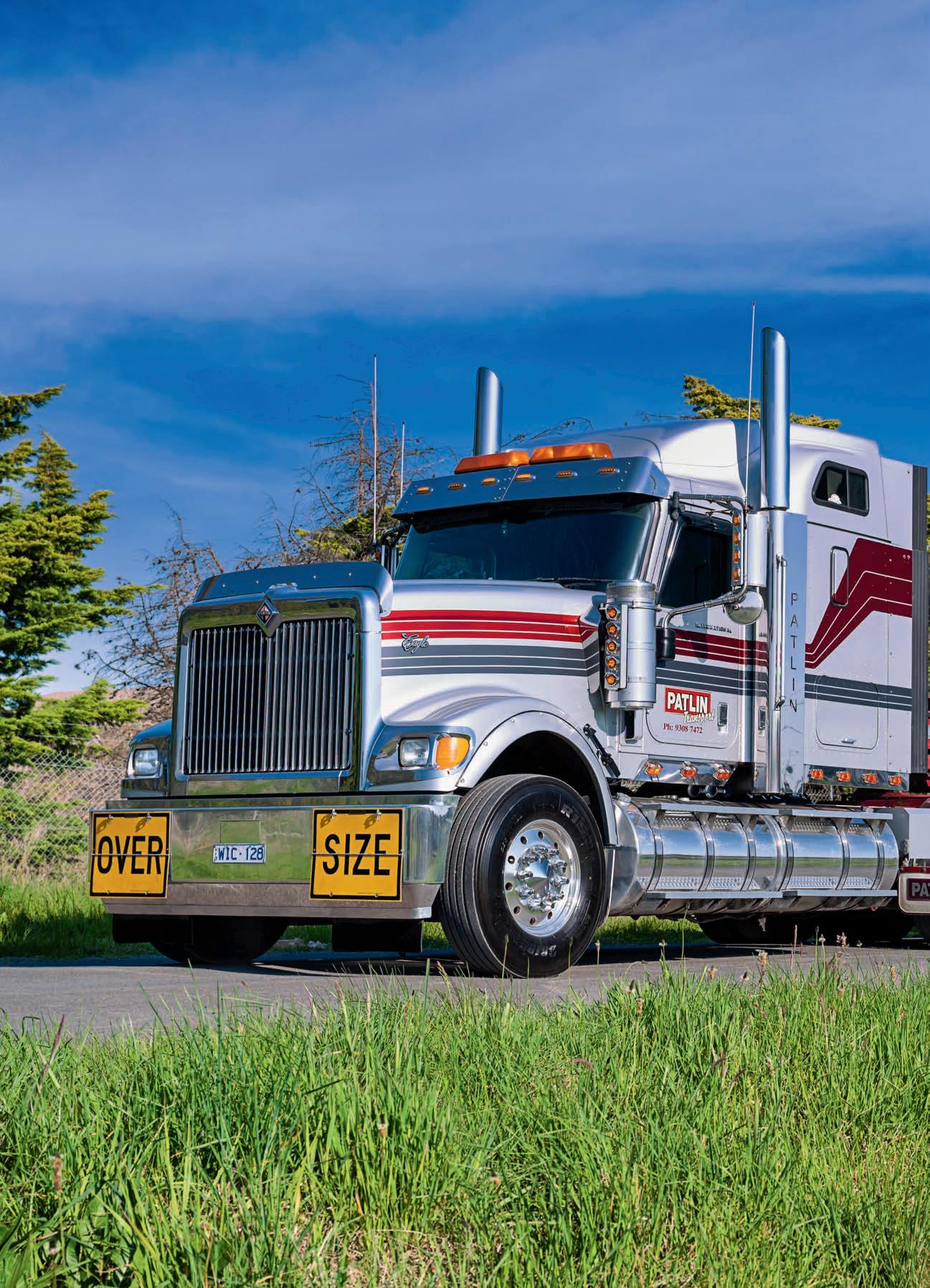

a sight to on the road
The Patlin workshop is constantly in action. Maintenance and servicing is one of the company's top priorities.
trucks that could be repurposed into heavy haulage. The big TranStar was one of those that made the switch.
“We did have a fairly old fleet on the heavy haulage stuff,” Joe recalls. “We’d done up a couple of K100s as well.” Then in 2007 along came their local International salesman, Michael Zielinski from Adtrans, who steered them away from rebuilds and eventually to the stunning Eagle.
“Yeah, the local International rep came along trying to talk us into an Iveco. He tried to sell us a Stralis and we just said, ‘sorry Mick, you’re a great bloke, but nah’,” Joe laughs.
“So he said, ‘Are you interested in the Eagles?’” Joe admits that he hadn’t really had much to do with Eagles but as the International badge was damn near tattooed onto the family crest, they happily took possession of a day cab version for a week to test it out. “I loved it,” Joe exclaims.
As it happened there was one just being built at the same time as Joe was falling in love with the demo. It was 135 tonne rated with spring suspension and a 50-inch bunk … and all the rest of it. It ticked all the boxes for Patlin. The day cab demo had won them over and another International joined the fleet.
As much as Joe loved it, Pat informed him that it wouldn’t be his truck. Family or not, Joe was still down the pecking order. The truck was offered to another driver, Tony, who had been with the company for a while – and still is. But Tony preferred to stay in his cab-over. It was Joe’s lucky day. The TranStar was handed to the next driver and Joe took the reins of the new Eagle.
“At first we thought it was a bit big for the local stuff we were doing but it was fantastic,” Joe says. “Comfort-wise there wasn’t much difference between it and the TranStar but there was no comparison in power. I went from a 525 N14 14 litre with 1850lb-ft torque wringing its neck all the time to this thing (a Cummins Signature 620) where it didn’t have to work as hard.”
The Eagle was Joe’s pride and joy for five years. Even now, 15 years after it hit the road, young Jayden tells me people in the trucking fraternity still refer to it as ‘Joe’s Eagle’.
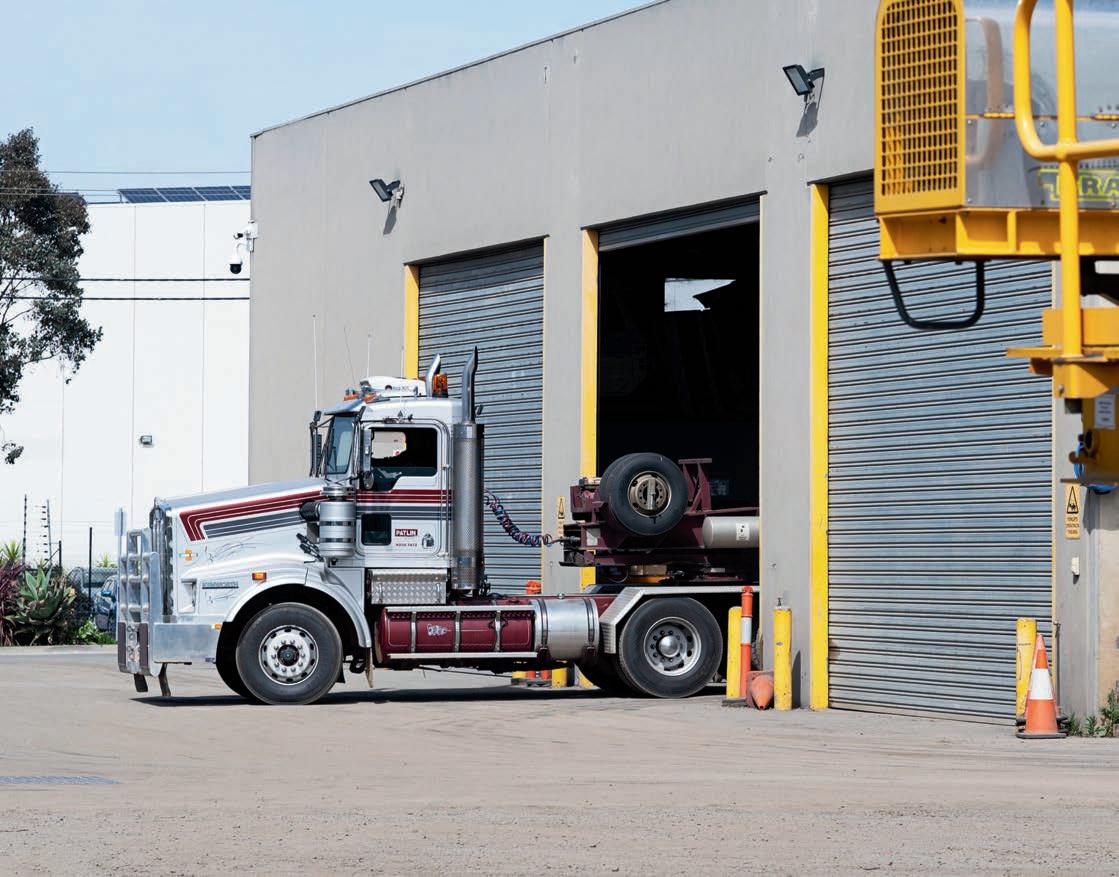
When the time came for Joe to transition into the office it meant sacrificing on-road time with his Eagle. But he couldn’t relinquish the keys.
“I’d have it parked in the yard just for when I had to do a run,” he laughs. He was unwilling
to let anyone else play with his beloved Eagle.
“It got to a point where it started to deteriorate, the tanks were faded, the bar was fading. I was only driving it maybe once or twice a month,” he says. “So it was time to put a driver in it.”
Joe reluctantly tried introducing drivers to the truck while also trying not to use send it out too often as he tried desperately to make sure it was always available when he had a run to do. “It wasn’t easy, it needed to work but I didn’t want it to do too much”.
Joe admits it wasn’t everyone’s truck of choice, as they were seen as a cheap truck. Drivers were preferring the bigger badges that were joining the fleet rather than the Eagle which was by now over 10 years old.

Along comes Jayden. Young Jayden is another one of those born-in-the-industry young fellas that takes immense pride in not just the job he does, but the gear he operates.
Getting the Eagle was a dream come true for Jayden. He had first laid eyes on it when he was only 14 and the truck was only about a year old. “Me and dad had gone to Patlin cause dad was borrowing an old 601 and I saw the Eagle,” Jayden recalls. “I said to Joey, ‘I’ll get your big Eagle off you one day’ and he just laughed at me.”
At age of 22, after several years operating machinery, Jayden landed a job with Patlin. His eye was still on the big 9900 and he made that very clear.
By this stage Joe was in the office and the truck was at the ‘it sits still until I need to drive it’ phase. Instead of relinquishing his Eagle, Joe put young Jayden in one of the company’s other Eagles, a day cab version. This only fuelled the fire for Jayden, making him keener than ever to get into the big girl. As Patlin helped Jayden progress through the different stages of heavy haulage he went through several of the company trucks, eventually ending up in a K108 doing the big shifts.
Another classic truck found in the Patlin yard is this old hard working Titan

Here is where we acknowledge the rewards of persistence, keeping in mind that Jayden admits to badgering Joe every week about taking the Eagle. Setting the scene again, the K108 was in getting a turbo done.
“Joey came out and said to me, ‘take the Eagle and charge the batteries for a couple of days’,” Jayden recalls. “I washed it every day I had it and even told Joey I’d take it on the weekend to give it a bit of a tidy up.” A couple weeks after that taste of Eagle life, Jayden got the call from Joe to remove his gear from the 108. The Eagle was his.
“I was stoked, all my dreams had come true,” Jayden says. It was a truck he loved and a truck he was proud to drive.
He admits the old girl was a little neglected when he was given the keys but
that was two and a half years ago and there is no neglect to it now. “I clean it all the time,” Jayden admits. “Every six months I also get my mate at CIH Truck Shine & Fabrication to polish everything.”
It’s not just the look that does it for Jayden though. He has covered vast tracts of the country in the Eagle and praises its ride and performance as highly as its looks. “It’s like a Cadillac of trucks, it rides beautifully.”
As the truck passes its 15th birthday it is still both Jayden and Joe’s pride and joy. I’m sure Joe would love to be on the road a lot more but admits it is reassuring to see how well Jayden looks after ‘his’ truck. “Jayden really does keep it Mickey Mouse,” Joe says.
As I look to summarise this story and get myself some more time to enjoy the photos, I do want to acknowledge this hardworking family company.
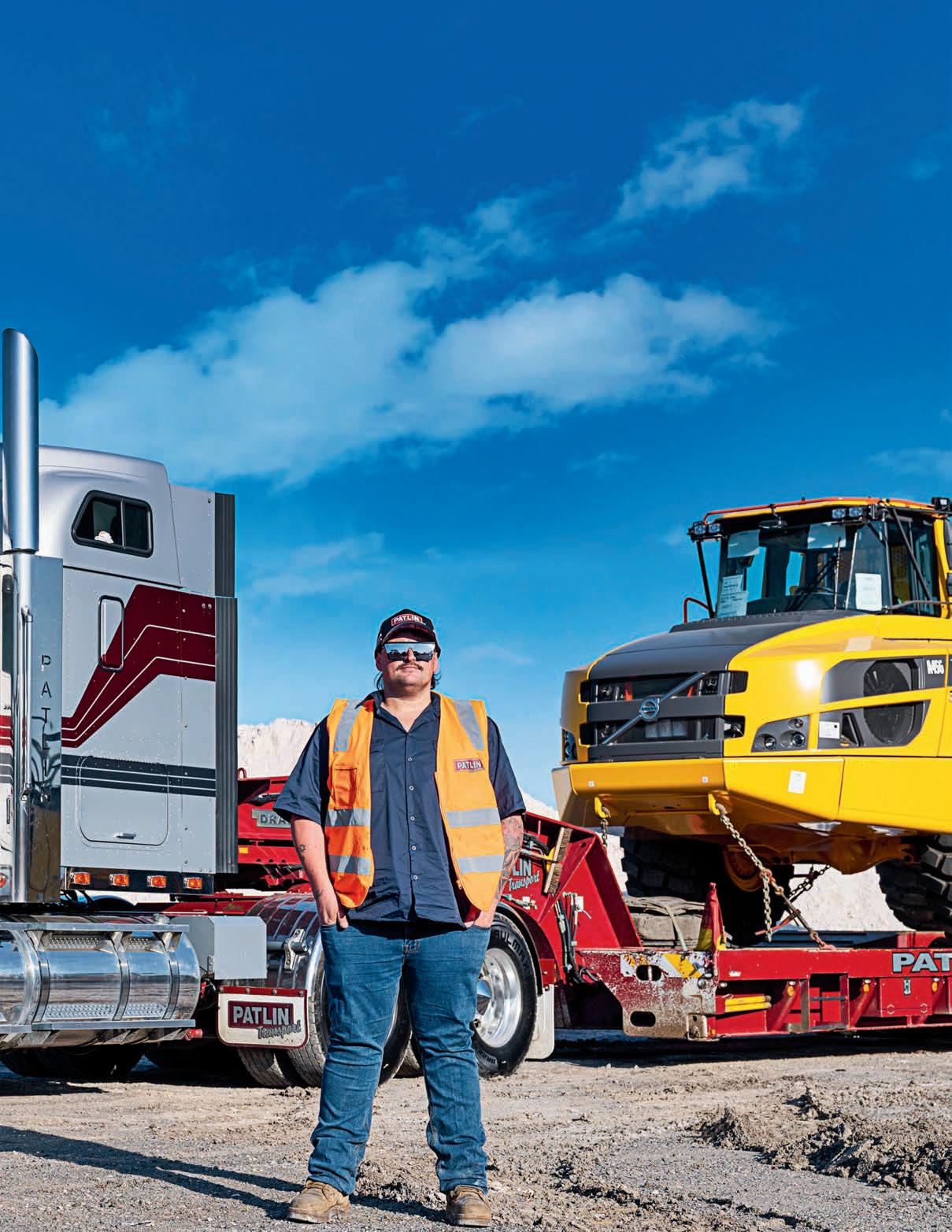
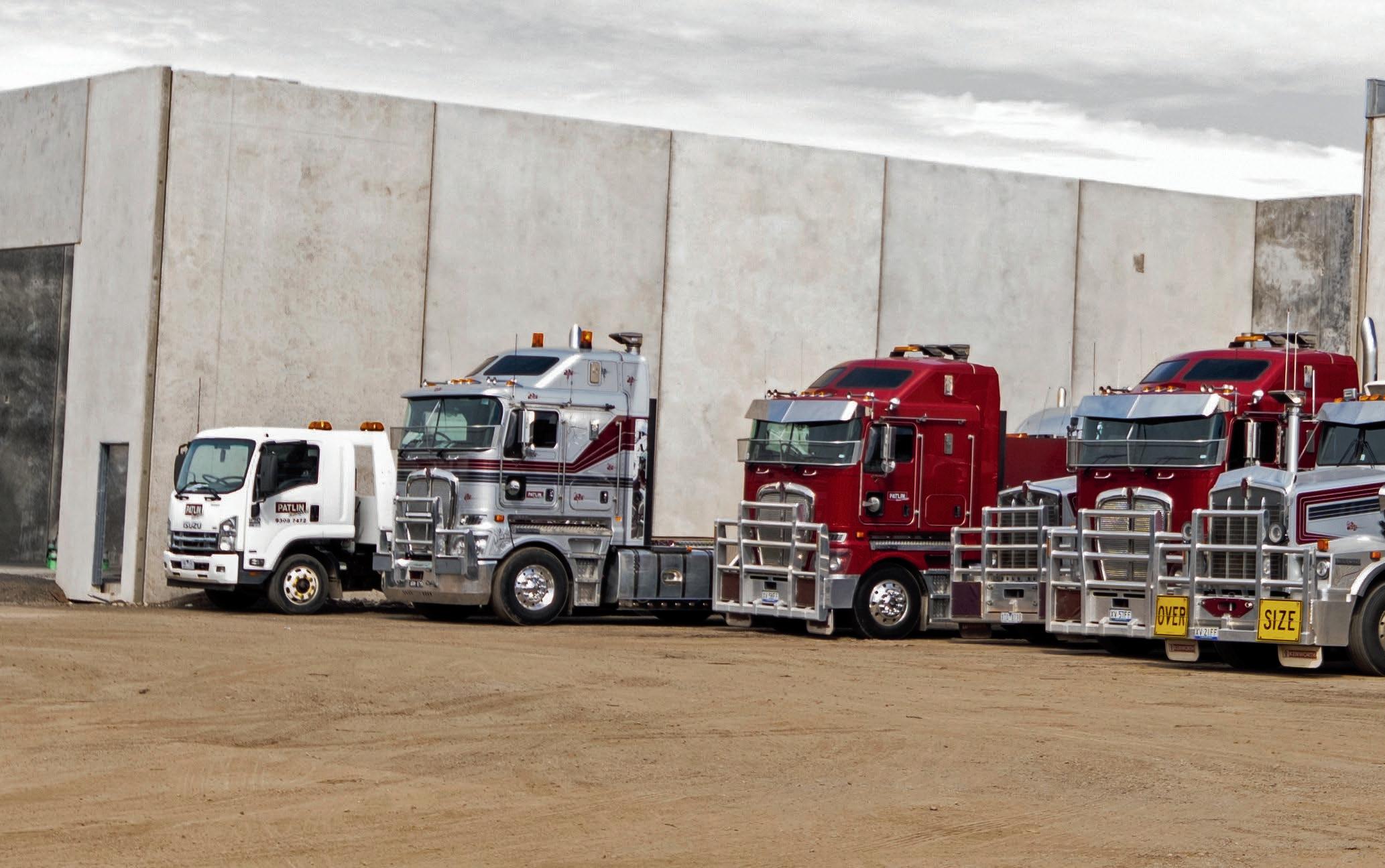

There are many traits that have aided in Patlin’s success. I’m not merely referring to the dependable Internationals that helped build the business. I’m talking about things like their emphasis on professionalism and on-road appearance. Pat has always believed your trucks are your best business card. The Patlin Heavy Haulage colours are as eye-catching as it is simple.
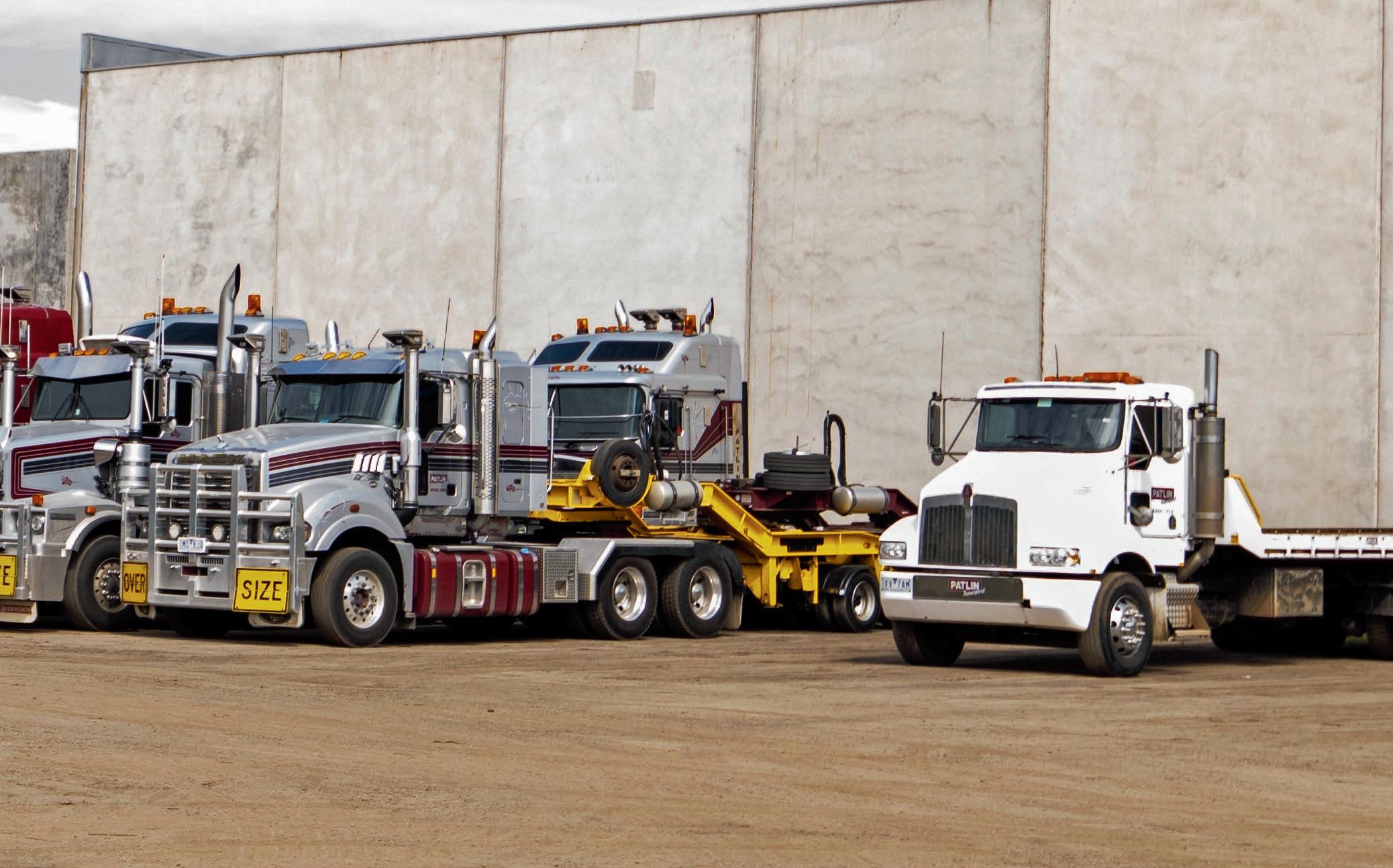
“The colour scheme actually came from when we were rebuilding an old ACCO,” Joe says. “We bought another cab and it had those lines on it. We’ve changed the colours a bit. We don’t spend much on bling but probably overspend on paint.”
The emphasis placed on the look of their gear flows onto the workers who operate it. Along with the importance placed on aesthetics, there is huge importance placed on service and maintenance.
“Even on the C service we’ll rip out water hoses, cooling pipes – all your heater hoses get replaced. It might cost us a couple of hundred extra but it lowers the risk of one breaking out on a job,” Joe adds.
Then there’s the Patlin team, from drivers
than 20 years to new workers coming in and learning the ins and outs of heavy haulage. Cudos also need to be handed to Patlin for its work in getting more women behind the wheel of their trucks.
“We’ve got two females driving for us now, Kimberley and Jasmine, and they are doing fantastic,” Joe exclaims. “As much as people claim this is a male industry, these girls are killing it. I’d happily take on more.”
The advantage for the likes of Kimberley and Jasmine, along with other newbies to heavy haulage, is Joe and the Patlin team who place a huge emphasis on training and learning correctly.
“Our people are important, they’re our frontline,” Joe says, adding in that he wants them to learn and upskill. “Making mistakes can be a confidence killer in this game so we like to train them up through the ranks.”
When you’ve got a workplace environment like Patlin Heavy Haulage has created, it leads to higher job satisfaction. Add in the fact that they run some amazing trucks and, more importantly are very reluctant to let go of anything that works – just like the stunning
Sadly there’s less Internationals in the fleet these days but the Kenworth badge is well represented
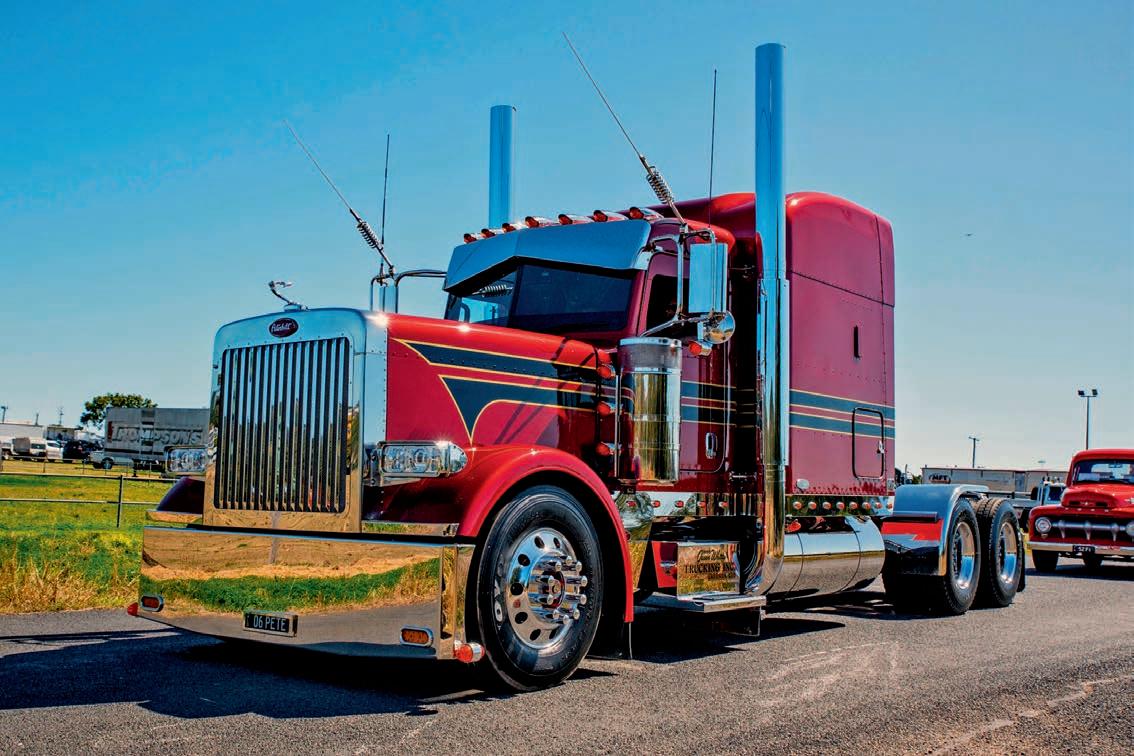

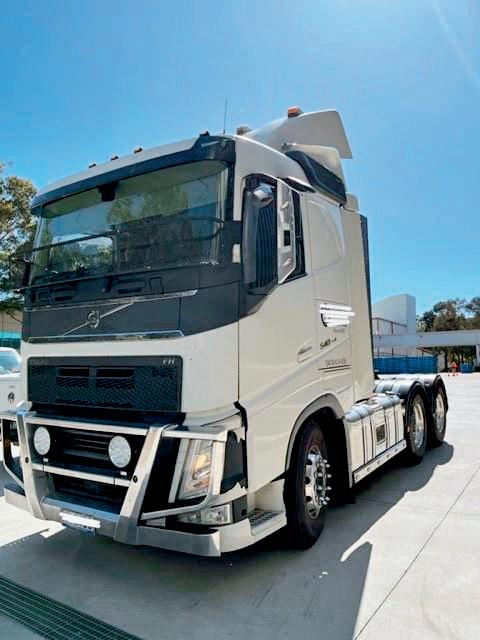











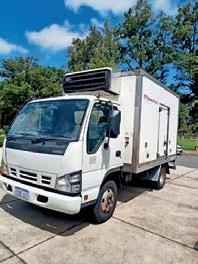
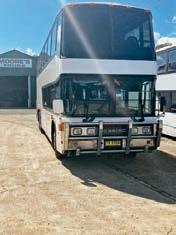

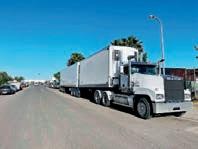



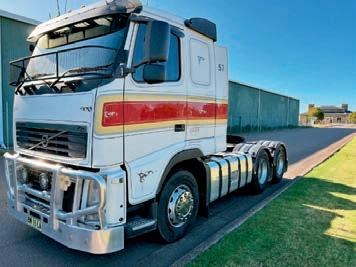

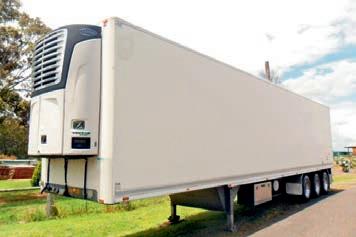
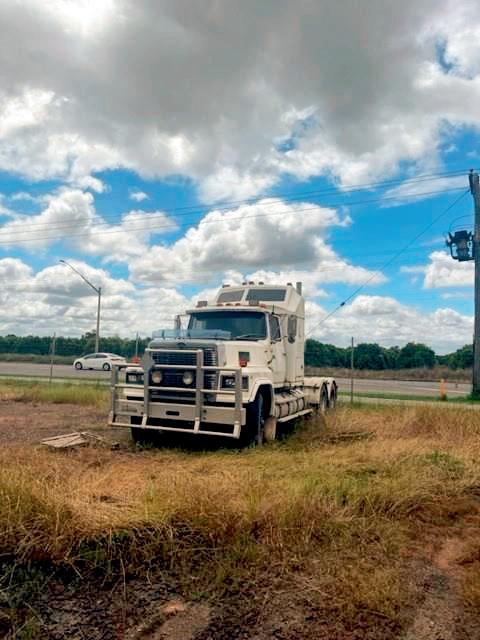
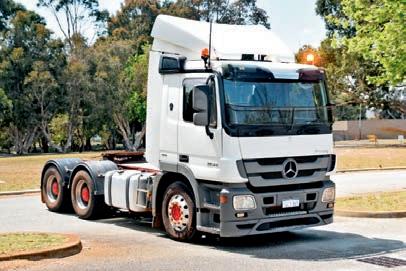
































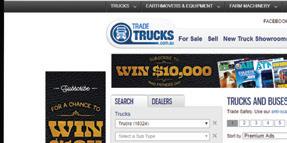













































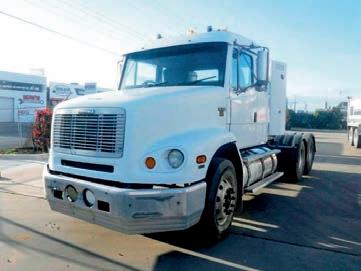
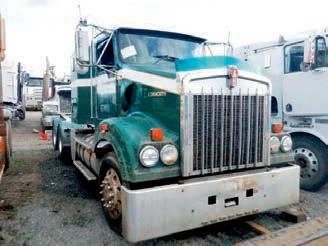




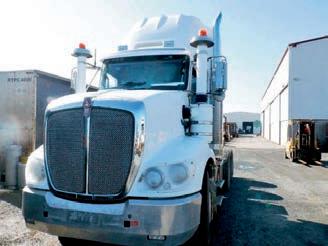





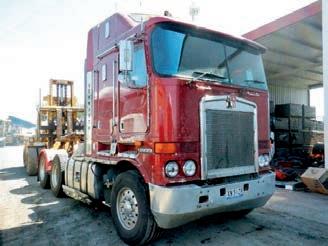






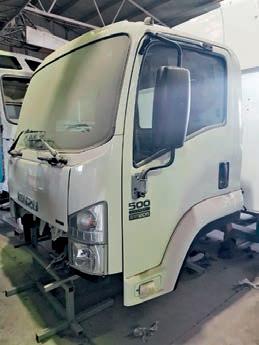

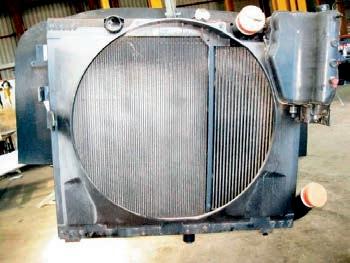


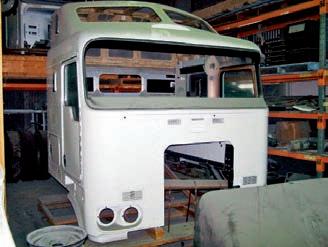




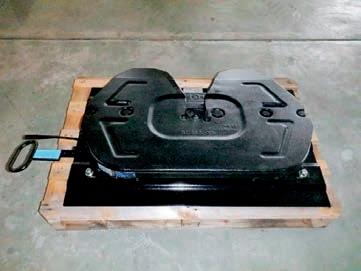

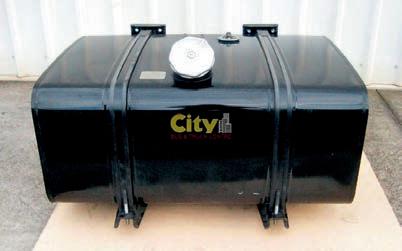




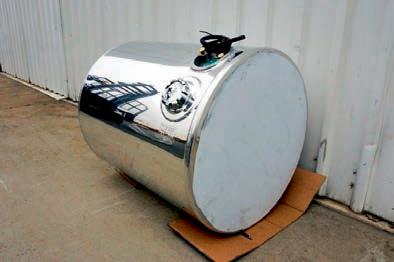

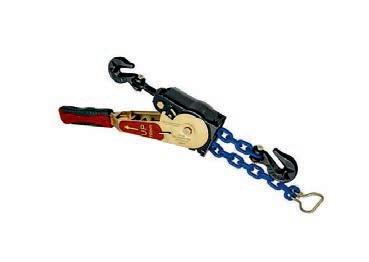




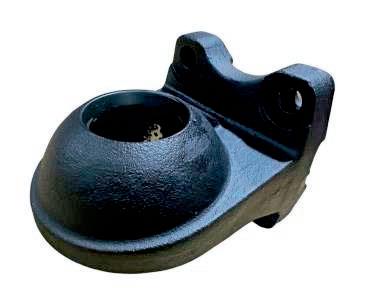
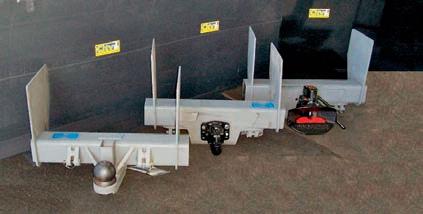

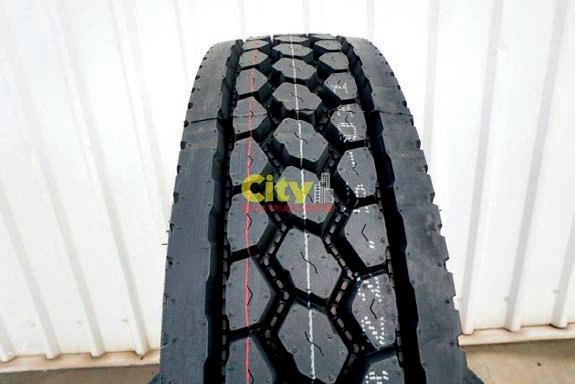













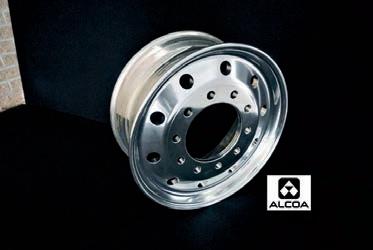
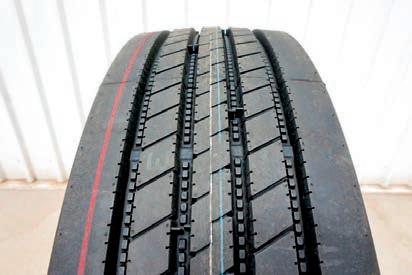











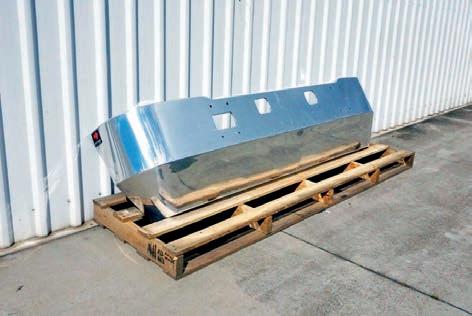



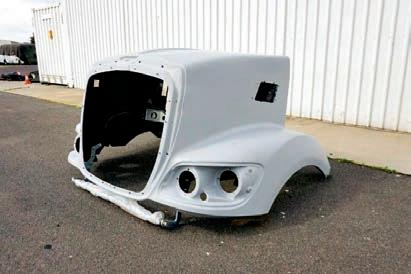






KENWORTHK200

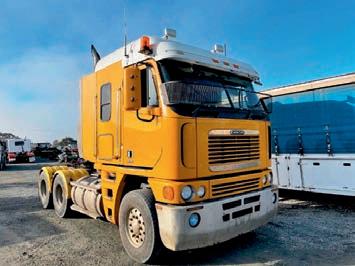
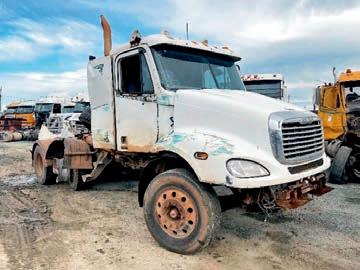



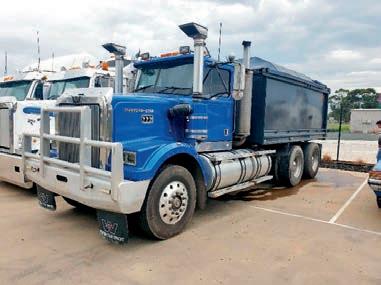

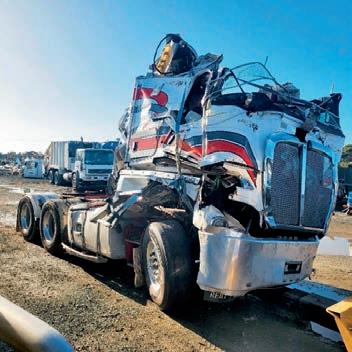
KENWORTHT909
FREIGHTLINERCL112 2006,CATC12EngineRTLO 18918BRoadRanger gearboxonAirliner suspensionwithRockwell 46/160diffs4.1XlocksNow wrecking.S/N250. TA1156211. POA
FREIGHTLINERCOLUMBIA CL112 2006,CATC-12Engine, RTLO20918BRoadRanger

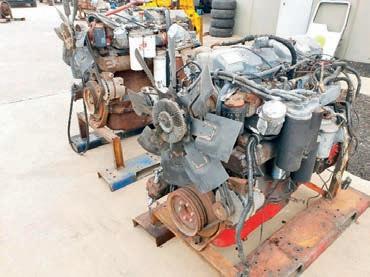




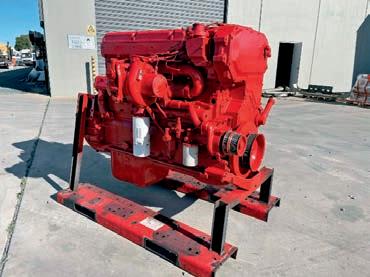

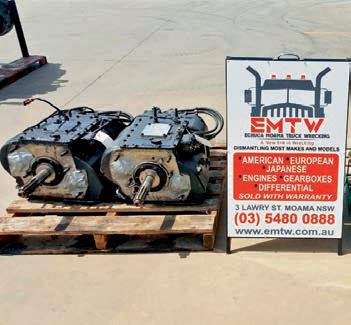








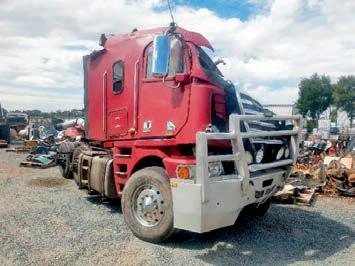
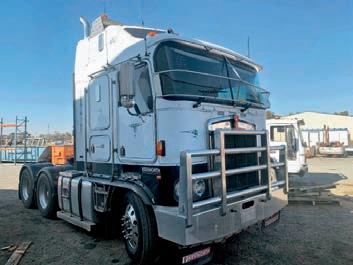


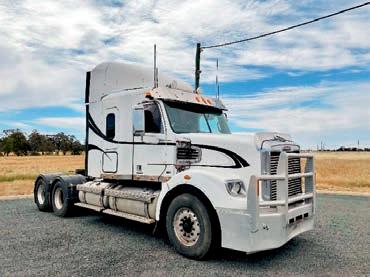
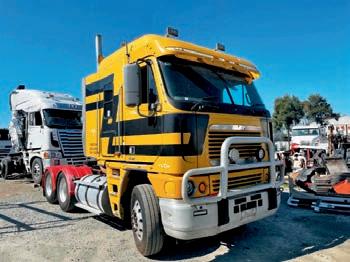




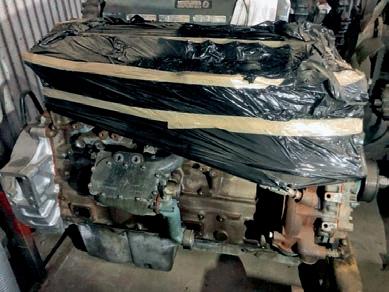





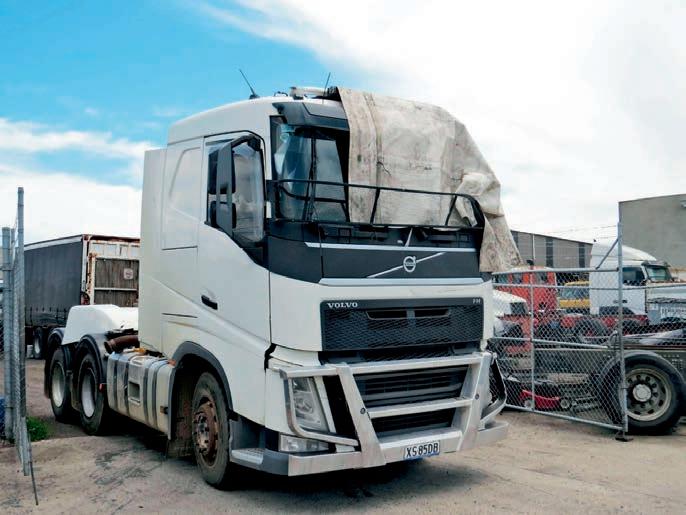

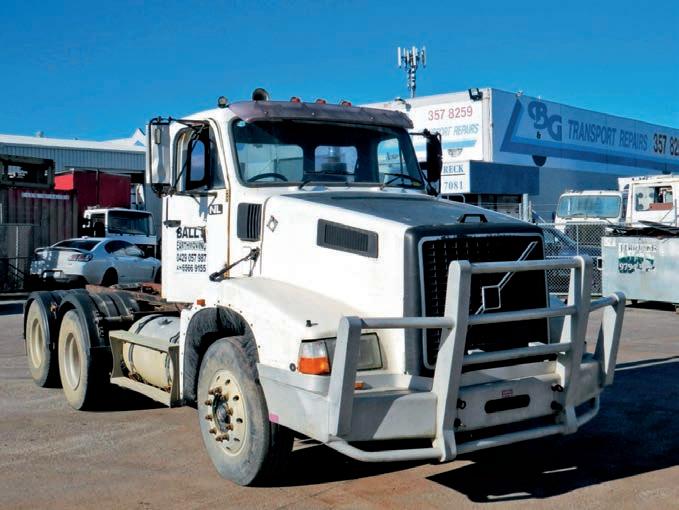
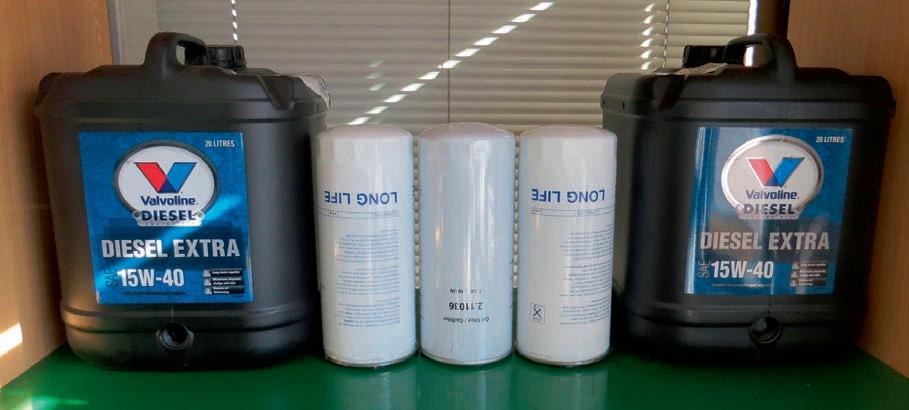



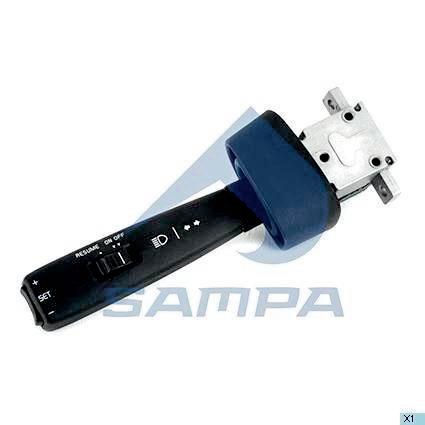

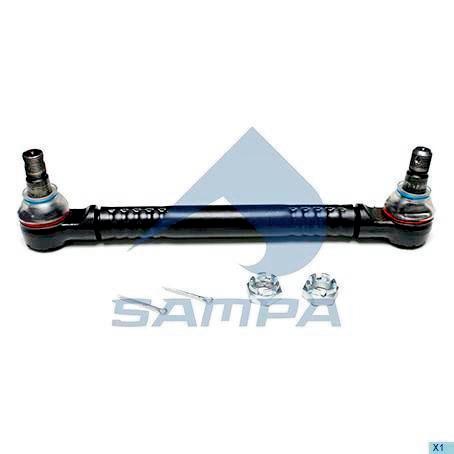
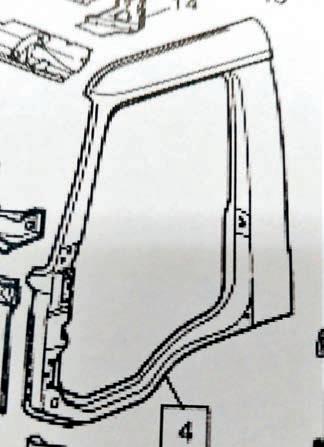
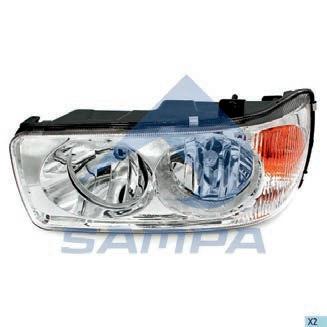








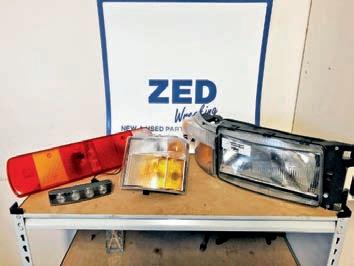






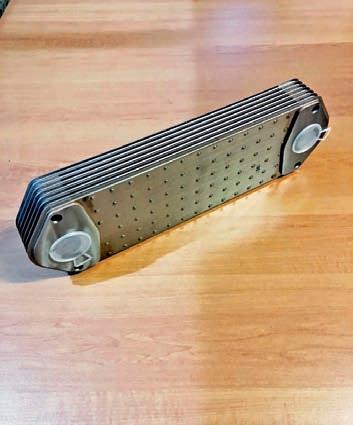



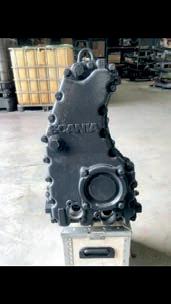
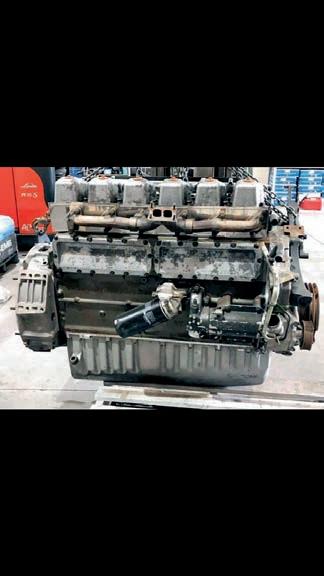
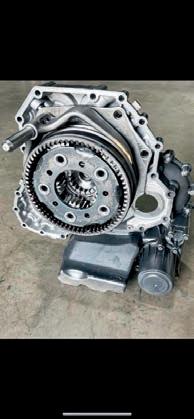



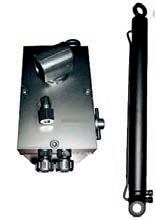



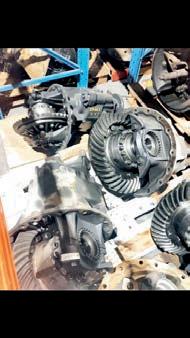












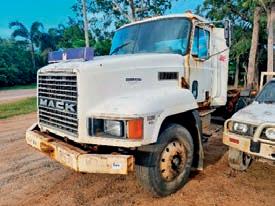



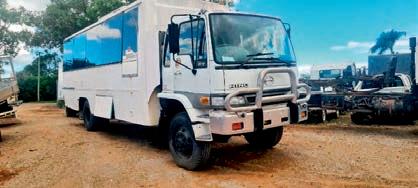
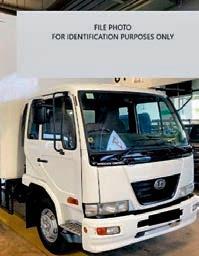










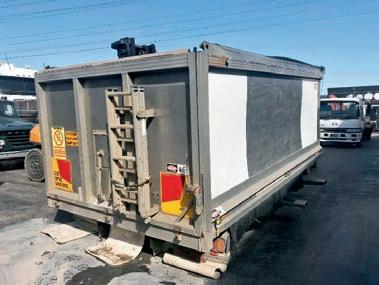
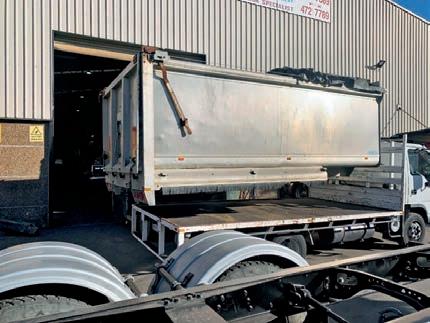
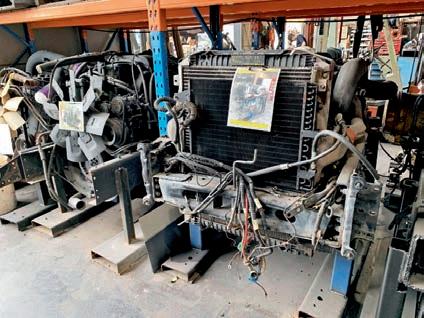
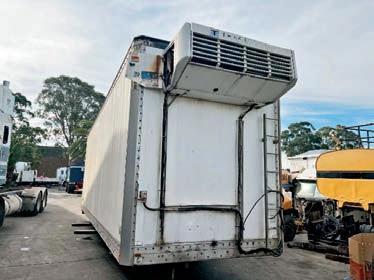


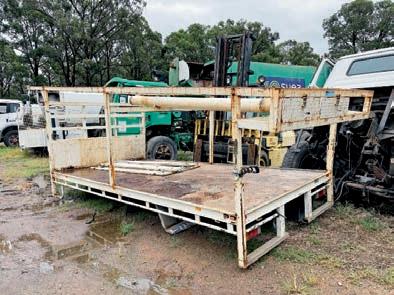


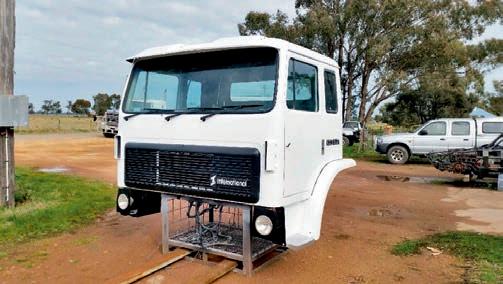


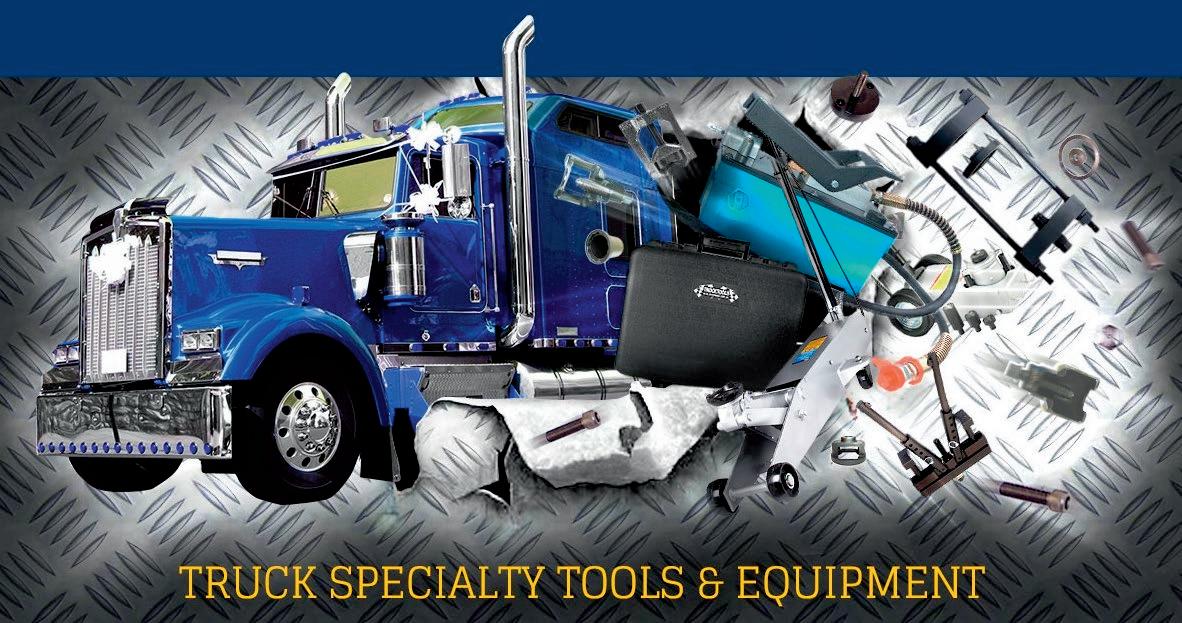

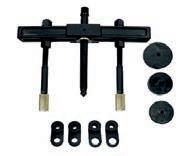

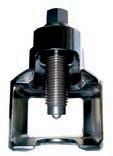

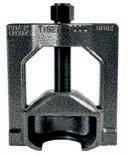













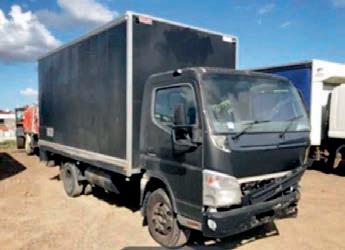



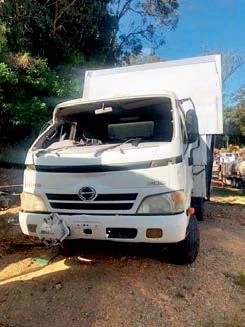




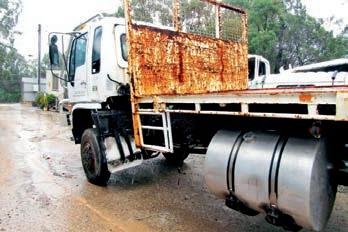
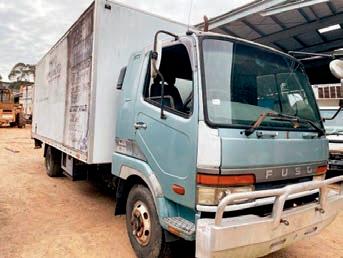
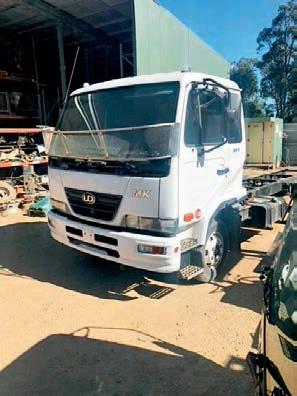


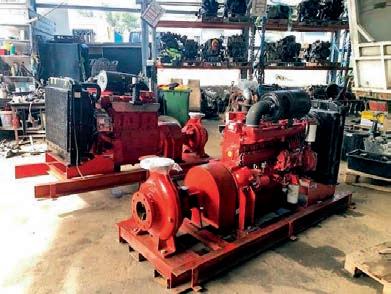

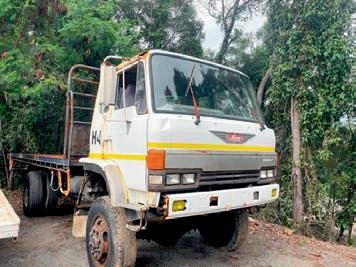
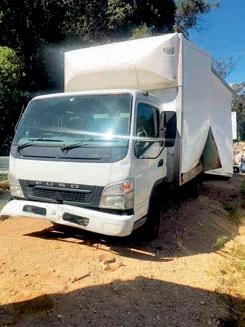




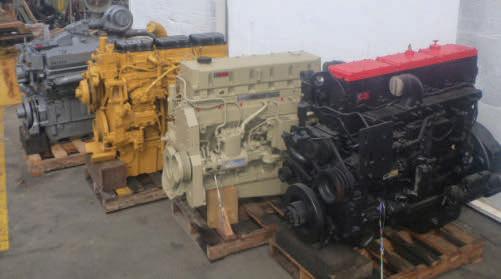

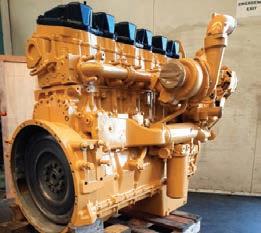


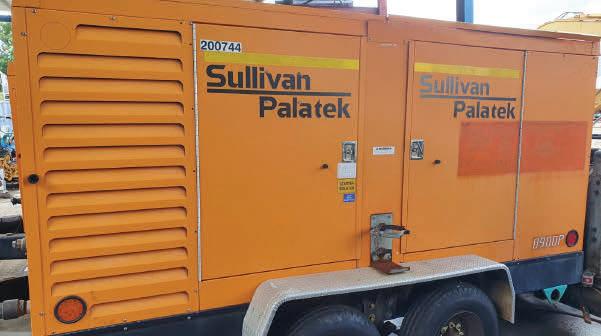




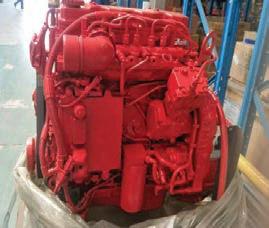


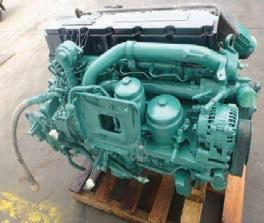

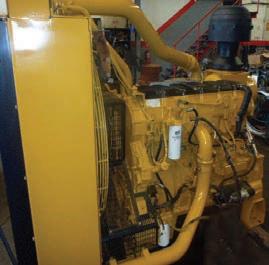
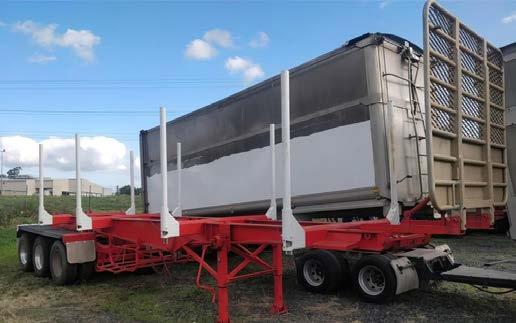
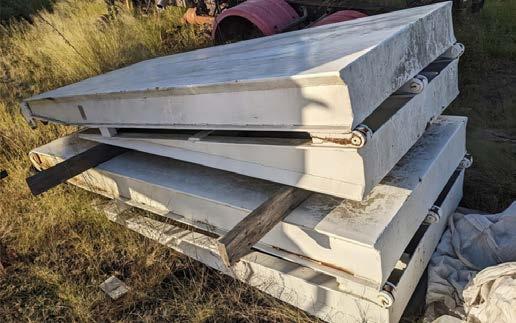

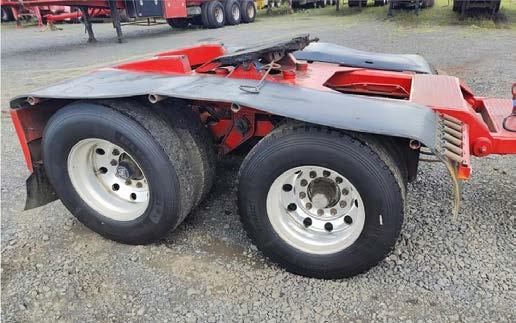



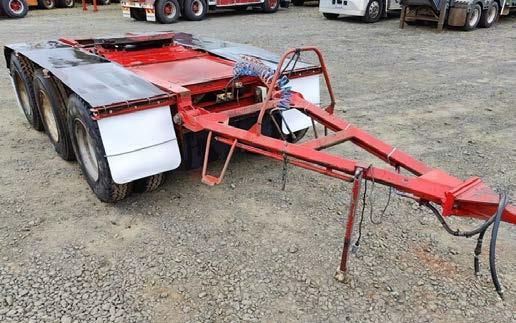





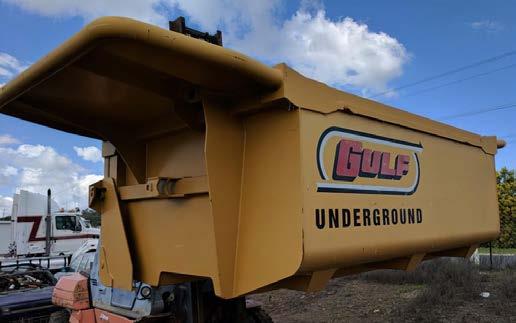

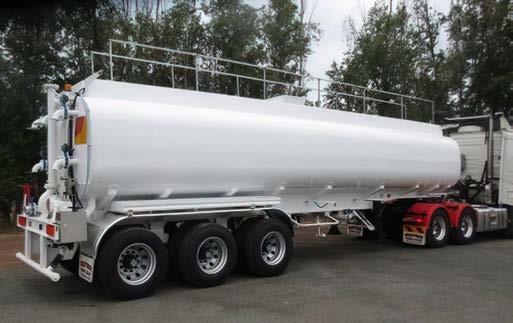


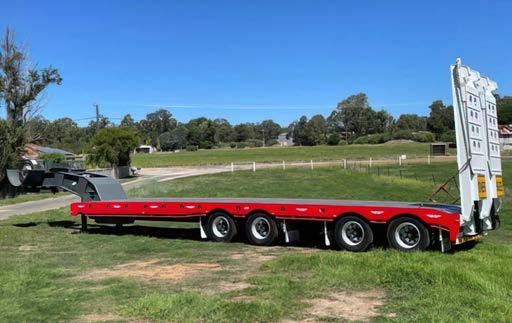
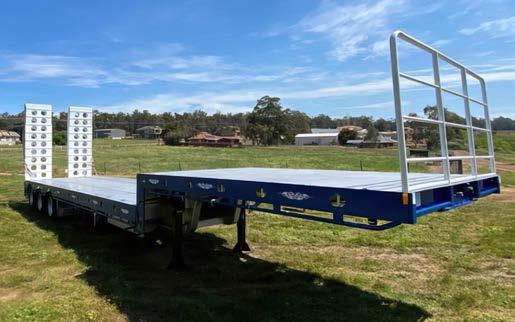







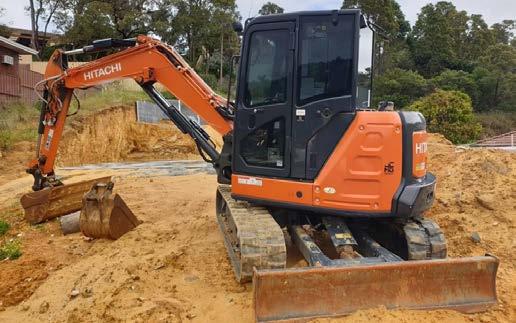

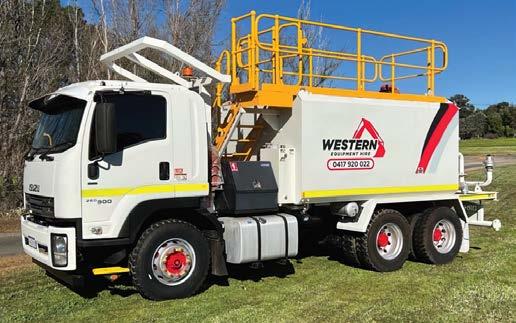


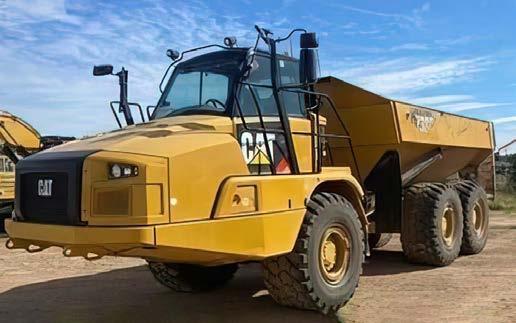

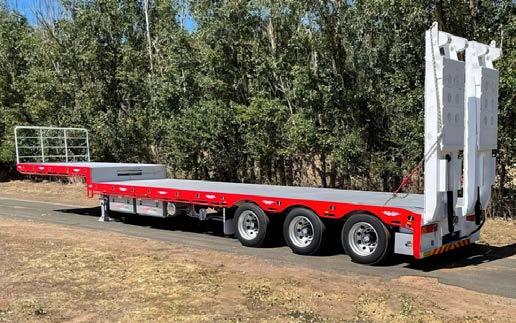



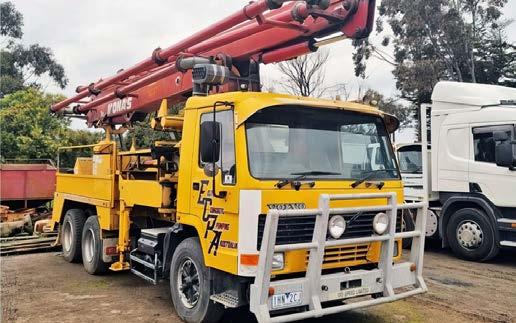
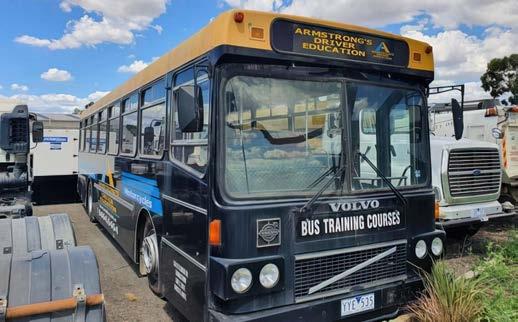


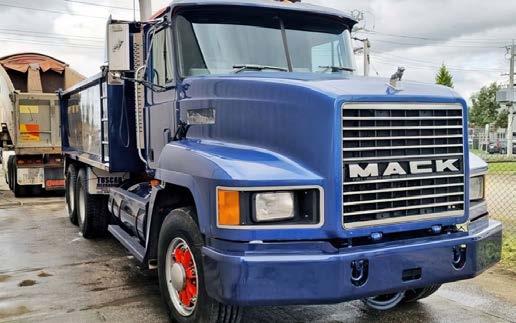


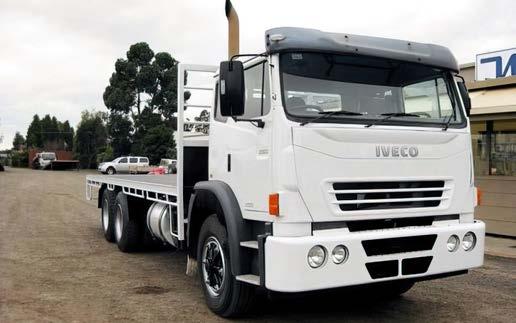

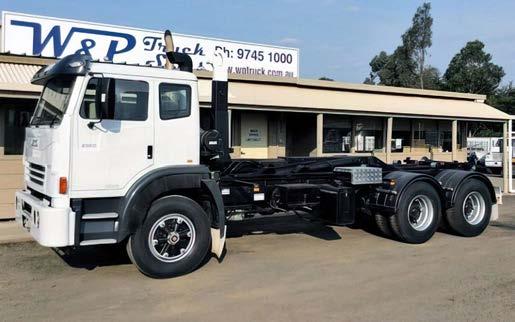





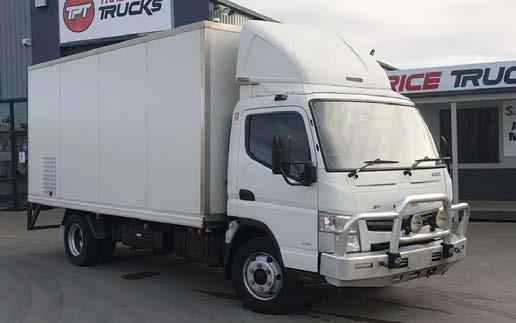

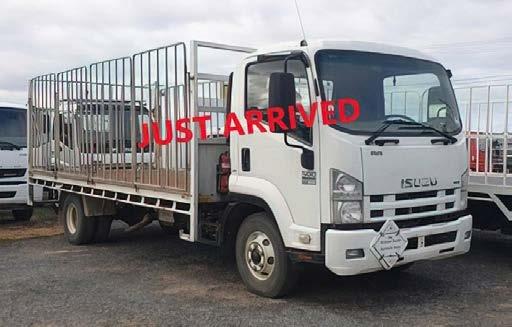

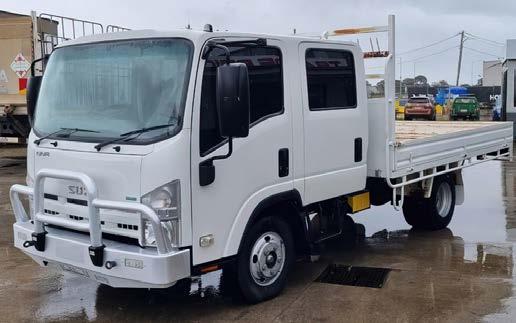

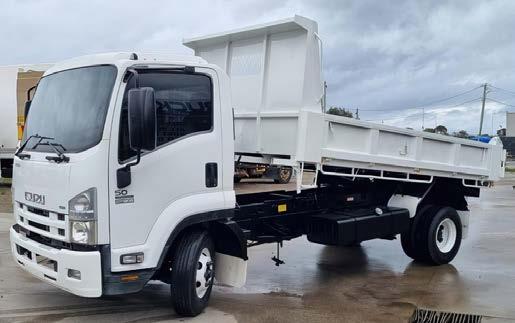

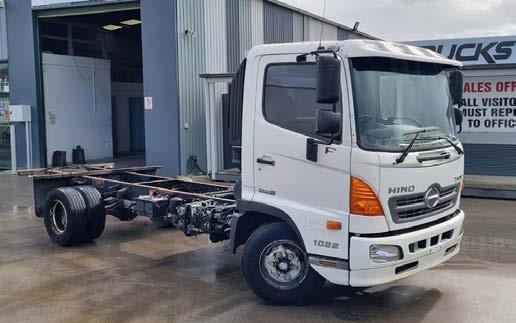





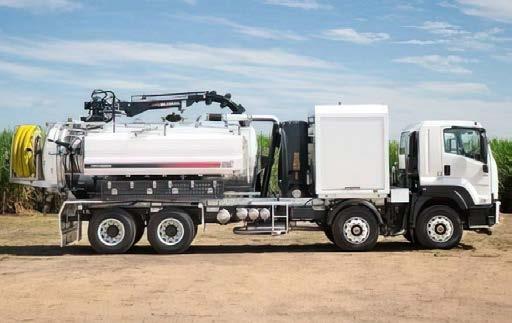

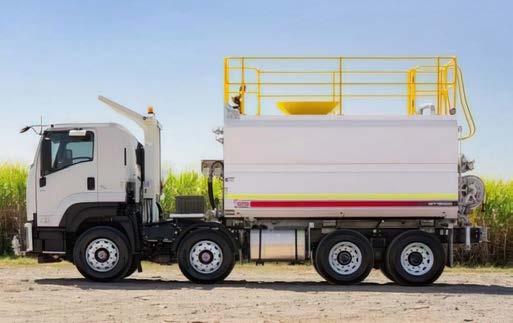


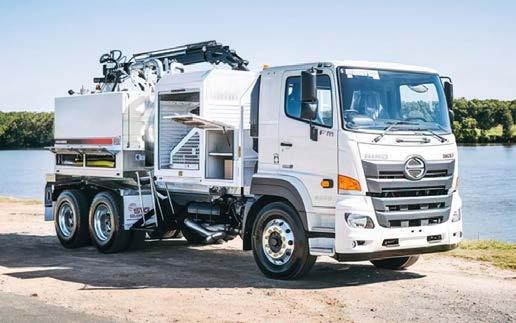


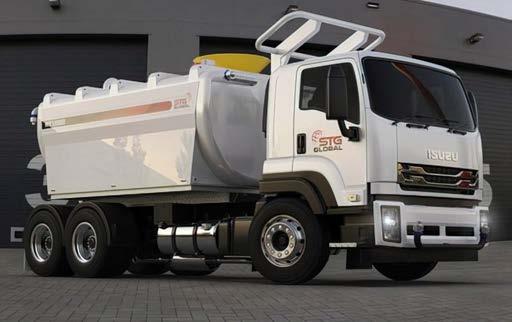

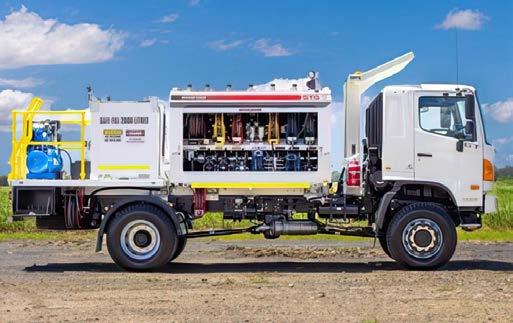


2011 Hino 500 Series
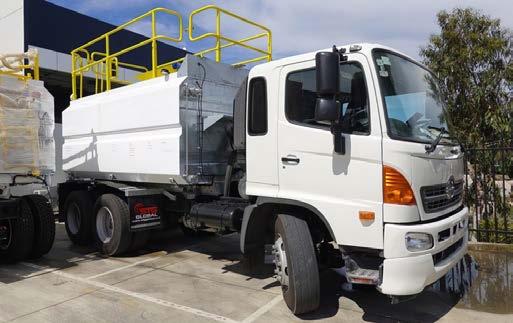


FM2628
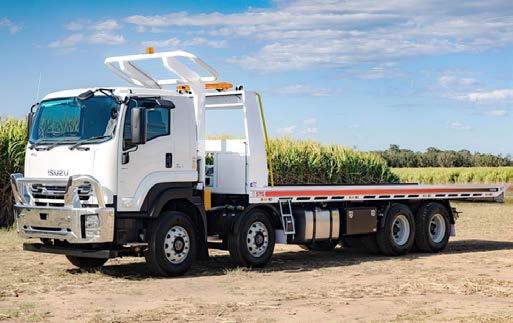





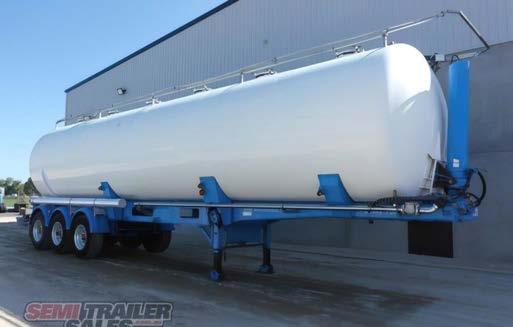

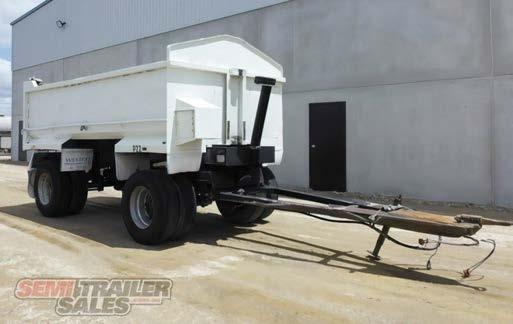


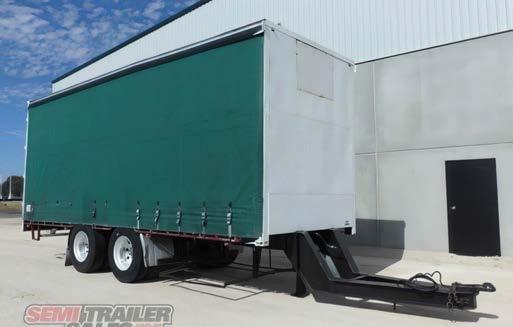
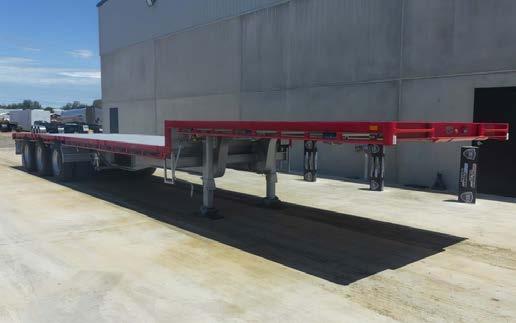





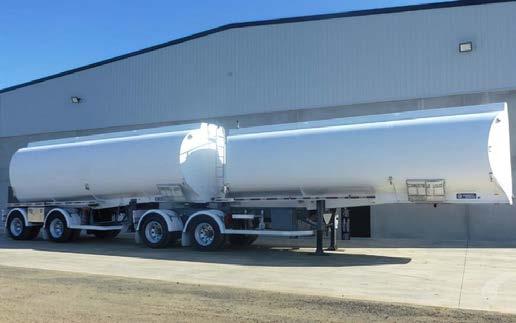






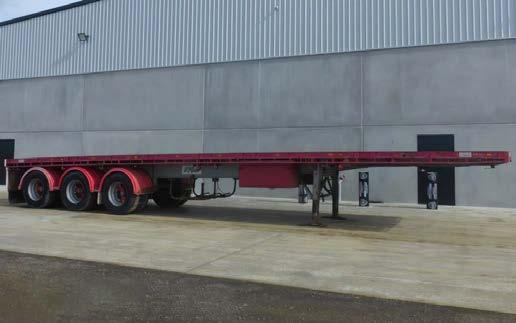



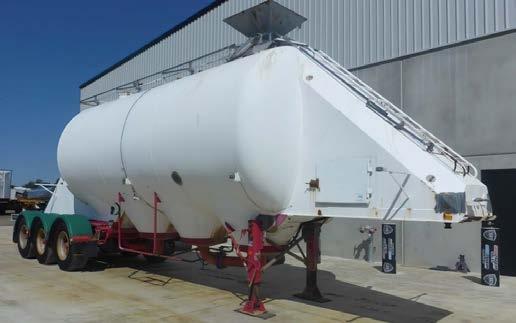
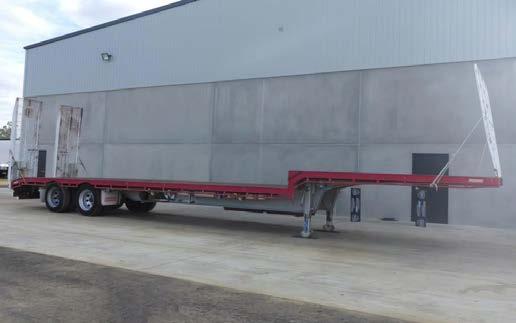













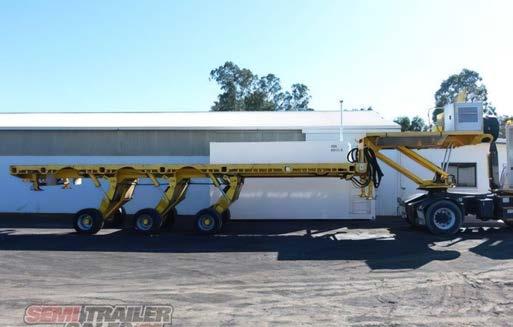


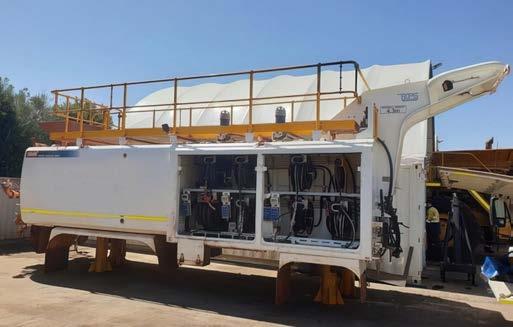
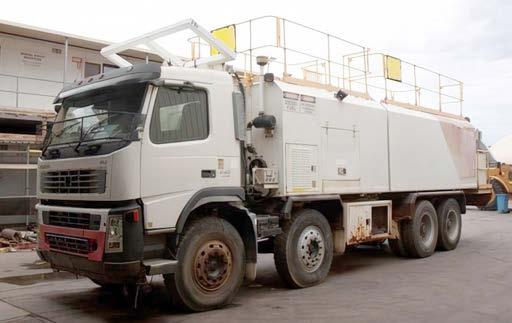


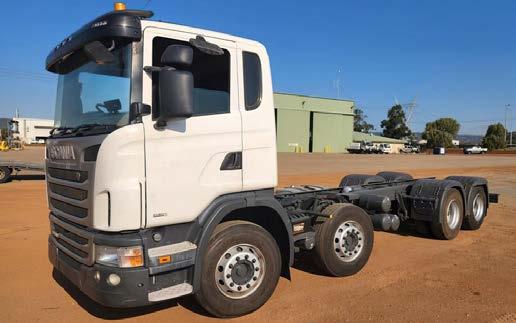
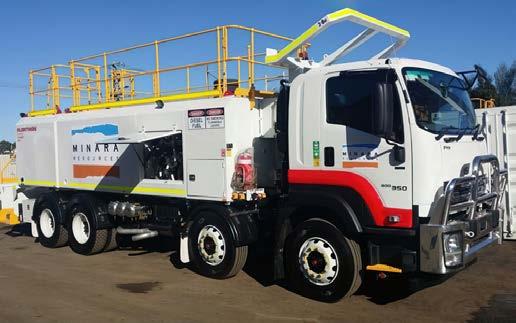


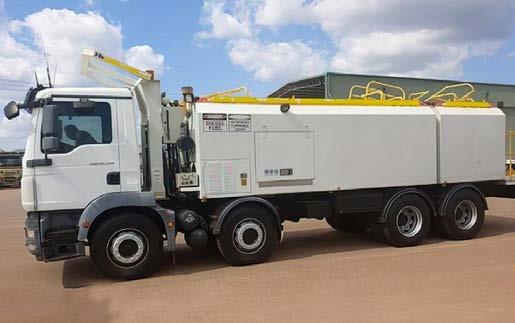
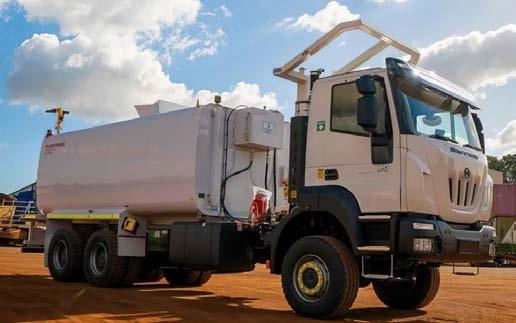


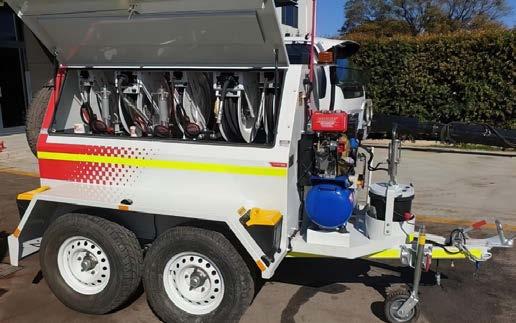

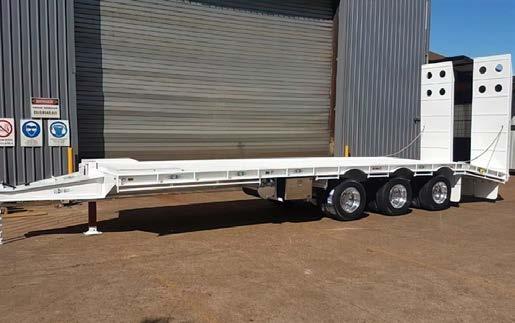


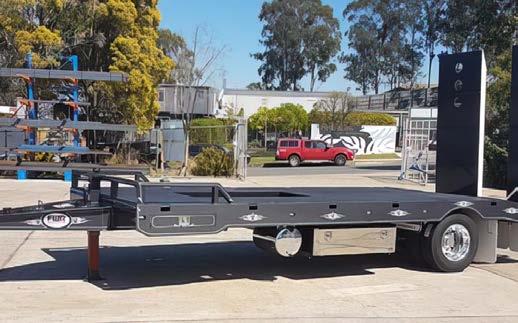


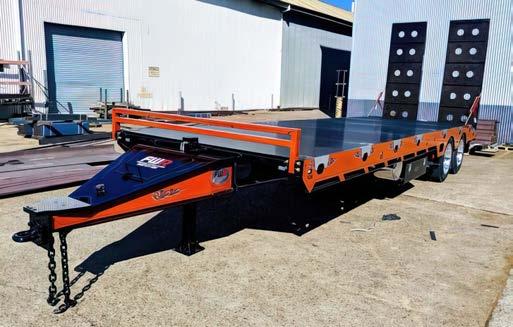


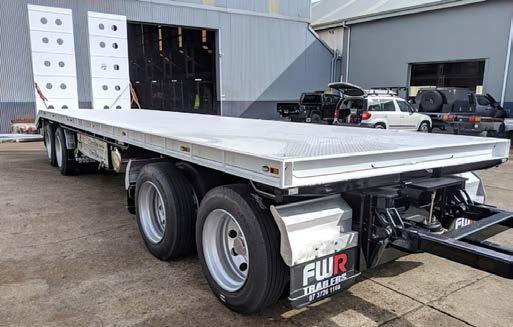











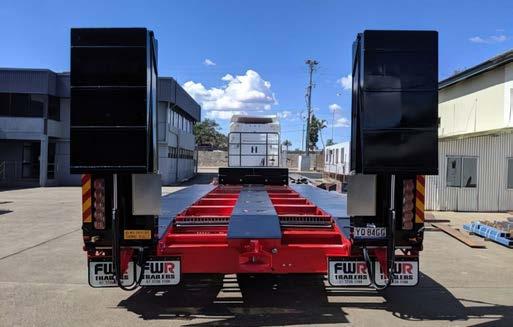




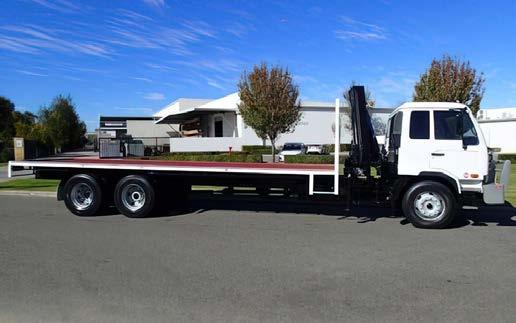





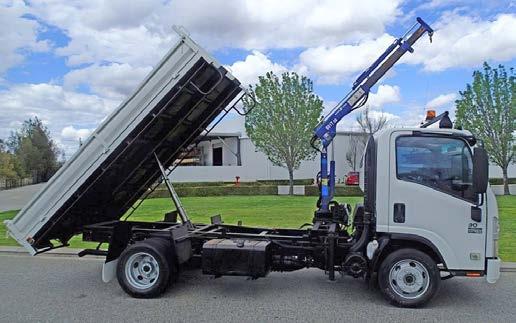

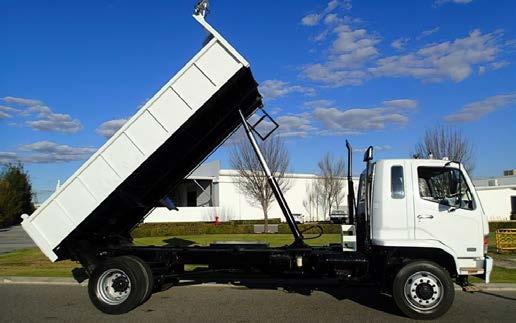




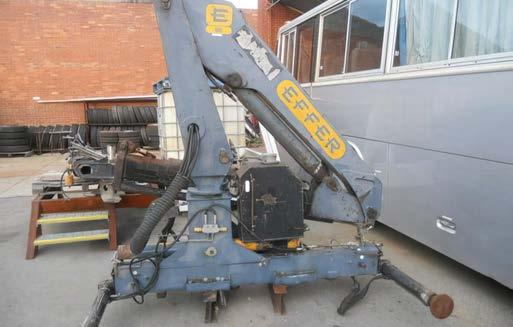
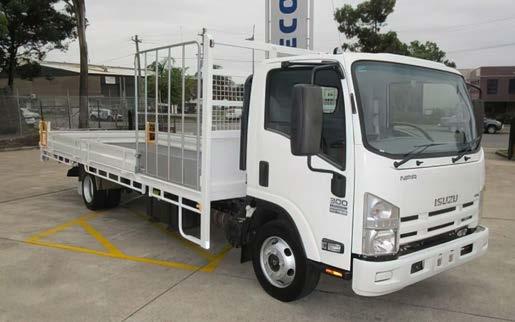




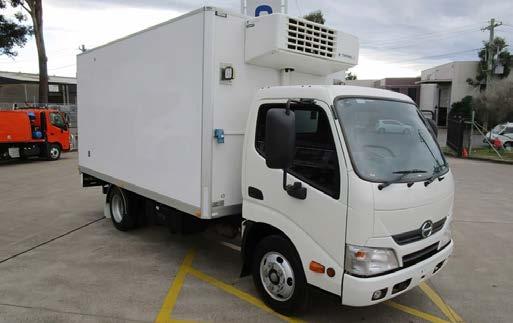
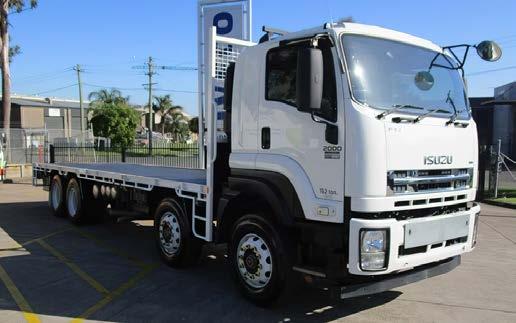
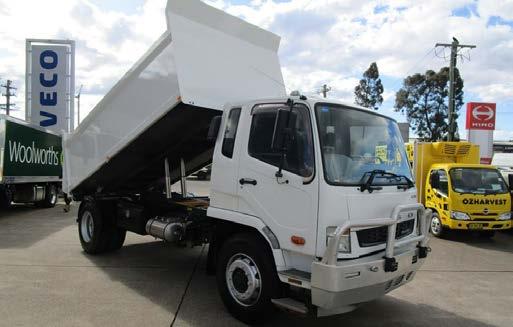


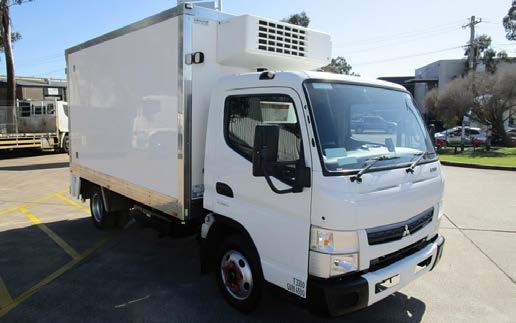












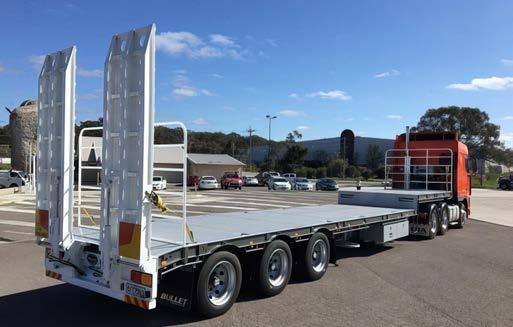
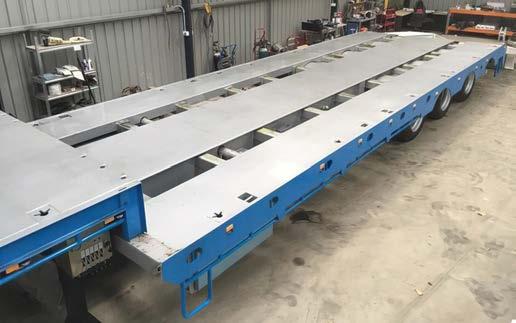
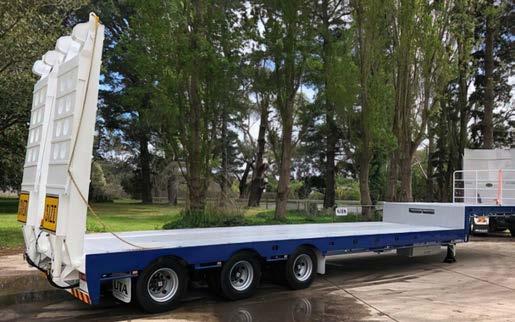






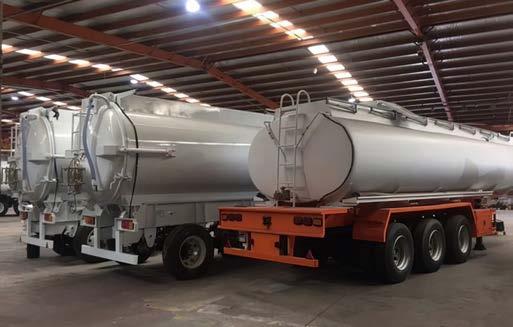
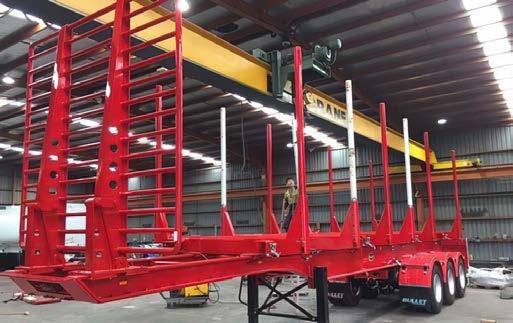
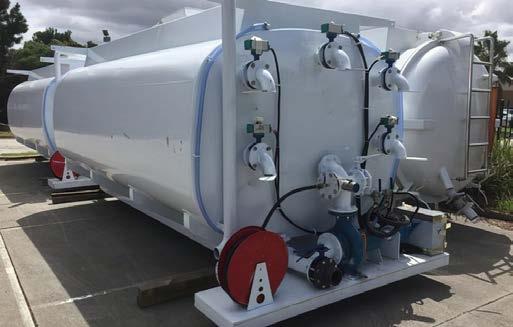

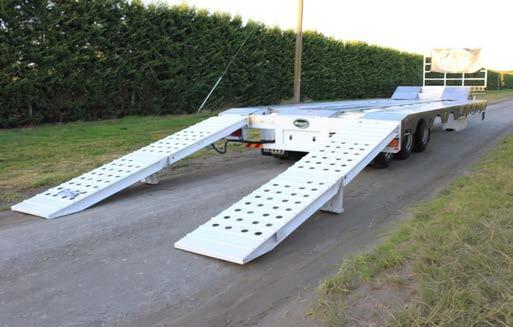





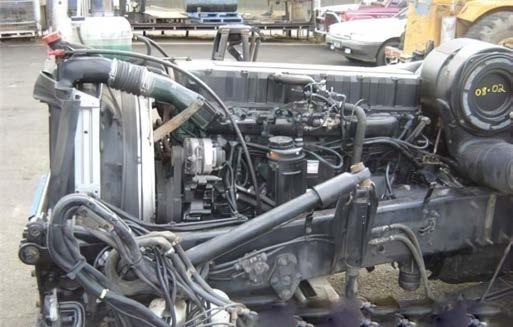


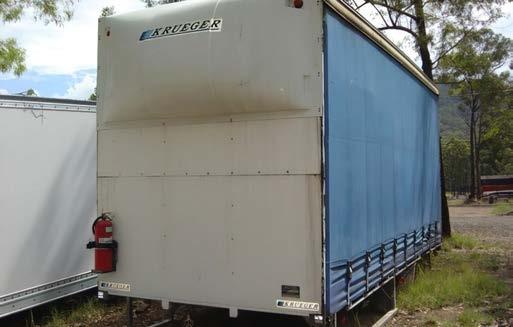


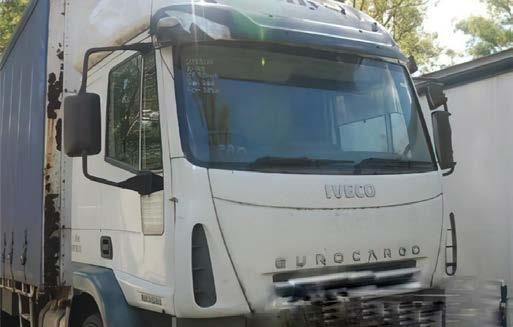
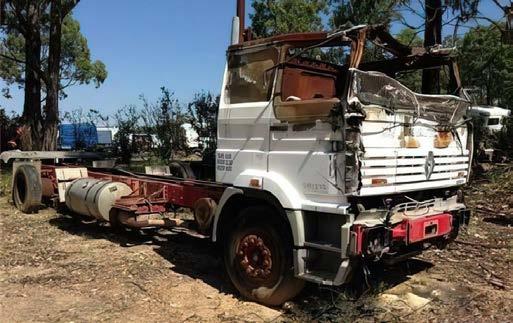

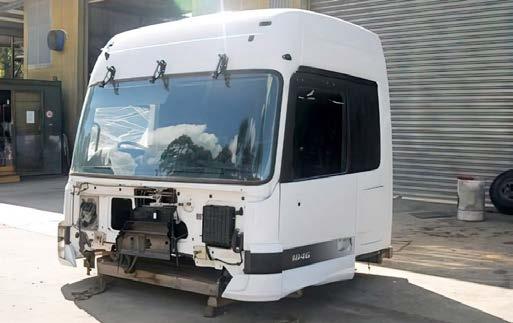








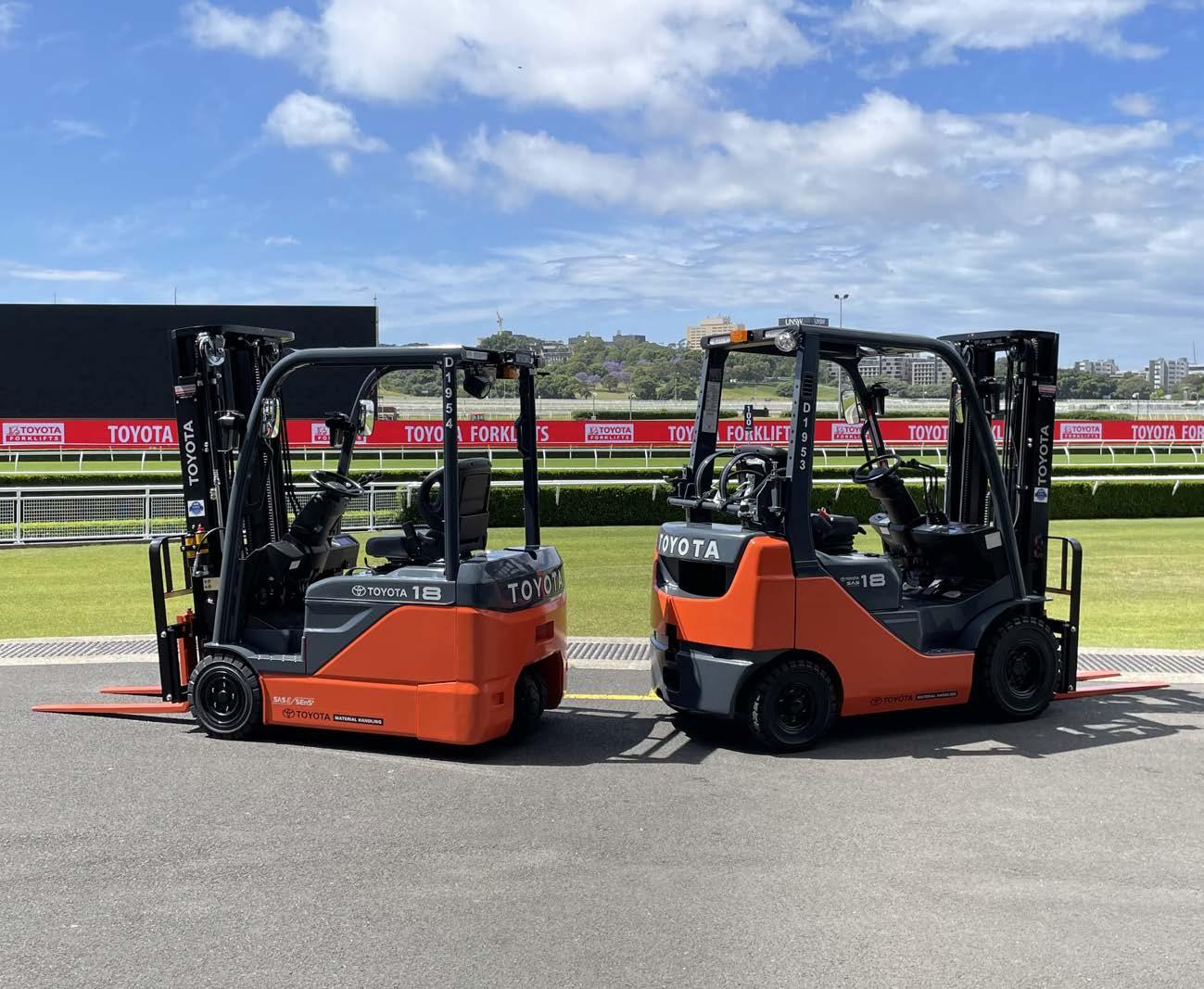
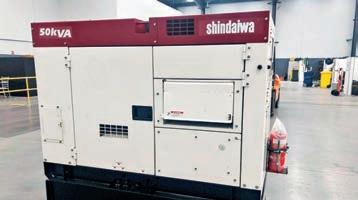
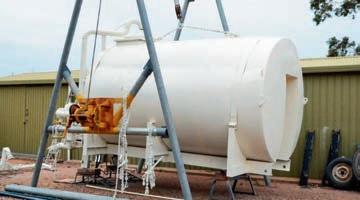




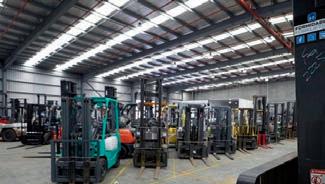



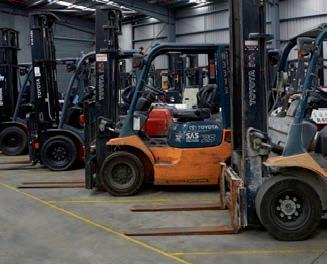
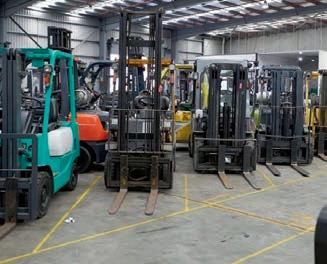







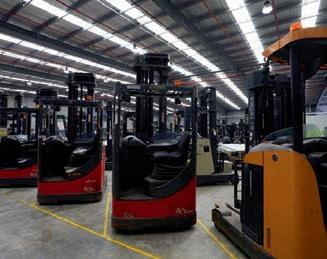

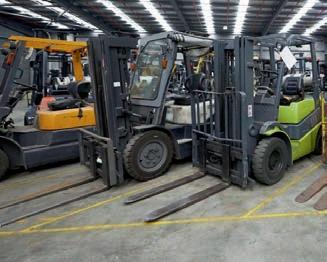

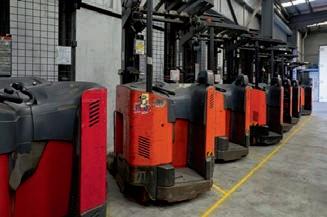
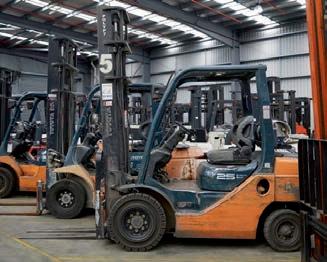


Toyota Material Handling Australia (TMHA) will become the official material handling partner of the Australian Turf Club (ATC) under a new deal that will also see the Toyota Forklifts brand become the naming rights sponsor for three Group 3 races.

The three-year partnership will commence from 2023, with TMHA set to become an extensive presence at ATC venues, which include Randwick Racecourse, Rosehill Gardens, Canterbury Park, Warwick Farm and the Rosehill Bowling Club.
Consistent TMHA signage, in-venue media and an active presence at events such as the Everest will also be a fixture of the partnership.
The three Group 3 races to bear the Toyota Forklifts name are the $500,000 Toyota Forklifts Gloaming Stakes on Silver Eagle Day, $160,000
Toyota Forklifts Doncaster Prelude on Stakes Day and $160,000 Toyota Forklifts Frank Packer Plate on All Ages Stakes Day.
TMHA will also become the naming
rights holder to several more handicap races throughout the year.
“TMHA is excited to partner with the Australian Turf Club and we are looking forward to successfully promoting our Toyota Forklifts brand. We look forward to what we are confident will be a mutually beneficial long-term partnership,” TMHA president and chief executive Steve Takacs says.
ATC chief executive Jamie Barkley also welcomed the news.
“We are extremely proud to have Toyota Material Handling Australia and their Toyota Forklifts brand join the Australian Turf Club partner family. Across their 50 years of operation in Australia they have developed into a market leader,” Barkley says.
“We thank Toyota Material Handling for their support and look forward to building a successful partnership for the next three years and beyond.”
The new XP700 tyre released by Trelleborg is ideal for low intensity material handling applications – including low working time and lower speeds.

Featuring deep lugs for enhanced traction, the tyre boasts a compact lateral block design to minimise vibrations during transport activities.
A protruding rim protector also helps to minimise damage to the wheels.
Designed to perfectly match the needs of low intensity material handling operations, the new XP700 delivers reliability, adequate load capacity and good steering ability, while minimising downtime to keep costs under control.
The tyre also incorporates Trelleborg’s easy to recognise, user-friendly labelling system to help customers select the right tyre for their operations according to application specific requirements and intensity, improving overall performance.
Trelleborg Wheel Systems product marketing senior manager Alessio Bucci says that having the right tyre is the key to maximising efficiency.
“As a tyre expert, Trelleborg keeps on delivering the perfect tyre for low intensity material handling applications with its new XP700 tyre,” he says.
“This follows the release of the XP800 for medium and the XP1000 for maximum intensity applications.”
The XP800 features a wider, deeper tread as well as a lateral block design and a central wide contact area with a zig-zag profile to minimise vibrations and enhance handling capacity.
The XP1000, launched at the beginning of 2022, is suitable for customers moving materials around ports, warehouses and shop floors, with optimum traction and minimal vibration to help bring greater comfort and increased safety to operators.



















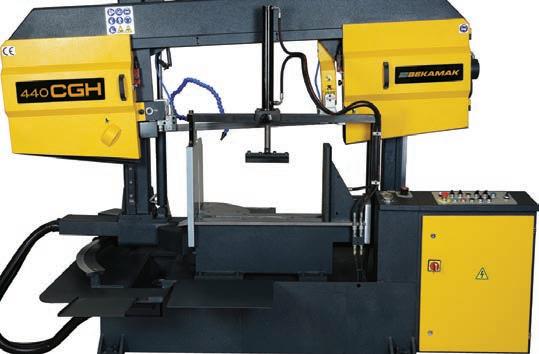






































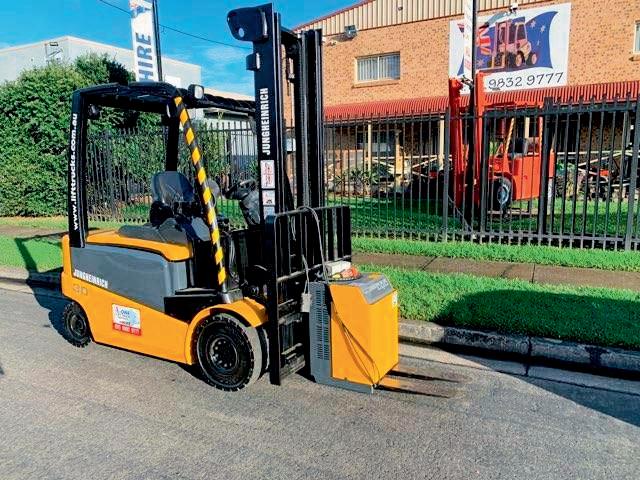




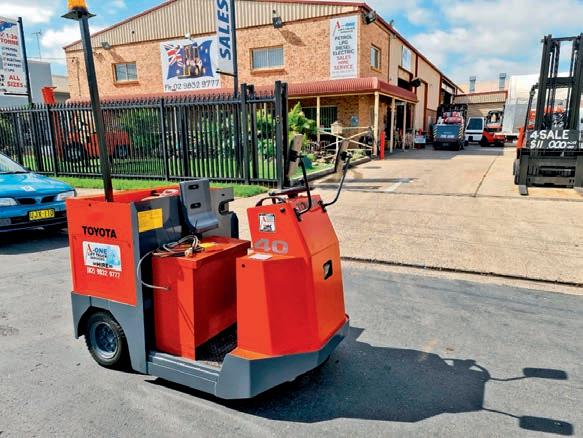





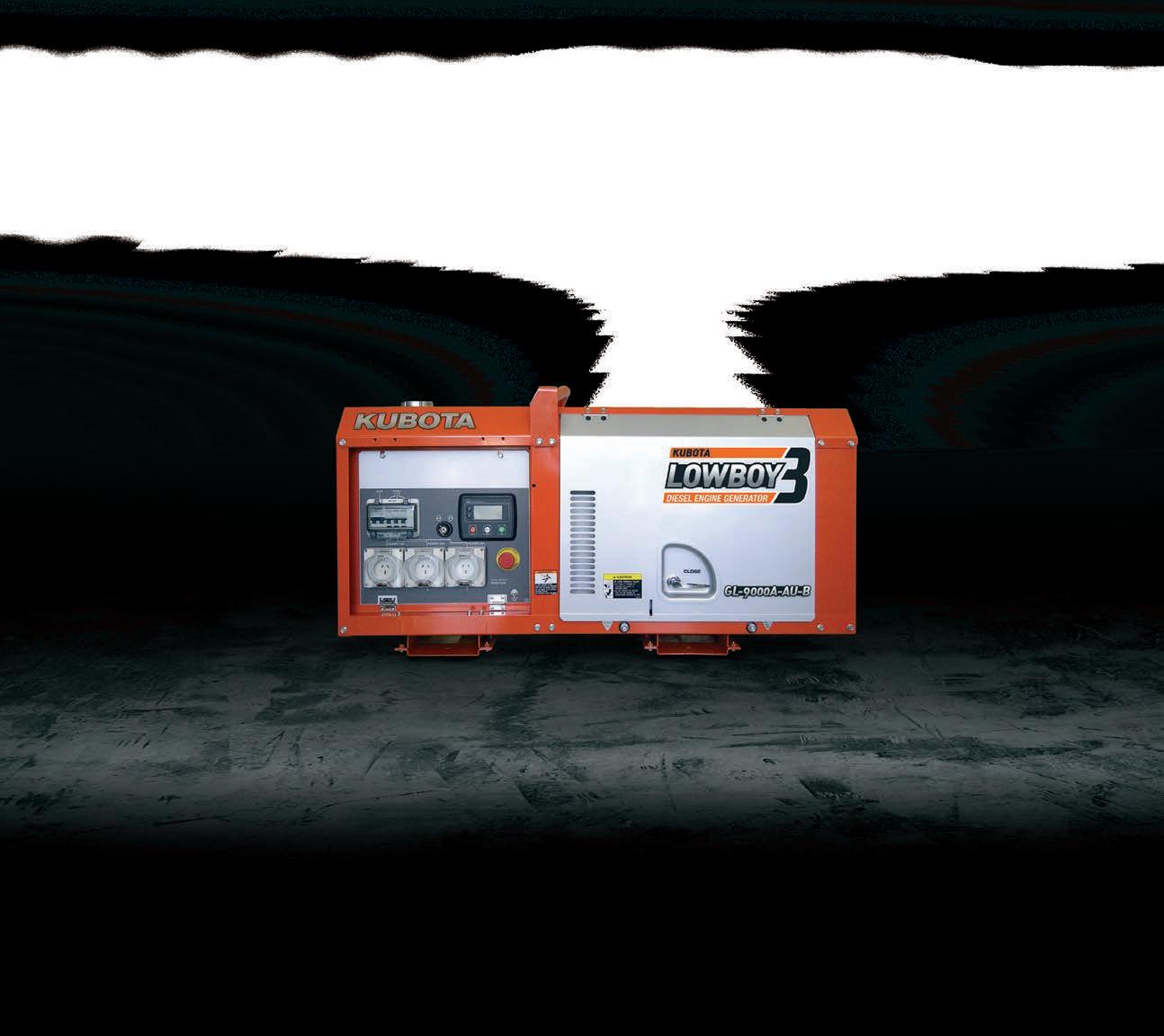









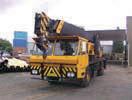
GENIEGS3268RT
SNAPPYMOBILE

HAULOTTEHA260PX
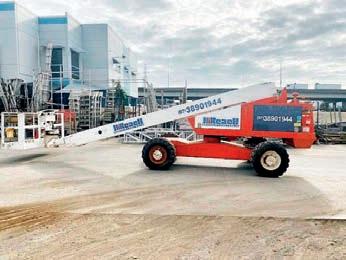


HAULOTTECOMPACT14
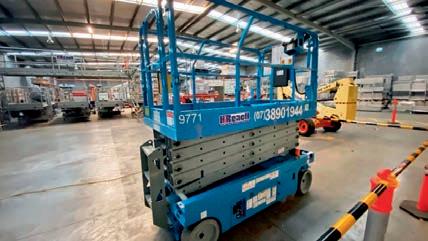
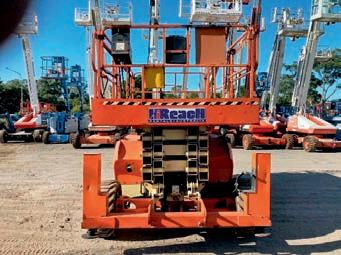







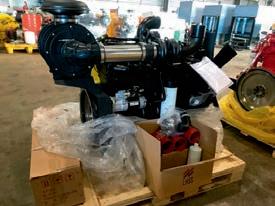



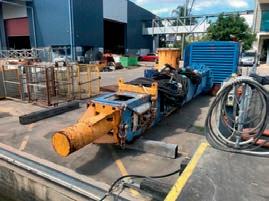



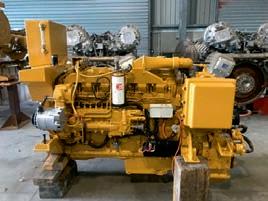









































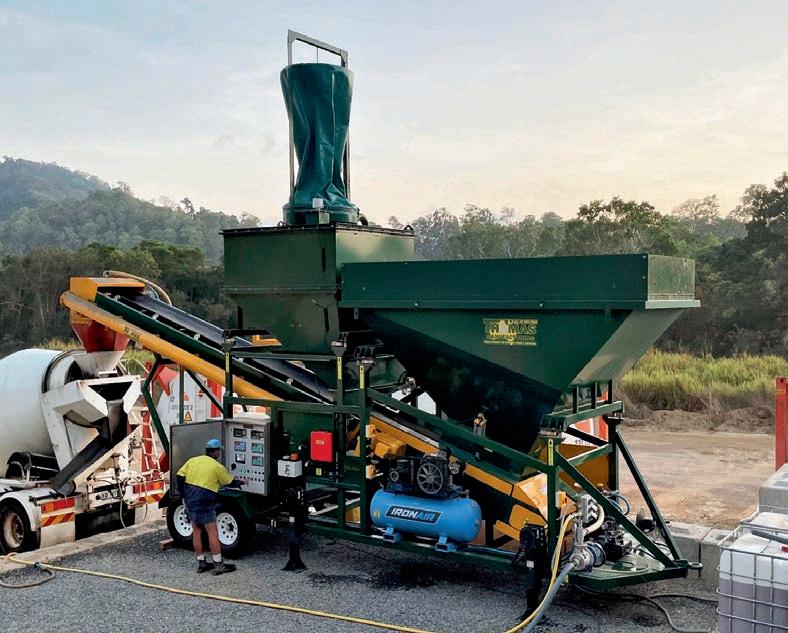


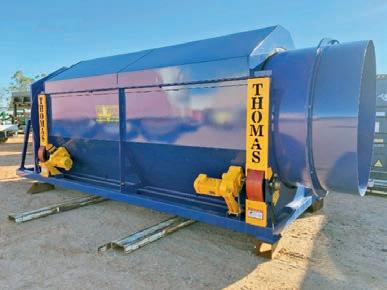

HYSTERH18.00XM-12







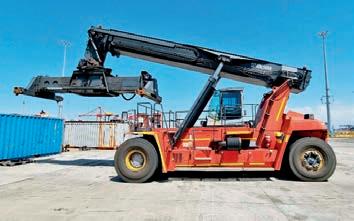



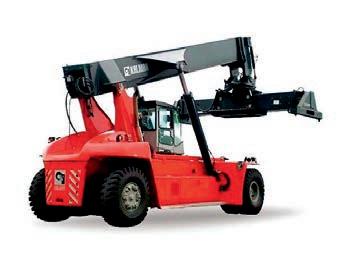
ALLIS-CHALMERS/HANOMAG/MASSEY
JOHN DEERE INDUSTRIAL
PARTS FOR Dozers, Loaders, Drotts, Graders, Scrapers

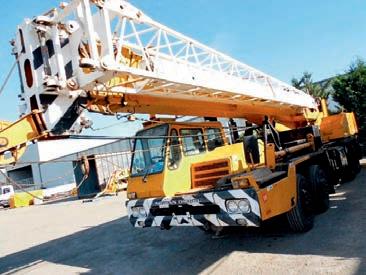

ALLIS-CHALMERS: Model “M”, HD5, HD6B,E, HD7W, HD7G, HDIIB, EP, HD15-16, HD16DC, HD16DP, HD19-21, HD41B
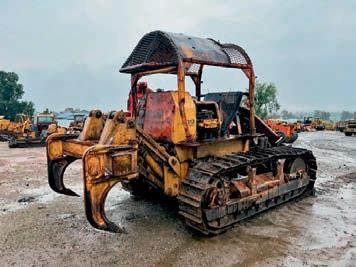
FIAT: 451C, 555, 605, 50CI, 70CI, AT7C, 8B, BD10B, FD10E, BD20
HANOMAG/MASSEY: 2244, 200, 300, 3366, 400, 500, L400C, L600C, D600D Super, D700C JOHN DEERE : 1010C, 850
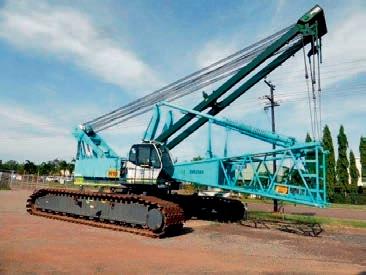
ALLIS-CHALMERS: TL12D, TL14, TL20, 545, 605B, 645, 745B,C
FIAT: FR20B LD3, LD5, LD7 & LD9 Scoopmobile HANOMAG/MASSEY 22,33C,44, 55, CL55C,66C-D, 77
ALLIS-CHALMERS: D, DD, M65, 65B, AD30-40, 45, 145, M100A, B, FG95

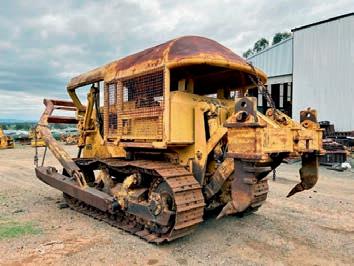
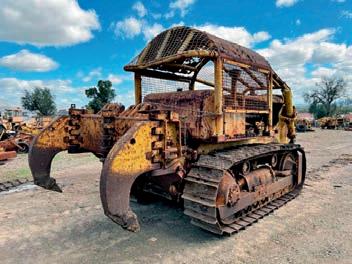
DRMCO/CHAMPION 562, 600, 720, 740 JOHN DEERE 570, 570A, 670A, 770, 770A, 772A
WHEEL TRACTORS








AAA


Carroll Motor Group Pty Ltd (QLD) 55
Castrol Australia Ltd (NSW) 13
CTR Used Trucks (VIC) 30
Echuca Moama Trucking Wrecking (NSW) 176
North Side Trailers - SA (SA) 59
NQ Truck Wreckers (QLD) 185
Penske Australia Pty Ltd (QLD) 10, 21
Private Advertising Coupon 266
Purga Truck and Machinery Sales Pty Ltd (QLD) 35
All Diesels (QLD) 190
Allfreight Finance Brokers Pty Ltd (VIC) 6
Anda Trailers and Equipment (VIC) 65
Andersen Gearbox and Diff (QLD) 25
Ballarat Isuzu (VIC).........................................................................................33
Barnsey’s Trailer and Truck Sales (QLD) 44
Camilleri Tarps (VIC) 168
Canfred Engineering Pty Ltd (VIC) 168


EPJ Trading Company (VIC) 61
Freightmore Transport (SA) 22
Geelong Isuzu (VIC) 32
Gerard Elliott (VIC) 179
Gibbs Truck & Trailer Parts (QLD) 68
HRS Trailers (NSW) 84
Hume Highway Truck Sales (Aust) (VIC) 26
Just Jap Truck Spares (QLD) 188
Lionel Moore Trailers (QLD) 74
Loughlin Transport Equipment (QLD) 45
McGhie Truck & Machinery (VIC) 267
Modern Transport Engineers Australia Pty Ltd (QLD) 268
Richlands Equipment Sales (QLD) 91
Sammut Agricultural Machinery Pty Ltd (NSW) 57
SelecTrucks of Melbourne (VIC) 40
Trucktool (VIC) 187
Universal Truck Wreckers (VIC) 170
Volwreck (VIC) 180
W & P Truck Sales (VIC) 53
WACME Pty Ltd (VIC) 44
WTP (NSW) 42, 186
Zed Wrecking (VIC) 182
City
Mount Gambier Isuzu & Iveco (SA) 34
MTP QLD Pty Ltd (QLD)...............................................................................36
Natroad (ACT) 87





